- National Turists
- Our Campings
- Our Mountain Hostels
- Torres del Paine

W Classic Circuit
Welcome to the most famous trekking in torres del paine, accommodation options.
- Mountain Hostel
- Mix Hotel Las Torres / Mountain Hostel
Portada » Circuitos de Trekking » W Classic Circuit
One of the best hikes in the world
The W Circuit will make you to fall in love with Chile’s Patagonia. The pictures speak for themselves but could never do justice to the sights, feelings, excitement and pure awe that you will experience while hiking the W Circuit. Hiking through unbelievably big mountains, deep valleys, and dense, mysterious forests will leave you grateful for life and the exact moment you’re living.
The W Circuit is the most popular hike in Torres del Paine National Park for a reason – it’s stocked with all the highlights including Las Torres Base Viewpoint, Los Cuernos Mountains, Francés Valley, Paine Grande and Grey Glacier .
You can choose your adventure style, from camping immersed in nature to full room and board in shared mountain hostels or private hotel rooms. While still remaining a physically and mentally demanding experience, the W Circuit offers luxuries like comfy beds, hot showers, warm, hearty meals, and stock-up points along the way.
The W Circuit gets its name from the way it starts at one end of the Park, winds up and back down two spectacular mountain valleys, and then comes to a close at the other end, forming a W from a bird’s eye view.
The 5 day/4 night W Circuit option gives you the first day to relax and thoroughly explore the numerous sights of the Las Torres sector.
What will you see?
Amongst the most famous mountains in the world, these three towering, granite peaks soar in the blue sky at 2850m / 9350ft, 2800m / 9200ft, and 2600m / 8500ft. Molded by pure glacial force, these are the breath-taking towers that give the Park its name.
Los Cuernos
These three mountains put up a fight with the Las Torres Mountains over prettiest in the Park. Standing at 2600m / 8500ft, 2400m / 7900ft and 2200m / 7200ft, the different types of rocks that make up this massif create a stark, beautiful, and multi-colored contrast. A 700m / 3000ft wide slab of granite crosses the middle of these uniquely shaped mountains.
Francés Valley
This lookout in the middle of the W Circuit boasts unmatchable views. To the west, you can gaze at the Cuernos, Espada, Hoja and Máscara mountains. To the east, the Francés Glacier overhangs Mount Paine Grande. To the north, the jagged Fortaleza and Aleta de Tiburón (shark’s fin) peaks stand out against the sky. As if that wasn’t enough, the valley is immersed in a Nothofagus forest filled with many species of trees and vegetation that produce a variety of flowers and change colors during autumn.
Paine Grande
Made up of four summits, Paine Grande is recognized as one of the most beautiful mountains in the world. The highest peak towers at 3050m / 10000ft, making it the tallest mountain in the Macizo Paine Range and also the technically hardest mountain to climb in the entire Torres del Paine National Park.
Glaciar Grey
This is the largest glacier in Torres del Paine National Park, measuring 6km / 4mi wide, 30m / 100ft tall and 19km / 12mi long. Its floating icebergs and glacial moraines are just as picturesque as the glacier itself, which tumbles down from the massive Southern Ice Field. To see this gorgeous ice formation up close, you can take a boat ride, a kayak tour or an ice-hiking excurision.
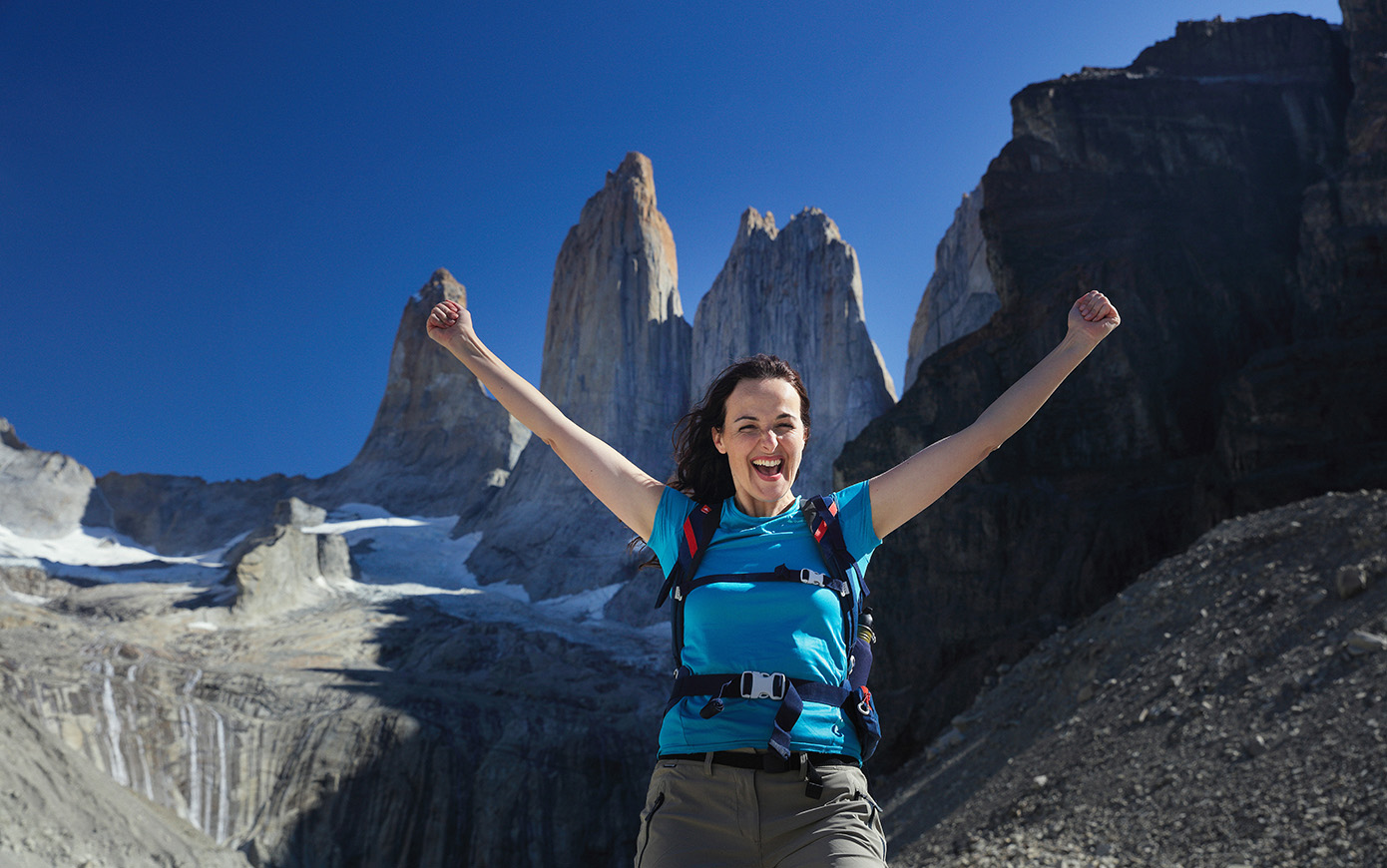
How is the Circuit?
5 days/ 4 nights. The most popular circuit in Torres del Paine will surprise you with the Torres Base Viewpoint, Los Cuernos, Valle del Francés, Paine Grande and the Gray Glacier. Options: independent self-guided, group self-guided or private guide.
What does it include?
- Premium Camping - Fully Equipped
- RESERVATION AND CANCELLATION POLICY
- 2024 - 2025 RATES
Premium Camping - Fully Equipped Experience
Day 1: Transportation from Puerto Natales to Torres del Paine, lodging at Central Sector. Day 2: Hike to Las Torres Base, lodging at Central Sector. Day 3: Hiking to Francés Sector (o Cuernos), lodging Francés Sector (o Cuernos). Day 4: Hike to the Francés Valley, lodging at Paine Grande Sector. Day 5: Hike to Grey Glaciar Lookout Point, then cross Pehoe Lake in catamaran and take transport back to Puerto Natales.
Based on double occupancy – 2 people, 1 tent:
- USD $ 1,180 p/p
Single Suplement:
- The published rates and dates are valid from October 2023 until April 2024.
- If you would like this option with a group, please book through the form at the bottom of this page.
- During Christmas Eve and New Years Eve an extra of USD $40 is charged per dinner.
- Food service is limited in capacity
- If you wish to book this program with a private guide, complete the form at the bottom of this page.
- Lake Pehoé catamaran may be subject to changes, which could include modifications in the itinerary, in that case we will help you find the best alternative
- 1 5 day Epic Trekking Circuit
- 2 4 nights in Fully Equipped Camping (Tent, sleeping bag, and sleeping mat)
- 3 All Meals
- 4 Transport to and from Puerto Natales to Torres del Paine National Park
- 5 Catamaran from Paine Grande
- 6 Park Entrance Fee
- 7 A hike of a lifetime
Mountain Hostel Experience
Day 1: Transportation from Puerto Natales to Torres del Paine, lodging at Central Sector. Day 2: Hike to Las Torres Base, lodging at Central Sector. Day 3: Hiking to Francés Sector (o Cuernos), lodging Francés Sector (o Cuernos). Day 4: Hike to the Francés Valley, lodging at Paine Grande Sector. Day 5: Hike to Grey Glaciar Lookout Point, then cross the Pehoe Lake in catamaran and take transport back to Puerto Natales.
Prices are per person based on 6 people per shared room:
- USD $ 1,490 p/p
- The published rates and dates are valid from October 2023 until april 2024.
- 2 4 nights in Mountain Hostel
- Prices valid until April 2024.
- Prices in USD are for foreign tourists only.
- If you would like to read our Reservation and Cancelation Policy please click here .
CAMPING RATES
- USD $ 1,300 p/p
MOUNTAIN HOSTEL: Prices are per person based on 6 people per shared room:
- USD $ 1,640 p/p
- The published rates and dates are valid from October 2024 until april 2025.
- During Christmas Eve and New Years Eve an extra of USD $45 is charged per dinner.
- 2 4 nights in Mountain Hostel or Camping Premium
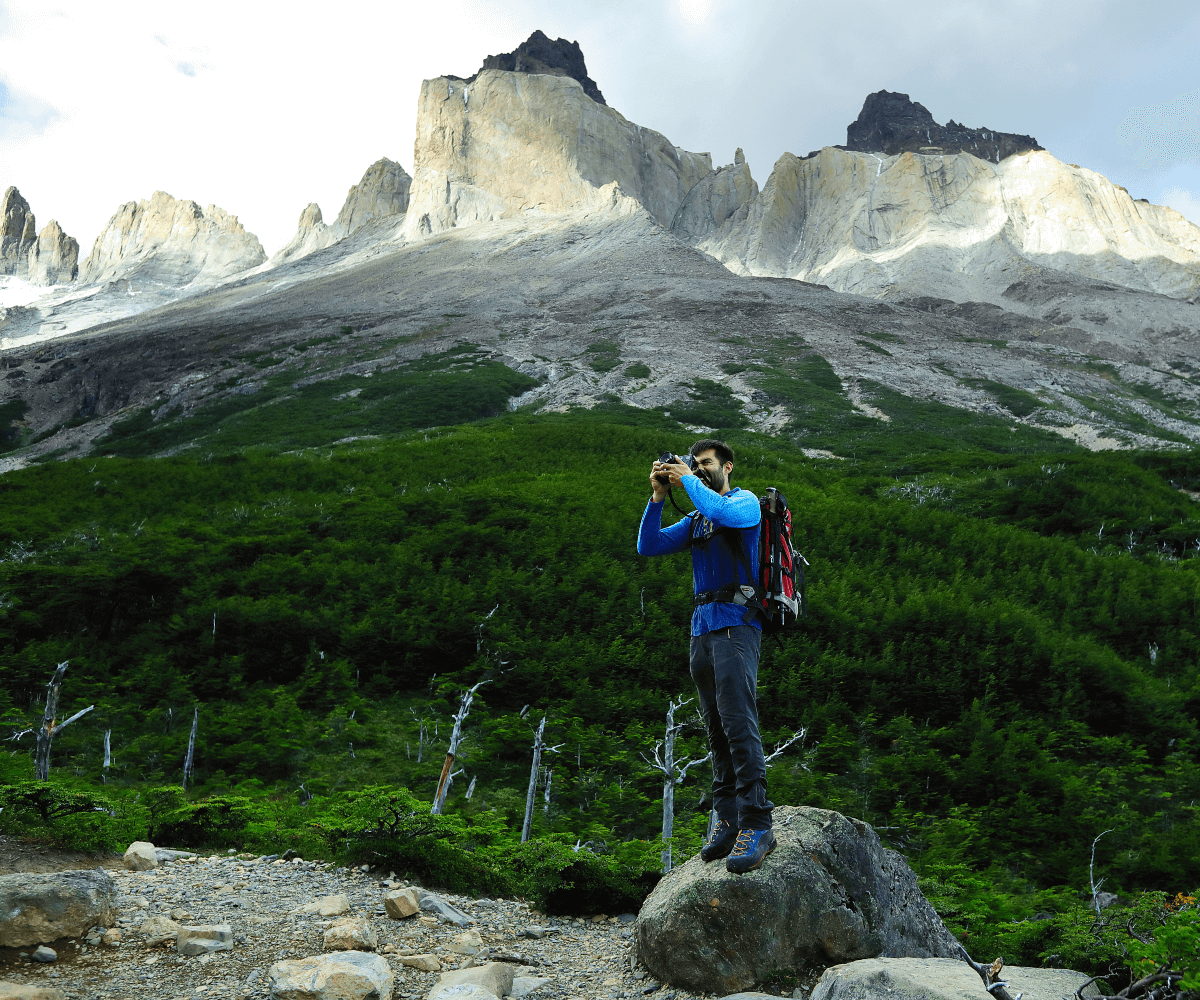
Make an inquiry or a Reservation Here
Other circuits you might be interested in, w circuit express from usd $945, o circuit from usd $1,750.
Las Torres Patagonia

Gracias por contactarte con Reserva Las Torres Patagonia

- Best Hikes In The World
- Appalachian Trail
- European Hikes
- Nepal Hikes
- Patagonia Hikes
- See All Hikes
- Mount Kenya
- Mount Kilimanjaro
- Mount Toubkal
- See All Mountains
- South Africa
- New Zealand
- Switzerland
- United Kingdom
- Packing Lists
W Trek Patagonia – Guide To The Most Popular Hike In Torres Del Paine
Chile , Hikes , Patagonia , South & Central America
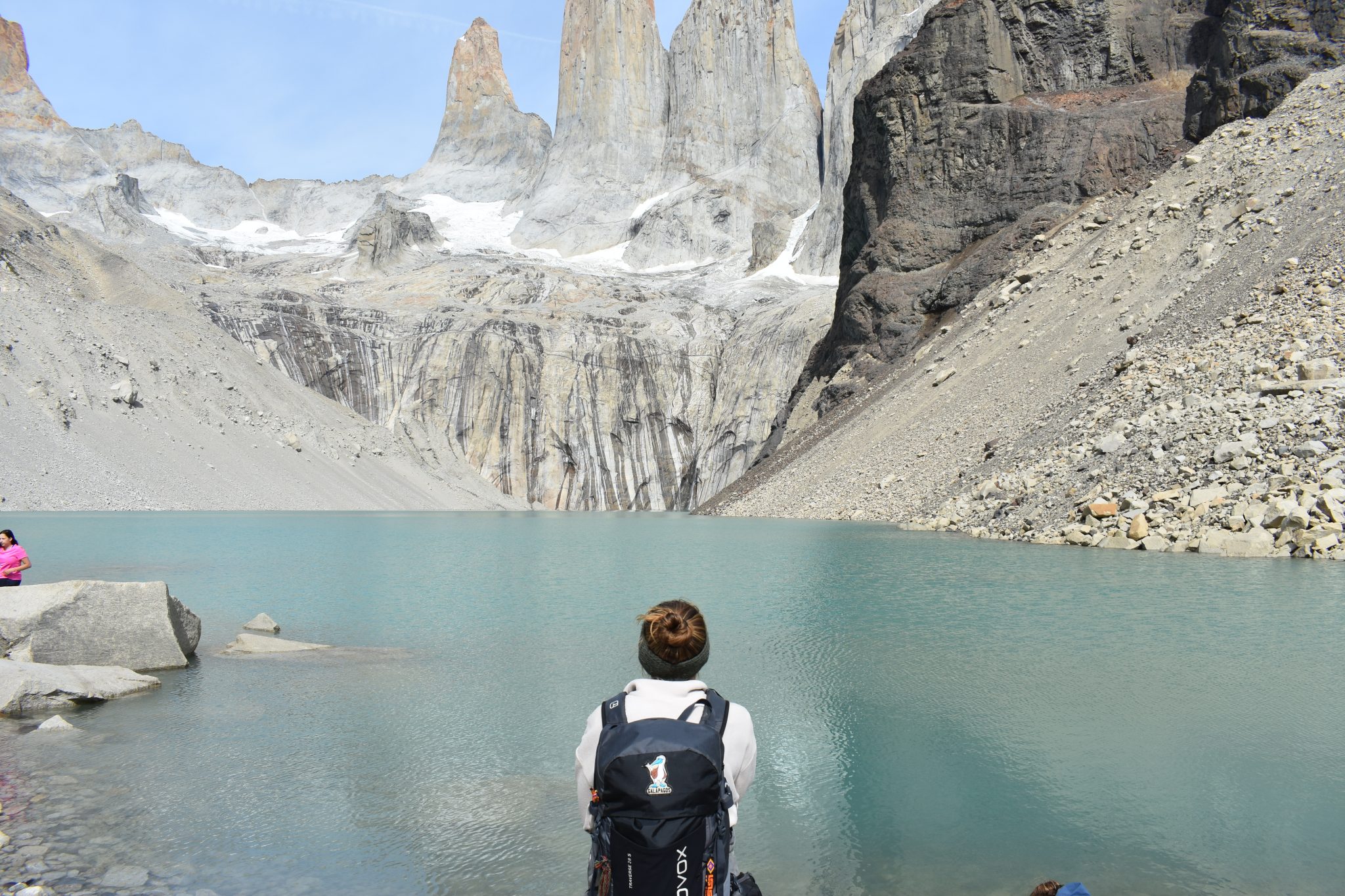
The Torres Del Paine W Trek in Patagonia is a 5-day, 100km adventure that brings you to some of the best features of Torres Del Paine. Visit Grey Glacier, the base of the Towers, the French Valley, and much more on this epic trek.
In this comprehensive guide, I'll go through everything you need to know about planning for and hiking this trail. I’ve also thrown in some up-to-date tips and links for booking campsites in Torres Del Paine.
Get ready to embark on the trail of a lifetime!
Why Hike The Patagonia W Trek?
See the highlights of torres del paine.
One of the main reasons why the W Trek in Patagonia is so popular is the stunning scenery that hikers encounter along the way. The route takes visitors past the park’s most popular features. See the granite spires of Torres del Paine, the turquoise waters of Grey Lake, and the vast glaciers that dominate the landscape.
An Accessible Trail If You Have Limited Time
Another reason why the W Trek in Patagonia is so popular is its accessibility. Unlike many other remote treks in Patagonia, the W Trek is relatively easy to reach and can be completed in a week or less. This is great if your Patagonian backpacking trip has a time limit.
Additionally, the W Trek offers several options for accommodations, from camping to refugios (mountain huts), making it accessible to a wide range of budgets and experience levels.
W Trek Patagonia- Know Before You Go
W trek in patagonia- location.
The Torres Del Paine W Trek is situated in Chile near the southern tip of South America. The park itself is located 112 km north of Puerto Natales and 312 km north of Punta Arenas.
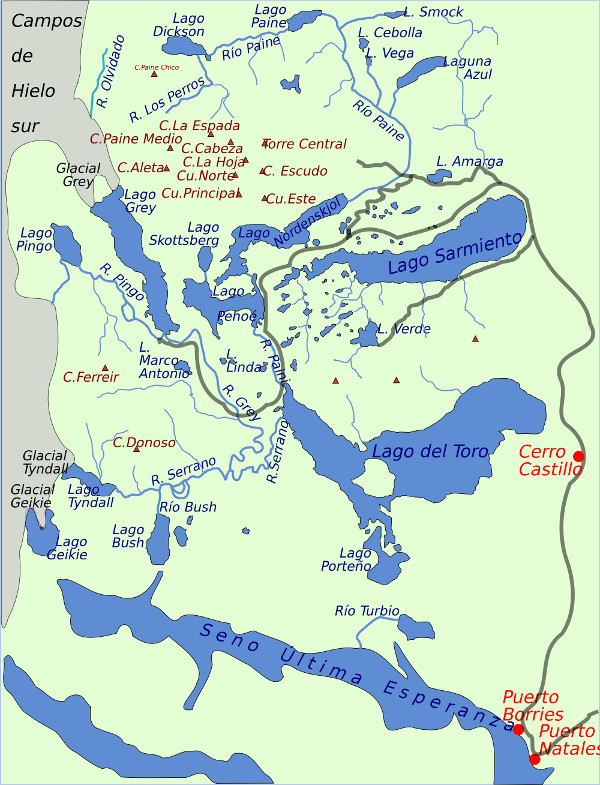
When is the best time to trek the W Hike Patagonia?
To highlight the pros and cons of each season, we have written a brief description of each below.
It’s worth also reading our articles on the best time to trek in Patagonia and, more specifically, when to hike in Torres Del Paine .
Spring - September to November
This is the perfect time of year to visit the park if you're wanting to experience warm, clear weather but without the huge crowds. Although not as warm as the summer months, the skies are often clear and you will get incredible views across the park. This is also the best season to see flowering flora in the region and witness the breeding season for wildlife.
Summer - December to March
This is the high season at Torres del Paine national park . Although the trails in Torres Del Paine are at their busiest, the weather is at its warmest. You'll get the maximum amount of clear days on your trek at this time of year. If you're the active type, then summer is also the period when you can horse ride, kayak, and mountain bike alongside your trek!
Fall - March to June
My favorite season without a doubt. The landscape becomes ablaze with color as the trails start to empty out and days become colder. The wind is often ferocious, but the spectacularly beautiful views are worth it!
Winter - June to August
Between May- September, self-guided hiking is not permitted in Torres Del Paine. Over this period, you can only hike Patagonia W Trek with a guide.
The major benefit of this season is that it is the quietest. There will be very few other visitors and you'll have many of the trails to yourself. This is the coldest period though and you will certainly experience cold nights and high, cold winds.
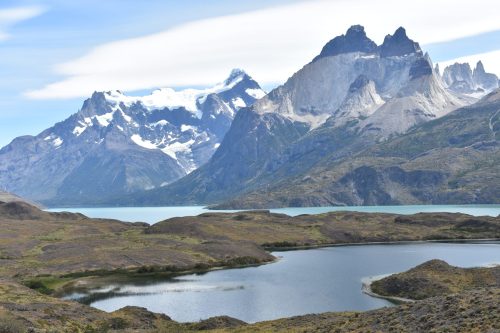
Torres Del Paine National Park
How Difficult Is Patagonia’s W Trek?
The Torres Del Paine W Trek is considered to be an easy multi-day trek as the elevation remains fairly steady throughout the hike. There is also the added benefit that the trek can be done over a longer or shorter period depending on your fitness levels.
Although regarded as easy, the trek still requires a solid level of fitness as you will be trekking a total of 100km/ 62 miles. This is 10-20km per day depending how many nights you camp out.
Hikers generally stay at the same elevation and certainly never go high enough for altitude sickness to become an issue.
The trails are well-defined and you’ll find signposts dotted along the trails at regular intervals. Water is available at all campsites, as is food. Ranger stations are dotted along the trail and you’ll most likely be among other trekkers (depending on when you trek).
Be careful though, storms are frequent in Patagonia and the wind can get extremely cold and strong. Always check weather forecasts before your day of trekking as the John Gardner Pass is often closed due to high winds.
Are Permits Required for The W Trek in Patagonia?
Yes, a permit is needed to enter the park. Permits cost $49 for more than three days. You need to book tickets online at least 24hrs before you visit.
You can print the permit or show it to officials on your phone. The park officials will need to see proof that you have booked your camping ground accommodation in advance.
Accommodation And Food On The W-Hike Patagonia
There are 11 campsites in the park which are run by three different companies. Currently, you can book campsites through Vertice Patagonia and Las Torres . Campsites cost between $10-$25 (Site only). Both companies also have the option to rent camping gear.
As well as tents, there is also options to stay in dormitories, cabins, and refugios. You can book these with the same companies mentioned above. I suggest using only one company to book your entire trek, for simplicity's sake.
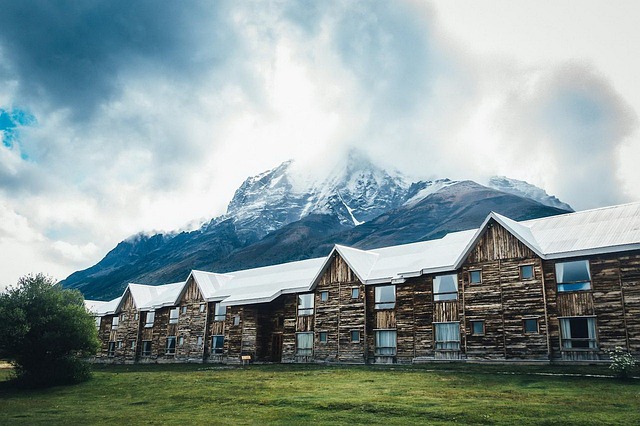
Hotel In Torres Del Paine National Park
At the camps, you will find bathrooms, shops, and even small restaurants. You may need to pre-order your meal so check beforehand.
Note: As of 2022/2023, the free CONAF campsites (El Paso and Italiano) are not available. It is unclear when and if these will re-open. It’s better to budget in paying for all your sites. If this has changed, please drop us a comment.
How Far In Advance Should You Book The W Trek, Patagonia?
Torres Del Paine treks are not something you can decide to do last minute. I’ve seen a friend break a sweat over finding campsites when she already had flights to Punta Arenas booked. This was a whole three months before her hike in November! To be safe, I’d say you should plan and book your trip at least six months in advance. Maybe even more if you plan on hiking the W Trek in the peak season (December-March)
Since 2016, the amount of people who can hike the W Trail is 80 persons per day. Visitors must reserve a place if trekking solo without an operator and you’ll need to take the trail in a counterclockwise direction.
How Do You Get To Torres Del Paine And The Start Of Patagonias W Trek?
Visitors can fly into Punta Arenas, Chile, or El Calafate, Argentina. From either of these towns. You can then take a bus to Puerto Natales.
The bus ride from Punta Arenas to Puerto Natales takes three hours and costs between $20-$30 dollars.
Buses between El Calafate and Puerto Natales are quite a bit longer (around 5 hours). Tickets cost between $30-$40.
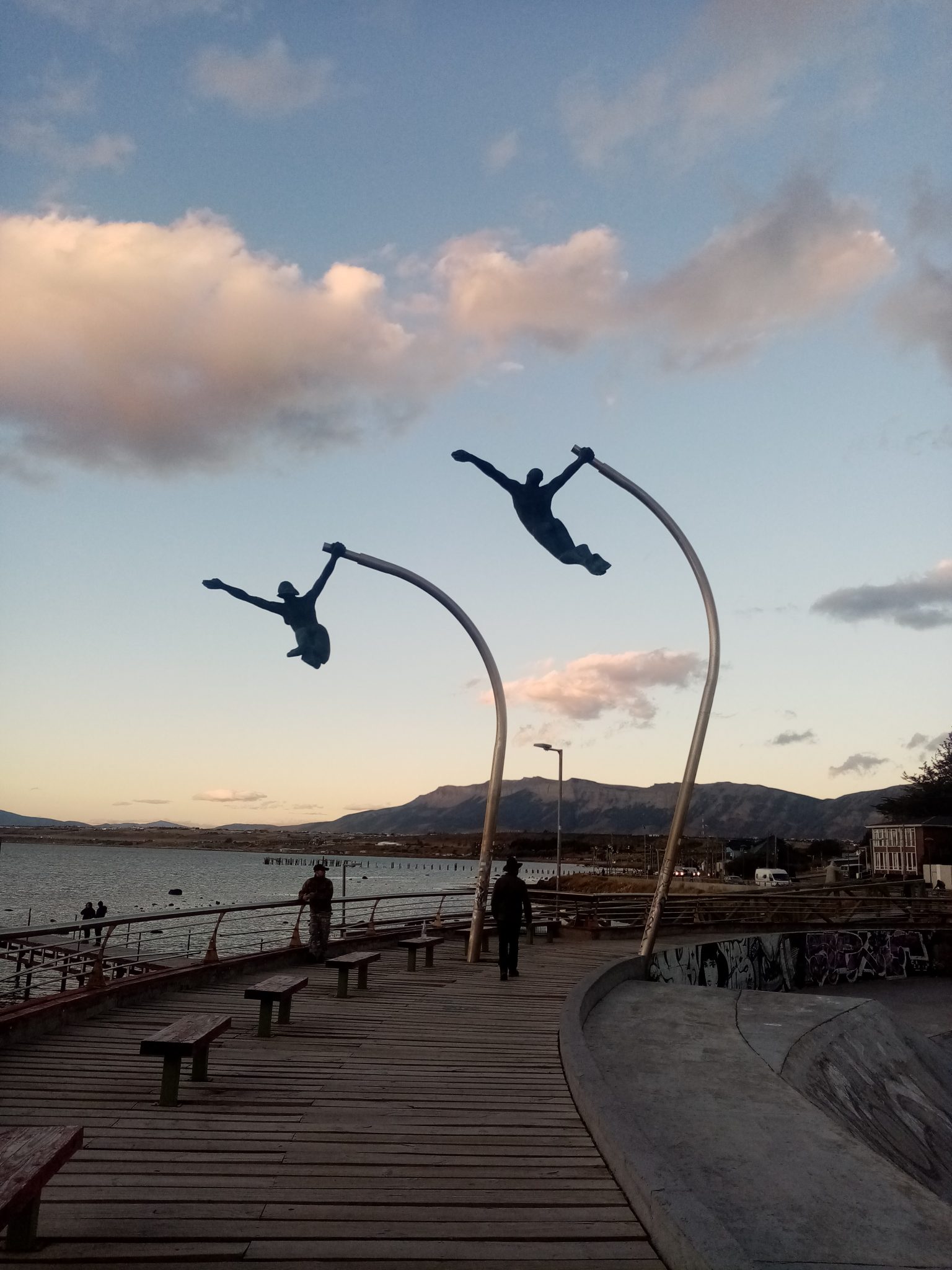
Its good to spend at least one night before the W Trek resting and exploring Puerto Natelensis
Daily buses run between the town of Puerto Natales to the entrance of Torres Del Paine. This ride will set you back $15-$15. If you have a higher budget, you could arrange a private transfer to the park and organize for the driver to pick you up after your trek.
How much does the W Trek Patagonia Cost?
The cost of a Torres Del Paine W Trek varies depending on when you book flights and when you trek (out-of-season tends to be a little cheaper). If you go with a trekking agency, local companies will be much cheaper than booking through an American or European operator. Trekking independently in Patagonia is always the most budget-friendly choice.
- Tour Agency: ~$500 for a cheap local agency to ~$2,000 for a pricey Western trekking agency
- Visa, Vaccinations, Insurance etc:~$300-$500
- Equipment (buying and hiring):~$500-$800 – camping gear can be rented at the park entrance for $200.
- Return flights to Punta Arenas: ~$1,500
- Tips: ~$10-20
- Misc (additional food, unplanned travel/hotels, etc): $50
Total costs with tour agency: $2,000 – $4,000 It is possible to plan an independent W trek for less than $300. This price includes food, park entrance, and camping (assuming you have your own equipment). Food can be purchased from refugios throughout the park, however, it is very expensive.
You may also like : Guide to Fitz Roy hikes
Hiking The W Trek Patagonia - Route Guide
The most popular trek in Patagonia , the Torres Del Paine W Trek is fast becoming one of the most well-respected short hikes in the world due to the trail's stunning scenery.
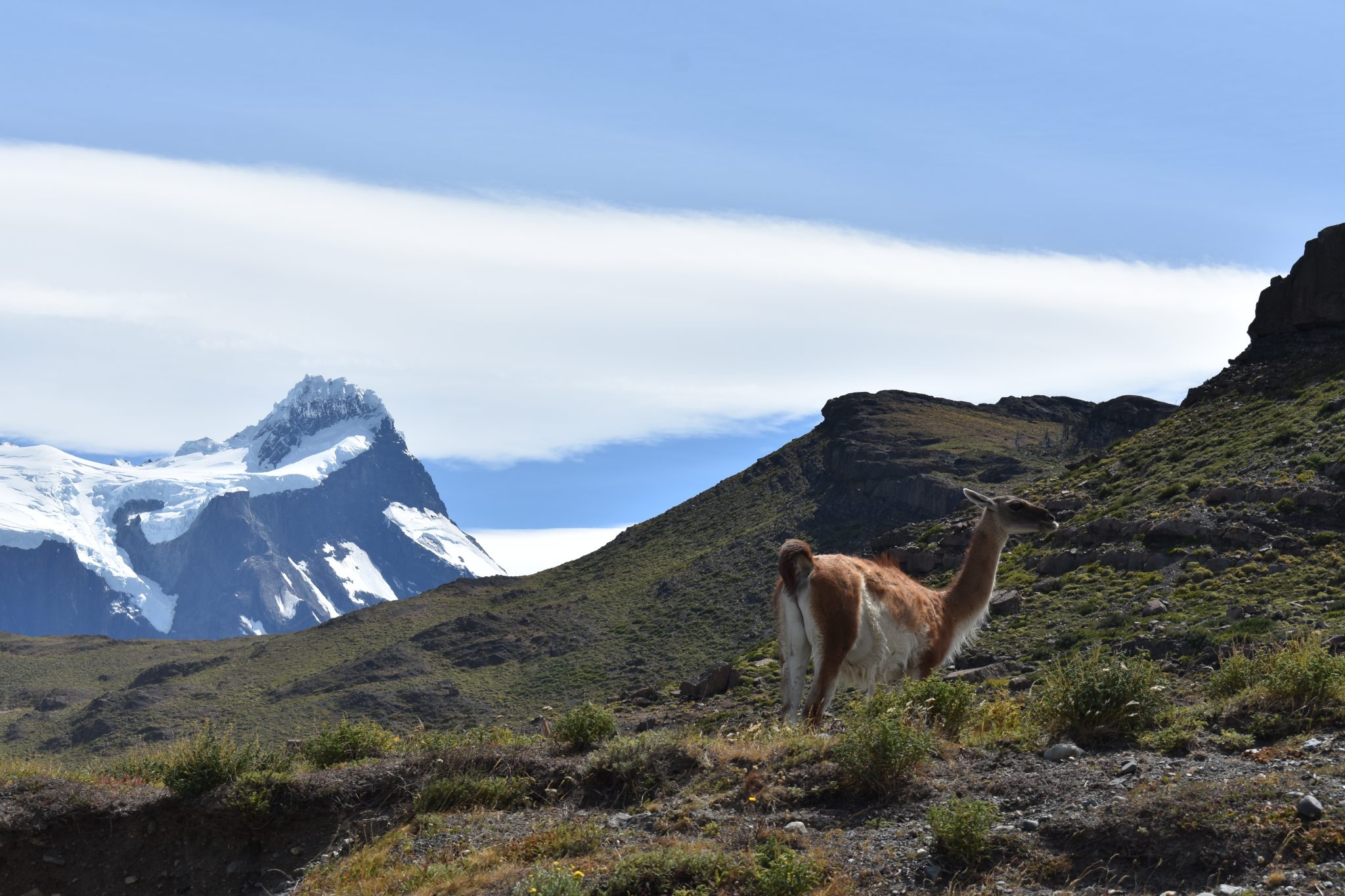
Guanaco in Torres Del Paine
Located in the amazing Torres del Paine National Park which was made a World Biosphere Reserve by UNESCO in 1978. The 100km trek generally takes around 5 days to complete. It takes visitors into the very heart of the park, through haunting forests, soaring mountains, and colossal glaciers.
Where does the W Hike Patagonia Start And End?
The trek begins with a lovely boat ride near the Grey Glacier and finishes with a magical sunrise at the famous Torres on the final morning. There is the option to do the longer full circuit O trek , however, most travelers opt for the shorter W Trek.
Patagonia W Trek - Day By Day Trail Information
Below is a standard, 5-day itinerary outline for your Torres Del Paine W Trek. This can vary depending on fitness levels, available camps, and routes. It should at least provide a good idea of what to expect. This is especially useful if you are trekking Patagonia independently .
Day 1: Puerto Natales to Refugio Grey (11km)
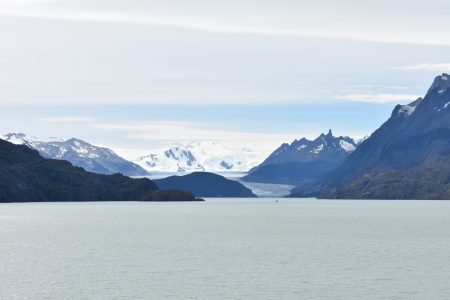
Grey Lake with Grey Glacier in the background, the start of the W Trek
Leave early from the town of Puerto Natales. Buses depart at 7:15, if you go with a tour or taxi, you will probably leave earlier.
Take your transportation Pudeto. This is the next stop after the park entrance.
If you have time, visit the local waterfall and take some pictures. You then take a lovely boat ride by catamaran to Paine Grande. After arriving you begin your trek in earnest with a 3-4 hour (uphill) hike along Lago Grey to Refugio Grey where you camp the night. If you have some energy after dinner, head down to the lake and feel the cold water!
Day 2: Grey Glacier to Paine Grande (19km)
Today you’ll be up early – around 8 am – to hike up to the former campsite of Paso. From the campsite, you take a small path to the lookout platform where you get stunning views across Grey Glacier.
After spending a little time appreciating the glacier, you have the option to continue the hike to Paso.
This is an uphill trek and will add extra mileage to your day. However, I’d recommend it as the trail is absolutely beautiful and gives incredible views all the way along the glacier.
After visiting Paso, return along the trail back down to where you camped the previous night.
After lunch, it is a 3-4 hour hike down to your next campsite at Paine Grande. If you can, find a campsite next to the hill so you’re not battered by the strong winds overnight.
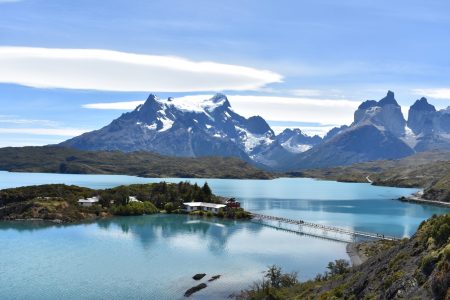
Refugio Paine Grande lies at the other side of Laguna Pehoe
Day 3: Valle del Frances to Los Cuernos (28km)
Today is a long one! Mentally prepare yourself for a full day of hiking. You begin your trek around 8am and hike for several hours until you reach camp.
At the camp, you should dump your large backpack at Campamento Italiano and head on up to Mirador Frances with your daypack. Take your lunch with you along with water and sunscreen.
The walk takes 2-3 hours and you should reach the Mirador around lunchtime.
After stopping to eat and explore the area, you’ll head back down to Campamento Italiano and retrieve your large backpack.
From there you head to your next campsite at Los Cuernos. This is roughly 2 hours walk away.
Day 4: Los Cuernos to Campamento Torres (20km)
This is the last full day of hiking on the circuit. After a leisurely breakfast, you should head off around 9 am towards Campamento Chileno.
Your trek begins on flat ground as you make your way along the Lago Nordernskjöld. After a few hours, you’ll come to a sign saying “shortcut to Chileno”.
Take the shortcut and walk for several hours until you reach the Refugio Chileno. Have lunch here before continuing on.
After lunch, you will walk uphill for an hour or so until you reach Campamento Torres. Leave your large backpacks here and head upwards for 45 minutes until you reach the Torres! Take a well-deserved break and soak in this iconic view.
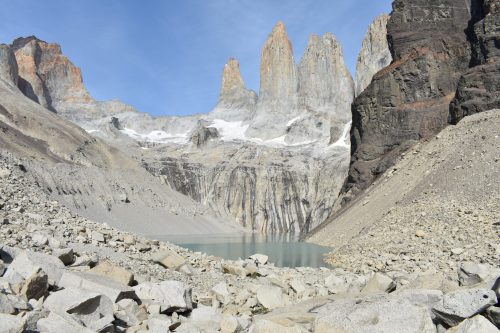
A steep climb up is rewarded with this view of the Iconic Las Torres granite spires
Back at the Refugio, make sure you hit the sack early. You’ll need to be up before sunrise the following day!
Day 5: Torres to Puerto Natales (10-15km)
Don’t sleep in on Day 5! You’ll want to rise early (around 5 am) to get the sunrise views at the mirador of the Towers. Sunrise happens around 6 am in summer and there is just a short walk to the viewing and picnic area. If you’re lucky with the weather, you’ll get an incredible view and witness one of the most beautiful sunrises on our planet! If it’s raining in camp, do not give up – the weather is frequently very different up near the viewing area and the weather can clear fast. It’s worth taking a chance. After your sunrise moment, head back down to camp and pack up all your gear. From camp, you will head down to the Hotel Las Torres. This walk takes roughly 3 hours. From the trail’s end, you can walk to the park entrance. The 7km/ 4.3 miles will take you around 1.5 - 2hrs. At this point, you will be exhausted and may prefer to take the 2 pm minibus to Laguna Amarga at the entrance. Its worth budgeting an extra $10 for this bus fee. The return bus to Puerto Natales leaves at 2:30 pm from the park entrance. Double-check bus times before you set off.
W Trek Patagonia Map
The best map I've found for the Torres Del Paine W Trek is the Torres del Paine Waterproof Trekking Map by Sergio Zagier. The map provides compressive satellite relief, contour lines, shelters, timed trails, camping, and inns.
Other W Trek FAQs
Is altitude sickness a risk on the w trek.
There is essentially zero risk of altitude sickness on the Torres Del Paine Full W Trek. The highest point reached is under 700 meters which is far too low to bring on altitude sickness. See our guide on altitude sickness .
What W Trek guidebook do you recommend?
The one guidebook that stands above all others is Trekking Torres del Paine: Chile’s Premier National Park and Argentina’s Los Glaciares National Park by Rudolf Abraham. The guidebook covers eight major trails within the park including the Full Circuit and the ‘W’ Trek. Maps, tips, and detailed information is provided for each trek and the book is a must for trekkers hiking solo.
What gear do you need for the W hike?
Trekking the W requires a certain amount of essential pieces of trekking clothing and equipment.
Many pieces of equipment including tents, sleeping bags, and mats, can be rented at the campsites. However, rental prices are high. We recommend bringing the most important pieces of gear with you.
To help you plan and prepare for your trek we have written a detailed hiking gear list .
About the author
Alison Macallister
With a degree in Nature Conservation and experience working with wildlife including the Big 5, Alison used to work as a guide for a 5-star safari reserve in South Africa. Today she is a full time traveller and editor for Mountain IQ. She has travelled and hiked extensively in South America, including many solo hikes in Patagonia, the Cusco region of Peru, Ecuador and Chile.
Leave a Reply
Your email address will not be published. Required fields are marked
We work with local guides to offer great value adventures at unbeatable prices
Lonely Plan-it: how to organize a hike on Chile’s famous W Trek in 2023

Jan 14, 2023 • 8 min read
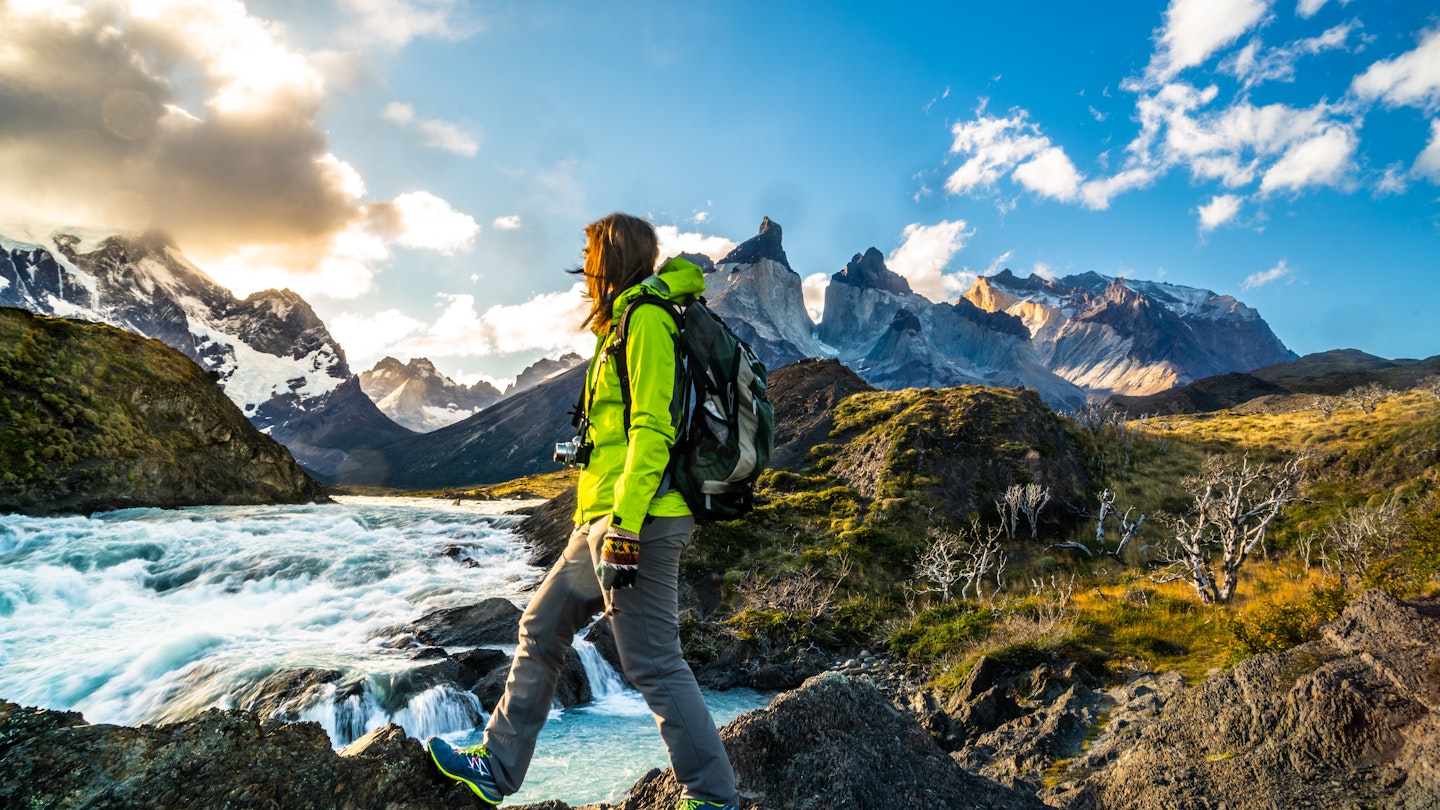
Tackling the W Trek in Chile’s Parque Nacional Torres del Paine is a challenge and a thrill © sharptoyou / Shutterstock
In this series, we take you step by step through how we planned some of the most complicated travel adventures, so you can recreate them yourself with ease. Here, writer Sarah Reid takes you through how she planned her hike on Chile’s famous W Trek.
Tracing the foothills of the snow-capped Paine Massif in southern Chile ’s famous Parque Nacional Torres del Paine , the W Trek one of the world’s most epic multi-day tramps. Named for the shape sketched by the 80km (50-mile) trail, the W Trek immerses you in some of Patagonia’s most mesmerizing scenery, with turquoise lakes, oozing glaciers, gnarled subpolar forests and wildlife spotting opportunities aplenty (you might even spot a puma).
While it’s easy to follow the well-trodden if not always well-marked trail, planning the expedition is complicated by the numerous ways to access the route and the multiple reservations required before you set out. Having recently experienced the trail in two different ways, I’ve figured out all the tricks you’ll need to plan one of the most memorable hikes of your life. Here’s what I learned.
Step 1: Time it right
Find the best mix of good weather and accommodation availability.
Hiking the W Trek hinges on the availability of the half-dozen currently operational refugios (hostels with limited dorm beds, a restaurant, hot showers and campsites) dotted along the route, which can book out months in advance during the November-to-February peak season. This is the warmest time of the year comes with the added bonus of long daylight hours – but it can also be very windy. The less-busy shoulder seasons (March to April and September to October) offer increased camping availability and more agreeable weather (potentially; this is Patagonia, after all). A guide is required for a wintertime hike (May to August, when refugios are closed). Wildlife, including pumas, can be spotted year-round.
To get to Torres del Paine, you’ll need to travel to the small, beautifully situated gateway city of Puerto Natales . You can fly here (or to nearby Punta Arenas ) from Santiago , take a four-day ferry trip from Puerto Montt or travel overland from Argentina (a 5.5-hour bus ride from El Calafate to Puerto Natales). From Puerto Natales, expect a two-hour bus ride to the eastern end of the W Trek, and a three-hour bus ride followed by a 45-minute ferry to the western end.

Step 2: Decide which direction to hike in
You can start or finish your trek with one of the hike’s most epic views.
The W Trek can be hiked from east to west or vice versa, independently or guided, and you can take as many days as you like (pending refugio availability). Hikers with a good level of fitness will find it’s an achievable four-day independent hike. Factor in an extra day to add a glacier kayaking or ice-trekking excursion departing from Refugio Grey (arrange in advance; more on this below).
The benefits of hiking east to west include frequent daily bus services from Puerto Natales (from 7am) to the trailhead. You’ll also knock off the challenging hike to Mirador las Torres , at the base of the three granite towers that give the national park its name, on the first day. Hiking in this direction also means you don’t have to worry about securing a spot on the first ferry of the day across Lago Pehoé to access the western end of the W (critical for a four-day itinerary), as ferry tickets can’t be booked in advance. The early ferry (9am) only operates from November to March.
The beauty of hiking west to east is the opportunity to spend your last night at Refugio Chileno, making it easier to catch the sunrise at Mirador Las Torres on your final day and be back in Puerto Natales by dinnertime (finishing at Paine Grande gets you back to town closer to 10pm). With Patagonia known for its strong westerlies, hiking eastward also keeps the wind at your back for most of the journey.
Step 3: Consider your booking options
Reserve your accommodation, transit and park pass in advance to simplify your life.
This is where it gets tricky. The two refugios at the trail’s western end (Paine Grande and Grey) are operated by Vertice Patagonia , which also runs glacier trekking and kayaking tours. The other four refugios (Francés, Cuernos, Chileno and Central; there’s an additional bunkhouse near Central called Torre Norte) are operated by Las Torres Patagonia . You can book preferred campsites and dorm beds (some refugios also have rooms) separately through their websites, or make reservations at camps run by both operators in a single booking via Booking Patagonia .
Meals, pre-pitched tents, sleeping bags and mats can be prebooked for additional fees, pushing the cost of a four-day hike from as little as $62 (camping costs only; wild camping is forbidden) to around $400 if you book all the extras (and it’s worth doing so if you’re not keen on carrying all your supplies, including cooking equipment). Booking bus tickets to and from Puerto Natales in advance is also recommended; Bus Sur services both ends of the trail.
An easier if more expensive option is to book an all-inclusive package. These come in all shapes and sizes, ranging from classic unguided through-hikes, to hikes along sections of the trail each day with a guide then shuttling back to an off-trail camp or lodge each night. (Note that it’s difficult to complete all legs of the W Trek as day hikes given the volume of backtracking required to the two exit points.) Local operators offering good-value unguided through-hike packages with an east-west itinerary (about $1000) include Chile Nativo and ChileTour Patagonia . Las Torres Patagonia and Vertice Patagonia also offer packages with accommodation at their own properties (a through-hike is only possible with the former). International operators including G Adventures and World Expeditions also offer through-hike packages.
You’ll also need to book a multi-day national park pass via the CONAF website ($35), which will be checked at the entrance to the park.

Step 4: Prep for the adventure
Find the perfect gear for your adventure.
With the entire trail located between 100-900m (330-2600ft) above sea level, there’s no altitude to factor in on the W Trek. But it’s the ever-changing Patagonian weather, along with the uneven, often-exposed trail, that will likely test you. Layers are key, and a waterproof jacket, rain pants and pack cover are essential year-round.
Expect to have next-to-no cellular reception throughout the journey. Wi-fi coupons are available for sale at refugios (provided the router is working) but it’s more fun to stay disconnected and mingle with fellow hikers at the bar instead; every refugio has one. Be mindful when packing that everything you carry into the national park must come out with you – the only rubbish bins at refugios are designed for toilet paper. With a limited number of power points in refugios for charging devices, packing spare batteries is a good idea.
Step 5: Nail the trail
Be adaptable to conditions to get the most out of your journey.
Days on the trail can be long on a four-day hike; set out by 8am in autumn and spring to arrive in camp well before nightfall. If you’ve booked meals, most refugios have two sittings; book the first sitting when you arrive in camp each day to ensure an early night, and early start the next morning.
On foggy days, reconsider rising early to hike to Mirador las Torres for sunrise. You might also wish to reassess the mostly uphill return hike from Mirador Francés to Mirador Británico (the middle arm of the “W”) in poor weather, though I hiked the latter in average conditions and enjoyed it, particularly as I spotted a pair of endangered huemul deer right below Mirador Británico. Consider leaving non-essentials in a dry bag at Italiano (a CONAF-run camp not currently open for overnight stays) on your way up, as you’ll pass this camp again on your way back down.
If you’re making good time between Paine Grande and Valle Francés (French Valley), consider veering off the main path to hike the lesser-tramped alternative trail around the slightly more scenic eastern side of Lago Skottsberg, which adds about 30 minutes to the trip. Turn left at the first bridge after Italiano if you’re coming from the east, and head right at the fork after the first bridge you cross if you’re coming from Paine Grande.

If I could do it all again…
I booked a last-minute four-day through-hike package on my first W Trek experience. I hiked east to west in March 2022, and camped at Central, Cuernos and Paine Grande, and this itinerary was perfect for me. I’ve since hiked sections of the trail on a guided multi-day, multi-sport tour with Chile Nativo, with superb perspectives on Torres del Paine that complemented my first experience.
If I were to do the W Trek again, I’d aim to tackle the extended version of the trail called the O Circuit, ideally in late September, as I found the weather superb and the crowds thin when I visited then. I’d cut costs by making independent bookings, and I’d book my meals again (though extra comforts are not available at all refugios on the O Circuit).
Since my feet were soaking from the second day onward, I’d also wear waterproof boots; pack fewer snacks, as the boxed lunches were sufficient; and go easier on the Carménère (Chilean red wine) at the refugio bars. Did I mention you can order pisco sours, too?
Explore related stories

Jan 8, 2024 • 11 min read
From Andean treks to whale watching off Patagonia, here are the top things to do in Argentina.

Feb 8, 2023 • 4 min read
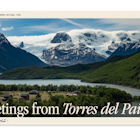
Feb 7, 2023 • 5 min read
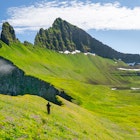
Dec 6, 2022 • 10 min read

Oct 5, 2022 • 6 min read
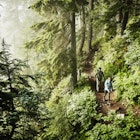
Jul 29, 2022 • 15 min read

Jan 25, 2022 • 8 min read

Jan 7, 2022 • 9 min read
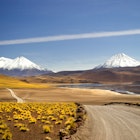
Jan 5, 2022 • 6 min read

Dec 13, 2021 • 11 min read

The Ultimate Guide to Hiking the ‘W’ Trek in Torres del Paine Without A Tour
By Author Steph Dyson
Posted on Last updated: 12th December 2023
Hiking the W in Chilean Patagonia’s Torres del Paine National Park is one of the absolute highlights of a visit to Patagonia – I should know, I’ve done it twice!
Back in March 2016, I walked the Torres del Paine W trek as part of a tour around Patagonia and was so struck by the park that I returned in March 2017 to hike the Full O Circuit .
In September 2022, I returned on a third occasion, this time to explore the other attractions of Torres del Paine National Park beyond these two, multi-day hikes.
It’s fair to say that on all occasions I have fallen head over heels in love with this part of Chilean Patagonia.
The problem is, the first time I hiked the W trek in Patagonia, I did so as part of a guided tour. We were dropped off at the Pudeto ferry port on Lake Pehoé and from that point onwards barely even had to think for ourselves.
We hiked the W during the day led along the one path by our guides and arrived at night to pre-pitched tents and pre-paid food.
However, it didn’t take more than five minutes of being in the park to realize that a tour was utterly unnecessary and that trekking in Torres del Paine solo and self-guided is easy and will also save you a whole stash of money.
Click to navigate this article:
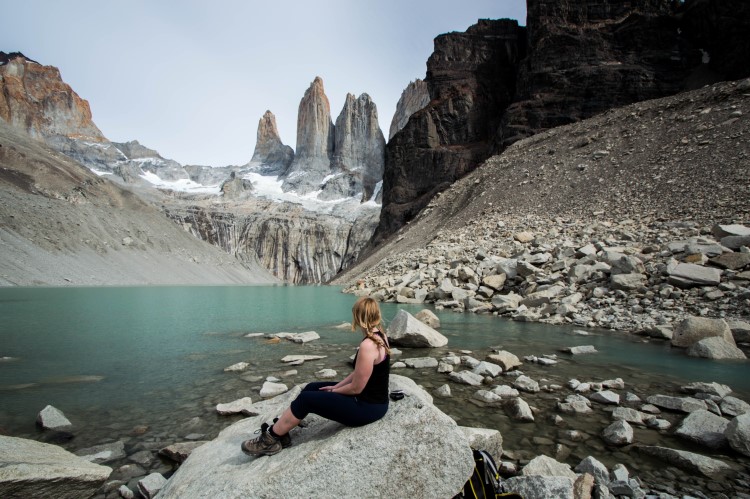
Know-before-you-go facts about the Torres del Paine W Trek
- How long is the W trek in Torres del Paine? It’s an 80-kilometer (50-mile) hike that most do over four or five days.
- When can you hike the W trek? The park is open year-round, however, for self-guided trekking, you can only hike between October and the end of April. If you want to hike during the winter months (May through September), you’ll need to arrange a guide. Our local partner, Chile Nativo, lead winter tours of the W trek and offer a 5% discount to Worldly Adventurer readers (use “Worldly Adventurer” in the referral discount box when you book!).
- Do you need to reserve camping spots/dormitory accommodation in advance of hiking the W? Yes, you must have reservations at each of the campgrounds or dormitories in which you plan to stay during the hike. You might be required to show your reservations when you enter the park, too.
- What about food? You can reserve full board at the campgrounds, which will include an evening meal, breakfast the day after your stay, and a packed lunch for you to take to the next campground. This typically needs to be booked in advance, although if you get to the campground early enough, you can sometimes do it on the day. Some campgrounds offer buffet dining (Grey and Paine Grande), so can be a good place to stock up on some snacks for the following day.
- Are reservations open for the campgrounds and dormitories along the W trek for the 2023/2024 season? Yes, reservations opened in July.
- How fit do you need to be to hike the W trek? While previous backpacking experience is not necessary, you do need a reasonable level of fitness to be able to climb up into the Frances Valley and up to the towers themselves. It’s helpful to have done a couple of practice walks, with a backpack weighing around 10 kilograms (22 pounds), in preparation for the trail.
- Do you need to book your park entrance ticket in advance? You must book online as they are no longer accept payments at the park entrance. Book your ticket online here . You need to download the QR code in Puerto Natales while you have internet (there is no signal in the park) and may need to show a copy of your passport to prove you do not live in Chile.
- How much does it cost to enter Torres del Paine National Park? The cost of entering the park varies according to how long you plan on staying. For up to three days in the national park, it costs $31,200 CLP ($34 USD) for adults and $16,000 CLP ($17 USD) for children aged 12 to 17. For over three days in the park, the cost is $44,500 CLP ($48 USD) for both adults and children.
- What is the altitude of Torres del Paine National Park? The highest point in the park is the John Gardner Pass at an altitude of 1,200 meters (3,900 feet) above sea level. However, only those trekking the O Circuit are required to reach this height; all of the W trek is at altitudes below this.
Firstly though, what actually is the W? The W is a four- or five-day hike in Chilean Patagonia’s Torres del Paine National Park. It’s named the W because it follows a W-shaped route and can be hiked either from west to east (my preferred route) or from east to west.
Along the way, you stay overnight in official campgrounds, which also have indoor dormitories, covered cooking areas for campers, and restaurants where you can eat pre-ordered meals.
Is the W worth it, though? It’s one of Patagonia’s easiest multi-day hikes and, while hiking for five days might not be at the top of everyone’s to-do list, the scenery in Torres del Paine National Park makes up for the hard work! Every day has spellbinding views: whether of Grey Glacier on day one, the French Valley on day two or three, or the eponymous towers on the final day of the hike.
You’ll finish tired but truly fulfilled by the experience – and proud of yourself for having completed it! Bear in mind that the W trek is a moderately challenging hike. If you’re able to walk up to 18 kilometers (11 miles) per day (and feel like you would be able to do that over multiple days), then you will find this hike perfectly doable.
That said, the hike up to the towers on the final day of the W (or the first, if you’re hiking east to west), is classed as a difficult hike due to the elevation gain of 900 meters (2,956 ft).
Bear in mind that you will be trekking with a backpack; the contents will depend on whether you’re carrying your tent and meals or planning on renting camping equipment and paying for meals at the campgrounds en route. Before hiking up the French Valley and up to the towers, you can also leave your backpacks at the rangers’ station or campsite, which means you won’t have to carry them up much elevation.
I highly recommend that, before heading to Patagonia, you go on a couple of hikes of around 18 kilometers (11 miles) with a backpack that will mimic the weight you’ll be carrying in the park – this will also help you to break in any hiking boots you might have bought for the trek and find out if they give you blisters!
How much does it cost to hike the W?
I’ve hiked the W twice: once as part of a tour and another time independently as part of hiking the O Circuit (which is a nine- or ten-day hike circumnavigating the national park and whose final five days are the W).
On my second visit to the national park, it became clear that I really didn’t need to hike the trails using a tour company. Not only is it expensive (it costs from $1,500 USD per person), but it’s unnecessary; all of the trails are clearly marked and busy with people and it’s easy enough to make camping reservations yourself.
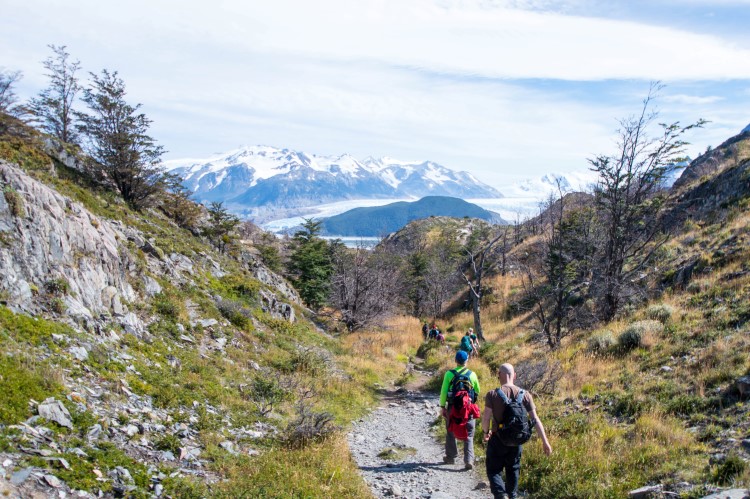
Hiking the W independently costs $157,000 CLP per person ($173 USD – check here for the most up-to-date conversion), plus the cost of food .
Camping and Transport cost breakdown*
- Return bus from Puerto Natales to Torres del Paine National Park: $13.323 CLP ($15 USD)
- Adult entrance fee into the park: $44,000 CLP ($49 USD)
- One-way ferry from Pudeto de Paine Grande Ranger Station: $30,000 CLP ($40 USD)
- Grey Campsite: $11,000 CLP (per person) ($12 USD)
- Paine Grande Campsite: $11,000 CLP (per person) ($12 USD)
- Francés Campsite: $31,000 CLP (per person) ($35 USD)**
- El Chileno Campsite: $31,000 CLP (per person) ($35 USD)***
* these figures are all updated for the 2023/2024 season.
**based on two people sharing a tent
***Torres Ranger Station (the free camping closest to the towers) is closed for the foreseeable future.
Food breakdown
- When we hiked the Full Circuit, we paid $68,620 CLP ($95 USD) between four people for all of our food. That’s $17,155 CLP ($20,5 USD) per person. No kidding.
- So for your food budget, expect to spend no more than $10,000 CLP ($12 USD) (read this full outline of exactly what we took with us in terms of food when we walked the Circuit)
If you want to save time, the website Torres Hike can show you the availability of accommodation and allows you to book it directly through them , rather than having to go via the Vertice Patagonia and Las Torres (previously known as Fantastico Sur) websites. All you need to do is plug in your dates and it’ll show you which campgrounds and refugios are available – saving you LOTS of time. You can then book directly with them, rather than having to try and book through the other websites!
How do you make campsite and refugio bookings for Torres del Paine?
The system for making refugio and camping reservations has changed dramatically over the past couple of years and a lot of the information you find online about the subject is out of date.
I also put together this epic, 5,000-word post about securing camping reservations in Torres del Paine that literally walks you through the process. However, I highly recommend just using Torres Hike . Yes, they charge you a small fee, but it honestly saves you so much time.
The reason it’s so challenging to make reservations independently is because there are two different companies who offer campgrounds and dorms in the park and you will have to reserve some campgrounds with one on their website and some with another on their website; trust me, it’s a painful process. Save yourself the stress and hassle of doing this by using Torres Hike instead.
Reservations are now open for the 2023/2024 season. If you’re struggling to find spots for the coming season, you should also read my article about alternative ways to hike the W if you can’t get camping reservations .
You can also check out this ultimate guide to Torres del Paine National Park , covering everything from the best time to visit, to where to stay and what to do beyond the W trek.
If you’re completely baffled by the process and just want someone else to deal with it, you can book with my partner in the region, Chile Nativo , who organise, guided, self-guided and fast-track (three-day) W treks. They give a 5% discount to Worldly Adventurer readers (use “Worldly Adventurer” in the referral discount box when you book!).
What equipment do you need to hike the W without a tour?
To pay as little as possible trekking Torres del Paine solo, it does require that you have the following pieces of equipment:
- A tent: I strongly recommend the lightweight Big Agnes Copper Spur HV UL2 tent ( REI | Backcountry | Amazon ), the North Face Stormbreak 2 (buy it on REI | Amazon ), or, for more room, the North Face Stormbreak 3 (buy it on ( REI ).
- A sleeping bag: I recommend the Nemo Disco 15 for women (buy it on REI ) and for men (buy it on REI ).
- A sleeping pad: Get a cheap foam pad ( REI | Backcountry | Amazon ) or a more comfortable Therm-a-rest Prolite (buy it on REI | Backcountry | Amazon ).
- A headlamp : Useful for midnight toilet visits and the hike up to the towers (buy one on REI | Black Diamond | Backcountry ).
- A cooking stove and gas: The affordable MSR PocketRocket 2 (buy it on REI | Backcountry | Amazon ) is great value for those on more of a budget, and is super lightweight.
- Cooking pots: I recommend the MSR pots set (buy them on Backcountry | Amazon ) as they’re good quality and food will stick less, which will make them easier to clean.
- Plates, a mug, and cutlery : A collapsible bowl is a great space saver (check out Sea to Summit on REI | Backcountry | Amazon ); I recommend a reasonably cheap, plastic mug (buy it on REI | Backcountry | Amazon ) and for cutlery, a multipurpose spork is a good choice (check them out on REI | Backcountry | Amazon ).
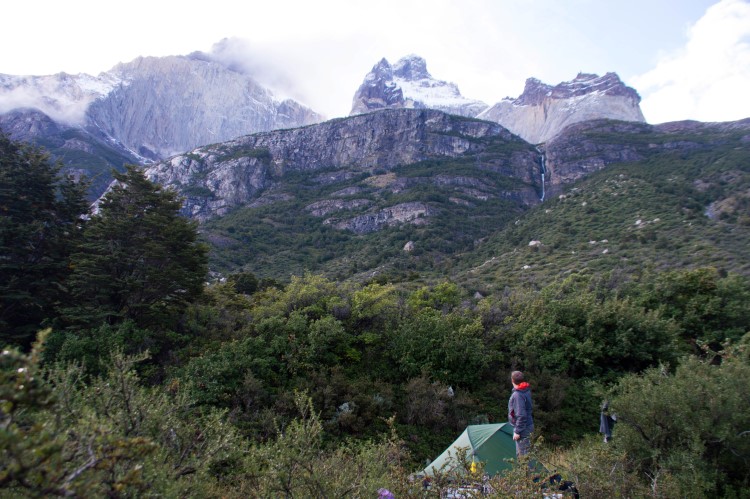
I’ve detailed exactly the items that I packed for the O Circuit in Torres del Paine (and which are still relevant to the W trek) and also what I pack in my rucksack on a trip to Patagonia in this packing checklist . Both have a free packing checklist download, too.
I recommend you take a look if you’re thinking of investing in camping equipment before you head over to Patagonia (something I would strongly advise if you plan on doing any other hikes or wild camping or if you’re looking at exploring the Carretera Austral ).
Planning Your Trip to Patagonia?
Save time, stress & money with a customized travel itinerary planned for you by a Patagonia expert
What previous clients have said:
Steph’s help laying out an itinerary for Chile was huge toward us having a great trip. She listened to our interests and compiled a framework that we could follow to make our plans. She included many practical tips as well as numerous options. She truly saved us many, many hours of research.
If you’re already traveling around Patagonia, what can you do to get your hands on this camping equipment for Torres del Paine?
You have three options:
Buy equipment in Punta Arenas or Puerto Natales
There is a wide range of hiking and camping equipment shops in these two towns. Punta Arenas is a tax-free zone so prices here are cheaper than you will find in Puerto Natales, although Calle Manuel Bulnes in the latter has some gear shops.
I actually found a pair of waterproof trousers for only $15,000 CLP ($18 USD) in one of the shops there, which is a lot cheaper than I thought they would be.
If you’re looking to buy equipment for camping and hiking in Torres del Paine National Park, you should be able to find everything that you need in these shops, but you will pay an elevated price for good-quality gear.
Estimated additional cost: $360,000 CLP+ ($400 USD+) per person
Rent equipment from Puerto Natales
Your second option is to rent all of your camping and cooking equipment from Rental Natales (you can book online) in Puerto Natales. However, they are very expensive.
There are other places in Puerto Natales to rent equipment too, so I suggest having a wander around and looking out for signs for rental equipment. Yaghan House (O’Higgins 584) and Lili Patagonico’s (Arturo Prat 479) have much cheaper, good-quality rental gear.
Remember to check the equipment thoroughly before committing as it does get a lot of wear and tear on the trail and you want something without holes and with zips that close to keep you warm and dry!
Estimated additional cost: $147,000 CLP ($162 USD) per person (based on two sharing) for five days’ rental
Rent equipment at each campsite in Torres del Paine National Park
Your final option is by far the most expensive. Each of the main camping grounds in Torres del Paine rents out tents, sleeping bags, and sleeping mats – but at a very high cost.
For example, in Grey campground, you can hire a two-man tent for $29,000 CLP ($32 USD), a sleeping bag for $21,000 CLP ($23 USD), and a sleeping mat for $8,000 CLP ($9 USD), bringing up your overnight cost (including the cost of the camping site) to $53,000 CLP ($58 USD) per person per night (based on two sharing).
Bear in mind, this doesn’t include the cost of hiring cooking equipment (which you can’t do at the campsites), so you will also need to pay for meals at each – an additional cost of between $55,000 CLP ($61 USD) and $80,000 CLP ($88 USD).
Estimated additional cost: $232,000 CLP ($256 USD) per person for equipment and $256,000 CLP ($282 USD) per person for full board for five days hiking the W circuit (based on two sharing).
How do you get from Torres del Paine National Park to Puerto Natales ?
It’s easy enough to get to Torres del Paine National Park with public transport.
Four companies travel from Puerto Natales to Torres del Paine each morning and all cost around $22,000 CLP ($25 USD) for a return ticket (which can be used on any of the company’s buses back from the park).
You can buy tickets online for Bus Sur (who have lots of departures); other companies do run this route, however you need to buy tickets from their offices, which are inside the Terminal Rodoviario (Av. España 1455) in Puerto Natales.
If there are a few of you, consider negotiating a group price like we did, which got us a few thousand pesos off per ticket.
It’s advisable to book your bus ticket at least a week in advance when visiting the park in high season (December through February).
Timetables for buses from Puerto Natales to Torres del Paine (east to south: Laguna Amarga, Pudeto and Administración)*
Conventionally, buses have departed from Puerto Natales and entered the park via the northeastern entrance at Laguna Amarga (for the minibus to the eastern starting point for the W), before continuing to Pudeto (for the catamaran to the western starting point for the W) and finally to Administración (not a destination along the W trek).
These now continue along to Hotel Lago Grey and stop at Camping Pehoé en route, too.
These bus timetables are below and can be booked online in advance via Bus Sur’s website:
Pre-pandemic, the following companies also offered services. However, their websites are no longer active and I can’t find them on any local booking sites.
That doesn’t mean they don’t have buses, however; if you can’t get a reservation with Bus Sur then it’s still worth going to the bus terminal in Puerto Natales as some will likely still be in operation and with similar departure times:
- Transport Maria José (tel. 61/2410 951)
- Buses Gómez (tel. 61/2415700)
- JB Buses Patagonia (tel. 61/2410 242)
- Buses Juan Ojeda (tel. 9/8943 7808)
*Service available November through April
Timetables for buses from Torres del Paine to Puerto Natales (Administración, Pudeto, Laguna Amarga)*
The following timetables are when buses can return you to Puerto Natales from the four different stops in the park. They can also be booked online and in advance via Bus Sur’s website.
Note that you have to return with the same bus company you entered the park with – you won’t be allowed on a different company’s buses. You don’t have to book a particular bus time; you will be able to turn up and get onto whichever bus you choose.
As above, there should be other companies offering buses to and from Puerto Natales into the park; visit the Terminal Rodovario in Puerto Natales to find out if you can’t make a reservation with Bus Sur.
Where do you buy your Torres del Paine entrance ticket?
The cost of entering the park varies according to how long you plan on staying. For up to three days in the park, it costs $31,200 CLP ($34 USD) for adults and $16,000 CLP ($17 USD) for children aged 12 to 17. For over three days in the park, the cost is $44,500 CLP ($48 USD) for both adults and children.
It’s no longer possible to buy your ticket at the Laguna Amarga entrance to the national park (the first stop on the bus if entering via that entrance) or at the Administración entrance (if entering via that entrance).
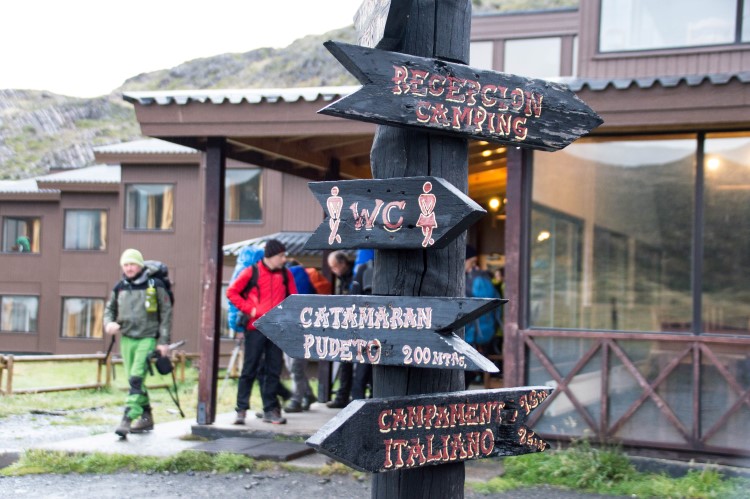
You must buy it in advance online here . You must download the QR code to your phone before you enter the park (as you won’t have signal when you get there!) and bring your passport to show that you’re not a Chilean resident.
Torres del Paine W trek itineraries
Hiking in Torres del Paine National Park is significantly cheaper if you go self-guided.
There is also absolutely no chance that you’ll get lost. Believe me, the W trek is now so busy that (unfortunately) you see people all the time.
If you want to trek Torres del Paine solo, you can either hike from west to east (my preference, as I’ll go into below) or east to west.
When you enter the park and pay your fee, you will be provided with a Torres del Paine W trek map to be used when you’re walking.
Unfortunately, the map that you get from CONAF doesn’t include distances. I would strongly recommend you download Maps.me, a free app that has all the trails marked and you can use it to work out distances if required.
Itinerary one: W trek in five days with sunrise at Mirador Las Torres (west to east route)
Why hike this route:
- This trail builds up to the most exciting part of the trek, the Mirador Las Torres viewpoint on the final day.
- It also starts with a short first day, giving you time to get into your stride.
Want to know how to book the campsites mentioned in this itinerary? Head over to this comprehensive article about booking Torres del Paine camping or hostel accommodation .
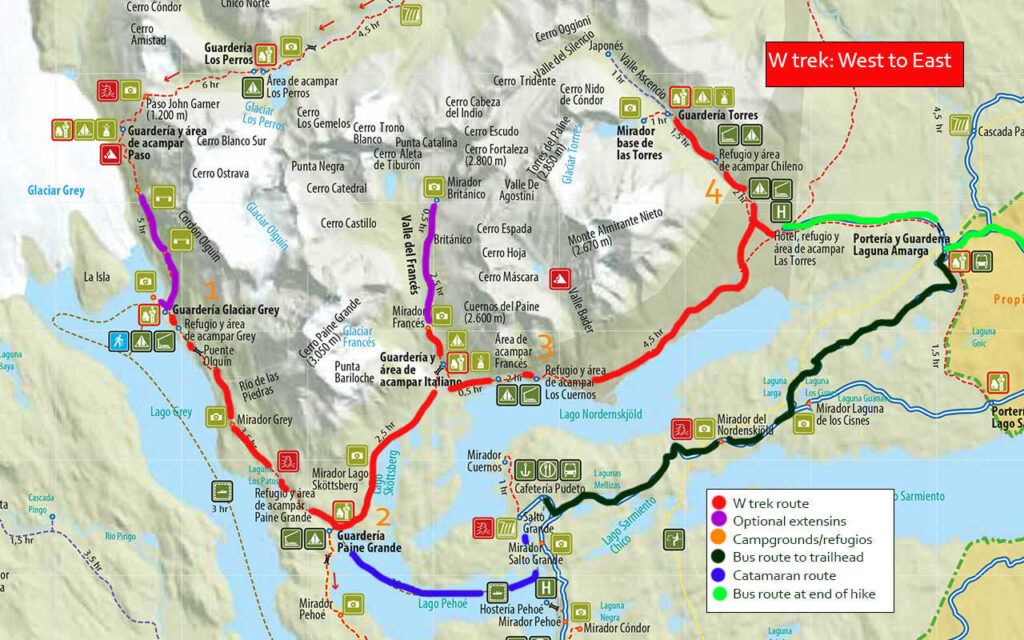
Day One: Puerto Natales to Grey
- Distance: 11 kilometers (6.8 miles)
- Duration: 3-4 hours hiking
6:50am Take a bus from Puerto Natales to the Pudeto (the catamaran ferry stop). You will stop at the park entrance when you first get into Torres del Paine to show your entrance ticket.
You must have bought this in advance online here and downloaded the QR code to your phone (there isn’t internet cell service at Laguna Amarga!).
9:50am Arrive at Pudeto. Queue up for the catamaran ferry across the lake.
10:30am Take the ferry across to Paine Grande*. This service is operated by Hielos Patagonicos ($25,000 ($30 USD) single, cash only). Tickets cannot be reserved in advance; you buy them at the ferry port.
Ferry schedules do sometimes change; you can check up-to-date ones here .
11:40am Arrive at Paine Grande and trek to Grey. The trail starts to go uphill but soon levels off and has great views of Lago Grey to keep your spirits up!
16:00pm The hike from Paine Grande takes between three and four hours so expect to arrive late afternoon at Grey to pitch your tent, meet some other hikers, and cook dinner.
Day Two: Grey to Paine Grande
- Distance: 18 kilometers (11 miles)
- Duration: 6-7 hours hiking
8:00am Wake up and have breakfast.
9:00am Leave your stuff at the campsite and return a few hours later to pack everything up. From the campsite, an additional one kilometre north through the forest brings you go two viewpoints lying over a kilometre from the glacier’s snout. From here, look out for enormous chunks of ice in the water.
Continue a further 2.5 kilometres (around a one-hour hike) along the path along the edge of the glacier to reach a series of two rope bridges hanging over ravines.
From here you get the best views of the glacier and, if you’re lucky and it’s a clear day, the Southern Patagonian Ice Field beyond.
Return to Grey along the same path and back to Paine Grande.
16:00pm You’ll arrive at Paine Grande at around 4pm, which is where you’ll spend the night. The facilities are great here, with a covered dining area for campers.
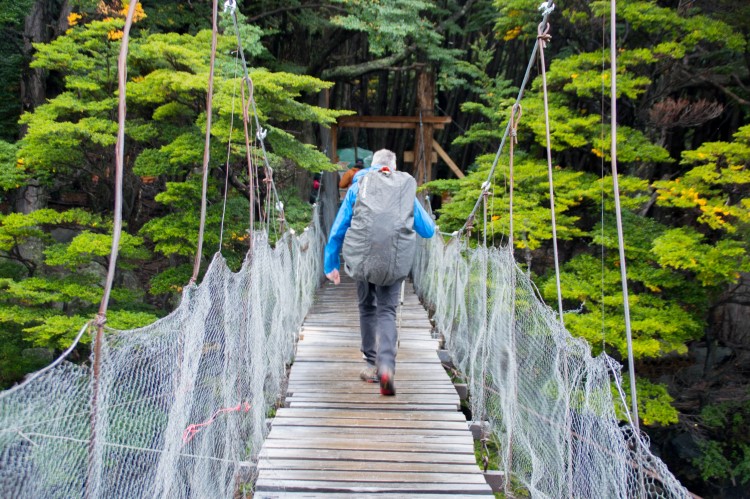
Day Three: Paine Grande to Francés
- Distance: 11.5 kilometers (6.8 miles) plus 9 kilometers (5.6 miles) for the extension to Mirador Británico)
- Duration: 4 hours hiking (7.5 hours with extension to Mirador Británico)
8:00am Get up, have breakfast and pack up your tent.
9:00am Today begins with a flattish trek around Lake Nordernskjold to Guardería Italiano. You can leave your bags here with the ranger before hiking up into the Francés Valley.
Note that there’s a new trail that begins about one km (15 mins) after you leave Paine Grande. It’s a little longer – 9 km (5.6 miles) rather than 7 km (4.3 miles) – and so takes around 30 minutes longer, but it has fewer hikers on it and is really pretty.
11:00am The hike up the Francés Valley may be long or painfully short – all depending on the weather. Both times I’ve walked Torres del Paine W hike I’ve experienced dreadful weather in the Francés Valley.
This part of the hike marks the central section of the W and it’s all uphill. After an hour’s steep gradient up a rocky, slippery trail to Mirador Francés, look for Glaciar Francés as it clings to the mountainside in the west.
If you’re feeling energetic, and the weather’s playing fair, you can continue climbing to Mirador Británico (an additional 3.5 km (2 miles) each way; around three hours’ return), where you’ll view a ring of toothy granite peaks, including the park’s second most famous landmark, the three-horned Cuernos del Paine.
It’s one of the park’s most stunning viewpoints—when the sky is clear. You may even see an endangered Southern Andean huemul (a type of deer) around here.
Luckily, the hike back is downhill to return to Campamento Italiano, where you pick up your rucksack and hike the 30 minutes to reach Francés.
13:00pm-16:00pm Arrive at Francés*, pitch up and enjoy the views across the lake.
*If there is no availability at Francés when you go to make your refugio or campsite reservations , you can instead book to stay at Los Cuernos, which is a further 3.5 kilometers (one hour) from Francés.
Day Four: Francés to El Chileno*
- Distance: 17 kilometers (10.5 miles)
- Duration: 4-5 hours hiking
9:00am Leave the campsite and begin the trek to El Chileno, situated about two hours from the bottom of the towers.
This trek meanders alongside the lake, gaining and losing altitude as it goes, until you reach the start of the valley where it becomes all uphill. The views are incredible but if it’s sunny, it will be hot!
16:00pm Arrive at El Chileno* and pitch your tent. Get everything organised for the morning as you’ll be leaving early. Check with the staff what time sunrise will be the next morning.
*For the 2023-2024 season, and for the foreseeable future, Torres Ranger Station is not open to the public. It’s no longer as easy to get to the towers for dawn as the distance is now around four kilometres, rather than one kilometre; however, it is still possible to do it.
If you can’t get a pitch at Chileno, it is possible to hike from Torres Central/Norte ($25 USD camping pitch per person). Although you’re not officially supposed to hike from here up to the towers, you can: leave four hours ahead of sunrise. It’s an additional one-hour 45 minutes if starting from Torres Central/Norte to reach the towers.
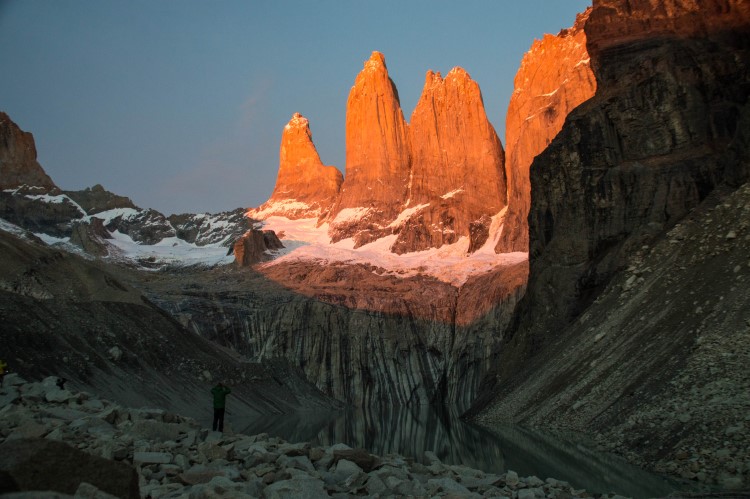
Day Five: El Chileno* to Laguna Amarga and Puerto Natales
- Distance: 13 kilometers (8 miles) plus 8 kilometers (5 miles) for the hike from the Centro de Bienvenida to Laguna Amarga)
- Duration: 6 hours hiking (add an extra 1.5-2 hours for the hike to Laguna Amarga)
4:30am Wake up and take a small bag (including warm clothes and a snack) to see the torres at dawn. Don’t forget your torch as the route is over rocks and can be treacherous.
4:45am Start hiking up to the torres . For us at the very start of March, dawn was at about 7:15am.
8:00am Leave the torres and return to the campsite. Pack up, have breakfast start the long walk down.
12.30pm When you get to Las Torres Hotel car park, there is a shop selling ice creams. To get the shuttle minibus to take you to Laguna Amarga, you need to hike one kilometre down the road towards Torres Central/Norte to reach the Centro de Bienvenida /Welcome Centre.
Shuttles ($4,000 CLP ($6 USD) – you must pay in cash at the shuttle) leave throughout the day to take you to Laguna Amarga. Departures leave the Welcome Centre at 8am, 2pm, 4pm and 7pm daily , and take about 30 mins.
If you can face the walk, it’s about another one and a half hours to the Laguna Amarga Ranger Station where buses are waiting to pick you up.
Hiking there, you can get good views of the towers as they rise out of the Cordillera Paine if the weather is clear.
14:30pm Take the bus from Laguna Amarga back to Puerto Natales.
17:00pm Arrive in Puerto Natales bus station and go and enjoy a pint at Cerveza Baguales on the Plaza de Armas to celebrate!
If time allows, consider spending a night in Puerto Natales to explore all the town has to offer before your onward journey. Our guide to the best hotels in Puerto Natales caters for all budgets, styles and preferences.
*If you can’t get a pitch at Chileno, it is possible to hike from Torres Central/Norte ($21 USD camping pitch per person). Although you’re not officially supposed to hike from here up to the towers, you can: leave four hours ahead of sunrise. It’s an additional one-hour 45 minutes if starting from Torres Central/Norte to reach the towers.
Make sure you bring a headtorch for climbing in the dark (it will get lighter as you reach the more difficult stretch of hiking just below the towers), plus warm clothing (even including a sleeping bag) to use at the top and keep you cozy as you enjoy the sunrise.
Itinerary two: Torres del Paine W trek in four days with sunrise at Mirador Las Torres (west to east route)
Why hike this route?
- It’s a good option if you don’t have much time
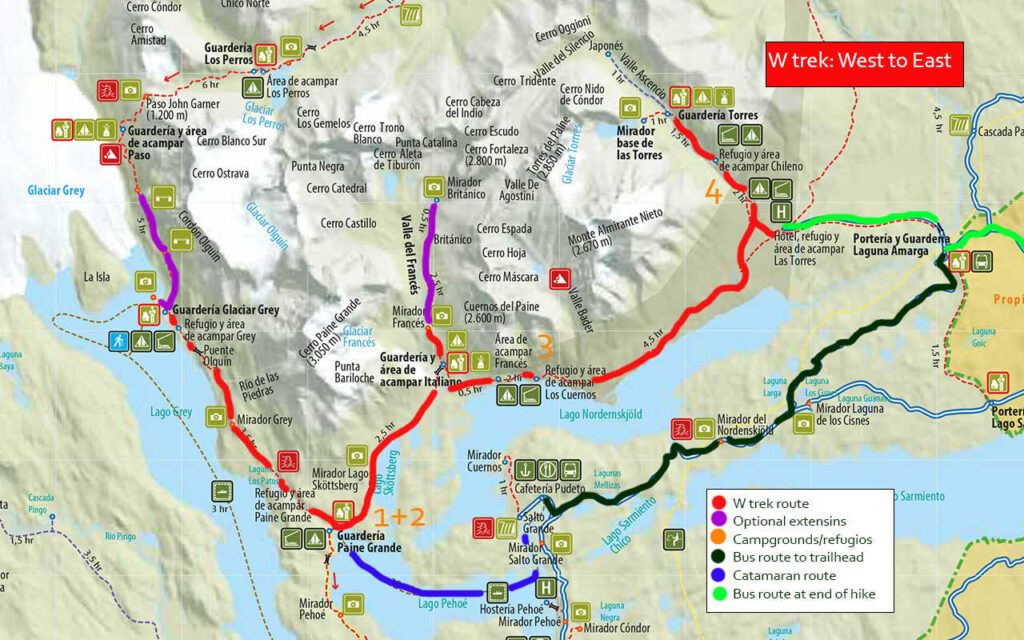
Day Zero – Puerto Natales to Paine Grande
- Distance: nil
- Duration: nil
2.30pm Catch the Bus Sur bus from Puerto Natales.
You will stop at the park entrance at Laguna Amarga when you first get into Torres del Paine to pay your entrance fee.
You must have paid for your ticket in advance online here AND downloaded the QR code; you will not find cell service or WIFI at the entrance.
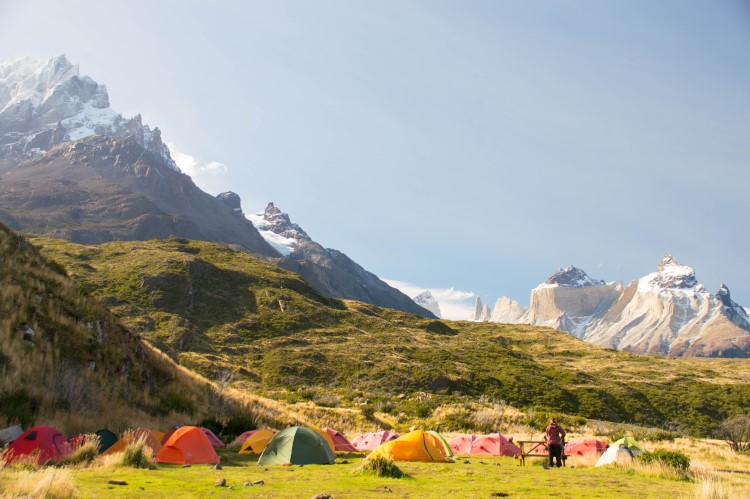
5.15pm Arrive at Pudeto take the ferry across to Paine Grande at 6pm. This service is operated by Hielos Patagonicos ($25,000 ($30 USD) single, cash only).
Tickets cannot be reserved in advance; you buy them at the ferry port. Ferry schedules and prices do sometimes change; you can check up-to-date ones here and the 9am ferry only runs November through the end of March.
6.30pm Pitch up at Paine Grande, have some dinner and then have an early night in preparation for a long day’s hiking tomorrow.
Day One – Paine Grande to Paine Grande
- Distance: 22 kilometers (14 miles) plus 7 kilometers (4.3 miles) if you hike to the last viewpoint)
- Duration: 7-9 hours hiking
7:00am Get up, have breakfast, and pack up your tent.
08:00am Take the trail towards Grey; it starts uphill but soon levels off and has great views of Lago Grey to keep your spirits up!
If you’re fit, you can hike an additional one kilometre north through the forest brings you go two viewpoints lying over a kilometre from the glacier’s snout. From here, look out for enormous chunks of ice in the water.
Turn back and return the way you came, past Grey and then back to Paine Grande.
17:00pm Arrive late afternoon back at Paine Grande to meet some other hikers and cook dinner.
Day Two – Paine Grande to Frances
9:00am Hike to the ranger station, Guardaria Italiano (around two hours), where you leave your rucksack with the ranger. You’ll pick it up on your way back down from the Francés Valley.
The hike up the Francés Valley may be long or painfully short – all depending on the weather. Both times I’ve walked Torres del Paine W hike I’ve experienced dreadful weather in the Francés Valley.
If you’re feeling energetic, and the weather’s playing fair, you can continue climbing to Mirador Británico (an additional 3.5 km each way; around three hours’ return), where you’ll view a ring of toothy granite peaks, including the park’s second most famous landmark, the three-horned Cuernos del Paine.
Luckily, the hike back is downhill to return to Italiano, where you pick up your rucksack and hike the 30 minutes to reach Francés.
*If there is no availability at Francés when you go to make your refugio or campsite reservations , you can instead book to stay at Los Cuernos, which is a further 3.5 kilometres (one hour) from Francés.
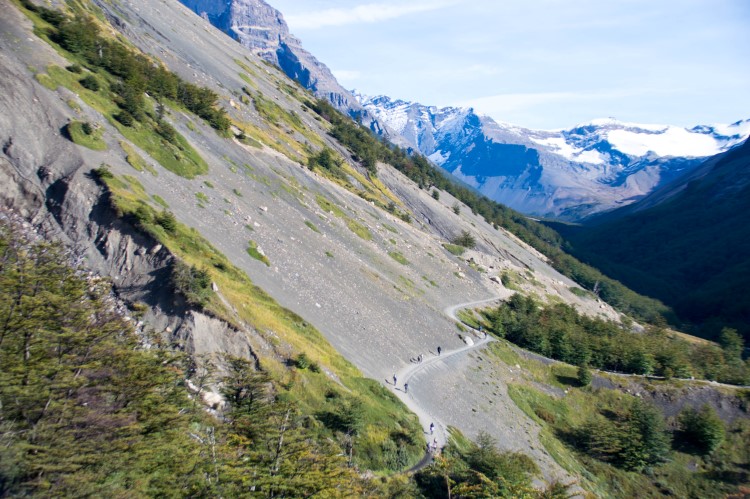
Day Three: Francés to El Chileno*
9:00am Leave the campsite and begin the trek to El Chileno, situated about two hours from the bottom of the towers. This trek meanders alongside the lake, gaining and losing altitude as it goes, until you reach the start of the valley where it becomes all uphill.
The views are incredible but if it’s sunny, it will be hot!
*For the 2023-2024 season and for the foreseeable future, Campamento Torres, the campground just below the towers, is not open to the public. It’s no longer as easy to get to the towers for dawn as the distance is now around four kilometres, rather than one kilometre; however, it is still possible to do it.
Day Four: El Chileno* to Laguna Amarga and Puerto Natales
Shuttles ($4,000 CLP ($6 USD) – you must pay with cash in the shuttle) leave throughout the day to take you to Laguna Amarga. Departures are at 8am, 2pm, 4pm, 7pm and takes about 30 minutes.
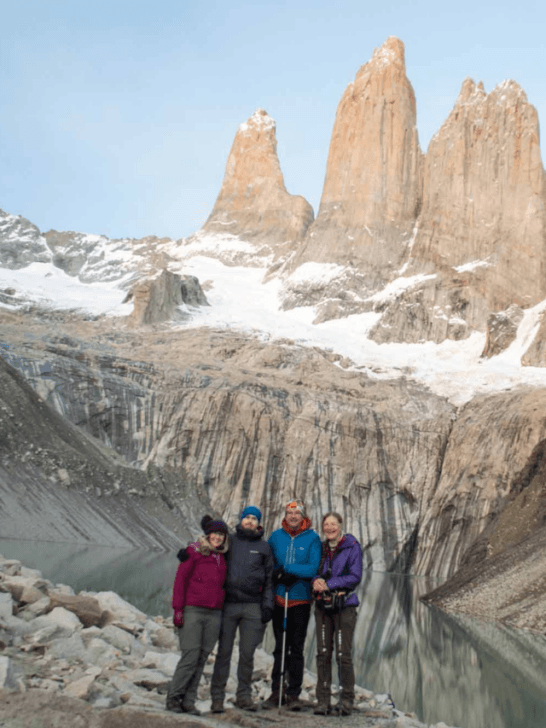
*If you can’t get a pitch at El Chileno, it is possible to hike from Torres Central/Norte ($25 USD camping pitch per person). Although you’re not officially supposed to hike from here up to the towers, you can: leave four hours ahead of sunrise.
Make sure you bring a headtorch for climbing in the dark (it will get lighter as you reach the more difficult stretch of hiking just below the towers), plus warm clothing (even including a sleeping bag) to use at the top and keep you cosy as you enjoy the sunrise.
Itinerary three: Torres del Paine W hike in five days (east to west route)
Why hike this route:
- Not only do you get to complete the W, it gives you time for a bonus extra hike to the Los Cuernos or Salto Grande viewpoints.
Want to know how to book the campsites mentioned in this itinerary? Head over to this comprehensive article about booking Torres del Paine camping or hostel accommodation .
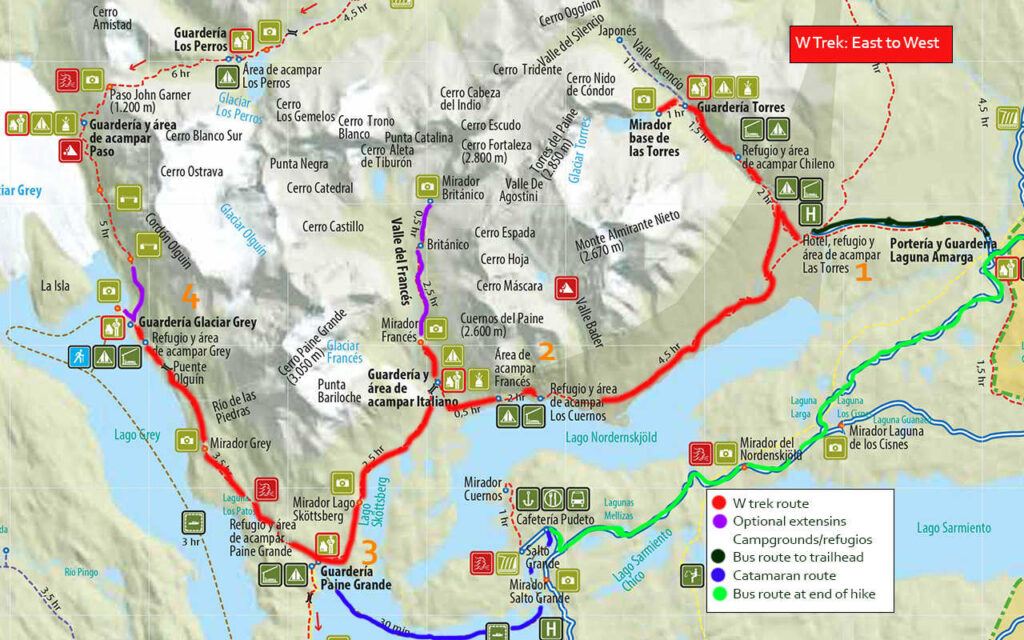
Day One: Puerto Natales to Mirador Las Torres & Torres Central/Norte
- Distance: 18.4 kilometers (11.4 miles)
- Duration: 6-7 hours hiking
6:45am Take a bus from Puerto Natales to Laguna Amarga. You can book tickets online with Bus Sur or go to the bus station in Puerto Natales the day before you start hiking and book with them or one of the other companies there.
8:45am Arrive at Laguna Amarga. Show your entrance ticket at the ranger’s station.
9:00am To get to the start of the W, you need to take a shuttle bus ($4,000 CLP ($6 USD) – you must pay in cash at the shuttle) to the Centro de Bienvenida (Welcome Centre).
Departures theoretically leave from Laguna Amarga at 9am, 3pm, 5pm and 8pm daily , and take about 30 mins. However, Las Torres (who run the shuttle service) have assured me that the shuttle bus awaits the arrival of the bus from Puerto Natales and will take all passengers that are waiting to board – sending for a second shuttle if there are more passengers than seats.
9.30am You’ll be staying overnight at the Torres Central/Norte campground, so check in and leave your big bags and take warm layers, food, and plenty of water for the hike up to the towers.
Start hiking up to the torres . It’s all uphill and it can be quite steep at points, but it’s worth the effort! All in all, you gain around 800m (2,620 feet).
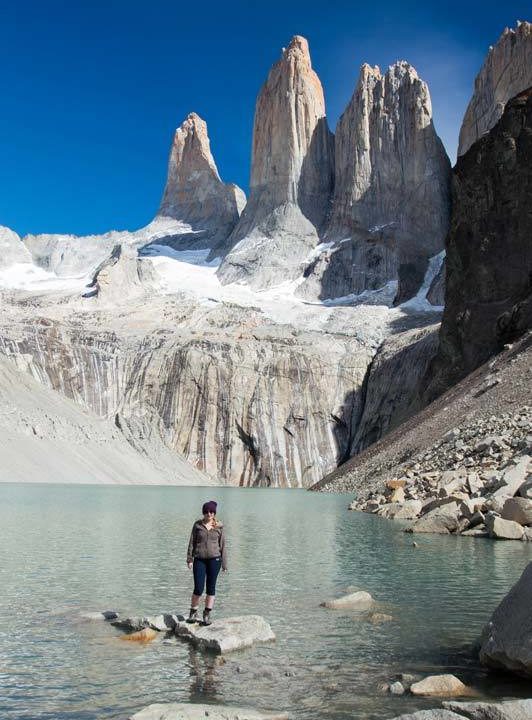
Take your time, drink plenty of water, and relax when you get to the top.
13:30pm Arrive at Mirador Las Torres and enjoy the views.
15.00pm Start hiking back to the campsite; you’re trekking back the way you came.
17.00pm Pitch your tent, have dinner, and relax!
Day Two: Torres Central/Norte to Francés
- Distance: 14.5 kilometers (9 miles)
- Duration: 5.5 hours hiking
9:00am Get up, have breakfast and pack up your tent.
10:00am You leave Torres Central heading west and reach Lago Nordernskjold. The trail meanders alongside the lake, gaining and losing altitude as it goes. The views are incredible but if it’s sunny, it will be hot!
15:30pm Reach Francés campground, where you’ll stay tonight. Pitch up and enjoy views across the lake. Bear in mind that check-in at Francés doesn’t start until 2.30pm and hot showers aren’t available until 5pm, so take your time on the hike.
Day Three: Francés to Mirador Británico & Paine Grande
- Distance: 14 kilometers (8.6 miles) from Francés to Mirador Británico and 7 kilometers (4.3 miles) from Guardería Italiano to Paine Grande
- Duration: 5.5 hours hiking from Francés to Mirador Británico and 2.5 hours from Guardería Italiano to Paine Grande
9:00am If the weather is good, today is going to be a long day as you climb up into the Francés Valley. Both times I’ve walked Torres del Paine W hike I’ve experienced dreadful weather in the Francés Valley.
From Francés, head west along the path beside the lake to reach Guardería Italiano, a rangers’ station and former (now defunct) campground. Here, you can drop your big rucksacks; just take warm clothing and food for the hike up to the Mirador Británico* (British Viewpoint). This part of the hike marks the central section of the W and it’s all uphill. After an hour’s steep gradient up a rocky, slippery trail to Mirador Francés, look for Glaciar Francés as it clings to the mountainside in the west.
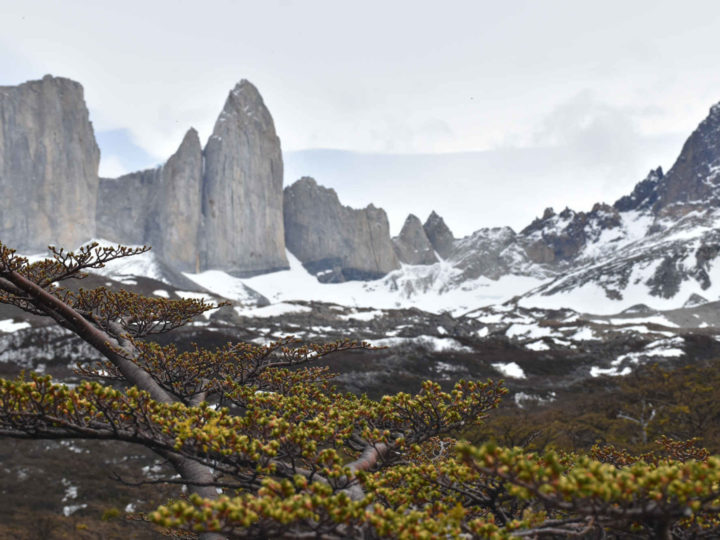
Luckily, the hike back is downhill to return to Guardería Italiano. Pick up your bags and take the new trail that begins just after the rangers’ station; take the lefthand fork that follows closer along the lake. It’s a little longer – 9 kilometers (5.6 miles) rather than 7 kilometers (4.3 miles) – and so takes around 30 minutes longer, but it has fewer hikers on it and is really pretty.
18:30pm Arrive at Paine Grande, pitch your tent and enjoy a hot shower!
*You’re only allowed to start hiking up to the viewpoint until midday, so don’t delay getting to the rangers’ station – although this rule isn’t always enforced!
Day Four: Paine Grande to Grey & Puerto Natales
- Distance: 11 kilometers (6.8 miles) plus six kilometers (3.7 miles) to reach rope bridges
- Duration: 4 hours hiking plus 1.5 hours to reach rope bridges
10:00am Take the trail heading north to Grey. It starts by going uphill but soon levels off and has great views of Lago Grey to keep your spirits up! It takes between three and four hours.
14:00pm Arrive at Grey, where you can leave your big bags. From the campsite, an additional one kilometre north through the forest brings you to two viewpoints lying over a kilometre from the glacier’s snout. From here, look out for enormous chunks of ice in the water.
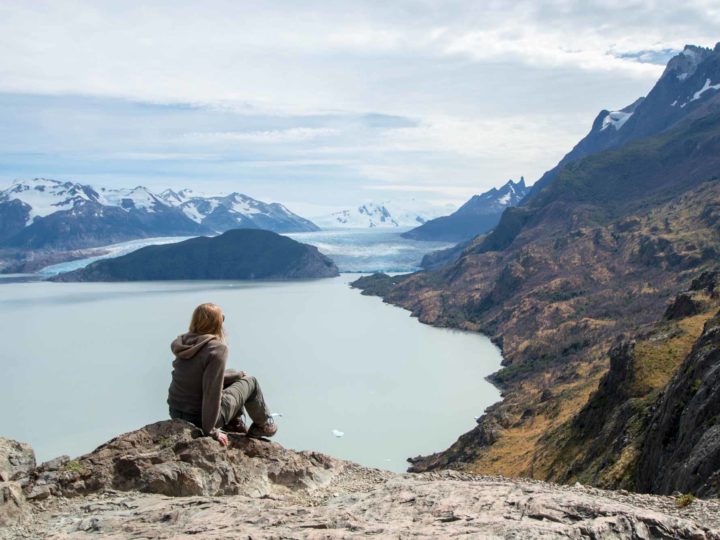
From here you get the best views of the glacier and, if you’re lucky and it’s a clear day, the Southern Patagonian Ice Field beyond. Return back to Grey.
16:00pm Arrive at Grey, pitch up and relax – you’ve almost finished the hike!
Day Five: Grey to Paine Grande and Puerto Natales
- Distance: 11 kilometers (6.8 miles) plus 2.3 kilometers (1.4 miles) to the Cuernos Viewpoint
- Duration: 4 hours hiking
7:00am Get up, pack up your tent, and have breakfast. Return to Paine Grande along the same path.
10:30am Join the queue for the ferry to Pudeto.
11:00am Take the ferry to Pudeto. This service is operated by Hielos Patagonicos ($25,000 ($30 USD) single, cash only). Tickets cannot be reserved in advance; you buy them at the ferry port.
11:30am Arrive at Pudeto. From here, you can either have lunch in the tiny cafeteria at the ferry dock or you can hike from Pudeto to the Cuernos Viewpoint, a 2.3-kilometer (1.4-mile) one-way hike from the ferry dock; it should take you around an hour each way and grants you incredible views west and east along the Paine Massif range.
A shorter option is the 600-meter (0.3-mile) trail to the Salto Grande Waterfall, which has stunning views of Los Cuernos behind it.,
2:30pm Take the bus from Pudeto back to Puerto Natales. You should arrive around 5.05pm.
Itinerary four: W trek in five days with sunrise at Mirador Las Torres (east to west route)
- You get to see the sunrise at Mirador Las Torres and hiking to it on your first day means your legs won’t be as tired.
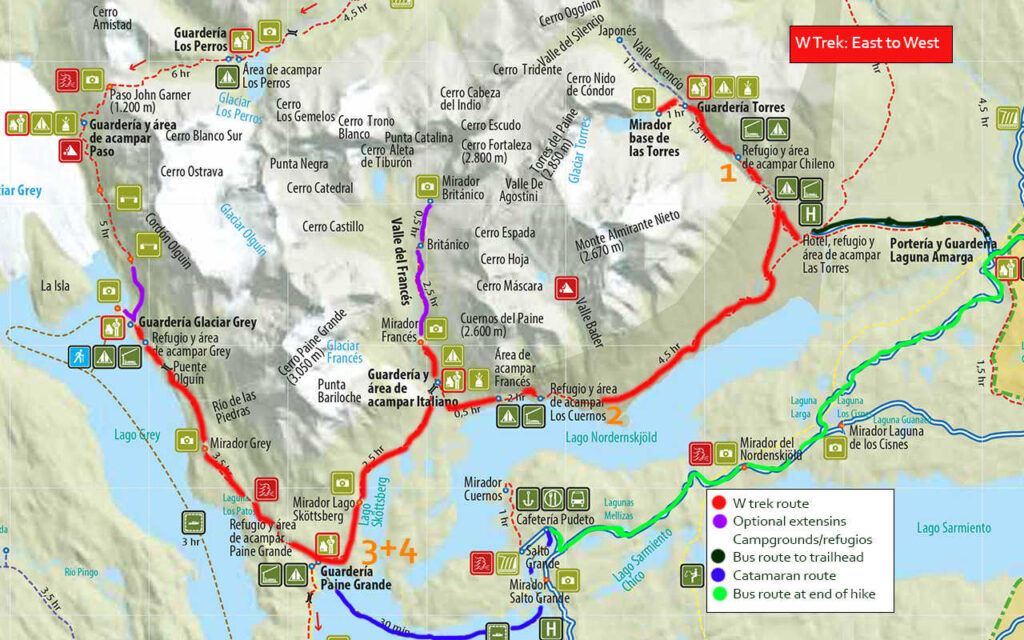
Day Zero: Puerto Natales to El Chileno
- Distance: 5 kilometers (3miles)
- Duration: 2 hours hiking
12:00pm Take a bus from Puerto Natales to Laguna Amarga.
2.00pm Arrive at Laguna Amarga. Show your entrance ticket at the ranger’s station.
2.30pm To get to the start of the W, you need to take the shuttle bus ($4,000 CLP ($6 USD) – you must pay in cash at the shuttle) to the Centro de Bienvenida (Welcome Centre).
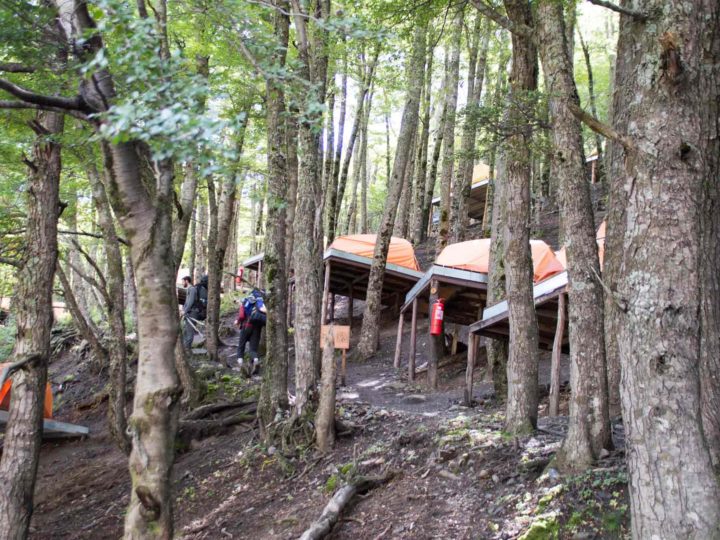
3pm Start hiking up to El Chileno, the closest campground to Mirador Las Torres, the famed viewpoint of the towers. This is the smallest campground, so sells out fast.
If you can’t get a spot here, you’ll need to camp at Torres Norte/Central and hike four hours tomorrow to reach the viewpoint.
5pm Arrive at El Chileno. Set up your tent, have dinner and relax.
Day One: El Chileno to Mirador Las Torres and then Los Cuernos
- Distance: 19.4 kilometers (12 miles)
- Duration: 6.5 hours hiking
4:30am Wake up and take a small bag (including warm clothes, a sleeping bag, and a snack) to see the torres at dawn. Don’t forget your torch as the route is over rocks and can be treacherous.
8:00am Leave the mirador and return to the campsite. Pack up, have breakfast start the walk down. When the trail splits, you’ll need to take the righthand path that goes alongside Lago Nordenskjöld.
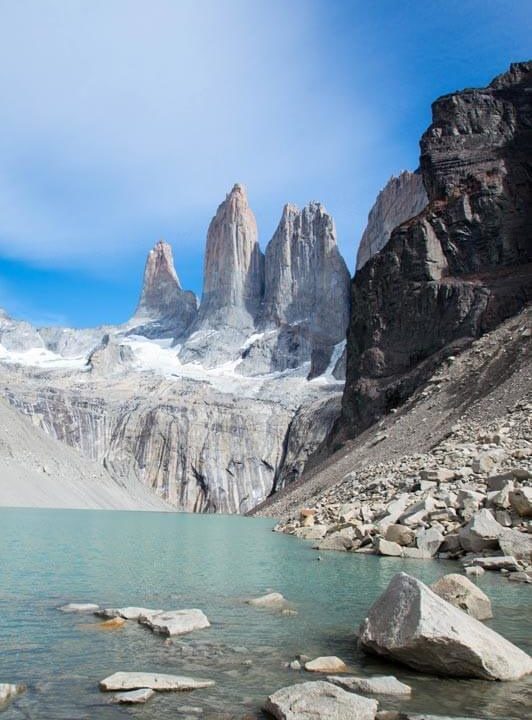
This trek meanders alongside the lake, gaining and losing altitude as it goes. The views are incredible but if it’s sunny, it will be hot!
3:00pm Arrive at Los Cuernos*, pitch up and relax.
*If there is no availability at Los Cuernos, when you go to make your refugio or campsite reservations , you can instead book to stay at Francés, which is a further 3.5 kilometers (one hour) beyond Los Cuernos.
Day Two: Los Cuernos to Paine Grande
- Distance: 17.5 kilometers (10.8 miles) from Los Cuernos to Mirador Británico and 7 kilometers (4.3 miles) from Guardería Italiano to Paine Grande
- Duration: 6.5 hours hiking from Francés to Mirador Británico and 2.5 hours from Guardería Italiano to Paine Grande
7:00am Get up, have breakfast and pack up your tent.
8:00am Today begins with the path alongside Lake Nordernskjold to Guardería Italiano. You can leave your bags here with the ranger before hiking up into the Francés Valley to Mirador Británico*.
10:30am The hike up the Francés Valley may be long or painfully short – all depending on the weather. Both times I’ve walked Torres del Paine W hike I’ve experienced dreadful weather in the Francés Valley.
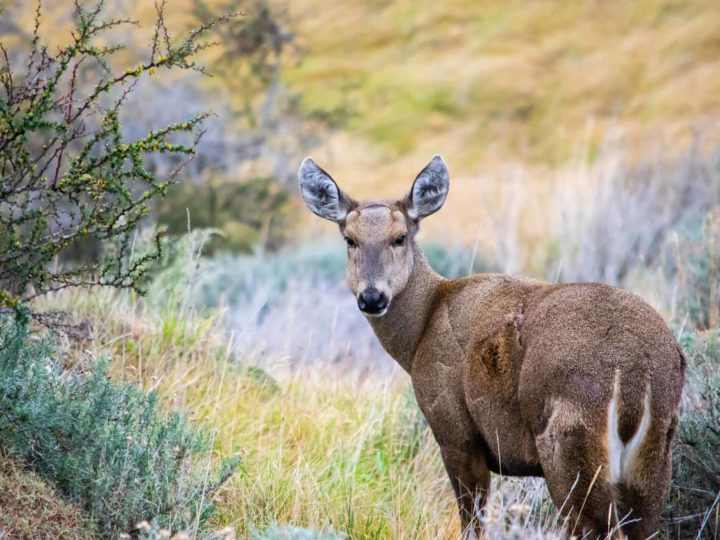
Luckily, the hike back is downhill to return to Campamento Italiano. From there, pick up your rucksack and hike the two remaining hours to reach Paine Grande.
Note that there’s a new trail that begins just after Campamento Italiano; take the lefthand fork that follows closer along the lake. It’s a little longer – 9 km (5.6 miles) rather than 7 km (4.3 miles) – and so takes around 30 minutes longer, but it has fewer hikers on it and is really pretty.
17:00pm-18:00pm Arrive at Paine Grande, pitch up and enjoy the views across the lake.
Day Three: Paine Grande to Grey and back to Paine Grande
9:00am Hike from Paine Grande to Grey; you can leave everything in your tent, except the items you need for today. The trail starts to go uphill but soon levels off and has great views of Lago Grey to keep your spirits up!
13:00pm Arrive at Grey. From the campsite, an additional one kilometre north through the forest brings you to two viewpoints lying over a kilometre from the glacier’s snout. From here, look out for enormous chunks of ice in the water.
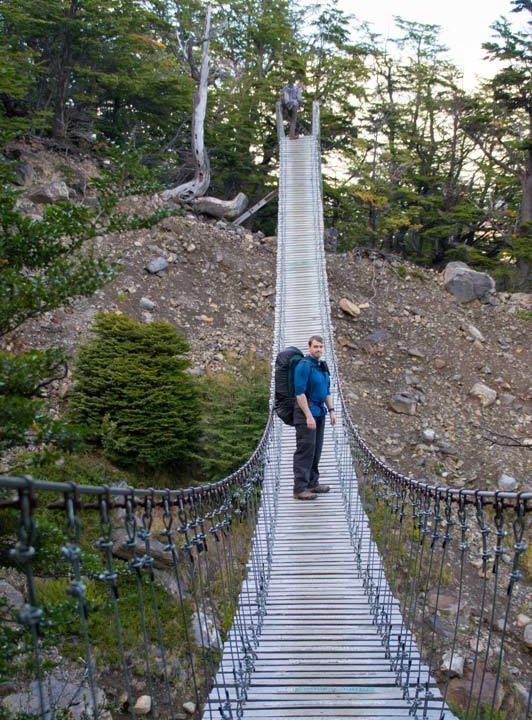
15:00pm Return to Grey along the same path and back to Paine Grande.
19:00pm Arrive at the campground, relax, have dinner and enjoy the feeling of finishing the trek!
Day Four: Paine Grande to Puerto Natales
- Distance: N/A
- Duration: N/A
9.00am Join the queue for the ferry to Pudeto.
9:30am Take the ferry to Pudeto. This service is operated by Hielos Patagonicos ($25,000 ($30 USD) single, cash only). Tickets cannot be reserved in advance; you buy them at the ferry port.
10:00am Arrive at Pudeto.
10.30am Take the bus from Pudeto to Puerto Natales and celebrate your successful completion of the W!
Top tips for hiking the Torres del Paine W Trek self-guided
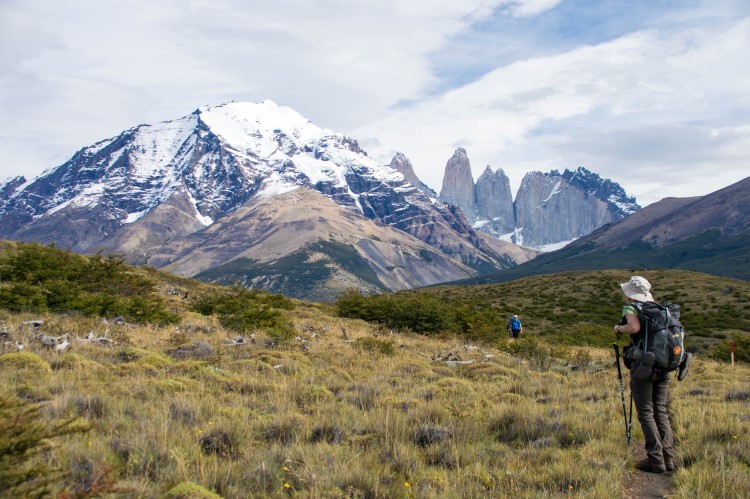
Having now been hiking in Torres del Paine National Park twice, I’ve learned a few important tips that have kept me happy, sane and comfortable en route :
Top equipment tips
- Camping in Torres del Paine at Francés, Los Cuernos, and El Chileno is on wooden platforms. If you plan to stay at any of these campsites, you will need extra cord or string to help you attach your tent without using pegs.
- Bring a range of warm and wet weather clothing. Check out my packing list for hiking the Circuit in Torres del Paine for the full guide to the clothing that I packed for the trip (and which is also a good guide to what to pack for the W). It also includes a free, downloadable checklist.
- Bring a book or some cards for the evenings as you tend to finish hiking quite early and if it’s cold and wet, you’ll want to retire to the shelters with something to do.
- Having a lightweight tent really does make a difference camping on this trek. Have a look at my review of the Big Agnes HVUL2 , the really lightweight backpacking tent that we used for the O Circuit.
- If you’re carrying all of your own equipment, a 60-litre rucksack should be big enough.
- Pack all of your clothes into dry bags (better than a bin bag which can easily rip). The weather changes rapidly and on days when it’s pissing it down, you’ll welcome the fact that your sleeping bag and clothes are dry. I recommend the Sea to Summit dry bags (buy them on REI | Amazon ).
- Bring a rucksack cover. I’ve heard mixed advice on this one, but a rucksack cover kept our bags dry (and so lighter) when we were hiking in Torres del Paine National Park and no, they didn’t blow away in the wind. If your rucksack doesn’t come with its own, you can find them in various sizes on | Osprey | Amazon (make sure it’s the correct size for your bag – otherwise it will blow away!).
Top food tips
- There is a much wider (and cheaper) selection of food in the supermarkets in Punta Arenas than in the one Unimarc supermarket in Puerto Natales. I recommend doing your food shop there before you take the bus to Puerto Natales. We left the stuff we didn’t need in our hostel in Punta Arenas.
- You can also buy trekking food and bring it with you , but it’s heavier and far more expensive than organising your food when you get to Puerto Natales.
- Pack everything into zip-lock plastic bags and bin all the original packaging that you can to save on carrying any extra weight. Also, don’t bring the full pack of rice if you’re only going to eat half of it – every bit of weight counts!
- You can buy basic staples (pasta, biscuits, tomato puree etc.) from the shops at Paine Grande, Grey, Francés and El Chileno to stock up on supplies. It’s pretty expensive, but totally worth it. They also all stock beer – an additional expense that I didn’t include in the costings for the W trek!
- You don’t need to bring water with you as it’s available from all the glacier meltwater streams that you’ll run into along the W and is drinkable from the taps at each of the campsites. If you’re nervous about drinking the water, you can also bring a Steripen (read my review of the Steripen Adventurer or buy one from Amazon or buy a newer Steripen UV Ultra from REI ) to zap anything that might be nasty or a Grayl ( REI | Backcountry | Amazon ) – find out why I recommend these water filters for South American travel .
- My dad is a pro at packing food for multi-day treks. Read what food we took with us for the O Circuit (and which you can use as a guide for the W too).
- You will need Chilean pesos on you for the park as nowhere accepts cards. You’ll need $25,000 CLP ($35 USD) for the catamaran ferry and then extras for additional food, beer, and anything else you want to buy.
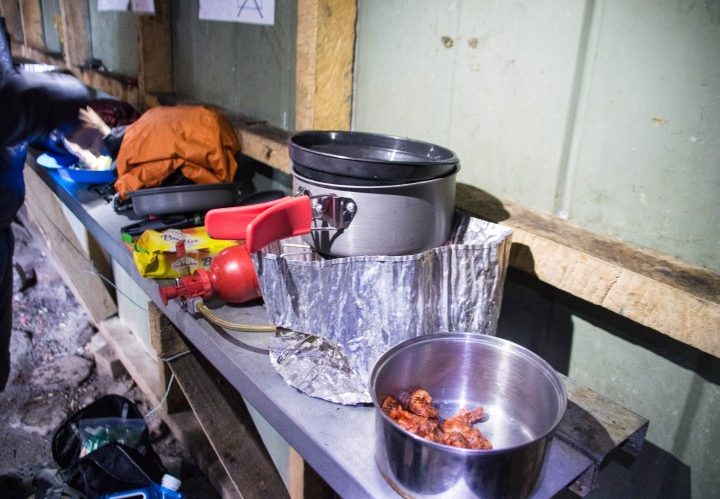
Camping in Torres del Paine
The following summarises some of the main points about booking campsites and refugios in Torres del Paine for the W trek, but you can get a full overview of how to book campsites in Torres del Paine with this article updated for the 2023/2024 season.
Reservations with Las Torres and Vertice Patagonia
You will need to book your campsites in Torres del Paine in advance. For example, in August 2022, many of the campsites and refugios were fully booked for December through February 2023, which just shows how far in advance it gets booked up.
Before you start panicking, what happens each year is that reservations free up again in September/October, probably due to the fact that tour agencies in Puerto Natales make mass reservations for the high season, and then cancel them when they don’t fill the bookings.
If you need anything planned well in advance, then this isn’t going to suit your plans. If your plans are a little more open and you can wait until closer until the time (and keep checking back to see if any spots have opened up), then you should still be able to hike the W during these months.
My recommendation would be to hike outside of these months anyway (November or March) to avoid the crowds as much as possible, but either way, you still MUST SECURE YOUR RESERVATIONS with Las Torres (Francés, Los Cuernos, El Chileno) and Vertice Patagonia (Paine Grande and Grey).
If you’re trying to get a space last-minute, you can always pop into either of their offices in Puerto Natales and see if they can book you in. I’ve heard of people having success with this with only a day or two’s notice.
Reservations with CONAF
For the 2023/2024 season, and for the foreseeable future, all of the CONAF campsites remain closed.
Upgrade your solo Torres del Paine W trek, Patagonia with these changes
If you’re not so bothered about hiking the W in Torres del Paine National Park on a complete budget, consider making the following small tweaks to your itinerary.
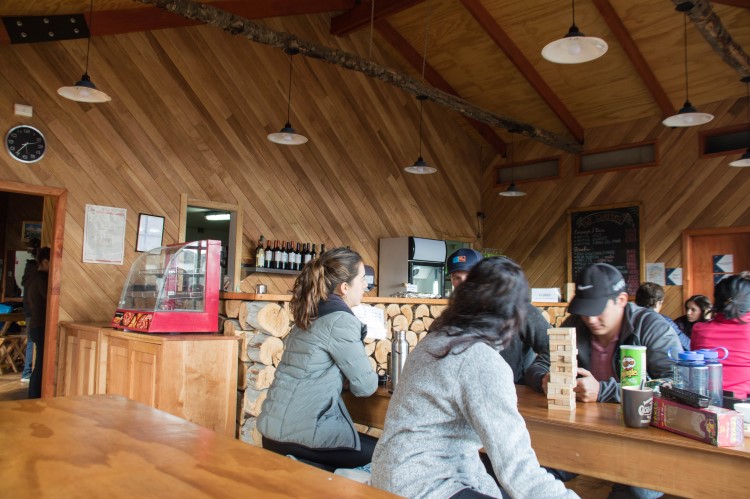
Stay overnight at Los Cuernos ($80,000 CLP ($88 USD) per person full board) instead of Francés
Again, this is only really possible if you stay overnight on Day Two in Paine Grande. When we hiked the Full Circuit, we decided to treat ourselves to an all-inclusive night at Los Cuernos.
This meant we still pitched our own tent on a wooden platform, but we had a three-course dinner, breakfast, and packed lunch for the next morning, which reduced the amount we had to pack in our rucksacks for the hike.
The food from Las Torres (previously known as Fantastico Sur) is much better than Vertigo Patagonia too, so I would recommend this instead of eating in the big canteen at Paine Grande.
Los Cuernos now offers camping sites without full board (previously you had to pay for full board at this campsite).
This means that for $25 USD per person you can pitch up your own tent here. They also offer half-board options priced at $62 USD per person, which include dinner and breakfast.
Book full board and a tent or bed at each campsite
You can rent gear and get food at all campgrounds, so if you don’t want to carry anything, then you can also book this way!
Bear in mind that full board at Los Cuernos comes in at $158 USD per person for a fully-equipped tent and full board – so it certainly won’t come cheap!
Did you find this guide to the Torres del Paine W hike useful? Pin it!
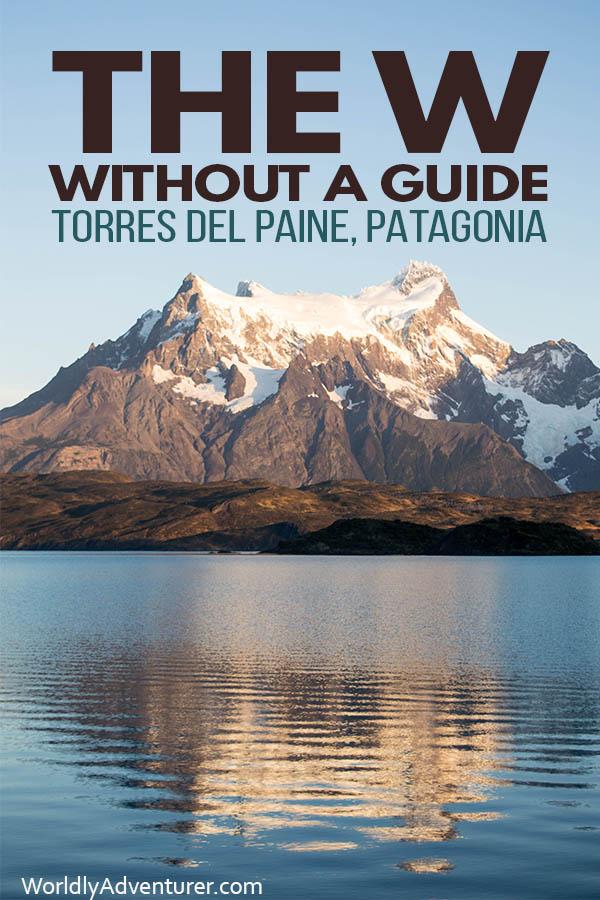
Helen Turner
Sunday 4th of February 2024
Excellent article. Plenty of food for thought. Thankyou
Steph Dyson
Friday 9th of February 2024
Thanks Helen! Steph
Sunday 26th of November 2023
We were hoping to hike to Refugio Grey, then take the Navigation boat toward Hotel Grey, then take a shuttle to our car at Pudeto. But I'm not sure how the timing works out. If we take the 14:00 navigation from Refugio Grey, is there time to make the last shuttle from Hotel Grey?
Tuesday 28th of November 2023
Hi Karen, I'm not sure. You would need to go off the timings on the Hotel Grey website or reach out to them directly. Steph
Jonny Collins
Tuesday 24th of October 2023
Thank you for your brilliant blog posts on all things South America - they're perfect for someone like me that loves knowing the logistics of our upcoming trips! My wife and I were meant to visit Patagonia for the first time in 2020 as part of a wider trip that was cut short due to COVID - we read your blog posts at the time whilst planning. We're finally planning to visit in 2024!
Unfortunately due to work commitments we are not able to take more than two weeks off and it is making our itinerary from the UK quite tight (we want to get to El Calafete and El Chalten in the same trip).
Whilst I appreciate you recommend doing the W Trek in 4 or 5 days, we are considering doing it in 3 days (we are experienced hikers and have done multi day hikes before). We had always planned hiking West to East. For the most even split on distance it seems that staying at Paine Grande and Los Cuernos would work best. We're really keen to see the towers at sunrise but appreciate that staying at Paine Grande and Torre Norte to do this would result in a very big second day. We have thought of two alternatives:
Option 1 (West to East): Night 1: Campo Italiano Night 2: Torre Norte
Option 2 (East to West): Night 1: Refugio Chileno Night 2: Campo Italiano
We've not considered yet if these options work with bus and ferry timetables. Do you think either of the above options are feasible to do the hike in 3 days and get to see the towers at sunrise? If not is there an alternative that might work, or if we do the trek in 3 days do we need to accept that we would not be able to see the towers at sunrise?
Any advice on the 'best' way to do the W trek in 3 days would be much appreciated. Apologies if anyone has asked this before! Thanks in advance :)
Sunday 28th of January 2024
Hi Steph, Thank you for your reply. In the end we decided to find an extra day from elsewhere in the trip so that we could do the W Trek and not miss out on anything! Thanks again for your help and for keeping this brilliant blog post up to date!
Thursday 23rd of November 2023
Hi Jonny, Italiano isn't open any more unfortunately. I would recommend just doing day hikes rather than the W. That way, you can actually enjoy your day hikes and not worrying about trying to cover the ground quickly. Steph
Tuesday 10th of October 2023
Great post, thank you! A group of five of us is heading to TDP to do the W-trek in January 2024. Very excited! We're flying from Santiago (SCL); is Puerto Natales a great option to fly into? I heard the drive to TDP from P. Natales is shorter than when coming from P. Arenas? It seems SKY airline has some flights during our time frame. Any great spot to hang out or visit at in P. Natales?
Hi LuAnn, yes you can fly directly into Puerto Natales. Steph
Wednesday 22nd of March 2023
Hi Steph! Can you please provide link where it is stated that a guide is required for hiking in May in Torres del Paine? I had not come across this requirement yet. Thank you!
Thursday 23rd of March 2023
Hi Megan, it's something I was told in a conversation with CONAF, the national parks office. You can reach out to them https://www.conaf.cl/parques/parque-nacional-torres-del-paine/ Steph

Solo Hiking the W Trek in Torres del Paine: A Comprehensive Guide to Trekking without a Guide in Chilean Patagonia
Are you ready to embark on an epic solo hiking adventure? Look no further than the W Trek in Torres Del Paine, Chile. This comprehensive guide will equip you with everything you need to conquer the one of the best hikes in Patagonia . Whether you’re a seasoned hiker or new to the trail, we’ll ensure you have all the information you need for solo hiking the W Trek. From crafting your perfect itinerary to packing the essentials and navigating the logistics, let’s prepare you for the journey of a lifetime.
This article contains affiliate links from the Amazon Associate and Travelpayouts programs. Wild Travel Tales will earn from qualifying purchases, at no extra cost to you .
Key Takeaways
- Day 1: Puerto Natales to Grey (bus, ferry, 11km walk)
- Day 2: Grey to Paine Grande (11km), plus optional glacier hike
- Day 3: Paine Grande to Francés/Los Cuernos (21km)
- Day 4: Francés/Los Cuernos to El Chileno/Central (18km)
- Day 5: El Chileno/Central to Mirador Las Torres to Puerto Natales (9km)
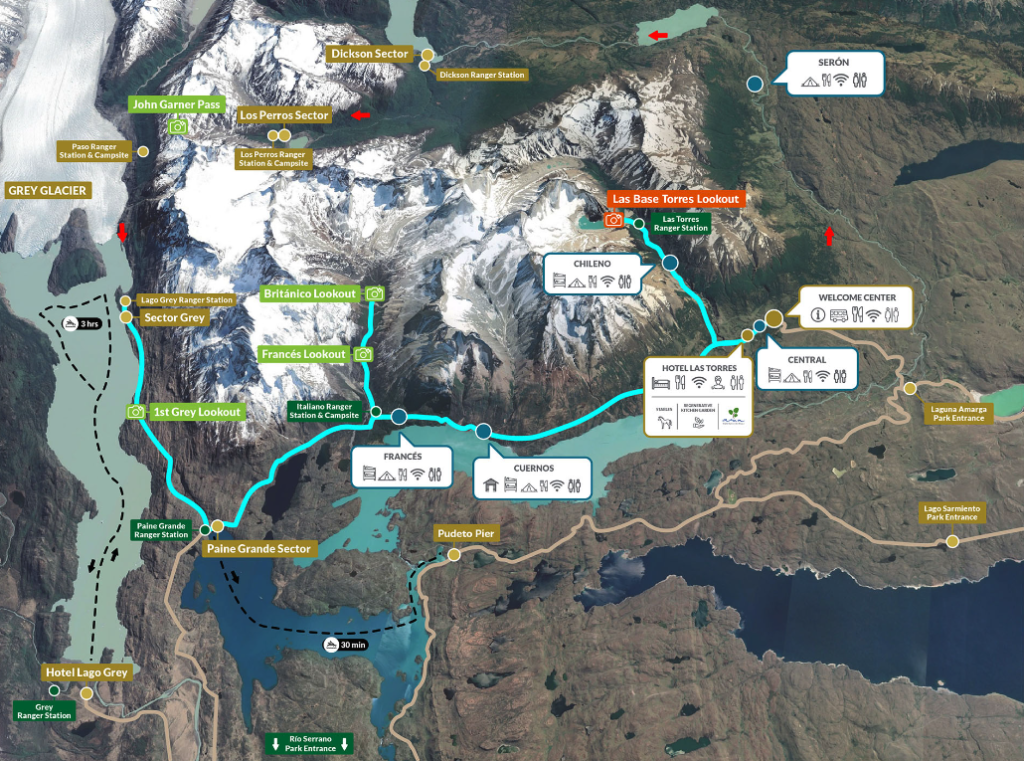
Checklist to Hike the W Trek without a Guide
This post explains everything you need to do to plan your W Trek adventure in detail. Before we get started, here is a simple checklist you will need to check-off.
- Book your accommodation via Torres Hike , or directly via Vertice and Las Torres – you need to book as early as possible, as it it can book out!
- Book your entrance ticket to Torres del Paine National Park online
- Pack proper equipment and food
- Book your return bus ticket from Puerto Natales to Torres del Paine National Park
- Ensure you have at least $28,000 pesos in cash ($25,000 pesos for the ferry, $3,000 pesos for the shuttle bus) as well as extra for any additional purchases you may want to make while in the park (e.g., snacks, drinks, meals, etc) – you should definitely bring extra money, just in case!
Where is the W Trek Located?
The famous W Trek is located in Torres Del Paine National Park, nestled in the southern reaches of Chilean Patagonia. This UNESCO Biosphere Reserve boasts pristine landscapes, dramatic peaks, and crystal-clear lakes, making it a dream destination for adventurers like you. The name “W Trek” originates from the distinct W-shaped path you’ll follow through the park, which offers a curated experience of Patagonia’s finest offerings.
When is the Best Time to Do the W Trek?
Planning your visit to Torres Del Paine is a crucial first step. While the park is open year-round, selecting the best time to hike the W Trek can greatly impact your experience. This will mostly come down to your preferences and desired experience.
Here’s a breakdown of your options:
- Shoulder Seasons: For milder weather and fewer crowds, consider hiking during late October to early November or late March to early April.
- Peak Season: If you crave the vibrant colours of Patagonian spring or the lushness of summer, be prepared for larger crowds during the peak season from November to March.
Where to Stay on the W Trek?
The W Trek offers a range of accommodation options to suit various preferences and budgets:
- Camping: Experience the wild by camping under the stars. This is a budget-friendly option for adventurous backpackers.
- Refugios: For a more comfortable stay, opt for refugios, which are similar to hostels. They offer a warm and cozy atmosphere after a long day of hiking and often provide shared facilities.
Camping vs Refugios on the W Trek
For those with an adventurous spirit and a desire to be as close to nature as possible, camping is an excellent choice. It is also substantially cheaper than staying in a refugio, which is a great way to bring down the cost of hiking the W Trek.
Many campsites are strategically located right outside the doors of refugios, granting you easy access to their facilities. This means you can enjoy the perks of refugios, such as meals and hot showers, while still savouring the authenticity of sleeping under Patagonia’s star-studded skies. It’s worth noting that you’ll need to carry your camping gear, including a suitable tent, sleeping bag, and cooking equipment, to ensure a comfortable stay. However, there are premium campsite options available with a pre-erected tent provided!
On the other hand, if you prefer a bit more comfort and convenience, the refugios are ready to welcome you. These cozy mountain lodges provide dormitory-style accommodation and shared facilities, including dining areas and hot showers. Staying in a refugio means you don’t have to lug heavy camping gear with you, allowing for a lighter backpack. However, it will make hiking the W Trek more expensive.
Booking Campsites & Refugios for the W Trek
As one of Patagonia’s most sought-after hikes, it can be difficult to secure campsites or refugio beds for the days you want. It is essential that you book your accommodation in advance (as early as possible), especially during the peak season. It is not uncommon for campsites and refugios to book out.
The campsites and refugios at different points along the W Trek are operated by two different companies, Vertice and Las Torres (formerly Fantastico Sur) . You have two different options to book these sites:
- Book via Torres Hike , a platform which aggregates availability from both Vertice and Las Torres. All you need to do is enter your planned dates, the direction of your hike and which type of accommodation you want, and the website will allow you to make one single booking (instead of coordinating separate bookings via both Vertice and Las Torres). This will save you lots of time compared to the second option…
- Make reservations with Vertice and Las Torres directly, via their websites. This option requires you to ensure the availability of campsites offered by both providers aligns with your planned itinerary in the correct order of your hike, then booking each night of accommodation on each company’s separate website. Meticulous planning is necessary.
Why would anyone book through separate websites when it is all collated in one platform via Torres Hike? Good question. Unfortunately, Vertice and Las Torres only allocate a limited number of campsites for purchase via Torres Hike. And because Torres Hike is a far easier process, these sites will book out more quickly than direct bookings. So, if Torres Hike does not show any availability for the dates you want to hike the W Trek, you may be able to book under your original itinerary if you book via Vertice and Las Torres.
There are often different options you could book for each night, depending on the distance you plan to cover each day. Below are the campgrounds along the W Trek in order.
- Refugio and Camping Paine Grande (Vertice Patagonia)
- Refugio and Camping Grey (Vertice Patagonia)
- Domes and Camping Francés (Las Torres)
- Refugio and Camping Los Cuernos (Las Torres)
- Refugio and Camping Torres Central (Las Torres)
- Refugio and Camping El Chileno (Las Torres)
You will only stay at 3 or 4 of the campsites, depending on how many days you plan in your itinerary. Plan ahead, consider your preferences for camping or staying in refugios, and make those reservations promptly to guarantee a smooth and enjoyable W Trek experience.

How Difficult is the W Trek?
The difficulty of the W Trek can vary along its route. Understanding its challenges is paramount for a successful journey. Here’s an in-depth look at what you can anticipate.
Physical Fitness: The W Trek is considered moderately strenuous, making it accessible to hikers with a range of fitness levels. While it doesn’t require you to be an elite athlete, it’s essential to have a reasonable level of physical fitness. This includes the ability to hike for several hours a day, navigate uneven terrain, and endure uphill climbs and descents. Prior conditioning and cardiovascular endurance can significantly enhance your experience.
Changing Trail Conditions: Patagonia’s weather is notorious for its unpredictability. Be prepared for rapidly changing conditions that can range from sunny and pleasant to windy, rainy, or even snowy. Proper clothing and gear are crucial to adapt to these changes and ensure your safety and comfort.
Route Options: The W Trek offers flexibility in choosing your direction, whether east-to-west or west-to-east, each with its own highlights. Starting from the east provides a dramatic introduction to the famous Torres Del Paine, while the west-to-east route saves the iconic towers for a breathtaking finale. Your choice can influence the level of challenge and the order in which you encounter terrain difficulties.
Mental Preparedness: Apart from physical stamina, mental preparedness is equally vital. The W Trek can be mentally demanding due to its length and the ever-changing Patagonian weather. Staying positive, focused, and patient in adverse conditions or challenging moments will contribute significantly to your overall experience.
Trail Easing Tips: To make your hike more manageable, consider using hiking poles for stability, wear appropriate footwear with ankle support, and break in your hiking boots before the trip. Additionally, packing smartly, including essential items, such as moleskin for blisters, sunscreen, and extra layers, can help ease your journey.
Prepare mentally and physically for the challenges that await you, and you’ll conquer the trek with confidence.
What Should I Pack for the W Trek?
The key to a successful W Trek is packing the right gear. Here’s a list of essentials.
Camping Gear:
- Sleeping bag (rated for 20 degrees or less)
- Sleeping mat
- Gas stove/jet boil
- Gas canister
- Lightweight bowl/plate /utensils
- Travel towel
- Layers are essential. Pack a handful of lightweight shirts/base layers.
- Fleece jacket
- Waterproof jacket
- Waterproof gloves
- Water-resistant pants
- Several pairs of socks
- Hiking boots
- Camp/refugio slippers
- Comfortable camp clothing
Hiking Gear:
- Consider hiking poles for stability
- Moleskin for blisters
- Refillable water bottle
- First-aid kit
With the right gear in your backpack, you’ll be prepared for whatever Patagonia throws your way.
How Long Does it Take to Hike the W Trek?
The W Trek offers flexibility in both duration and direction. You can choose to complete it in 4, 5, or 6 days, depending on your pace and preferences. A fit hiker can complete the route in 4 days with careful planning. Choosing a 5-day itinerary can provide some extra time to explore side trails and enjoy the scenery, without rushing to meet longer distances. If you are new to hiking and want to take it easy, make it a 6-day adventure.
How Do I Get to the W Trek?
The best way to get to Torres del Paine National Park is from Puerto Natales, a charming town that serves as the main entry point to the national park. Wherever you are, you need to get here!
Travellers can now enjoy the convenience of direct flights from Santiago to Puerto Natales, thanks to the Teniente Julio Gallardo Airport (PNT), with a flight duration of approximately 3 hours. After landing, a short 10-minute taxi ride will swiftly transport you from the compact airport to the heart of downtown Natales, where the majority of hotels and accommodations are thoughtfully situated for your ease and comfort.
If you need other options, you can also catch a flight to Punta Arenas and take a bus to Puerto Natale. We recommend booking your bus tickets in advance, especially if you’re aiming for early morning departures, as they can fill up quickly.
Stay overnight in Puerto Natales to rest and prepare for your adventure. The town offers various accommodation options , and it’s an excellent opportunity to stock up on supplies, including any last-minute gear or provisions you might need for your trek. After a peaceful night’s rest and final preparations, you can embark on the short journey from Puerto Natales to the enchanting wilderness of Torres Del Paine National Park, where the W Trek awaits, ready to unveil its natural wonders.
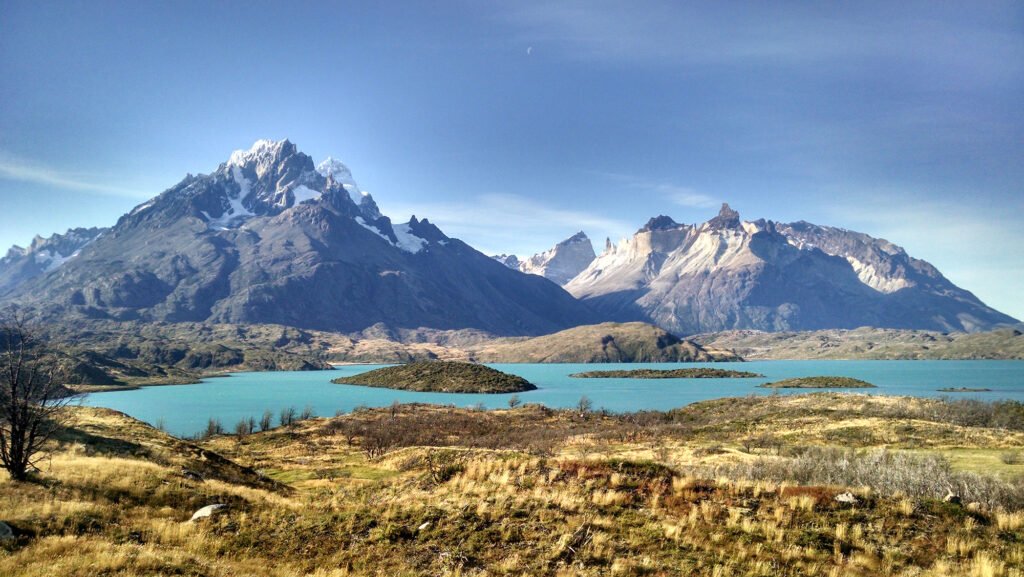
Food & Water for the W Trek
You will be able to buy food and drink at each of the refugios along the W Trek. However, this can get very expensive. We recommend that you try to be fully self-sufficient – and bring some extra cash to treat yourself on difficult days!
Food: You can stock up on food supplies from a supermarket in Puerto Natales, before departing to Torres del Paine National Park. Make sure to take a high-quality gas stove , gas canister, and mess kit .
Water: All campsites have access to fresh water sources to cook and refill your bottles. To avoid waterborne illness, we suggest that you use a water purification filter or water purification tablets before drinking this water.
5-Day Itinerary for Hiking the W Trek without a Guide
You will hike the W Trek one-way – meaning, it’s not a loop! You can choose to trek from either direction, east-to-west or west-to-easy. Each offers its own unique highlights:
- East-to-West: If you start from the east, your journey begins with a dramatic encounter with the famous Torres Del Paine, leaving you with diverse landscapes to explore.
- West-to-East: Opting for this direction allows you to save the magnificent towers for your grand finale while hiking through stunning valleys and forests.
The choice is yours, so customise your adventure to match your desires. The itinerary below is a sample 5-day itinerary for solo hiking the W Trek, from west-to-east. You can follow the plan below in reverse to do the trek from east-to-west, or make amendments to shorten or extend your total hike.
Please note that this itinerary provides an overview of the daily routes, but actual hiking times may vary based on your pace and trail conditions. Additionally, availability at refugios and campsites should be confirmed and booked in advance, especially during the peak trekking season. Enjoy your unforgettable journey through the stunning landscapes of Torres Del Paine!
Day 1 (Puerto Natales –> Refugio Grey)
- Total Kilometers: Approximately 11 km
- Estimated Time: 3-4 hours
- Start Point: Puerto Natales
- Finish Point: Grey
Begin your journey by catching the 7 am bus from Puerto Natales to Torres Del Paine National Park. This service will get you to the Leaving early will ensure you have enough time to hike and explore, without stressing about daylight.
Most buses that leave from Puerto Natales will stop:
- First at Laguna Amarga, where you get off if you plan on hiking the W Trek from east-to-west
- Second at Pudeto, where you get off if you plan on hiking the W Trek from west-to-east

Everyone will get off the bus at Laguna Amarga to show your entrance ticket for the park. You need to book your National Park permit online in advance. It is also advisable to download a copy of your ticket to your phone, as you are unlikely to have cell service in the park. If you are hiking the west-to-east route, you will then get back onto the bus to continue to Pudeto and Lake Pehoé.
When you get off the bus and Pudeto, stroll to the wharf. A catamaran service operated by Hipsur departs Pudeto for Paine Grande, transporting you for 30 minutes across Lake Pehoé to the start of your hike. The service departs at 9:30am, 10:30am, 4:15pm and 6:00pm over December to March. You should check their website for up-to-date operating times. The catamaran costs $25,000 pesos or $30 USD one-way, cash only. Tickets cannot be reserved in advance.
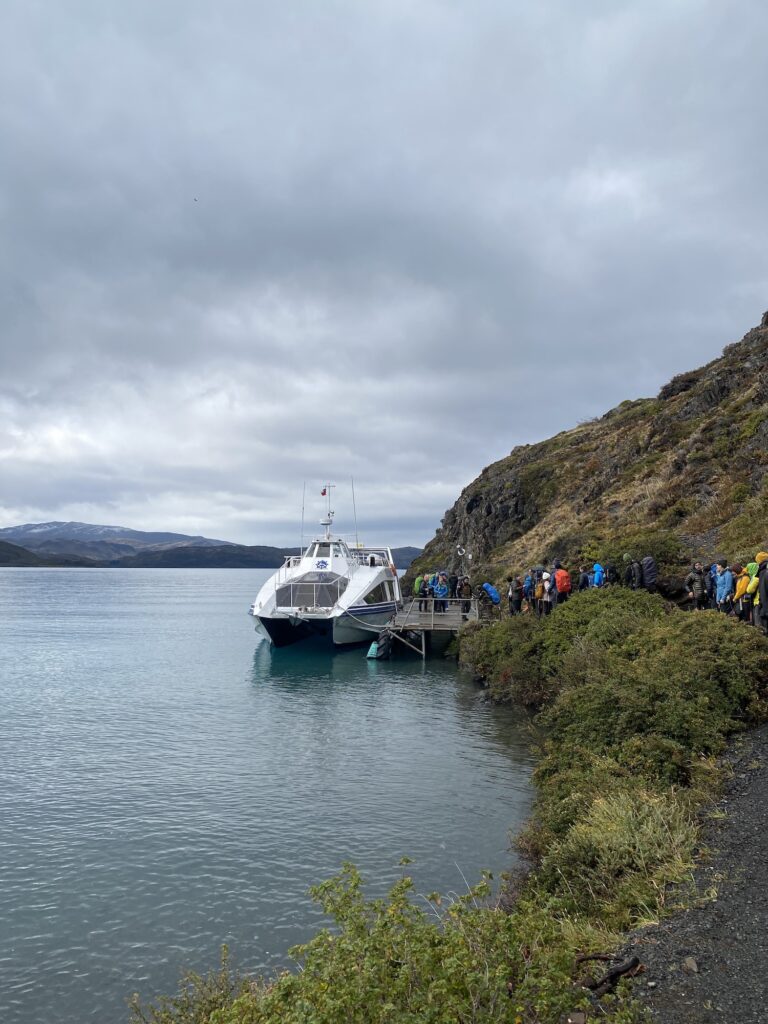
The hike to Grey Lodge is approximately 11 km and offers spectacular views of Lake Pehoé and the surrounding mountains. You’ll pass through enchanting forests and possibly catch a glimpse of local wildlife. Refugio Grey or Camping Grey is your destination for the night, offering stunning lakefront views. You should arrive in the early afternoon, so pitch your tent, meet some other hikers and cook dinner.
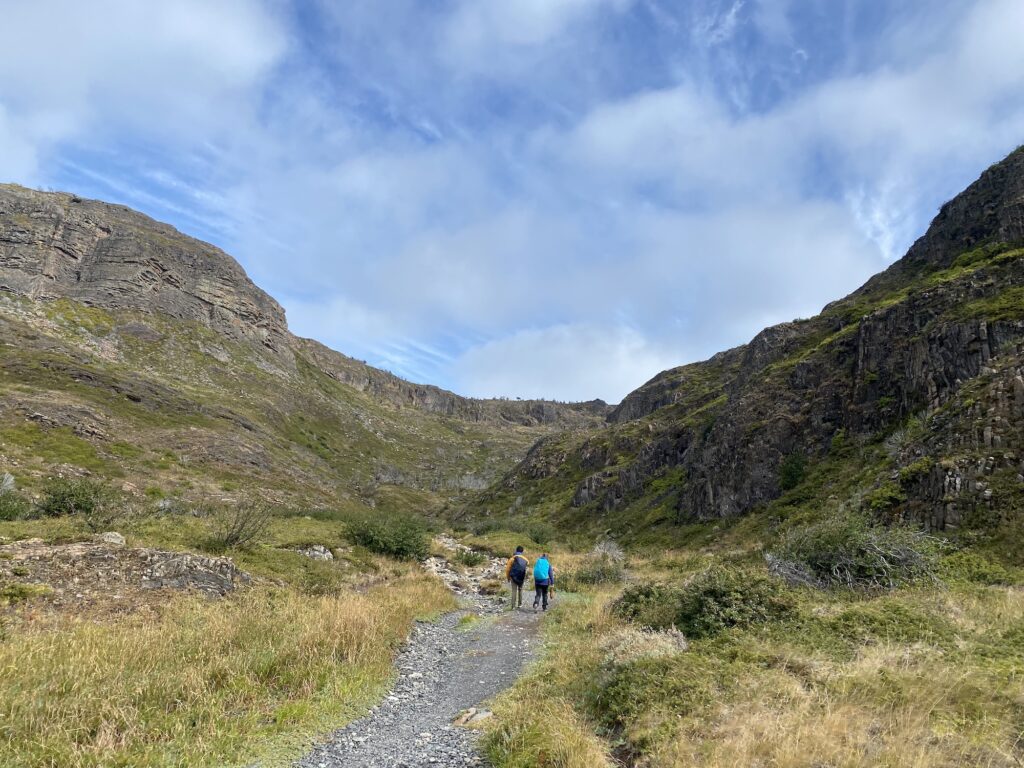
You can also choose to take an optional side trek, by continuing further north past the campsite. An extra 1 km through the forest will bring you to the snout of Grey Glacier, where you will have views of the enormous ice field. A further 2.5km along the path by the edge of the glacier will take you over a series of rope bridges with amazing views. This is about a 1hr round trip.
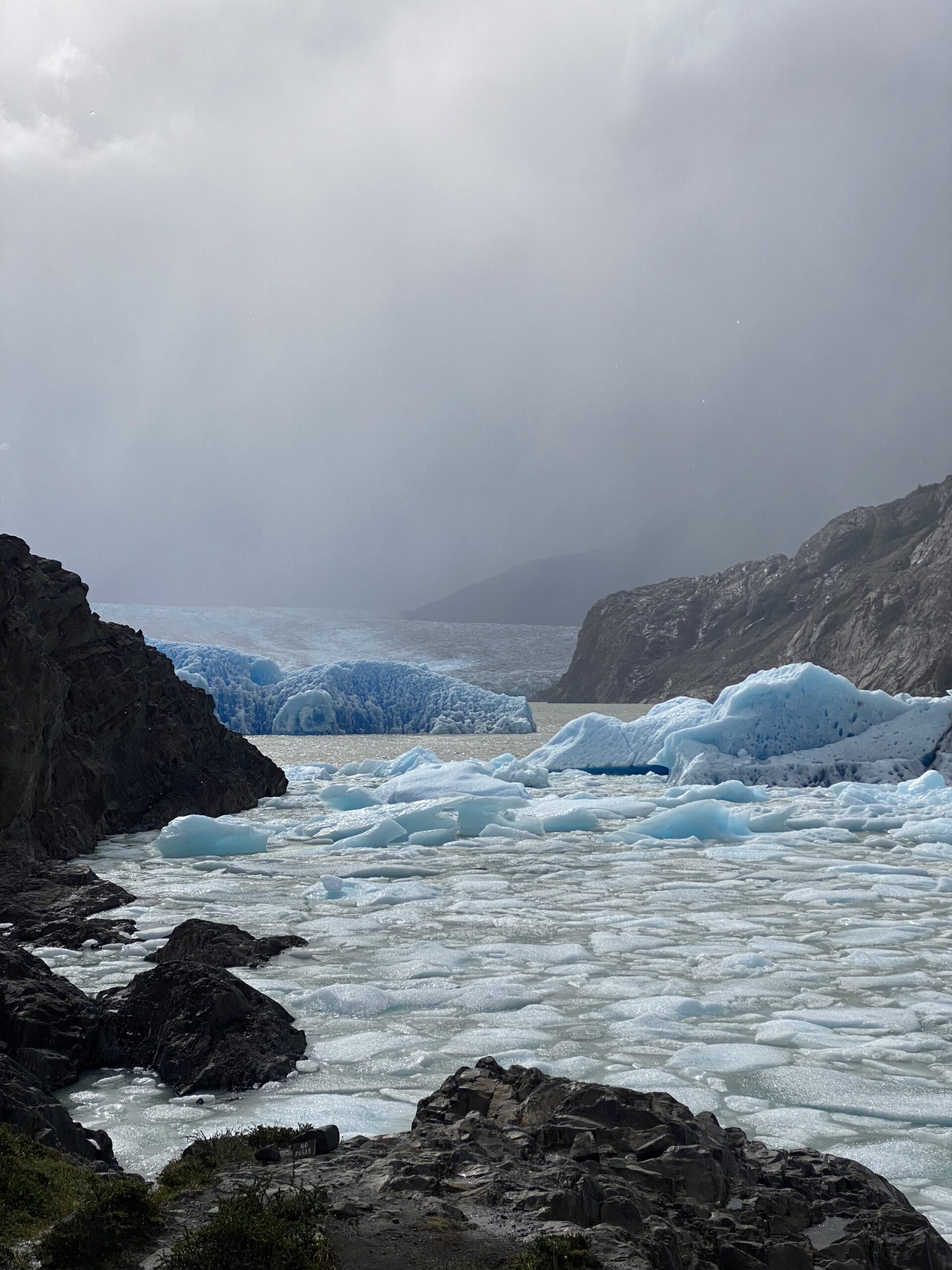
Day 2 (Grey –> Paine Grande)
- Start Point: Grey
- Finish Point: Paine Grande
Today, you’ll retrace your steps back to Paine Grande. The trail is mostly flat or downhill, making for a more relaxed walk. Along the way, you can choose to hike to the hanging bridges for an extra adventure.
Optional Add-On: Grey Glacier Ice Hike
One optional adventure you can undertake on the morning of Day 2 of the W Trek is an ice hike on Grey Glacier . Equipped with crampons and guided by experts, you can venture onto the glacier’s surface, exploring its captivating formations, deep blue crevasses, and surreal ice caves. This excursion provides an up-close encounter with the mesmerising world of glacial ice and a chance to witness the park’s natural wonders from a whole new perspective. It’s an unforgettable addition to your W Trek adventure for those seeking an extra dose of excitement and natural beauty.
Cost: The cost for the ice hike on Grey Glacier can vary, but it’s typically around $150 to $200 USD per person. This fee includes the necessary equipment such as crampons and the guidance of expert glacier guides.
Company: The ice hike on Grey Glacier is organised by Bigfoot Patagonia . This experienced tour provider ensures your safety and provides guidance throughout the excursion.
Duration: The ice hike adventure can take approximately 3 to 4 hours. This allows you to explore the glacier’s stunning features and take in the awe-inspiring surroundings.
Overnight Stay: To partake in the ice hike, it’s recommended to stay overnight at the Grey Lodge or campsite. This is because the ice hike usually takes place early in the morning to ensure the best ice conditions.
Adding the ice hike to your W Trek itinerary can be a memorable and thrilling way to connect with the glacial beauty of Torres Del Paine National Park.
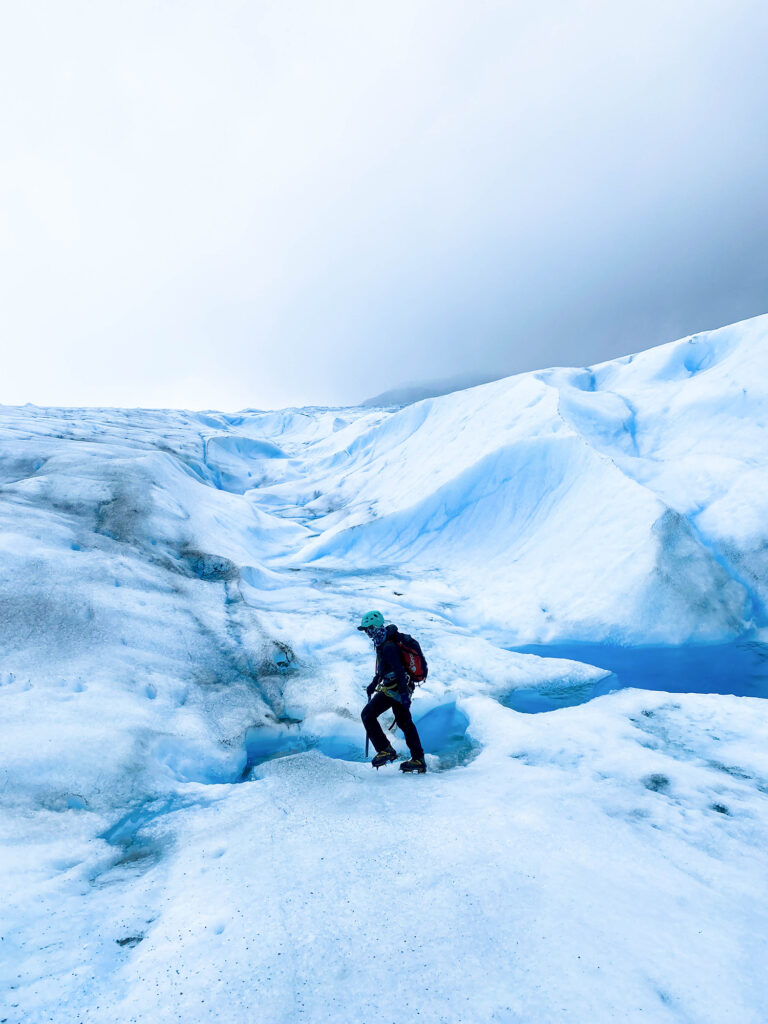
Day 3 (Paine Grande –> Francés/Los Cuernos)
- Total Kilometers: Approximately 21 km
- Estimated Time: 8-9 hours
- Start Point: Paine Grande
- Finish Point: Francés or Los Cuernos
This is a challenging day involving significant elevation gain, but it rewards you with some of the trek’s most stunning vistas. The trail takes you through valleys, along the shores of Lake Nordenskjöld to Guardería Italiano. You can leave your bags here with the ranger before hiking into the Francés Valley.
Hiking through the Francés Valley can vary greatly depending on the ever-changing Patagonian weather. This stretch of the hike marks the central segment of the W, and it’s a relentless uphill journey. After an hour of navigating steep and rocky terrain on a sometimes slippery trail, you’ll arrive at Mirador Francés, where you can catch sight of Glaciar Francés clinging to the western mountainside.
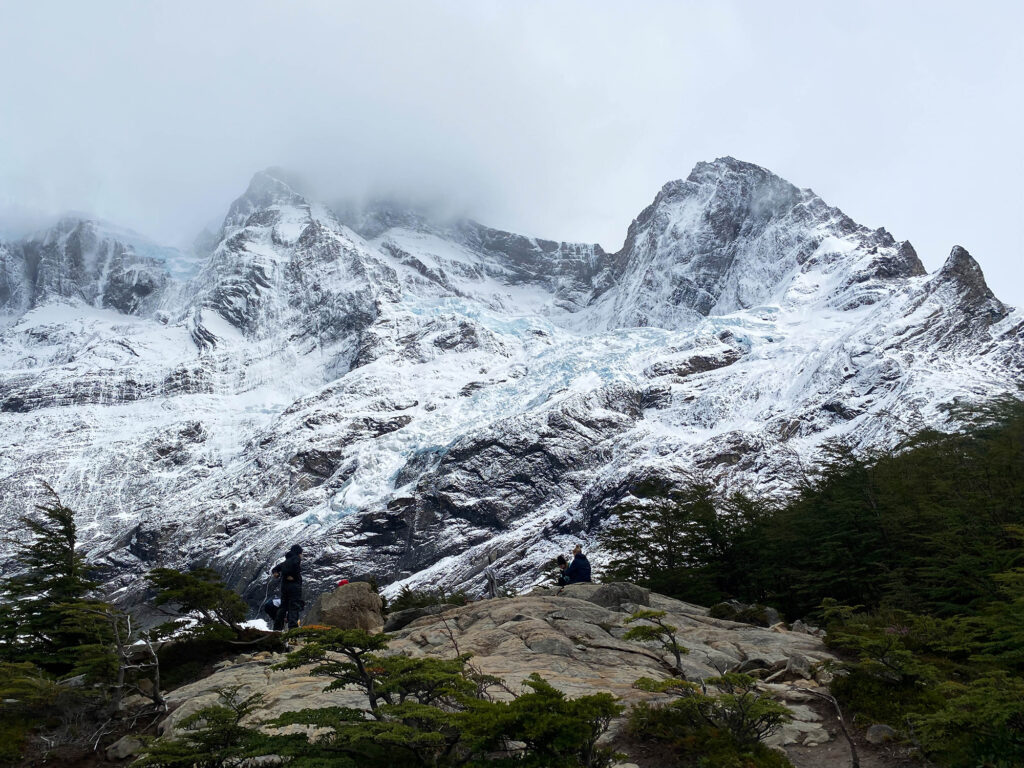
For those feeling especially adventurous and blessed with fair weather, there’s the option to continue ascending to Mirador Británico, adding an extra 3.5 kms each way, roughly three hours for the round trip. At Mirador Británico, you’ll be rewarded with panoramic views of a circle of jagged granite peaks, including the park’s second most famous landmark, the three-horned Cuernos del Paine. This spot ranks among the park’s most breathtaking viewpoints, particularly when the sky is clear. Keep a sharp eye out, as you might even spot the endangered Southern Andean huemul, a rare deer species, in this area.
Thankfully, the return journey is downhill as you make your way back to Campamento Italiano, where you can retrieve your backpack. Continue on for about 30 minutes to stay at Francés. If there is no availability at Francés, you can instead book to stay at Los Cuernos, which is a further 1 hour from Francés.

Day 4 (Francés/Los Cuernos –> El Chileno/Central)
- Total Kilometers: Approximately 15 km
- Estimated Time: 6-7 hours
- Start Point: Francés or Los Cuernos
- Finish Point: El Chileno or Central
The trail from Los Cuernos to El Chileno includes a steady elevation gain throughout the day. You’ll be treated to beautiful river and lake views along the way. As you approach El Chileno, you’ll be surrounded by lush Patagonian forests. Camping and refugio options are available for your overnight stay.

El Chileno is the ideal campsite for Day 4, as it is 4 kms from the Torres del Paine towers. This is important if you want to catch the sunrise at the viewpoint, so you don’t need to wake up so early! If you can’t get a booking at El Chileno, it is possible to hike from Central, but it is an additional 1hr and 45 minutes to reach the towers.
Day 5 (El Chileno/Central –> Torres del Paine –> Puerto Natales)
- Total Kilometers: Approximately 9 km (round trip to Mirador las Torres)
- Estimated Time: 5-6 hours (including time at the viewpoint)
- Start Point: Camping El Chileno or Refugio El Chileno
- Finish Point: Puerto Natales
Rise early to hike the trail to the famous Torres del Paine viewpoint. This is about 4km from El Chileno, meaning you should leave camp about 2hrs before dawn. If you are staying at Central, the hike is about 9km and you should leave camp about 4hrs before sunrise. Make sure you bring a head torch, as the rocky trail will be difficult in the dark. Expect the sun to rise around 7am – but be sure to check with the campground the night before your ascent.
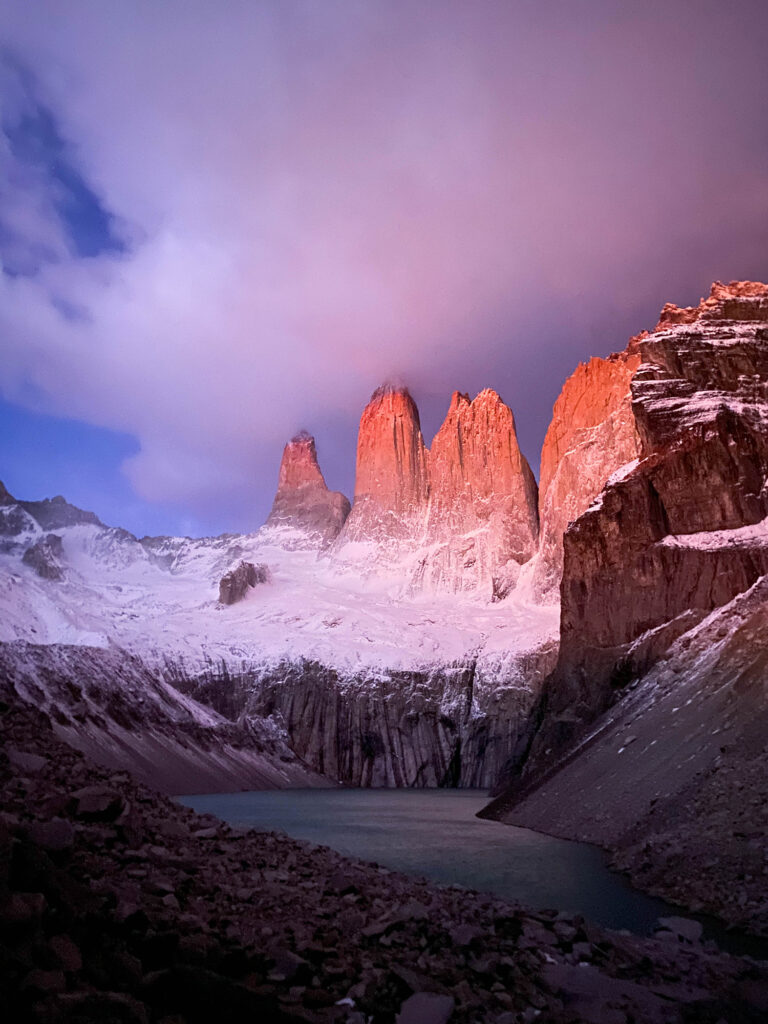
This challenging ascent is rewarded with breathtaking views of the iconic towers. After visiting the towers, descend to Hotel Las Torres. From here, you can take a shuttle bus back to Laguna Amarga for $3,000 pesos, cash only. This is where you get on a bus back to Puerto Natales, completing your W Trek adventure.
How Much Does it Cost to Hike the W Trek Without a Guide?
Before embarking on the W Trek in Torres Del Paine, it’s essential to have a clear understanding of the costs involved. This detailed cost breakdown will help you budget for your adventure effectively:
1. Park Entrance Fee – the park entrance fee for Torres Del Paine National Park varies depending on the season:
- High Season (November to March): Approximately $40 to $50 USD per person.
- Shoulder Season (Late October to early November, late March to early April): Around $20 to $30 USD per person.
- Low Season (April to September): Roughly $10 to $15 USD per person.
2. Transportation:
- Flights: The cost of flights to reach Teniente Julio Gallardo Airport (PNT) in Puerto Natales can vary widely based on your departure location. On average, round-trip flights from Santiago to PNT range from $150 to $300 USD.
- Buses: Bus tickets from Puerto Natales to the park entrance or various points within the park can cost approximately $20 to $50 USD round-trip. You can book tickets from the companies’ offices at the Puerto Natales bus station.
- Pudeto to Paine Grande Ferry: This ferry route is commonly used for the W Trek, and it crosses Lake Pehoé. The cost of the ferry ride can vary, but it was typically around $30 to $40 USD for a one-way ticket. The duration of the ferry ride is relatively short, approximately 30 minutes.
3. Accommodation:
- Camping: Camping fees at the park’s designated campsites typically range from $10 to $20 USD per person per night. These campsites are equipped with facilities such as bathrooms, showers, and cooking areas.
- Refugios: Staying in refugios offers more comfort but comes at a higher cost. The price per night in a refugio can vary between $60 and $150 USD per person, depending on the level of luxury and the time of year. This often includes meals.
- Self-Cooking: If you opt to prepare your meals, you can expect to spend approximately $10 to $20 USD per day on food. This estimate includes purchasing supplies in Puerto Natales before your trek.
- Meals at Refugios: Dining at refugios can be convenient, but it’s also more expensive. An average meal at a refugio restaurant can cost anywhere from $15 to $30 USD. Keep in mind that some refugio packages include meals.
5. Gear Rental:
- If you need to rent gear such as tents, sleeping bags, or hiking equipment, budget an additional $20 to $40 USD per day, depending on the items you require.
Please note that these cost estimates can vary based on individual preferences, the exchange rate, and any special promotions or discounts available at the time of booking. It’s advisable to check current prices and plan your budget accordingly to ensure a worry-free W Trek experience. Additionally, consider carrying some extra cash for unexpected expenses or emergencies during your journey.
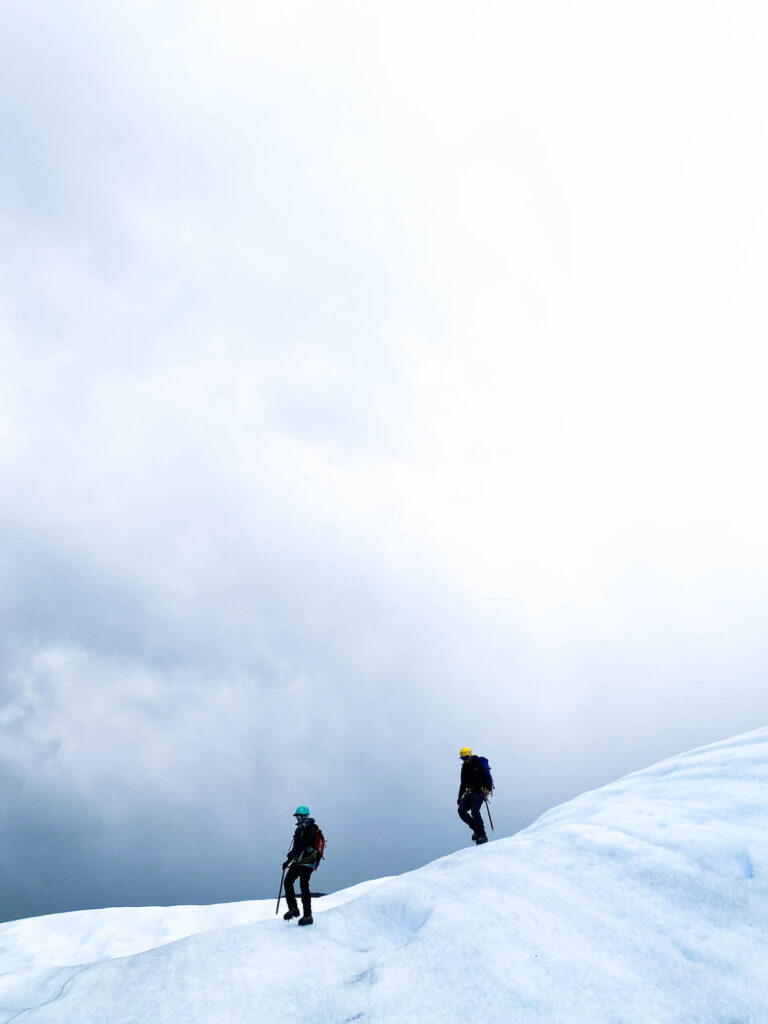
Hiking the W Trek Independently vs With a Guide
Deciding whether to embark on the W Trek independently or with a guide is a significant choice, and it largely depends on your preferences, experience, and what kind of adventure you seek. Below, we delve into the pros and cons of both options to assist you in making an informed decision:
Hiking Independently:
- Flexibility: Independence grants you the freedom to set your pace, choose your daily itinerary, and make spontaneous decisions along the way. You have full control over your adventure.
- Cost-Effective: Independent trekkers often find it more budget-friendly, especially when it comes to accommodations. You can opt for camping and self-cooked meals to save money.
- Personal Connection with Nature: Solitude in the wilderness can provide a deeper connection with the natural surroundings and a more profound sense of adventure.
- Adventure of Self-Reliance: Successfully navigating the W Trek independently can be immensely rewarding, boosting your self-confidence and outdoor skills.
- Logistical Challenges: Planning and booking accommodations, transportation, and permits can be time-consuming and occasionally frustrating, especially during peak seasons.
- Navigation: You must rely on your navigation skills and research to stay on the right path, which can be challenging in the ever-changing Patagonian weather.
- Safety Considerations: Solo travellers should be well-prepared for emergencies and have basic wilderness first aid knowledge.
Hiking the W Trek with a Guide
- Expert Guidance: Guides are experienced and knowledgeable about the trail, local wildlife, and weather patterns. They can enhance your understanding and appreciation of the environment.
- Safety Assurance: With a guide, you have a safety net. They can provide assistance in emergencies, navigation, and first aid.
- Group Camaraderie: Joining a guided tour allows you to meet like-minded adventurers and share the experience, making it a social and potentially less solitary journey.
- Simplified Logistics: Many logistical aspects, such as accommodations and permits, are often handled by the guiding company, reducing your planning burden.
- Cost: Guided tours can be more expensive due to the added services and expertise provided.
- Less Independence: Your schedule and daily activities are often predefined, leaving less room for spontaneity.
- Group Dynamics: Group tours may vary in size and composition, and you might not always have full control over the pace or itinerary.
In conclusion, the choice between hiking the W Trek independently or with a guide is a matter of personal preference and what aligns with your goals for the journey. Consider your budget, level of outdoor experience, desire for flexibility, and your comfort with navigating the trail. Both options offer unique advantages, and the W Trek promises an unforgettable adventure, regardless of the path you choose.

Trek Highlights and Scenic Spots
The W Trek in Torres Del Paine National Park is a visual symphony of natural wonders. Each leg of the journey unveils a new chapter in this captivating wilderness narrative. Here, we delve into the breathtaking highlights and scenic spots that await you:
1. Torres Del Paine – The Crown Jewels:
- Iconic Towers: No visit to Torres Del Paine is complete without witnessing the park’s namesake – the monumental Torres Del Paine. These three towering granite peaks, sculpted by the forces of nature, rise majestically against the Patagonian sky. The sight of the Torres, especially during sunrise or sunset, is a moment that etches itself into your memory forever.
2. Spectacular Valleys:
- French Valley (Valle del Francés): This emerald green valley enchants with its hanging glaciers, colossal rock faces, and panoramic vistas. Hiking through the French Valley feels like stepping into a postcard, surrounded by nature’s grandeur from every angle.
3. Lush Forests:
- Patagonian Wilderness: The W Trek meanders through pristine Patagonian forests, where moss-covered trees, vibrant lichens, and unique flora create a rich tapestry of greens. Walking amidst these ancient trees evokes a sense of timelessness.
4. Azure Lakes:
- Lago Pehoé and Lago Nordenskjöld: These crystal-clear lakes reflect the azure sky and surrounding peaks like mirrors. Their beauty is not only in the vibrant blue hues but also in the tranquility they offer. Pause by their shores and feel the serenity wash over you.
5. Glacier Grey:
- Glacial Majesty: Glacier Grey is a spectacle of ice and light. As you approach its shimmering blue face, you’ll be captivated by the sheer size and beauty of this ancient ice giant. The viewpoint offers an up-close encounter with one of Patagonia’s most remarkable glaciers.
6. Flora and Fauna Encounters:
- Wildlife: Keep a watchful eye for the diverse Patagonian wildlife. Guanacos, foxes, condors, and even the elusive puma inhabit these lands. Birdwatchers will be delighted by the variety of avian species that call this region home.
7. Mirador Cuernos:
- Cuernos Lookout: This viewpoint provides a mesmerising panorama of the iconic Cuernos del Paine, the horn-like peaks that define the landscape. It’s a place to pause, take in the surroundings, and appreciate the rugged beauty of Patagonia.
8. Southern Patagonian Ice Field:
- Distant Giants: While not part of the W Trek itself, the view of the Southern Patagonian Ice Field from certain points along the trail is awe-inspiring. Witness this vast expanse of ice, where countless glaciers originate, and feel the enormity of the natural forces at play.
The W Trek is a mesmerising journey through a pristine wilderness that will leave you humbled by nature’s artistry. Each of these highlights adds a unique stroke to the masterpiece that is Torres Del Paine National Park. Whether you’re an avid photographer, a nature enthusiast, or simply seeking serenity in the wild, the W Trek has something extraordinary to offer at every turn.
Booking the W Trek and Practical Information
Embarking on the W Trek adventure requires meticulous planning, from securing permits to arranging transportation. Here, we delve into the practical details you need to know to ensure a seamless journey through Torres Del Paine National Park:
1. Permits and Excursions:
- Booking Your Trek: The W Trek is in high demand, especially during the peak season (November to March). You must secure your accommodations and camping permits in advance. Remember that the campsites and refugios are operated by two different companies, Vertice and Fantastico Sur. Each has its own booking system, so it’s crucial to book dates that align with your itinerary. Start the booking process as early as possible, as securing the exact dates you need can be challenging.
- Excursions: If you’re interested in guided excursions or activities within the park, such as glacier hikes or boat trips, it’s advisable to book these in advance as well. This ensures you don’t miss out on the experiences that enhance your W Trek adventure.
2. Timetables for Buses and Park Entrance Tickets:
- Getting to Puerto Natales: To reach the starting point of the W Trek, you’ll likely fly into Santiago and then take a flight to Teniente Julio Gallardo Airport (PNT) in Puerto Natales. A 10-minute taxi ride will transport you from the airport to the downtown area, where most accommodations are situated. It’s recommended to spend a night in Puerto Natales to stock up on supplies before heading to the national park.
- Buses to the Park: From Puerto Natales, you’ll need to take a bus to Torres Del Paine. Various bus companies, such as Buses Fernandez, operate this route. Ensure you purchase your bus tickets in advance, particularly if you plan to catch an early morning departure. Timetables can vary, so check the schedules well in advance to align them with your trekking itinerary.
- Park Entrance Tickets: You’ll need to pay an entrance fee to access Torres Del Paine National Park. These tickets can be purchased at the park entrance or online. Having your entrance tickets ready in advance will save you time and streamline the process when you arrive.
3. Equipment and Supplies:
- Gear Checklist: Ensure you have all the necessary gear for your trek, including camping equipment, clothing layers, hiking boots, and more. Refer to the packing essentials section for a comprehensive checklist to make sure you’re well-prepared.
4. Safety and Emergency Contacts:
- Emergency Preparedness: While the W Trek is a stunning adventure, it’s essential to prioritise safety. Familiarise yourself with emergency contacts and park regulations before setting out. Have a plan for communication and emergency situations.
5. Accommodation Flexibility:
- Last-Minute Options: While booking accommodations in advance is wise, some refugios may have last-minute availability for hikers. Keep this in mind if your plans are flexible, but don’t rely on it entirely, especially during peak seasons.
Navigating the logistics of the W Trek ensures that your adventure unfolds smoothly, allowing you to focus on the awe-inspiring landscapes and experiences that await you. By planning ahead, you’ll maximise your enjoyment and make the most of your journey through the pristine wilderness of Torres Del Paine.
In conclusion, embarking on a solo adventure along the W Trek in Torres Del Paine, Chile, is a remarkable experience that will leave you with memories to last a lifetime. By planning carefully, packing smartly, and embracing the breathtaking beauty of Patagonia, you’ll embark on an unforgettable journey that showcases the very best of nature’s wonders.
To hike the W in Torres del Paine, plan your itinerary, book accommodations, and obtain permits in advance. Start from either the east or west side, following well-marked trails and taking in the breathtaking landscapes along the way.
Yes, you can definitely hike the W Trek without a guide. Many solo hikers and groups explore the trail independently. The trail is well marked and sign-posted the whole route. Just be sure to plan and prepare well, including booking accommodations and permits in advance. If you are new to hiking and camping, consider hiking the W Trek with a guide or group.
No. Camping in Torres del Paine is restricted to designated campgrounds. This means there is no free camping. The purpose is to minimise the environmental impact and reduce the risk of fires, which have previously ravaged significant portions of the park, covering approximately 17,000 hectares (41,000 acres) or 7% of its total area.
The duration of the W Trek can vary depending on your pace and itinerary. On average, hikers complete the W circuit in 4 to 6 days. It’s a flexible trek that allows you to choose your route and pace.
While it’s technically possible to complete the W Trek in 4 days, it would be a very strenuous and rushed experience. Most hikers opt for a 5-day itinerary to fully enjoy the trek and its stunning landscapes. A 4-day trek would require covering significant distances each day.
The difficulty of the W Trek varies, but it’s generally considered a moderate hike. It involves steep ascents and descents, variable weather conditions, and covering significant distances. Being physically prepared and having the right gear is essential.
To start the W Trek, you’ll typically fly to Santiago, then catch a flight to Puerto Natales, the gateway to Torres Del Paine National Park. Spend a night in Puerto Natales to stock up on supplies before heading to the park.
Charging facilities are available at some refugios and campsites along the W Trek, but they may be limited. It’s advisable to bring a portable power bank to ensure you can keep your devices charged throughout the trek.
The best months to hike Torres del Paine are during the shoulder seasons of late October to early November and late March to early April. These periods offer milder weather and fewer crowds. However, if you prefer vibrant spring or summer landscapes, consider the peak season from November to March.
Absolutely! The W Trek is worth it for its stunning natural beauty, iconic landmarks like Torres Del Paine, and the sense of adventure it offers. It’s a memorable experience for nature enthusiasts and hikers.
Yes, you can find water sources along the W Trek route. It’s essential to bring a water purification filter or water purification tablets to ensure the water is safe to drink from streams and rivers.
For the W Trek, it’s essential to bring lightweight, high-energy, and non-perishable foods. Consider items like energy bars, nuts, dried fruits, instant oats, pasta, dehydrated meals, and freeze-dried options. Make sure to pack foods that are easy to prepare on camping stoves and provide the necessary nutrition for your journey. Additionally, you can purchase some supplies at refugios along the trail if needed.
While some places in Torres del Paine accept credit cards, it’s advisable to carry some cash. Cash can be useful in case you encounter places that don’t have card payment facilities, or when reception in the park is not working. You will also need cash for the boat from Pudeto to Paine Grande.
Yes. There are well-maintained toilets at each campsite along the W Trek.
Torres del Paine can be relatively expensive due to park entrance fees, accommodation costs (especially in refugios), and dining options. However, there are ways to manage costs, such as camping and preparing your own meals if you’re on a budget.
Some of the best parts of the W Trek include witnessing the iconic Torres Del Paine towers, exploring spectacular valleys, hiking through lush forests, and marveling at crystal-clear lakes that dot the landscape.

Lucas is a travel writer with deep experience exploring South America. He enjoys hiking through mountain ranges, cycling across deserts and paddling down rivers.
Best Food in Puerto Natales: 17 Top Restaurants & Cafes
Backpacking packing list: what to pack for a backpacking trip in 2024, get our best tips direct to your inbox.

The Definitive Guide for the Torres del Paine W Trek, Patagonia
This post contains product affiliate links. These are mainly on items/hotels/tours that I personally endorse & love. I may earn a small commission if you make a purchase, but at no extra cost to you.
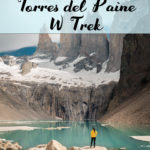
Are you looking at doing the epic Torres del Paine W Trek? From whether to go on a tour to which route to take, this is my guide to the W Trek in Patagonia!
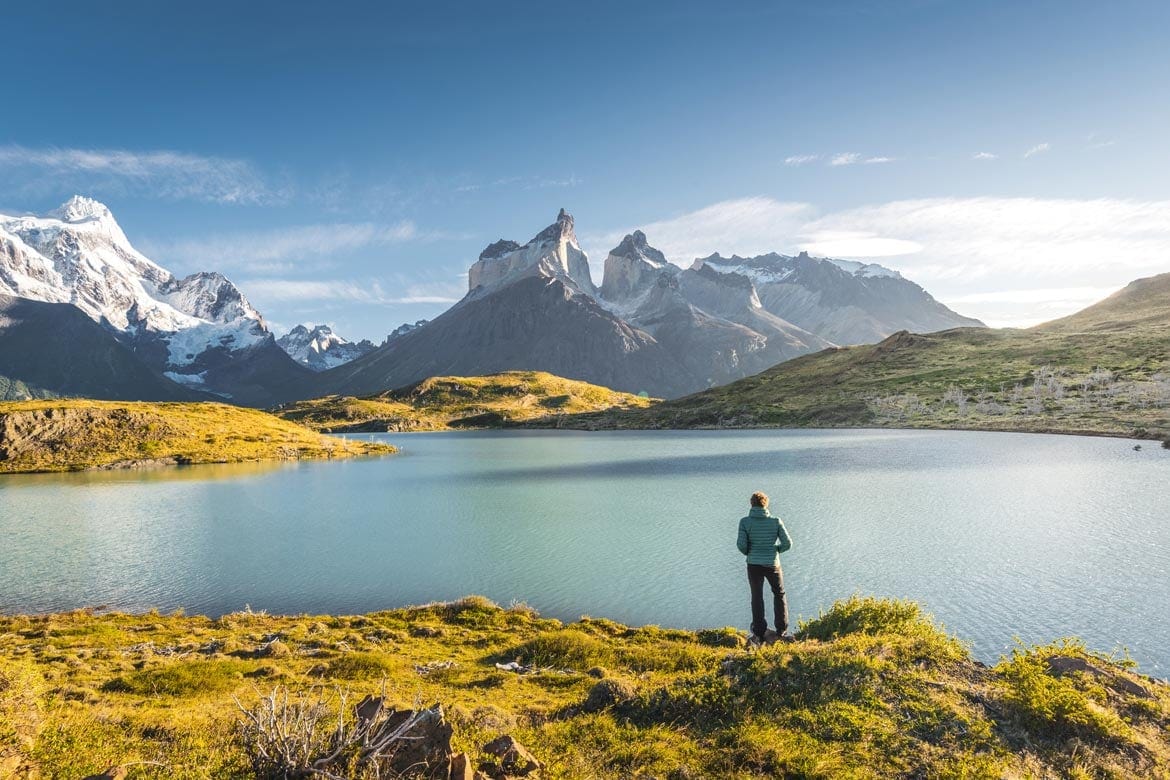
Patagonia. A place that many people dream of going. If hiking and exploring new parts of the world is something that you enjoy, it’s a good bet Patagonia is already near the top of your list of places to visit.
With its incredible vast mountain ranges, stunning blue glaciers and beautiful forests, what’s not to love? That’s what makes the Torrest del Paine W Trek arguably the best trek in the world. In this post I’ll tell you why!
Patagonia is massive, so visiting with a tour or guide is recommended to get the most out of your trip. It spans 1 million square miles across both Argentina and Chile . Surprisingly (or not considering its rugged landscape), Patagonia is home to less than 2 million people. That means you’ve got a lot of space all to yourself.
So, if you’re thinking of taking on the Torres del Paine trek then this is the post for you. In this post I go into hiking on a tour vs self-guided, which route to take, and loads of other practical information too. It’s time for your adventure to begin here!
Are you planning on hiking more of Chile? Then check out my guides to hiking Volcano Villarrica , Parque Nacional la Campana and the Atacama Desert too.
Chilean Patagonia
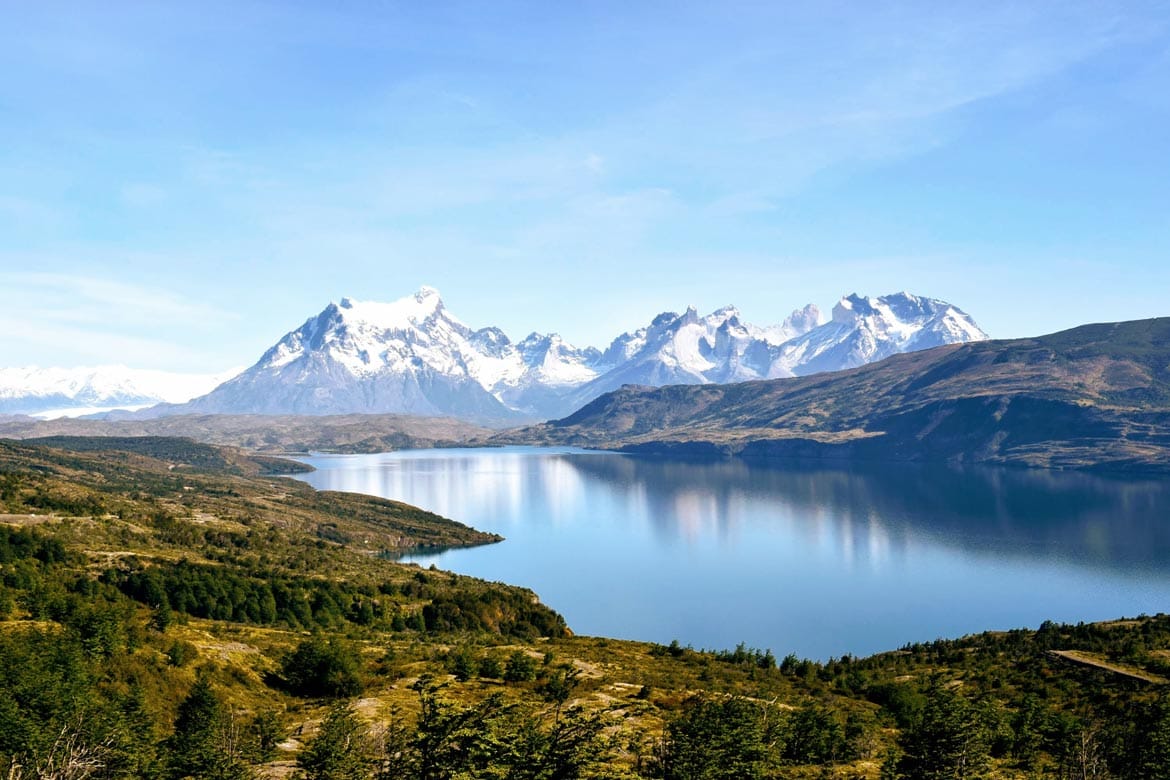
Visiting the Chilean side of Patagonia is a great option for a few reasons. First, it is more isolated than Argentina, so you can expect to see fewer visitors. Second, the Torres del Paine National Park is one of the most iconic parts throughout all of Patagonia. Lastly, the wildlife within Torres del Paine is very diverse and you’ll be able to see a wide range of animals along with your hike.
A little information about the Torres del Paine National Park: It is one of Chile’s largest parks, measuring at 598,593 acres of wilderness. Its grasslands provide safety and shelter for a variety of animals including, pumas, guanacos, condors, Huemul deer, foxes, and even swans. If you’re interested in wildlife then check out this guide on the animals of Patagonia . Seeing all these animals is one of the best things about visiting Patagonia, and you really do see them all!
Many of these animals can be spotted while on daily walking tours and multi-day hikes. Some animals, like the puma and Huemul deer, require a multi-day wildlife tour with a devoted guide to help you spot them. But keep an eye out, you might be able to spot some of these while visiting the park.
Hikes in Torres del Paine National Park
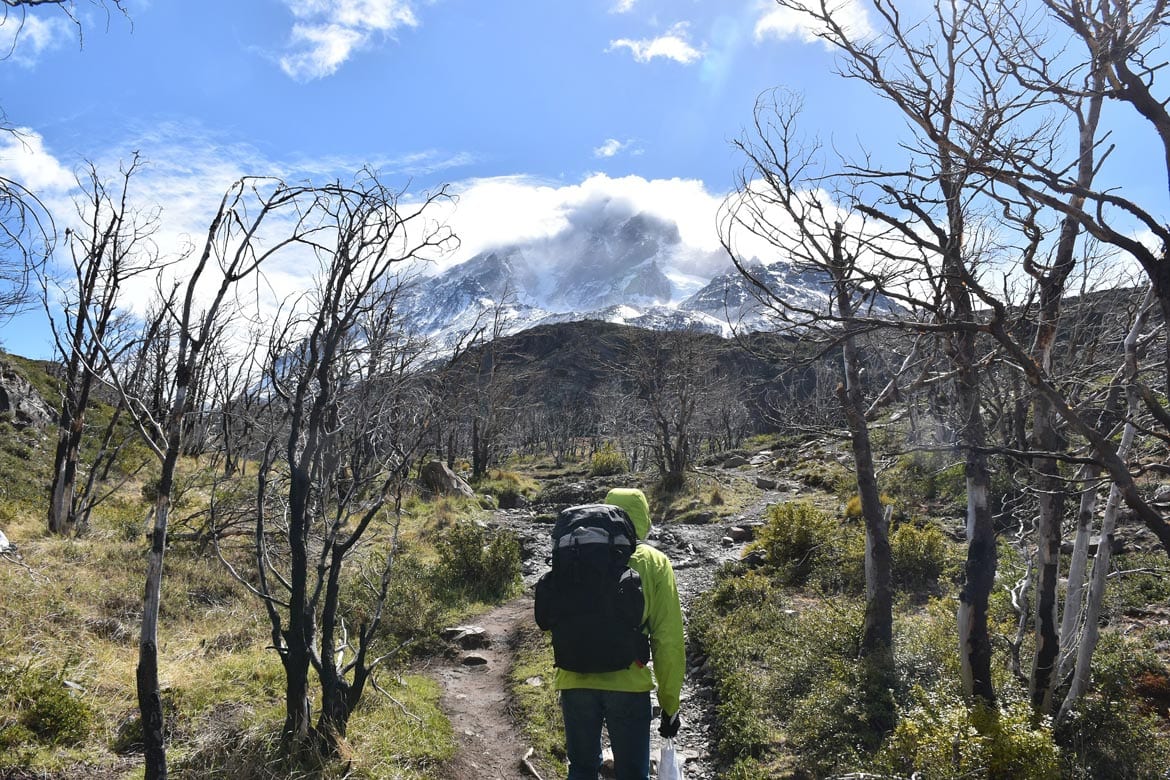
Throughout Torres del Paine National Park, there are numerous multi-day and day hikes for every hiker’s interests. One of the most famous multi-day hikes within the park is the W Trek in Patagonia.
It was given its name because the trail resembles a capital “W”. This 50 miles (80 km) trail will allow you to see incredible rock formations everywhere you turn, beautiful alpine lakes, and of course, the gorgeous 3 Towers. The Torres del Paine W Trek allows you to see all of this in a relatively short amount of time.
In addition to the beautiful landscapes, you will (hopefully) be able to see a variety of wildlife throughout the park. Sound interesting? Continue reading to see how you too can complete this incredible hike.
Alternatively, if you’re looking for a much shorter trip, you can also go on some day hikes in Torres del Paine . Check out this blog post to see where some of the best day hikes are.
Tour vs self-guided for the W Trek?
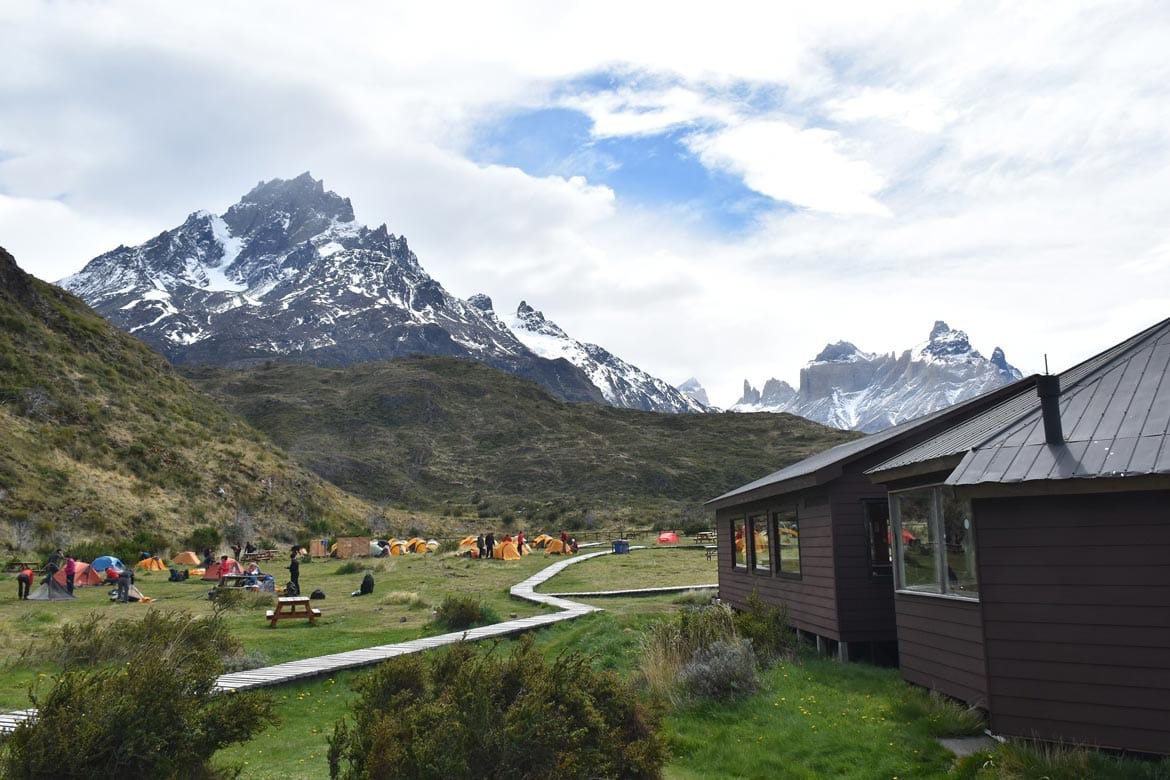
Unlike other famous hikes like the Inca Trail to Machu Picchu where you cannot hike without a guide, you don’t have to have a guide for the W Trek in Patagonia. Many experienced hikers decide to hike solo, which you absolutely can! However, for someone who isn’t as experienced with multi-day hikes, or Patagonia in general, it would be a good idea to reserve a tour for the W Trek. Plus, tours these days are pretty great!
Some of the advantages of having a tour guide are that they take care of everything for you. You won’t have to try and compete against other hikers for campsites and lodging along the way.
Instead of carrying around extra weight, like your sleeping bag, tent, food, and water, many Patagonia tour companies have the option to hire porters or offer them to carry your things for you. This is a great option for individuals who might not want to carry a 20 to 30-pound pack for multiple days.
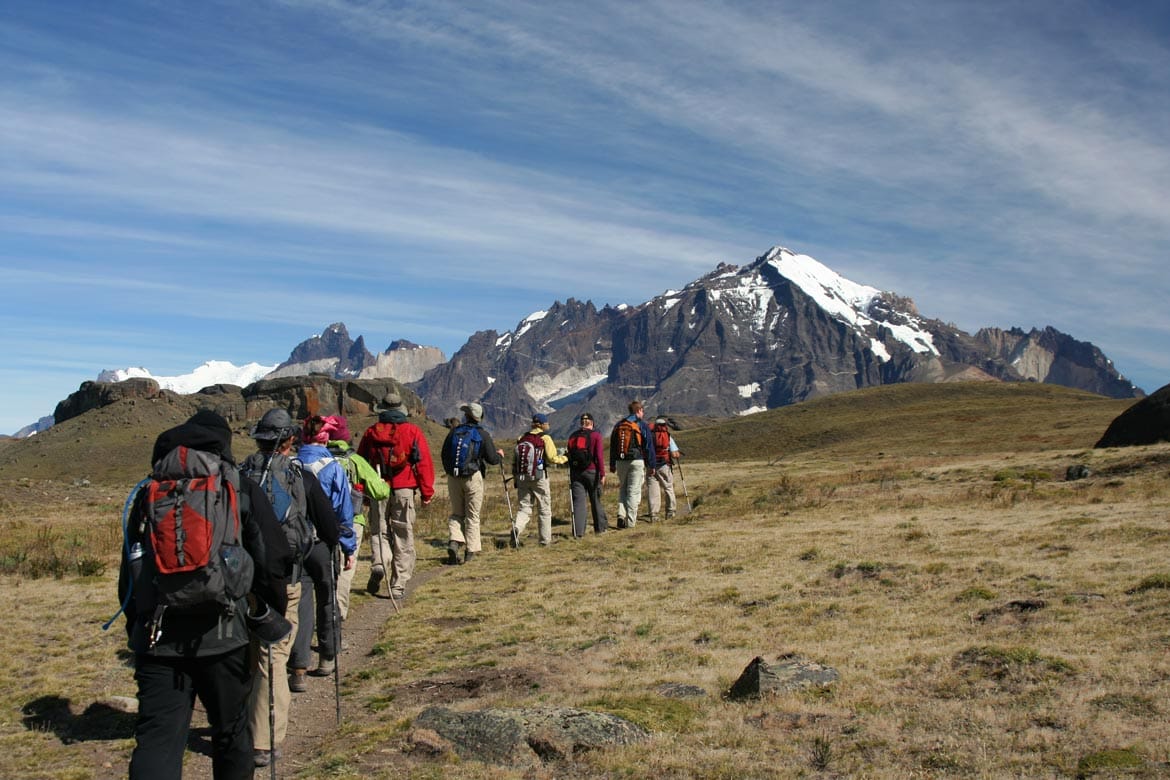
Another great thing about tours is that you can meet new people! Depending on your tour size, you will most likely be meeting and hiking with new people from around the world. This is a great time to start some new friendships, and how cool is it that you’ll be able to say that you made a friend while in Patagonia?
Overall, tours are a great option when deciding to hike the Torres del Paine W Trek. You’ll be able to have your accommodations taken care of, and all you’ll have to do is hike!
If you’re looking for your own separate accommodation on a self-guided tour then check out these stunning places to stay in Torres del Paine National Park .
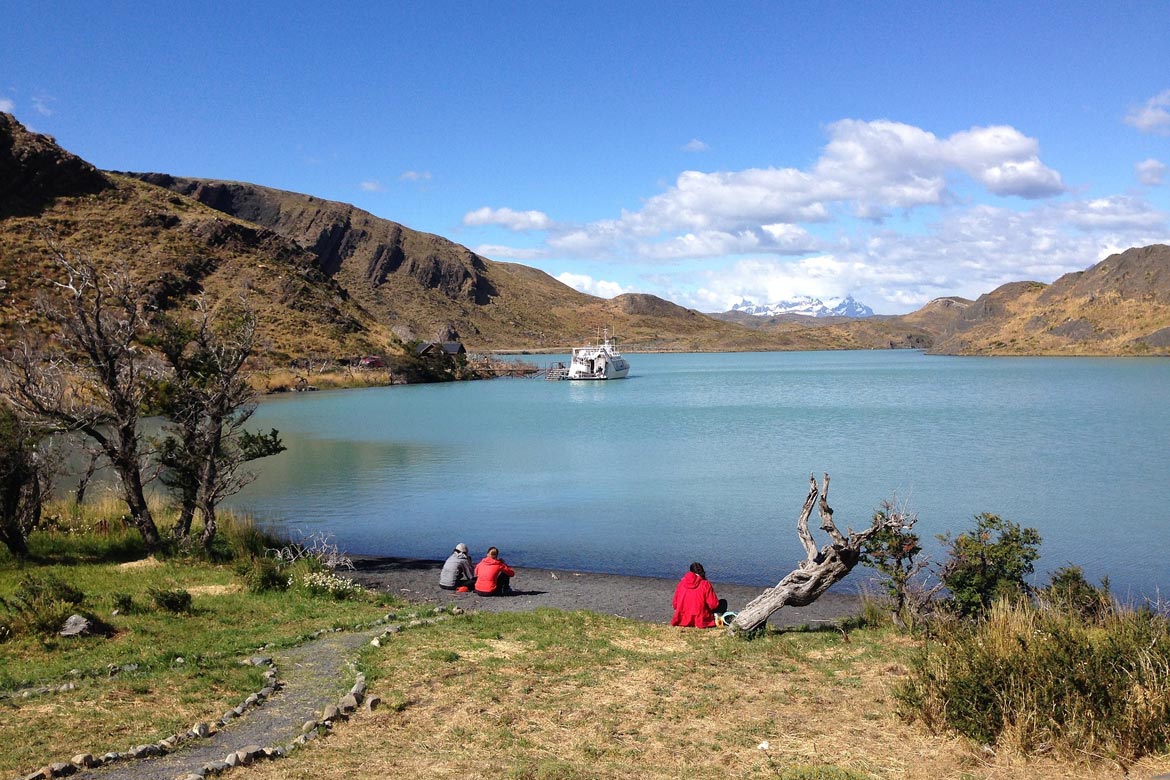
Unsure which W Trek tour is the right fit for you? Here are some of our favorite:
Torres del Paine W Trek – Self Guided – World Expeditions
This 8-day self-guided tour will let you experience the Torres del Paine Trek, and provide you a day to rest the day before and after hiking. Accommodations will range between Refugios and campsites depending on the night. This tour does not provide porters, you will need to carry your own pack the entire hike.
Trekking Torres Del Paine “W” Circuit – 5 days – Say Hueque
This shorter 5-day guide is great for someone who would like more time to explore other parts of Patagonia. You’ll still be able to hike all of the W Trek and see the iconic Three Towers. All accommodations are made at Refugios so you can relax after a day of trekking. Note that this tour does not include the National Park Entrance fee. Prices to enter range depending on the season. Make sure you check the current price before going as well as withdraw money. The park doesn’t have any ATM’s within it (obviously), so it is crucial that you have money before going.
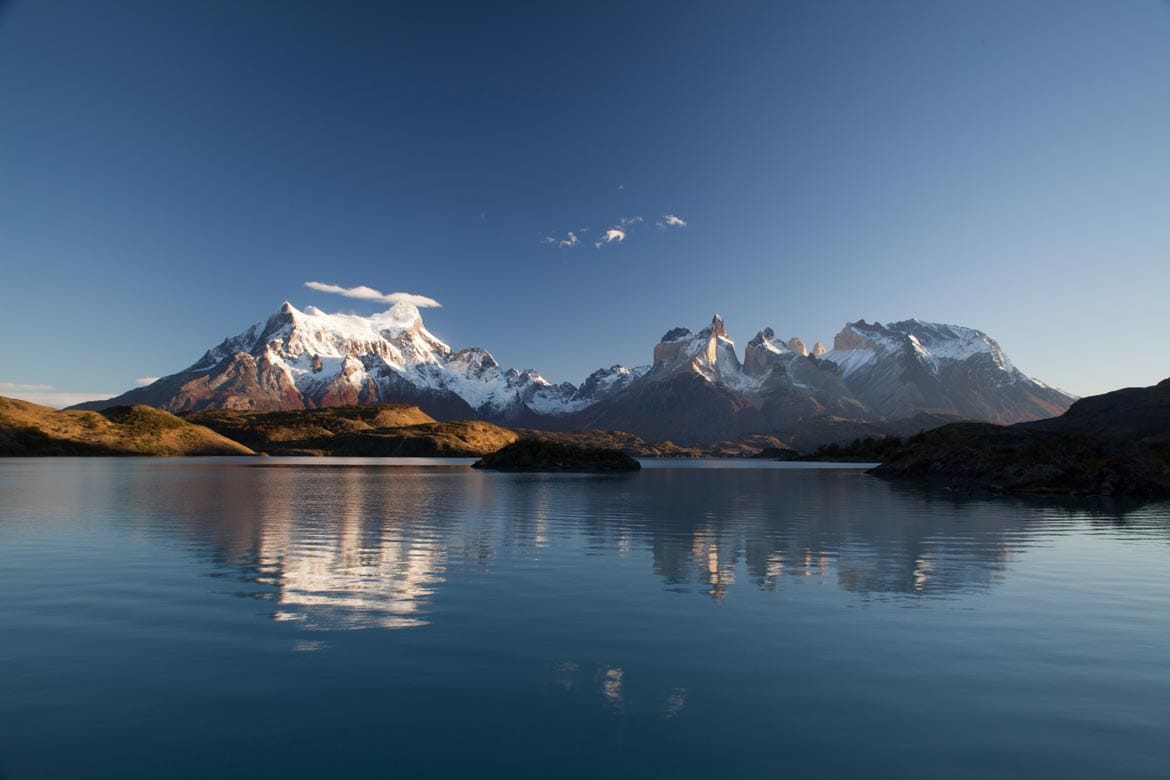
Torres del Paine W Trek – G Adventures
This quick 6-day guide will let you experience the Torres del Paine trek as well as give you the opportunity to visit other parts of Patagonia if you wish. You’ll spend 4 days hiking the W Trek, with a day to rest before and after. You will have a mix between Reguigos and campsites along your way.
Patagonia Trekking – Intrepid Travel
This 10-day tour is great for those who want to visit both the Argentina and Chile side of Patagonia. You’ll be hiking the famous W Trek on days 3 through 6 of the tour. After completing the W Trek, you’ll have the chance to visit El Calafate and Perito Moreno Glacier on days 7 and 8. To finish off your great 10-day tour, you’ll fly to Buenos Aires and explore sites like Plaza de Mayo, San Telmo neighborhood, and the Recoleta cemetery.
Getting to Patagonia?
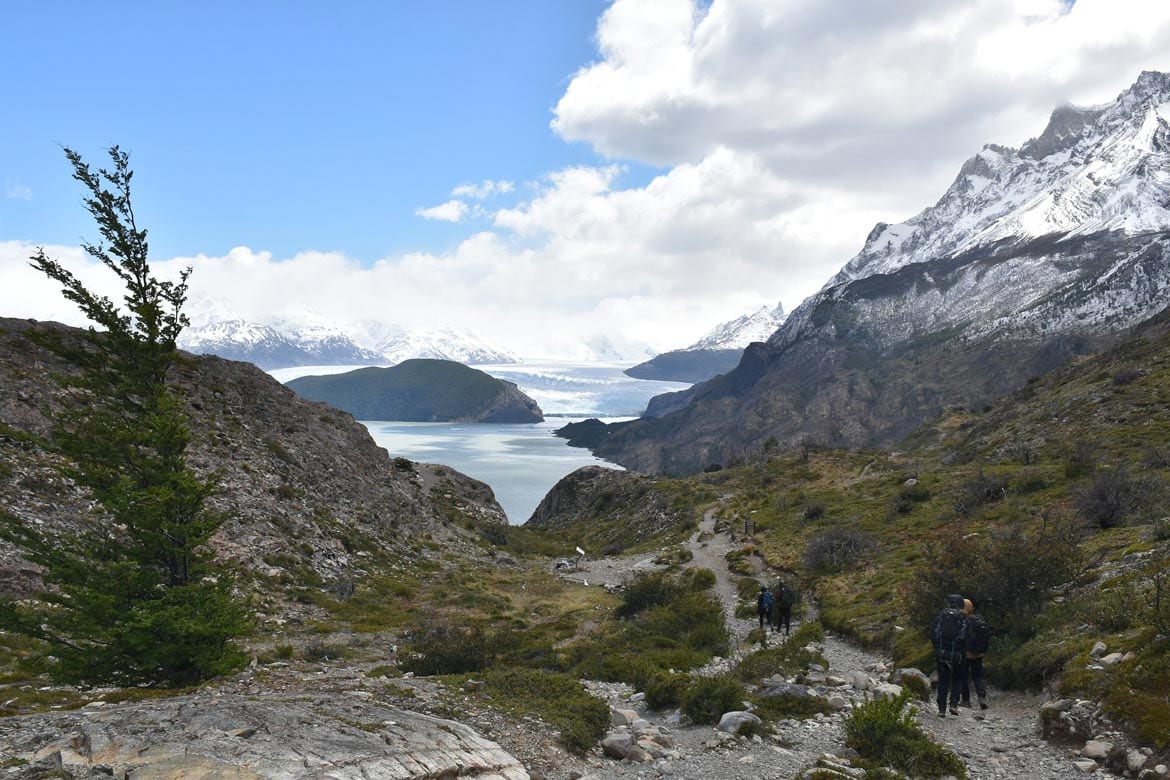
Getting to Patagonia can take a long time for a majority of travelers. Depending on where you are traveling from, you will most likely need to stop two to three times on the way there and back.
No matter where you are coming from, you will most likely be stopping in Santiago . If time and money permits, it would be a good idea to spend a day or two in the city either before or after your hike. Santiago has plenty of great things to see, including, La Moneda Palace, visit the Museo Chileno de Arte Precolombino to see ancient art, and the Plaza de Armas. There are also multiple day trips from Santiago, including Valparaiso and Cajon del Maipo.
Depending on your tour company, you will need to take an additional flight from Santiago to either Punta Arenas airport or the airport in Puerto Natales. Your tour operator will inform you about which airport they will be picking you up from and transporting you to the start of the hike.
What to expect on the Torres del Paine W Trek
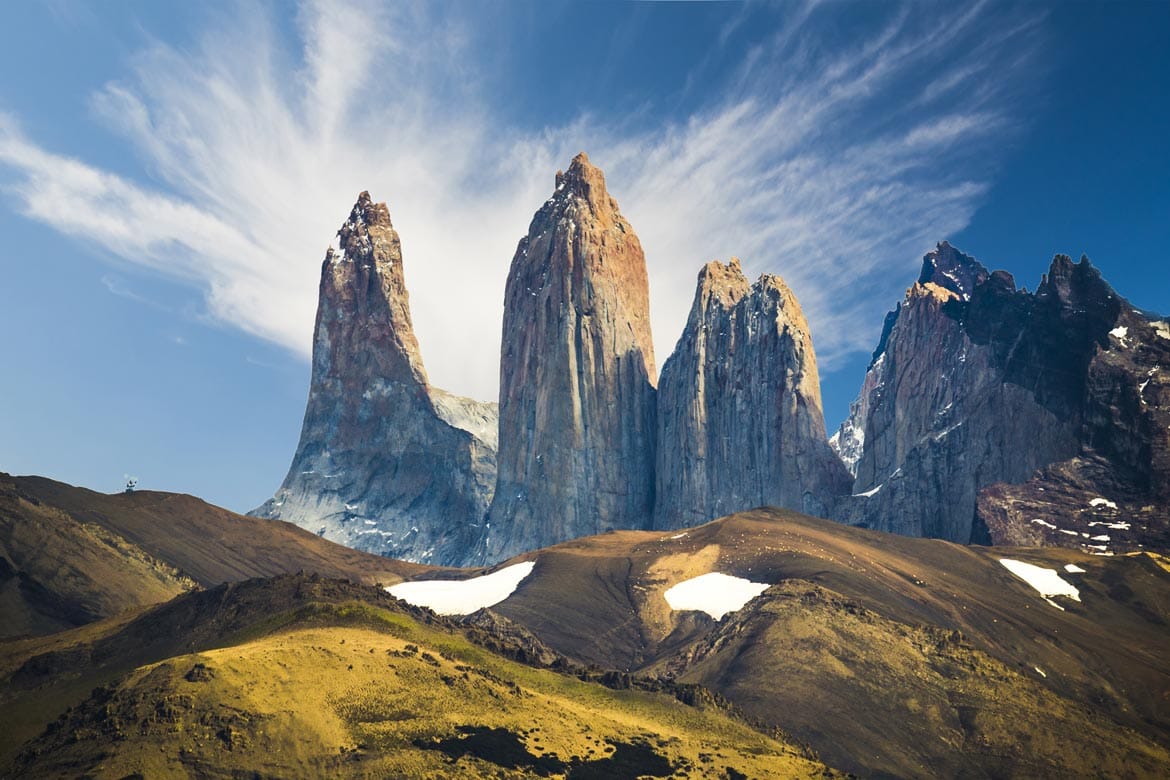
Depending on the tour that you choose will determine how many days you will be spending on the W Trek. For those who would like to take things a little slower, completing the hike in five to six days is a good option. You’ll be hiking fewer miles each day over the period of multiple days.
If you would like to complete the hike in a quick four days, you can expect to be hiking 12+ miles a day. No matter how many days you decide to hike the W Trek, you can still expect to see a wide range of wildlife, incredible glaciers, rock formations, and the 3 Towers.
The 3 Towers
The 3 Towers is a purely incredible rock formation that you will be reaching at the end of your hike on the W Trek Patagonia. Make sure you save enough battery on your camera so you can capture all the great shots when you get here. You’ll definitely want to brag about this one for years to come – it’s just one of those places!
Different routes/extensions to the W Trek
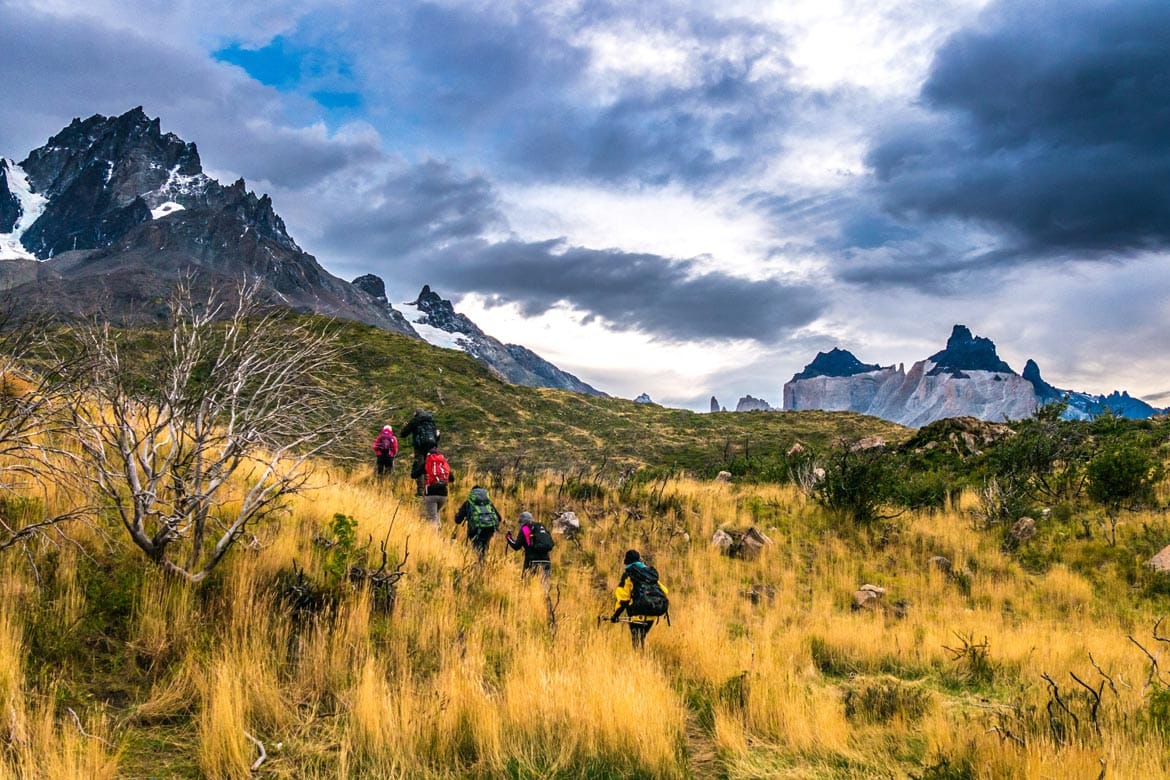
Do you want to extend your Torres del Paine Trek? Many devoted hikers chose to extend their hike to the O route. The O route is a very rigorous and strenuous hike, extending to 70 miles (112 km). This route generally takes around 8 days to complete. For a majority of hikers coming to Torres del Paine, they chose to only complete the W Trek. While the O Trek is part of the W Trek, you can expect fewer amounts of people to be on the O route of the trail.
Feeling extra ambitious? Take on the 9-day Q route! The Q route encompasses the W and O route while adding on an additional day in the beginning. While the W and O route reaches the iconic 3 Towers at the end of their hikes, you can expect to see this a few days into the Q trek. The Q trek finishes with astonishing views of Glacier Gray. A small number of hikers chose to add this additional part of the trek to their itineraries, so you can expect solitude while you hike.
Don’t fret if the Q trail seems too daunting and overwhelming. The Torres del Paine W Trek is still absolutely worth completing!
Things to know before you go:
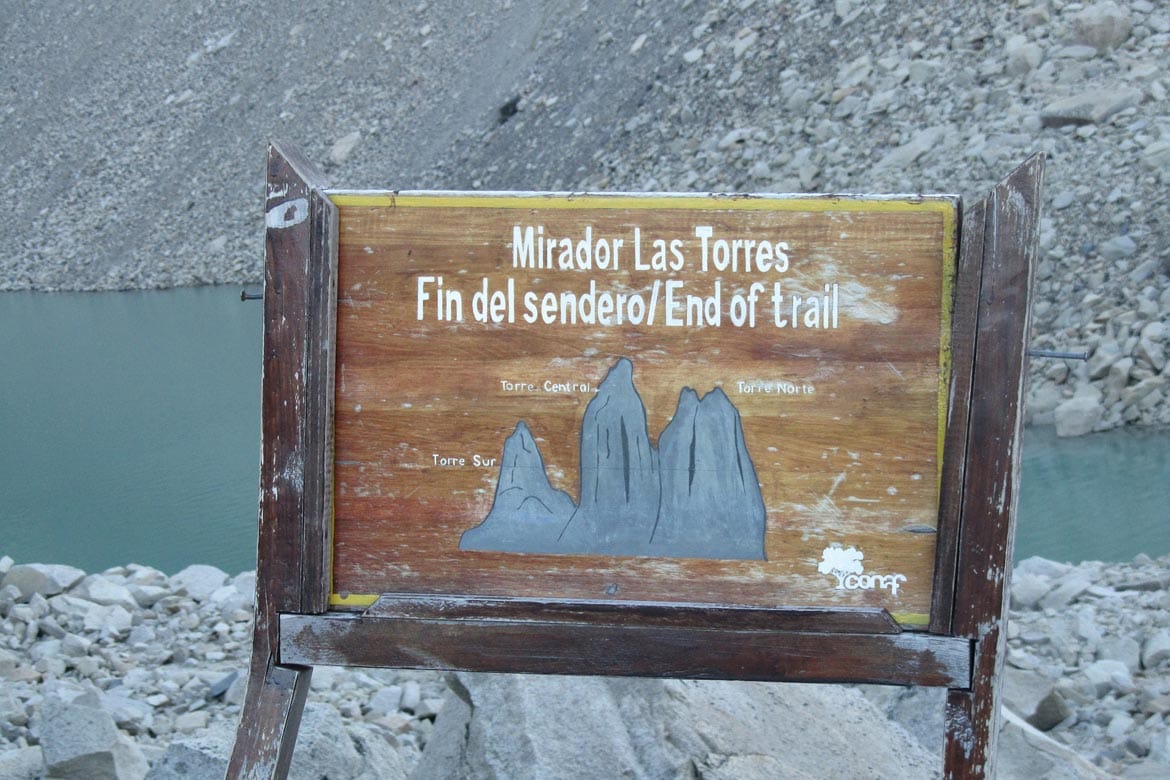
- When you arrive in Chile, you will be issued a PDI (tourism card). Do not throw it away! You will need the card to leave the country at the end of your hike, as well as you’ll need to show it at different campgrounds and lodges.
- You’ll want to reserve your tour well in advance, ideally, five to six months before you go. Although the park receives fewer visitors than other parks and places within Patagonia, it is growing in popularity. As a result, it is crucial that you reserve your tour in advance because spots fill up. The W trek doesn’t currently have a limitation on how many people can hike on the trail daily. However, if you are wanting to extend your hike to the O trek, they only allow 80 people a day on the trail so it is wise to plan for this.
- When is the best time to visit? There isn’t one exact month to visit that is better than others. Every season in Patagonia has its own advantages and disadvantages, and it’s up to each individual to decide their preferences Summertime months in the southern hemisphere are November to March. Temperatures are usually in the high 60’s (17-20 degrees Celsius) with the low in the 40s (6-8 Celsius). With warmer temperatures, you can expect a larger amount of people, and higher prices from November to March. Although there are generally more crowds during this time; if you enjoy engaging and meeting new people while hiking, this would be an optimal timeframe for your visit.Fall consists of the months March, April, May, and early June. The park remains full of crowds in March but dwindles out with the following months. You can expect the park to have an autumn feel to it with young wildlife exploring, and trees beginning to change colors. The high stays around the 40s to 50s (5-13 degrees Celsius), while the low drops significantly to the 20s (-3 to 3 degrees Celsius). For those who don’t mind the cold, this would be a great time to visit! Be aware that there is a high chance of snow in the later months. Winter make up the months from June to August. This is the most challenging time to visit the park, however, some tour companies like Cascada Expediciones provides a winter special to Torres del Paines National Park. You can expect the high to be in the low 40s (5-8 degrees Celsius) with the low in the 20s (-3 – 0 degrees Celsius). The weather during the winter months can be unpredictable with snowstorms and high winds. If you are planning on visiting Patagonia during this time, it is wise to do your research and come prepared.Spring goes from September through November and you can expect some colder weather during these months. The days still remain relatively warm, with temperatures in the high 50s (13-15 degrees Celsius) while the low drops down to 30s (3-7 degrees Celsius). If you don’t mind a little bit of chill in the air, this would be an excellent time to visit. As temperatures drop, so do prices. This makes the Torres del Paine an ideal time to visit for those on a budget, as well as people wanting to explore the park with fewer crowds.
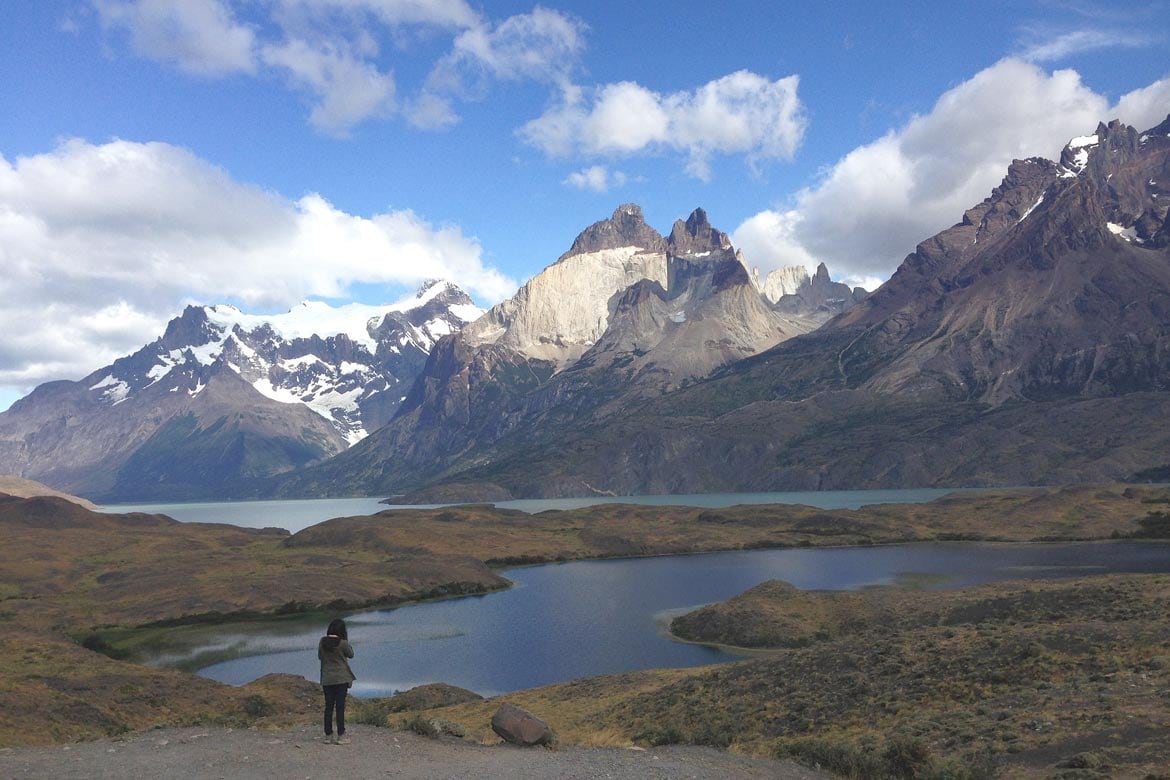
- Hiking the W trek? Or adding on the O or Q trail? You’ll want to get into shape! The W trek alone is 50miles (80 km) round trip. If you are planning on hiking the O or the Q trail, you’ll want to do some additional training. The best training for any of the Patagonia trails will be to go on multiple long hikes beforehand. In addition, using a treadmill or running outside, and stair climber machines are helpful.
- Mental stamina is also very important. You’ll be hiking 7+ miles a day for multiple days, and you’ll need to keep a good frame of mind to continue going.
- Buy good hiking boots! These are the ones I’ve got and always recommend to people. For any long hikes that you will be going on (not just in Patagonia) it is best to invest in some good hiking boots. They should be comfortable and have great ankle support, as well as a good gripping sole for those loose rocks and dirt. Make sure you break in your boots long before the W Trek.
- To help with your legs being sore after a day of hiking, bring a muscle/massage ball to rub out your calves and feet. I promise you’ll want one!
- Bring layers! The temperature can change frequently throughout the day, and you’ll want to be able to stay warm or cool while hiking. Layers are especially important for the night for all of the seasons.
- Hiking poles can be optional depending on the hiker preference. However, many hikers find them to be useful for providing stability while going up and downhill.
- Pack some of your favorite hiking snacks. Some of the best snacks to bring while hiking is jerky, trail mix, energy bars, and dried fruit. If you chose not to pack your snacks all the way to Chile, there is a large UniMark grocery store in town, as well as other small shops that you can pick up some snacks at.
Putting it all together: Planning your Torres del Paine W Trek
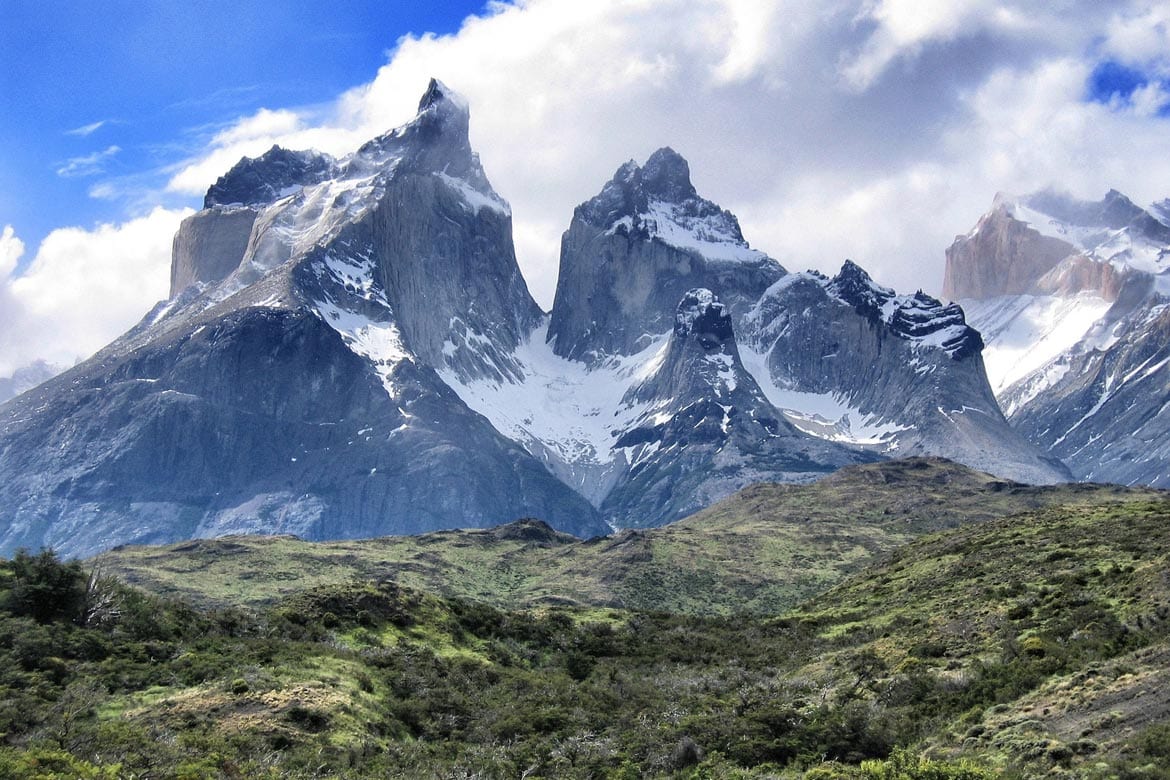
- Things you should do before going: Find your tour that best fits your style and interests and reserve it at least 5 to 6 months in advance. You’ll have more options and say in when you would prefer to go, and what type of tour you would most enjoy. Another great thing about booking in advance means that you won’t have to worry about it in the coming months.
- Break-in your hiking boots: You don’t want to show up to do the W Trek with brand new boots. Make sure that they are comfortable and fit well before beginning your hike.
- Make sure you don’t lose your PDI tourism card. You will need it to enter different lodging options along the way as well as to leave the country.
- Enjoy your hike!
Not sure if the W Trek is for you? There’s plenty more to do in Patagonia – which covers parts of Argentina and Chile. Read on for some more Patagonia activities to enjoy:
Should you visit the Argentine or the Chilean side of Patagonia? Or both?
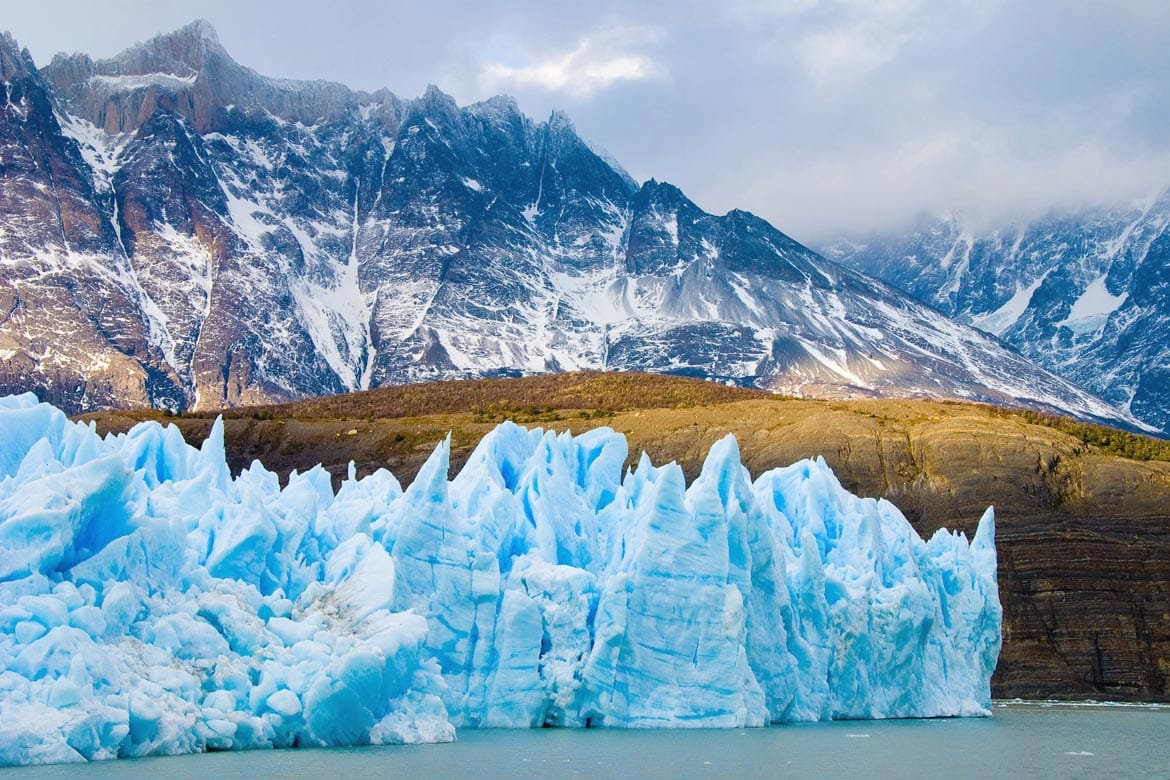
A common question that travelers who dream of going to Patagonia have is: which region is better to visit?
Unfortunately, most travelers don’t have millions of dollars in the bank, and months of time to explore all of Patagonia, so decisions have to be made on which region they would like to visit more.
Both Argentinian and Chilean Patagonia have their advantages and disadvantages. Deciding which region to explore will depend on a few factors – namely your interests, budget, and time.
Argentinian Patagonia
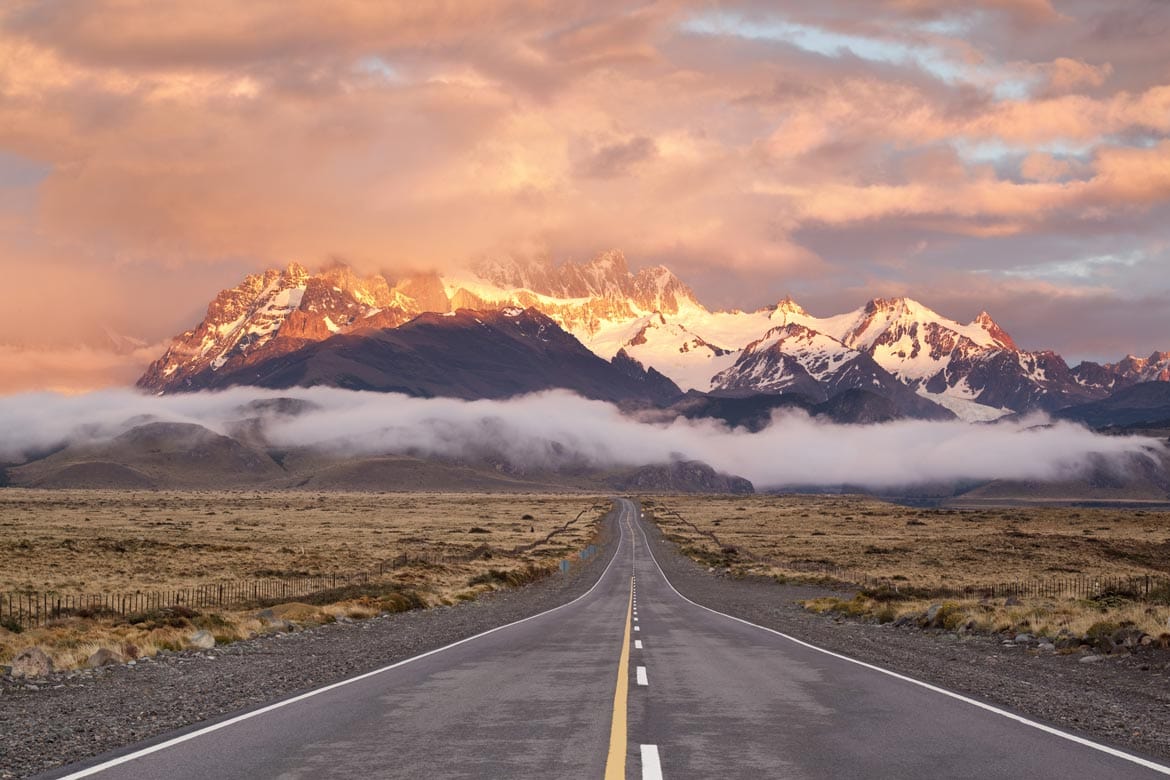
Comparing the two regions in size, it’s fair to say that Argentina easily comes out on top. Patagonia encompasses most of the southern part of the country. On the flip side, because there’s more space, it means there are a greater number of destinations within the Argentina side to explore. A few popular ones include Perito Moreno Glacier, Ushuaia, and Mount Fitz Roy.
One disadvantage of visiting the Argentina side is that flights tend to be more expensive. This can be expected given its growing popularity among travelers, as well as its size and a large number of sights to see. Trying to visit this side of Patagonia may prove to be more difficult for travelers on a budget.
Overall, Argentina still receives a higher number of visitors per year compared to its counterpart. If you decide to visit the Argentina side, you can expect to see a higher concentration of visitors throughout the year, as well as more expensive flights.
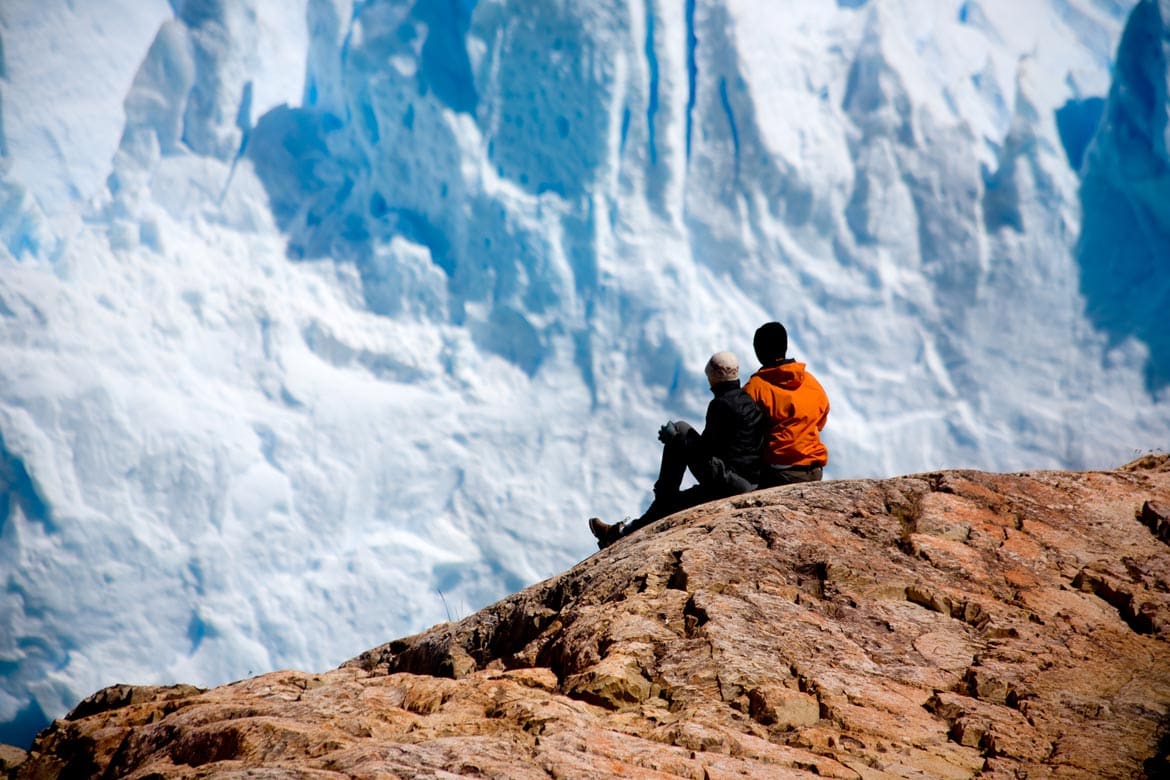
However, if the Argentina side doesn’t sound as appealing, the Chilean side is left virtually untouched. The perfect option for travelers who prefer quieter and less populated destinations, compared to overly crowded touristy places.
A large part of the Chilean side of Patagonia is isolated – to see the majority will be challenging for most travelers, requiring intense long periods of hiking like the W Trek.
But if that’s not for you, there are parts of the region that are more easily accessible to travelers. Many travelers choose to spend their time either in Carretera Austral or easier day hikes and wildlife tours in Torres del Paine National Park.
Even though the Chilean side receives fewer travelers, the Torres del Paine National Park still welcomes 150,000 travelers a year, with estimates expected to increase to 300,000 visitors by 2025.
If you are having a difficult time deciding between regions, and want to visit both, don’t fear! Many Patagonia tour companies will have extended tours for you to visit both the Argentinian and Chilean parts of Patagonia.
Are you planning on doing the Torres del Paine W Trek? Are you doing it alone or part of a tour? Let me know in the comments below!
Like this blog post? Then make sure you Pin it for the future!
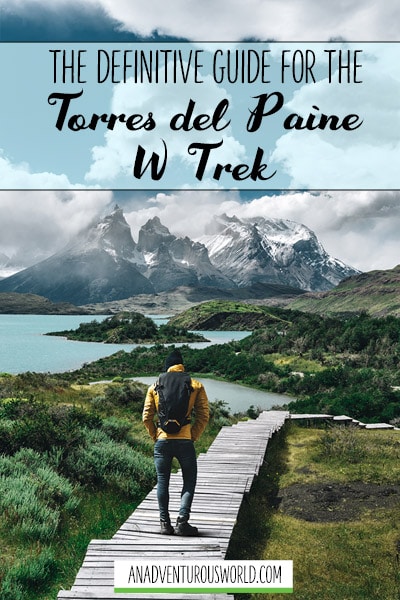
About the Author
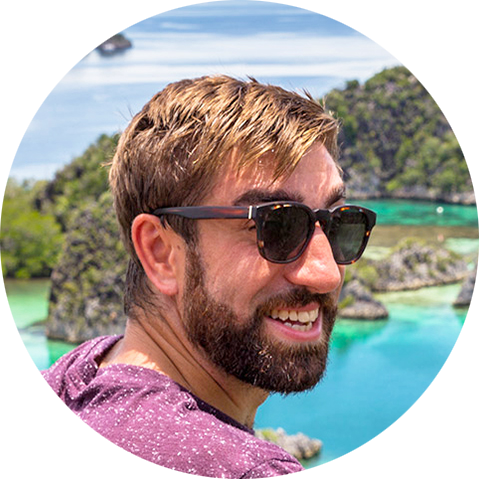
Macca Sherifi is the founder of the multiple award-winning blogs An Adventurous World and the Great British Bucket List. Every month he inspires over 200,000 avid readers to travel the world.
View all posts
4 thoughts on “The Definitive Guide for the Torres del Paine W Trek, Patagonia”
Jealous and inspired! *Moves to top of bucket list*
I visited both Chilean and Argetinian Patagonia earlier this year! I did the W trek solo and I loved it, but on the next trip (December 2020), I was thinking about trying to see some of the park by car. Do you have any tips or advice for this? Also, how do you get to the wooden walkway where you’re wearing that yellow jacket? Isn’t it part of one of the hotels? I can’t remember the name of it though… how did you get there? Did you actually stay at that hotel or just go for the viewpoint?
Thanks for a great post. Torres del Paine is definitely a dream trip of mine, hope to be able to go there some day 🙂
No worries at all Hans! Hopefully this post will help you for the future and I really hope you can make it to Torres del Paine National Park one day!
Leave a comment Cancel reply

Hiking the W Trek in Torres Del Paine, Patagonia: Itinerary, Gear & Camping Tips
Want to hike the W Trek in Torres Del Paine? We answer all of your questions about itineraries, gear, campsites, and whether a guide is necessary.
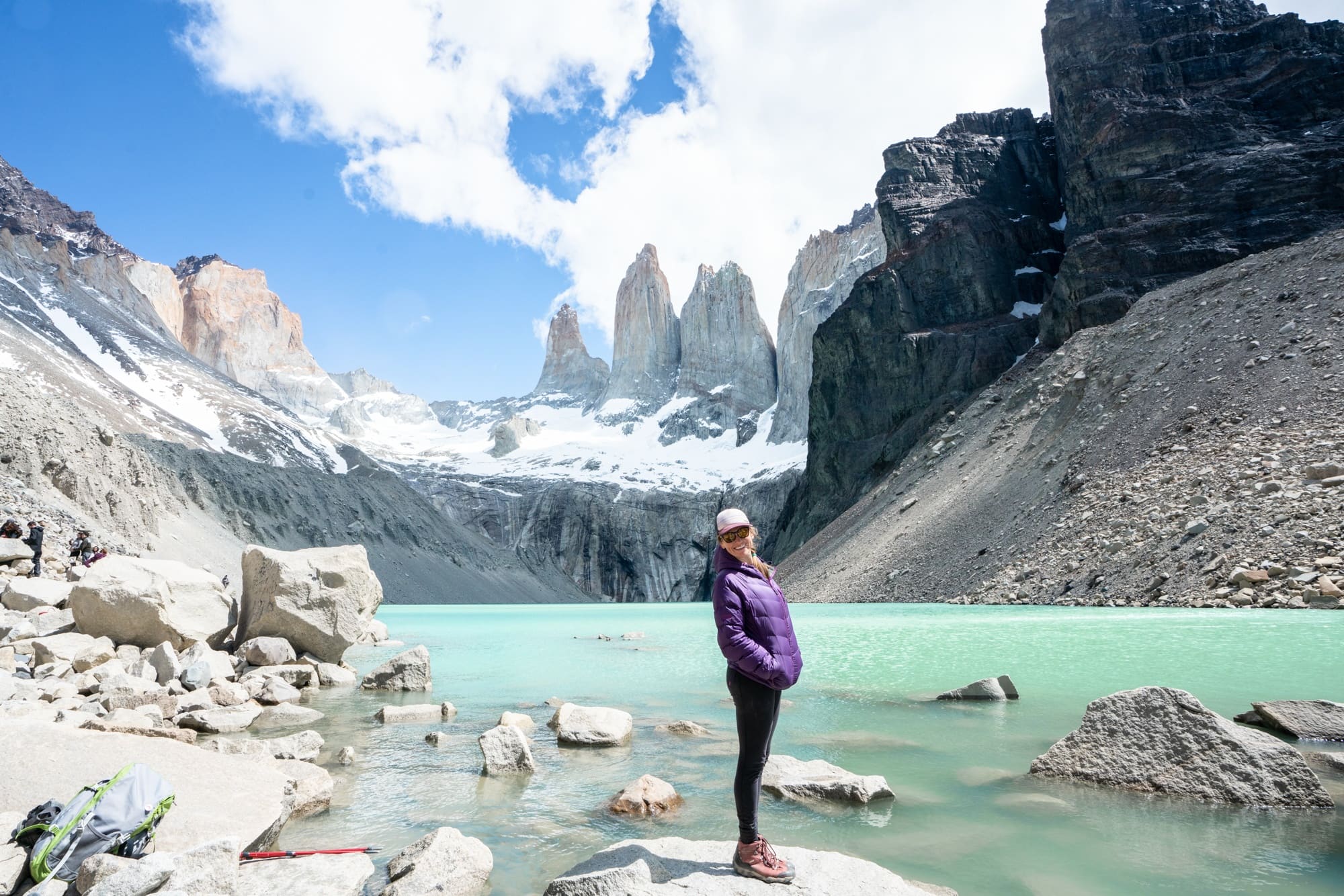
During my guided trip to Patagonia, I hiked the famous W Trek with G Adventures as part of the most recent Bearfoot Theory group trip. I spent four days and three nights in and around Torres del Paine and took in the amazing scenery of wild and rugged Patagonia.
There were comfortable campsites, home-cooked meals at the park’s well-known refugios which exist to serve backpackers and day hikers alike, not to mention top-notch guides. If you’ve ever thought about hiking this world-famous trail look no further.
Keep reading if you plan on hiking the W Trek in Patagonia for a complete itinerary, gear and camping tips.
W Trek YouTube Video
Watch my new YouTube vlog from our time on the W Trek in Torres Del Paine!
What is the W Trek in Patagonia?
Torres del Paine National Park in Chilean Patagonia is the most famous hike in the entire region. It’s a four to five-day hike that makes stops at the park’s iconic refugios for overnight stays with an option to hike the entire trek without carrying food. While hiking, it gives travelers unparalleled views of the granite towers and some of the park’s most well-known sites from up close.

Do you need a guide to hike the W Trek?
Now I’ll say that I’m not necessarily a “guided-tour-kinda-person.” I love traveling independently and the spontaneity that comes with being your own guide. However, it really depends on the destination for me and in the case of hiking the W Trek, there are a number of benefits to joining a tour, or hiring a local guide at a minimum. Hiking the W trek requires a ton of advanced planning. All of the campsites are run by different operators and fill up from 6 months to even a year in advance . Getting your desired dates and sites can be difficult.
If you hike the W Trek with a tour, you can be more spontaneous with your travel plans since the campsite reservations are made for you. You won’t have to book a year in advance in the case that you find yourself with unexpected vacation time. You’ll also learn so much more about the culture, local language, geography and history of the park because of the guide’s own personal experience and familiarity with the area.
Our two local guides contracted by G Adventures, Jarek and Marcello (along with our G Adventures tour guide Marina ) were very knowledgeable, a lot of fun, and had high safety standards, and I had a more memorable experience because of them.
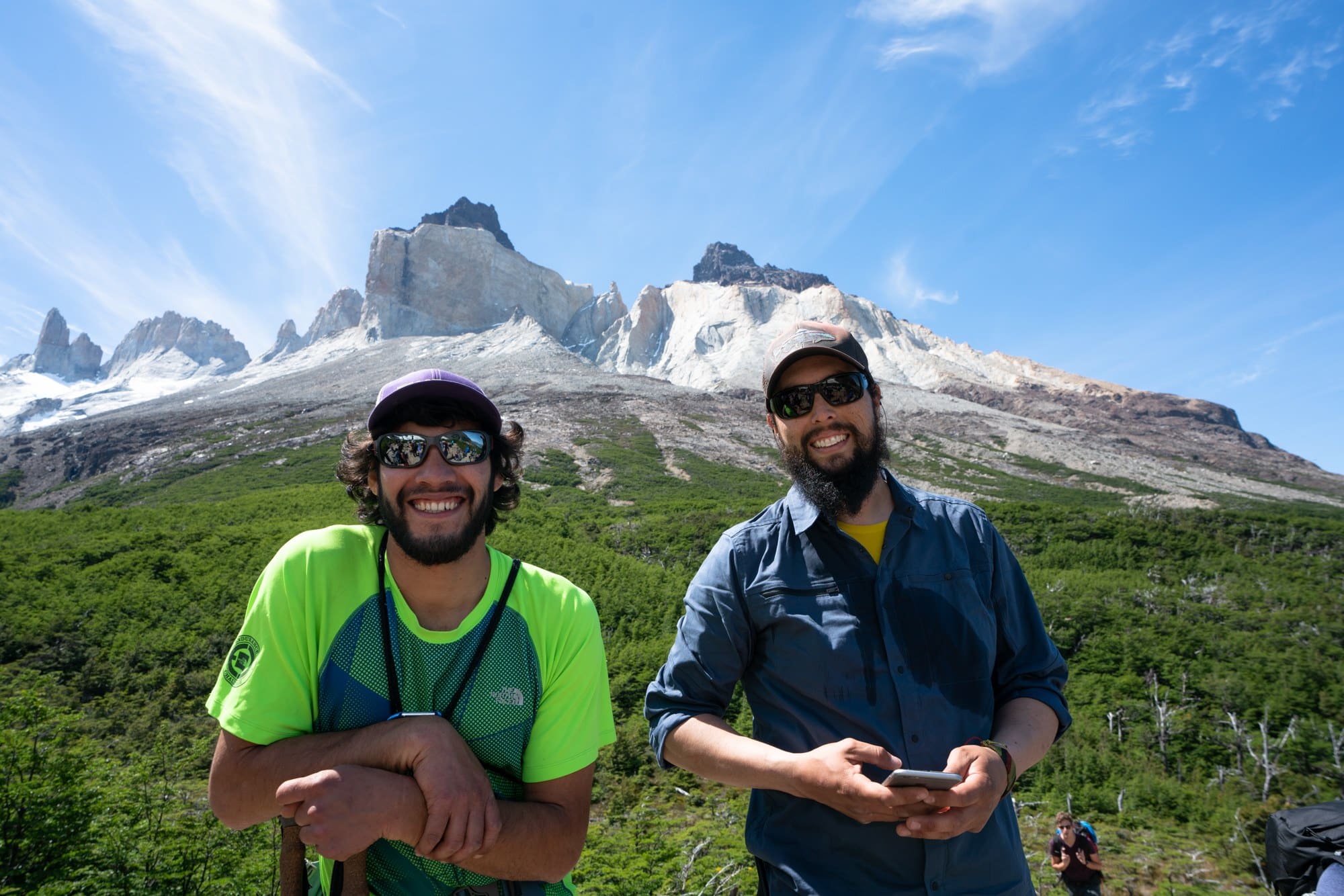
They were adamant about Leave No Trace practices and were full of local insight including what water sources were safe to drink, prime lunch spots, and more.
G Adventures even arranged for us to have all of our gear transported for us each day to the next campsite. So all we had to carry was our daypacks full of food, water, camera, and extra hiking layers. Plus, all of our meals were set up for us, we always had a hot breakfast and dinner at the refugios and were given a boxed lunch for the trail every day.
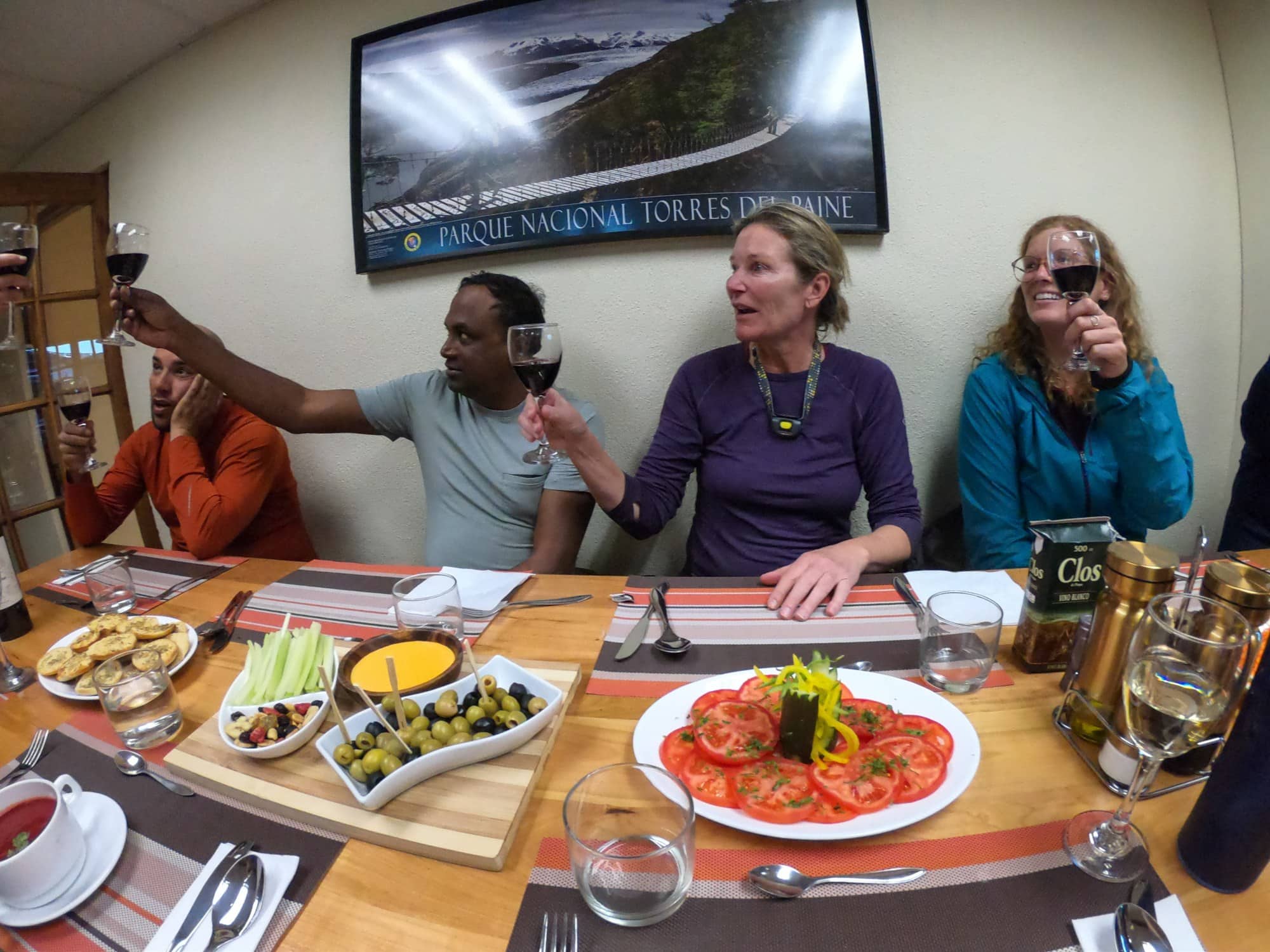
It’s worth pointing out that joining a tour or hiring a guide is the more expensive option; so you have to decide if the logistical conveniences are worth it to you. If you do decide to do it independently, don’t worry about hiking it solo. The trail is very well marked and well traveled, so it would be tough to get lost.
Overall, I thought our G Adventures tour was a great value given how much time and effort they saved us in planning and the amazing experience we had as a group. You can read the full review of my Patagonia G Adventures tour here .
If you do want to do it independently, check out these resources:
- Camping in Torres Del Paine
- 6 Options If You CAN’T Get Torres Del Paine Reservations
- Torres Del Paine Park Information, Fees, and Boat Schedules
Leave No Trace When Hiking in Patagonia
Whether you are traveling with a guide or not, please educate yourself on local Leave No Trace practices. Here’s a quick refresher if you’re a little fuzzy on the most basic (and global!) ethics…
- Anytime you go outside, pack out your toilet paper and don’t go to the bathroom near water sources
- Stay on the trail. Don’t cut switchbacks or take shortcuts.
- Only camp at established campsites (making your own campsite in Torres Del Paine is prohibited)
- NO CAMPFIRES OR BURNING TOILET PAPER (there was a huge fire recently that burned a huge portion of the park).
- There is also no smoking allowed on the trail.
- Make sure you secure your trash when you are eating. It is very windy in Patagonia and if you leave a wrapper sitting on your pack while you eat, there is a good chance it will blow away.
- Pack out all of your trash, and don’t leave your food trash in refugio bathrooms. It’s much easier if everyone just takes the trash they produce back with them to Puerto Natales and disposes of it there.
- Leave wildlife alone. If you are lucky enough to encounter wildlife, don’t approach or feed them.
- Yield to uphill hikers and be friendly . This is a world-famous hike and it’s important to share it and practice good trail etiquette.
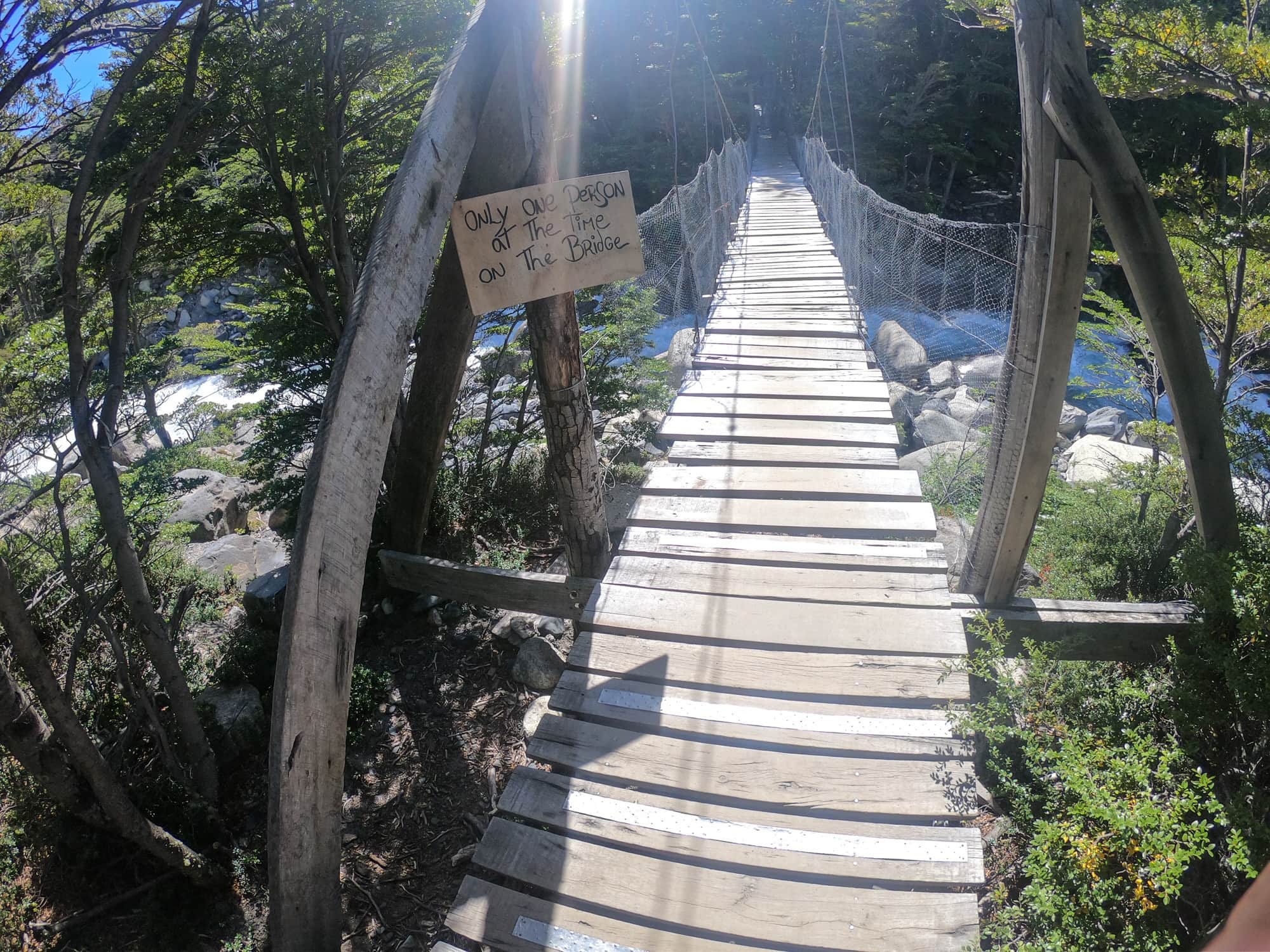
Best Time to Hike the W Trek
The W Trek can be hiked year-round (including winter with a guide). The busy season is December through late March. This is the warmest time of year, but also when you’ll experience the strongest winds. April is Patagonia’s fall with beautiful bursts of colors, while November is Spring when you’ll encounter wildflower blooms. No matter when you go, you should always be prepared for crazy weather.

What Gear do you need to hike the W Trek?
I wrote up a detailed W Trek gear list that you can check out here.
On our tour, G Adventures provided sleeping bags, tents, and sleeping pads. The tents and pads were already set up at each site so all we had to do was unpack our sleeping bag. We were given a small dry bag for all of our clothes and personal belongings for camping. Both that and our sleeping bag were put in the dry bag and transported for us each day to the next campsite. All we had to carry was lunch, water, camera, and extra layers in our day packs.
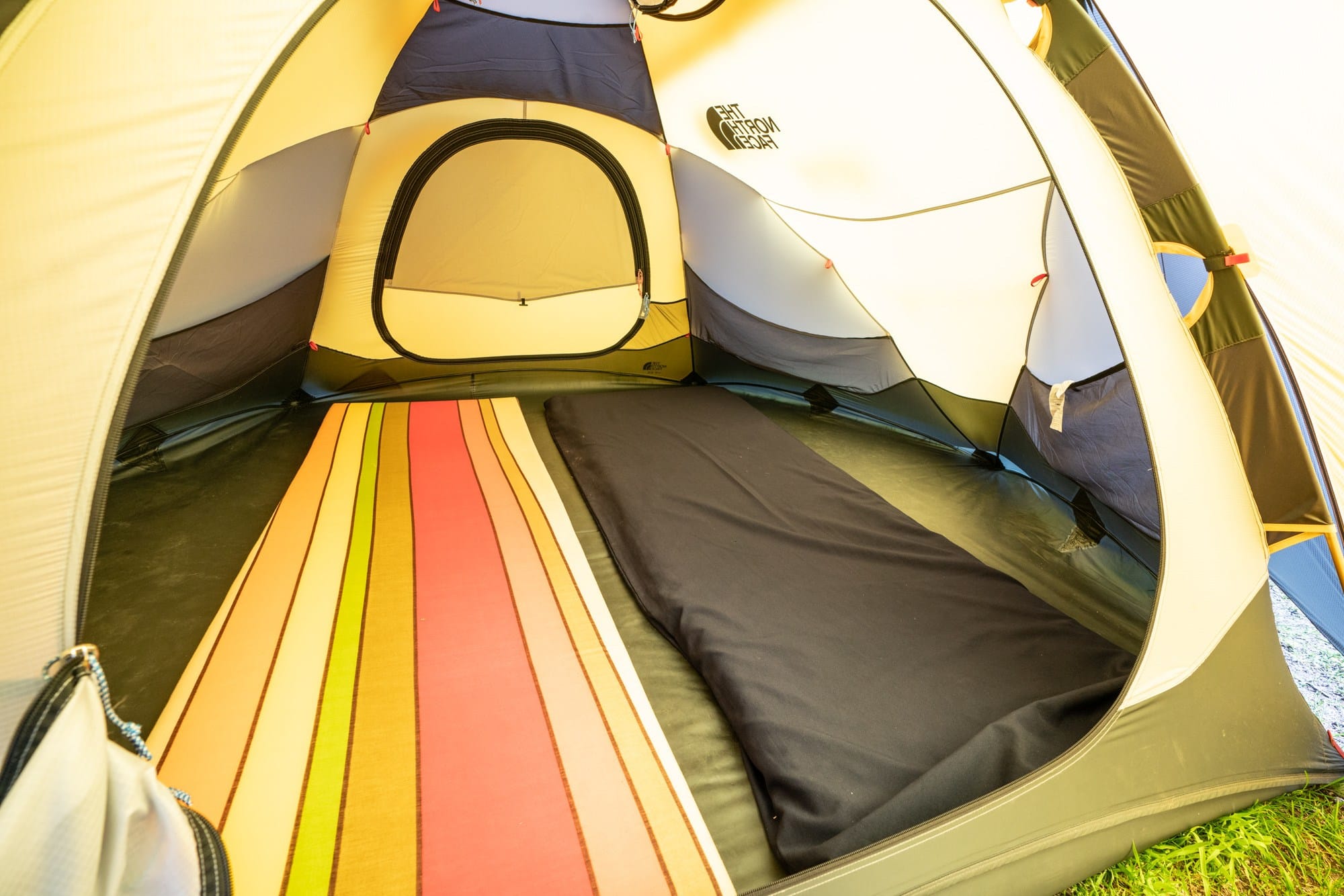
If you are hiking independently and need to carry all of your own gear, make sure you bring a backpacking pack that you’ve worn before. Since the summer season in Patagonia is known for the high winds, a rain cover might be ineffective in wet conditions, so in rainy condition, line your pack with a trash bag and then pack all of your stuff in that. Your tent also needs to be very solid and bring plenty of guy lines and stakes to secure your tent in high winds.
Aside from the windy conditions, it was hotter than I expected and I wish I had brought shorts. Pack layers with everything from warm to cold layers so you’re prepared for any kind of weather.
A half-buff is also helpful. A trick we learned from our guides is to use the buff as a headband over your hat so it prevents your hat from flying off in the wind.
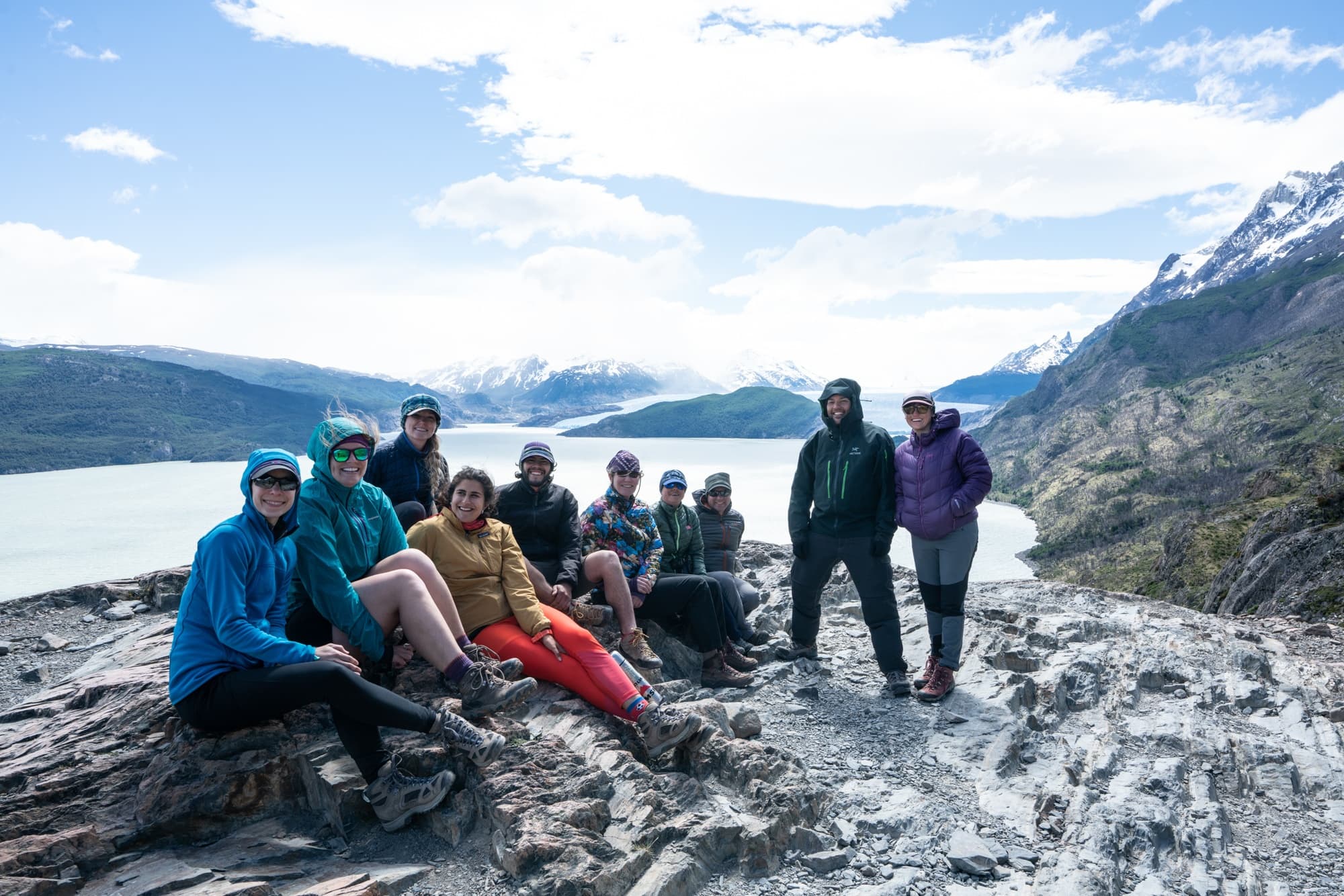
In addition to the clothing, I’d recommend bringing a portable water purifier, like a Steripen or a Grayl water bottle. I did drink unfiltered tap water and water right out of streams, but I’d bring a purifier just to be safe.
If you want to eliminate the need for heavier camping gear, the Refugios also offer rooms for rent.
My W Trek Itinerary
What direction should you hike the w trek.
On our trip, we hiked the W Trek a little out of order (roughly from East to West) which was due to the way G Adventures arranged for our bags to be transported. On Day One , we hiked out and back to the base of the Towers (the famous spiraling granite towers) so the bags could stay put. The second day , we took a ferry to Refugio Paine Grande, dropped our bags, and hiked another out and back to Gray Glacier.
On Day Three our bags were transported by boat, while we hiked from Refugio Paine Grande to the French Valley, ending at Refugio Los Cuernos.
On Day 4 , our bags were transported by horseback to our finish line back at the Base of the Towers trailhead.
Although we did hike the W Trek in a slightly different sequence, it seemed a little easier than the opposite direction. I liked that we hiked the busiest day first because every day after that got less and less busy. That said, there are many different ways to hike it, so get familiar with the map and different locations. If you go independently, it’s important to understand that your itinerary may be determined by campsite availability.

How many days do you need to hike the W Trek?
We hiked the W Trek in four days and three nights . The hike to the Towers and the French valley were pretty long days, but the other two were fairly mellow and I thought the days were planned well.
Some people take five days and take a boat out to Gray Glacier Refuge and start there. Taking 5 full days would also allow you to take a little more time and hike farther up into the French Valley.
Is it worth purchasing meals at the refugios on the W Trek?
Meals may seem expensive but remember that you are in the middle of nowhere and getting your meals through the refugios means you don’t have to carry four to five days worth of food on your back.
We were given lunch boxes each day by the refugios which consisted of a large chicken salad sandwich, cookies, fruit, trail mix and a piece of chocolate. Plenty of food to energize you for the day. Overall, I thought dinners at the refugio were better than the breakfasts which matters since you can purchase meals ala carte.
To give you an idea of prices independent travelers paid at the time of my hike:
- Refugio Paine Grande: $55 US for dinner, breakfast, and a boxed lunch (not including accomodations or camping)
- Refugio Los Cuernos: $80 US for dinner, breakfast and a boxed lunch / $115 US for a fully equipped campsite (with a tent, bag, and pad rental) and all meals
- Nash Patagonia Lodge: $29 for dinner / $112 for a fully equipped campsite and all meals
Note that Patagonia is very remote, lodging and food options are limited, and prices reflect that.
Day 1 – Hiking to the Base of the Towers (12 miles)
This is a very busy trail so be prepared for crowds and a steep uphill climb. At times the congestion made it feel like Disneyland, as a line formed hiking up the mountain. The lake was beautiful but this was honestly my least favorite day of the hike due to the crowds. We hiked on Sunday, so maybe it’s less busy mid-week?
Once you’re about 30 minutes from the trailhead, the trail starts climbing and doesn’t really quit. Make sure you pack plenty of water, as there isn’t a place to fill up until you reach a river crossing at Refugio y Camping El Chileno.
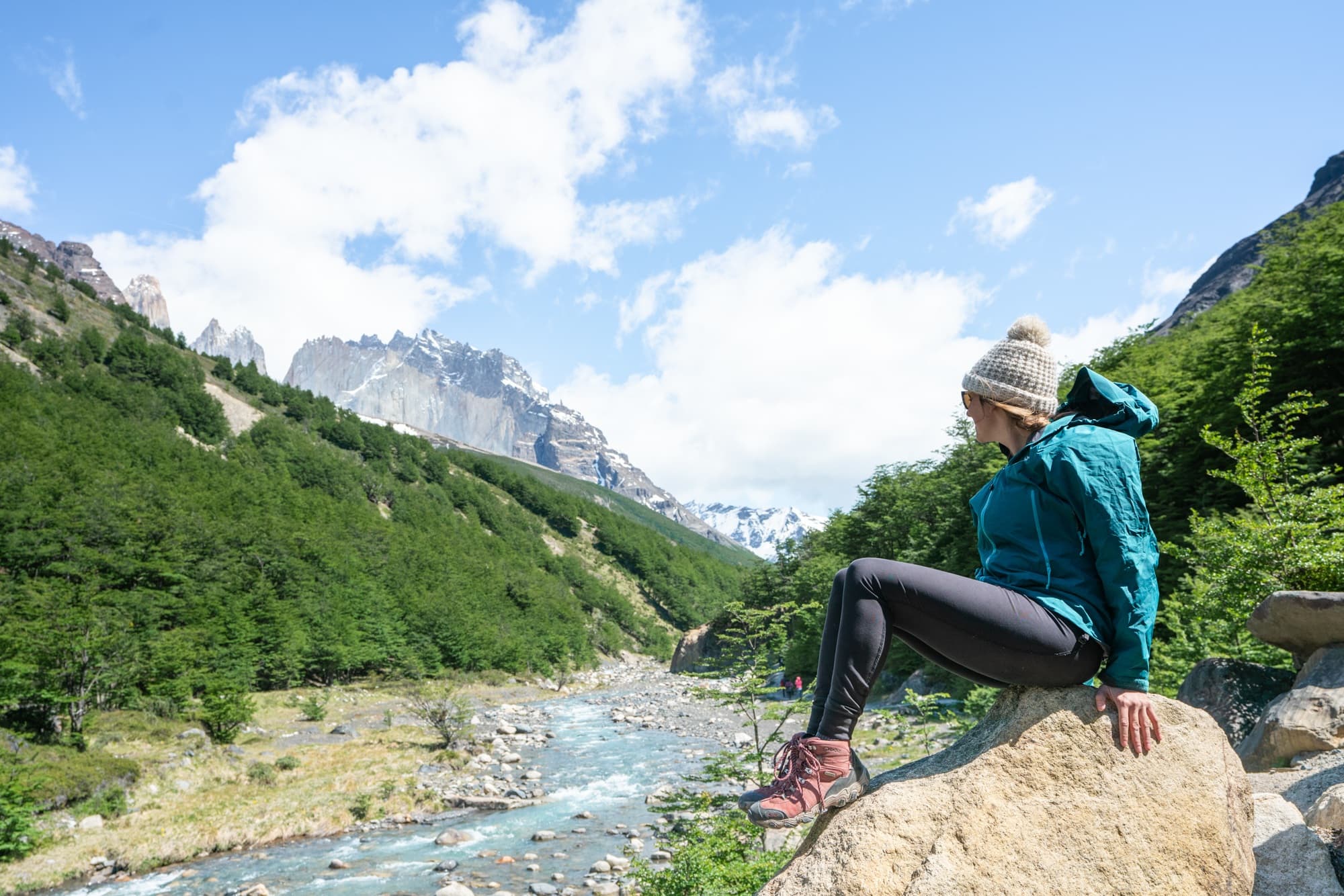
I will say that the lake is one of the prettiest lakes I’ve ever seen. Just set your expectations for crowds, or get a very early start to try and beat them. If you are doing the trek independently you could try to get a camping spot at the refugio which would allow you to hike to the base of the towers for sunrise.
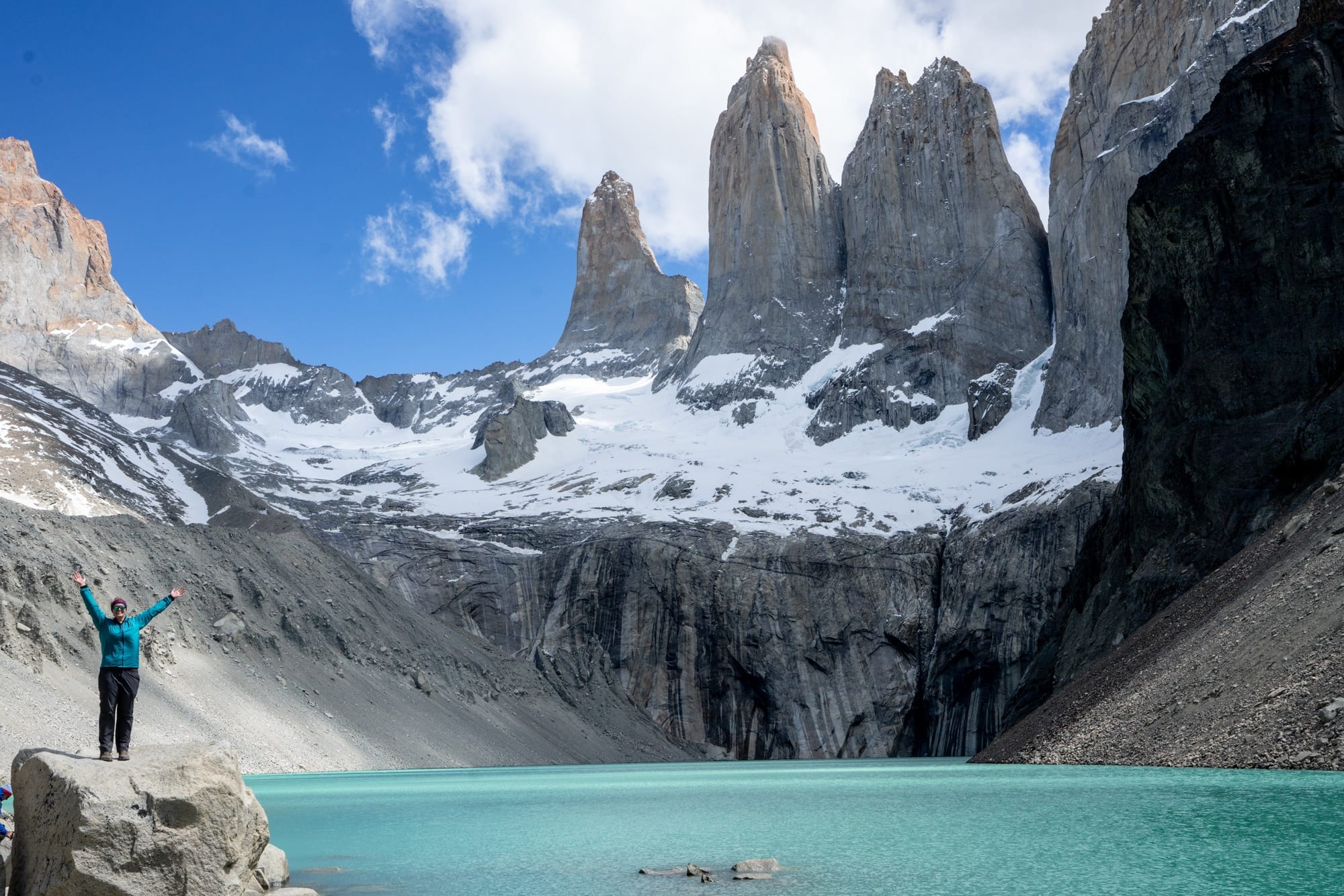
Camping Night 1
G Adventures booked out an entire campsite on the Serrano River called Nash Patagonia that we stayed on the first night. The campsite is just on the outskirts of the park with the friendliest staff of all of the refugios we stayed at. The drive to that campsite, while it may look long on the map, took only an hour and a half and was absolutely gorgeous. The drive was a way to get a feel for other parts of the park. The campground only had one other G Adventures group so it was very quiet with gorgeous views. We had a tasty group dinner with braised beef and vegetables.
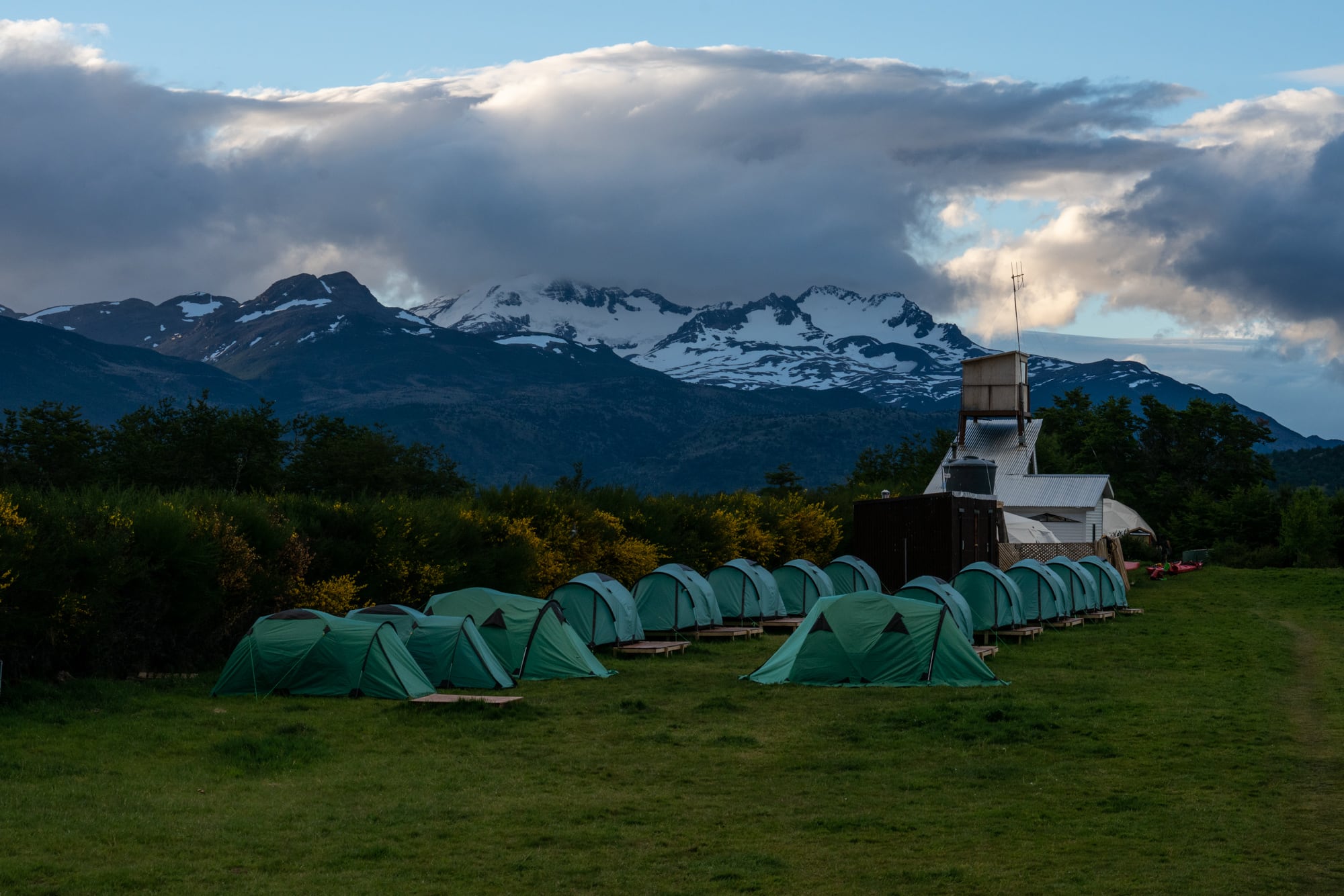
Day 2 – Refugio Paine Grande to Grey Glacier Overlook and back (7 miles)
The next morning we drove back into the park and took the 30-minute catamaran ferry across Lago Pehoe where we arrived at Refugio Paine Grande . On the G Adventures tour, our guide had reserved tents and sleeping pads that were already set up and waiting for us at each campsite. That way it was less for us to lug around on the hike.
Day 2 to the Grey Glacier was a much more mellow hike than Day 1 that takes you over a ridge, past a Laguna Los Patos), and around the shoreline of Lago Grey. Eventually, it reaches a lookout with beautiful views of the Gray Glacier. If you want to get closer, you can keep walking all the way to Refugio Gray, which ends up being 13 miles round trip from Refugio Paine Grande.
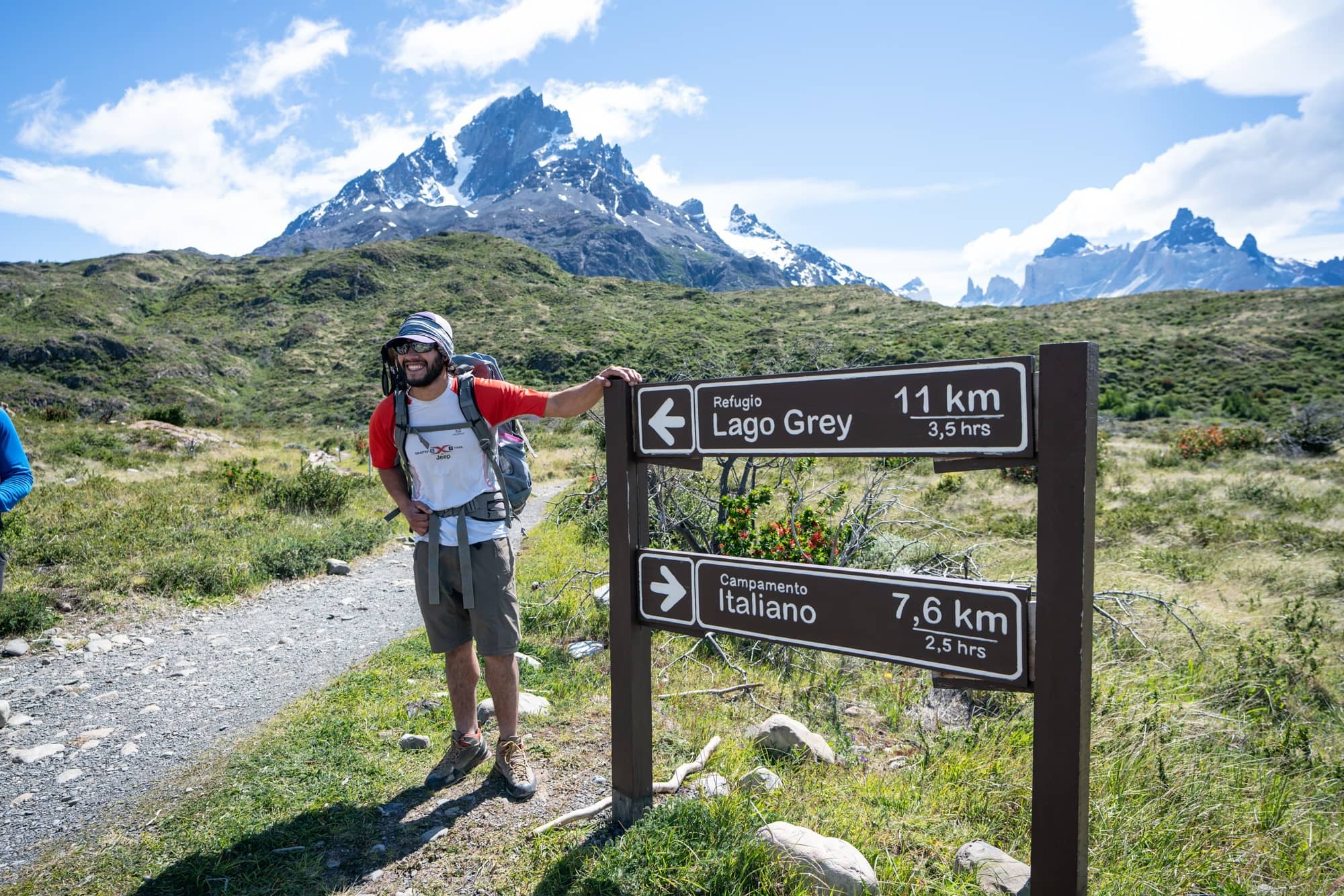
You’ll note from the map that on day two that we didn’t hike all the way to the Gray Glacier and only went to the lookout. I was satisfied, but I do think with a quicker pace, it would have been possible to hike all the way to the Gray Glacier and back. Alternatively, you can also arrange to take a boat to Refugio Gray and start your W Trek hike from there.
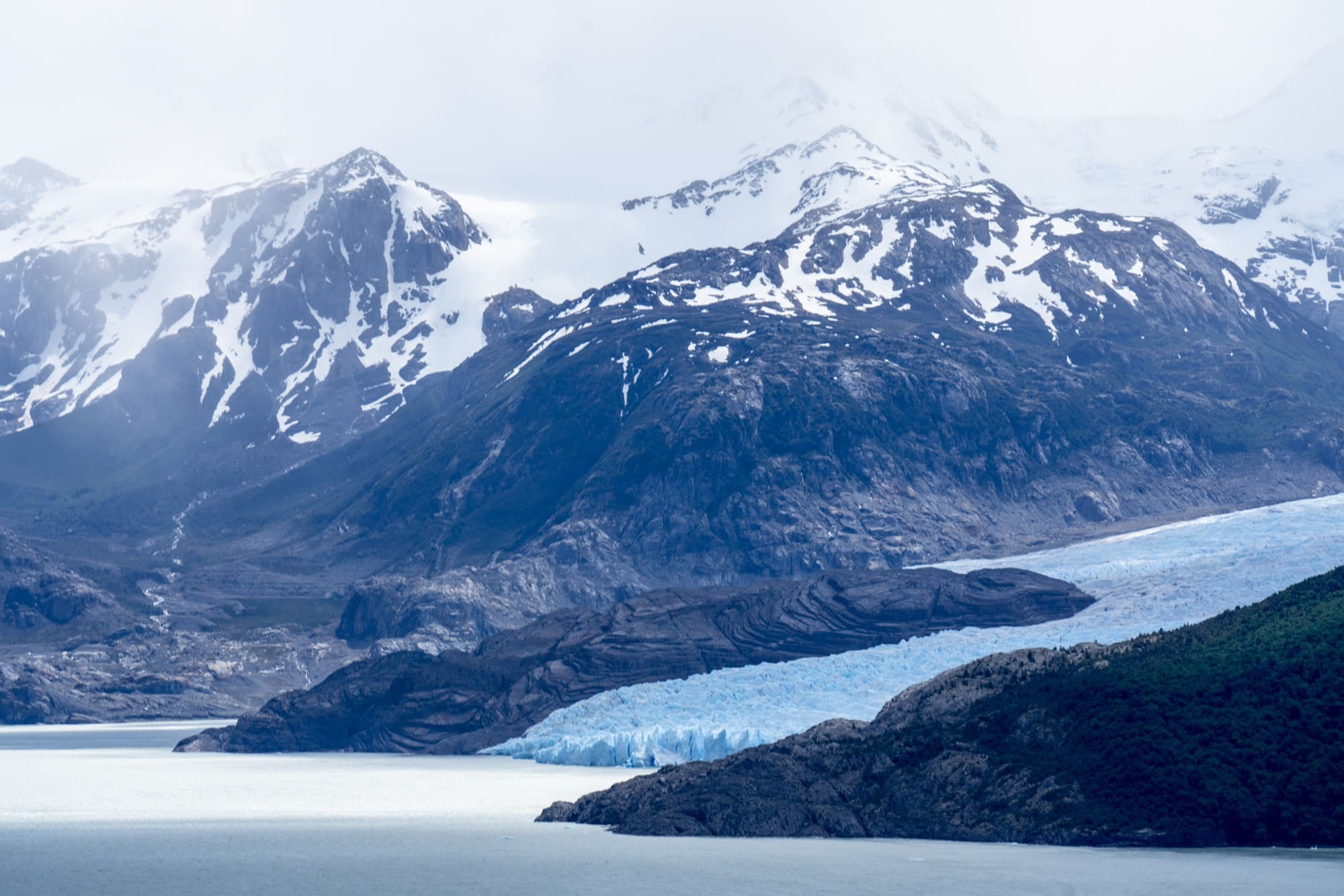
Camping Night 2
We stayed at the Refugio Paine Grande where there were hundreds of people camping and gorgeous views. Dinner is served cafeteria-style and was my least favorite food of the W Trek. Dinner times are assigned so you should get in line a little early. Good news is that you can cook your own food in a separate cabin if you want to bring your own food. There’s also a bar upstairs with beer and place to hang out. Hot showers were available at certain times of the evening.
Day 3 – Paine Grande to the French Valley to Refugio Los Cuernos (11.5 miles)
On our third day of hiking the W Trek, the views from the trail were non-stop. First, you pass Lake Skottsberg, and there are a few different rocky outcrops that make for a good snack break.
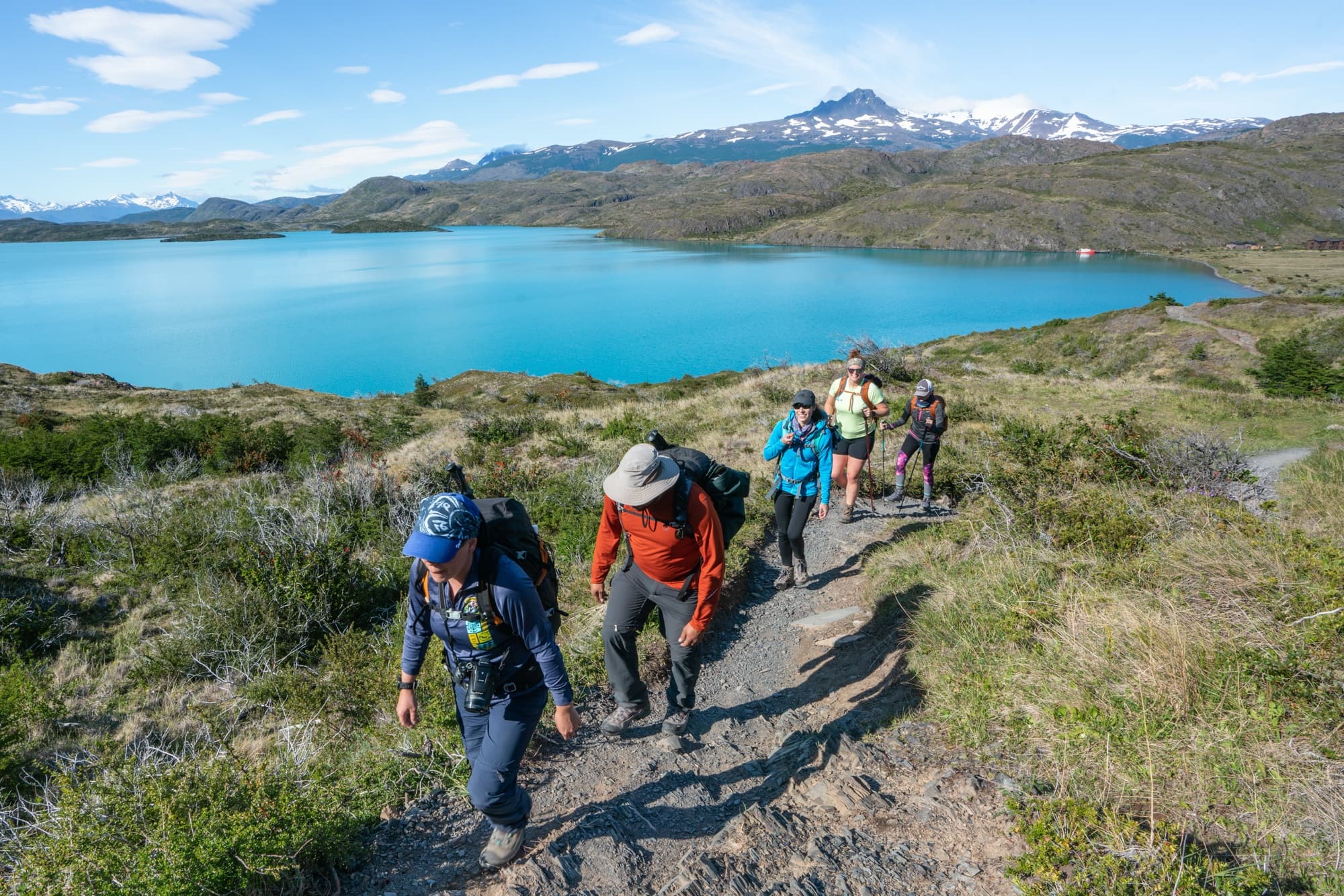
Next, you’ll hike through a burn area and eventually arrive at the Italiano campsite. Here you hang a left and start hiking up towards French valley. This is steep but didn’t feel as steep as the Base of the Towers hike and also had the bonus of way less people. The French Valley offered my favorite views from our entire time hiking the W Trek, and just past the main overlook, there is a nice lunch spot on the river where you can watch avalanches breaking off the glacier. You are also right under the Horn which is one of the famous peaks in Torres Del Paine.

On day 3, we only hiked to the French Valley (Mirador Frances) lookout but the trail continues quite a bit farther back to the Mirador Britanica. Our guides told us this was very difficult, and we still had 2 hours of hiking once we got back down to the Italiano campsite to reach Refugio Los Cuernos where we would be camping.
If you want to hike all the way to Mirador Britanica, you should consider starting or ending at the Italiano campsite and get a very early start. We heard this is one of the most beautiful and isolated areas of the park and would probably recommend five full days for the W Trek if you want to go to the very back of the valley.
Camping Night 3
This campsite was the Refugio Los Cuernos and also my favorite campsite. The refugio is located right underneath the Horn and had a beautiful beach with a great place to enjoy a beer from the bar. Luckily, there were clean, hot showers to boot. The dinner here was also my favorite spot. On the menu there was a hot soup, bread, braised beef with mashed potatoes, and a dessert.
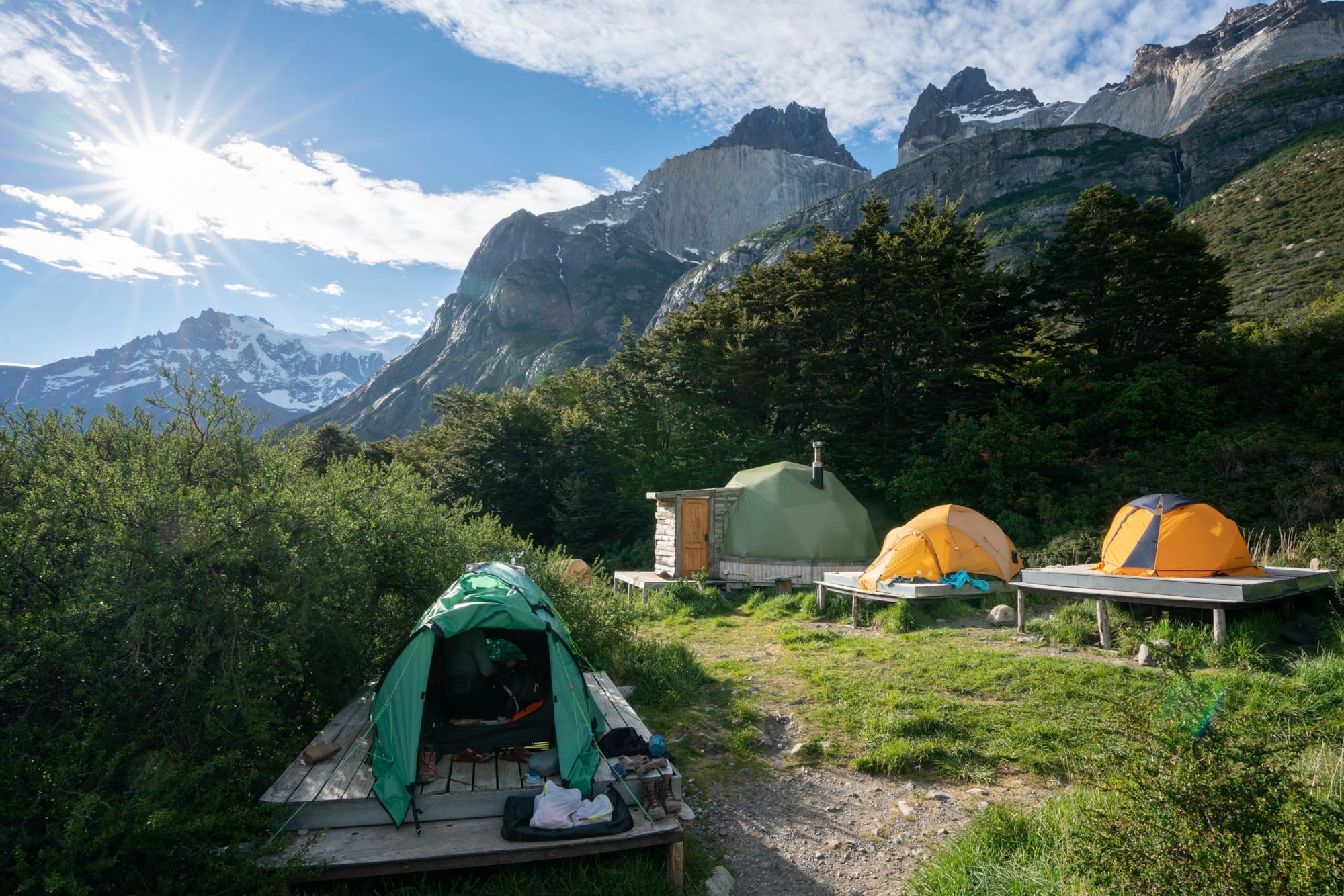
Day 4 – Refugio Los Cuernos to Hosteria Los Torres and back to Puerto Natales (7.5 miles)
This was a mellow morning and breakfast consisted of toast, eggs and coffee. Our day was fairly short so we were able to take our time and enjoy the scenery. There were lots of beautiful flowers in bloom and we hiked along Lake Nordernskjold the entire day so we had non-stop views. In total, it took us about four hours.

Since we had a shorter day on the trail, we stopped at the last spot with a view of the lake, where we enjoyed lunch and some mate tea.

When we got back to our Day 1 starting point, our driver was waiting for us at the end to take us back to Puerto Natales where we grabbed pizza with our guides at the basecamp.
What questions do you have about hiking the W Trek in Torres Del Paine? Leave us a comment below!

With two decades of hiking and seven years of van life under her belt, Kristen has dedicated her life to helping people experience the positive effects of nature. As a pioneer in the outdoor blogging space, she founded Bearfoot Theory in 2014 and has since authored more than 350 blog posts about outdoor travel, hiking, camping, and van life. Her work has been featured in National Geographic, Outside Magazine, and Backpacker, and when she’s not on the road, she lives in Park City, Utah with her partner Ryan, their son, and two adventure pups.
Leave a Reply Cancel reply
Your email address will not be published. Required fields are marked *
Save my name, email, and website in this browser for the next time I comment.
Awesome post. I appreciate your time and effort in your work. Keep posting..
Hi Kristen,
Thank you for your blog. I’m curious, when did you hike the W Trek? I have booked campsites for the second week in March and am hoping for some early Fall foliage on our visit.
Hi Rachel – Kristen hiked the W trek in November which is spring in Patagonia. I realize that you may have had to change your travel plans, but when you do make it to Patagonia, Fall begins in mid-late March so you just might catch some of that early Fall foliage you’re looking for if you go that time of year. Best of luck!
I’m looking for a guide to go with a small group in December 2021. Recommendations? Thanks!
There are a lot of great tour operators in Patagonia. Kristen’s group trip was with G-Adventures and she had a great experience. You can read more about it here: https://bearfoottheory.com/g-adventures-review-hiking-patagonia-in-depth/
A Guide to Hiking in Torres del Paine: W, O, and Q Treks

Some of the links on this page are affiliate links
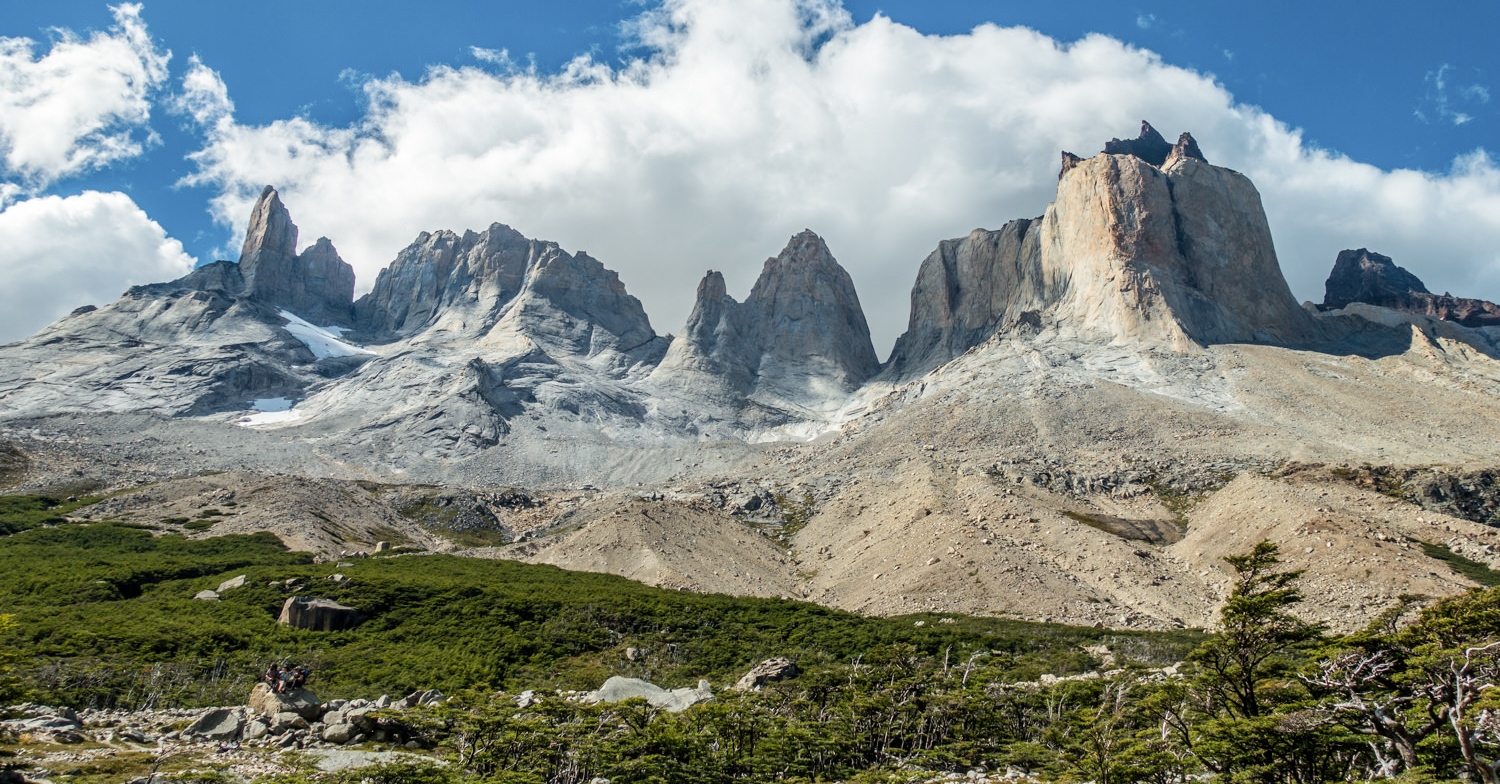
If it’s your first time visiting Patagonia, a trip to Torres del Paine will most likely be on your itinerary, and with good reason. This spectacular Chilean region offers some of the best trekking in the world. With dramatic granite spires, immense glaciers, and glistening turquoise lakes, Torres del Paine has all the ingredients for an unforgettable and rugged adventure.
For all its beauty and grandeur, hiking in Torres del Paine can be a very accessible activity. Trekking tourism has been rapidly increasing in Patagonia over the past five years, so you should expect to be sharing the trails. Though many people hike with organized tour groups, hiking independently is very possible. While we were planning our 2018 trip, we found a scarcity of up-to-date, good information for this region. We created this guide to help people navigate all the details of trekking in Torres del Paine: which trek to choose, campsite information, hiking itineraries, what to pack, and more.
For more information, check out our additional resources on backpacking and hiking in Patagonia
A Guide to Backpacking & Hiking in Patagonia
Backpacking in Patagonia – Gear Checklist
Best Backpacking Gear – CleverHiker Gear Guide
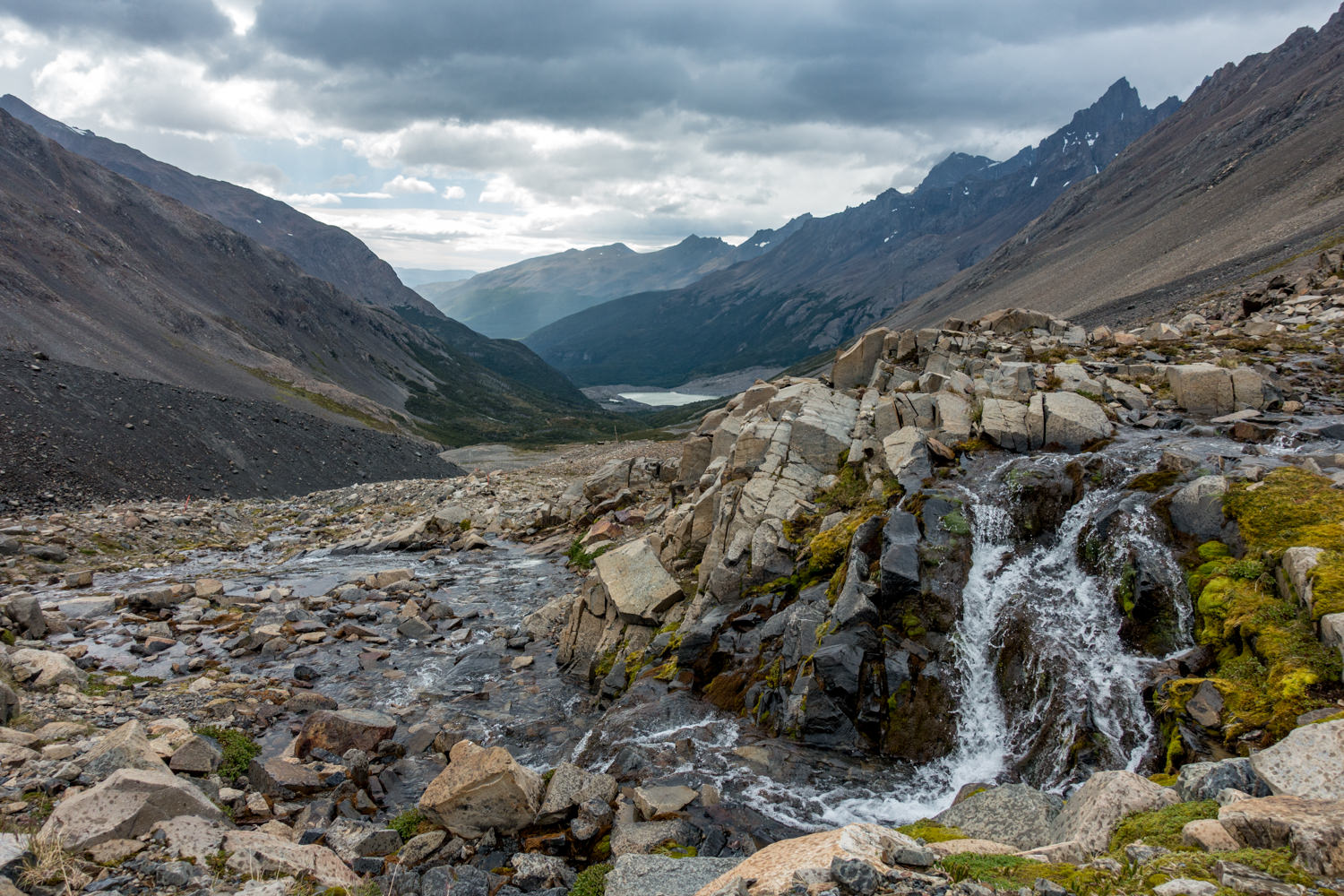
WHEN TO VISIT
SUMMER (December-February) : The peak hiking season in Patagonia is during the summer months of December through February when the temperatures are the warmest and days the longest. Though hiking in 60-70 degree temperatures is quite nice, the crowds will be high and the wind can be quite fierce during the summer months, with gusts up to 75 mph at times. It’s common to receive some precipitation during the summer months, though with less intensity than in the fall.
FALL (March-April) : Hiking in the fall months can be a nice alternative to summer. The temperatures will be slightly cooler, but the crowds will be lighter and the wind is often less intense during this time. However, precipitation can be highest during the months of April and May, so you’ll want to plan accordingly. Many people also choose to come during fall months to watch the trees turn from green to a fiery red, which is a breathtaking contrast against granite and glaciers.
SPRING (September-November) : Hiking in the spring months is a great way to enjoy Patagonia before the swathes of tourists arrive. Temperatures will be cool with daytime highs averaging in the 50’s, so you’ll need to bring warmer clothing. You can also expect less wind and less precipitation during spring months compared to summer.
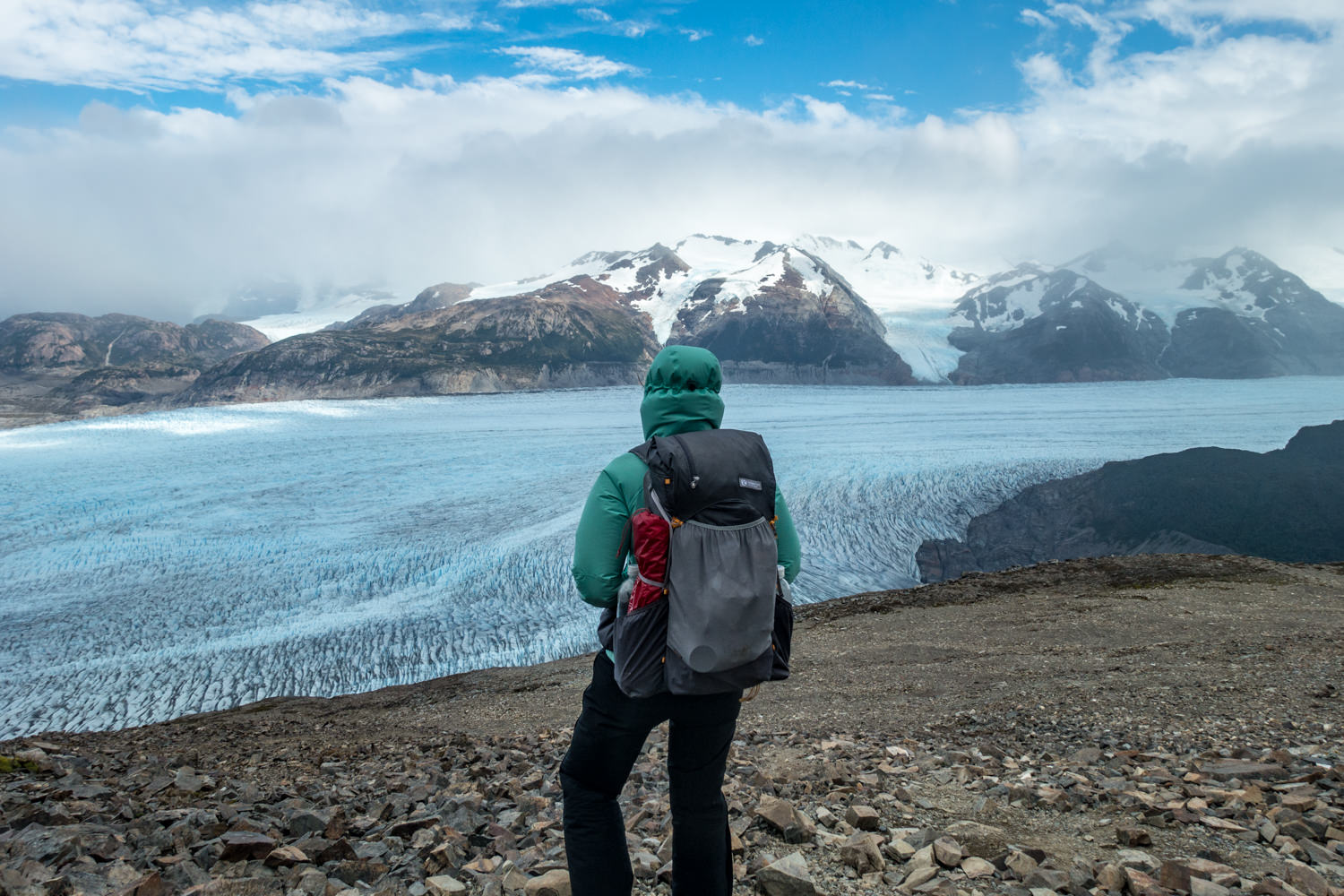
Weather (and wind!)
The weather in Patagonia is ever-changing and unpredictable. You can plan your trip (and gear) around the season, but we recommend to always be ready for any weather condition. You’ll often hear people talk about how you can experience all four seasons in one day, any day of the year. During your trip, you’ll most likely experience some rain, but what will stick with you are the winds. They will be like nothing you’ve experienced before. The strongest winds occur during the summer months of December to February, with calmer air in spring and fall, and the winds almost non-existent in winter.Be careful on exposed ledges, suspension bridges, or on pass days if winds are high. The best source for finding information on weather is at www.windguru.com , which will provide information on wind speed and gusts, precipitation, and cloud cover. If you stop by a ranger station in the area you’ll be hiking, they will most likely have the Wind Guru forecast printed and can help you decipher the somewhat confusing grid of numbers.
HIKING ROUTES: THE W, O, OR Q
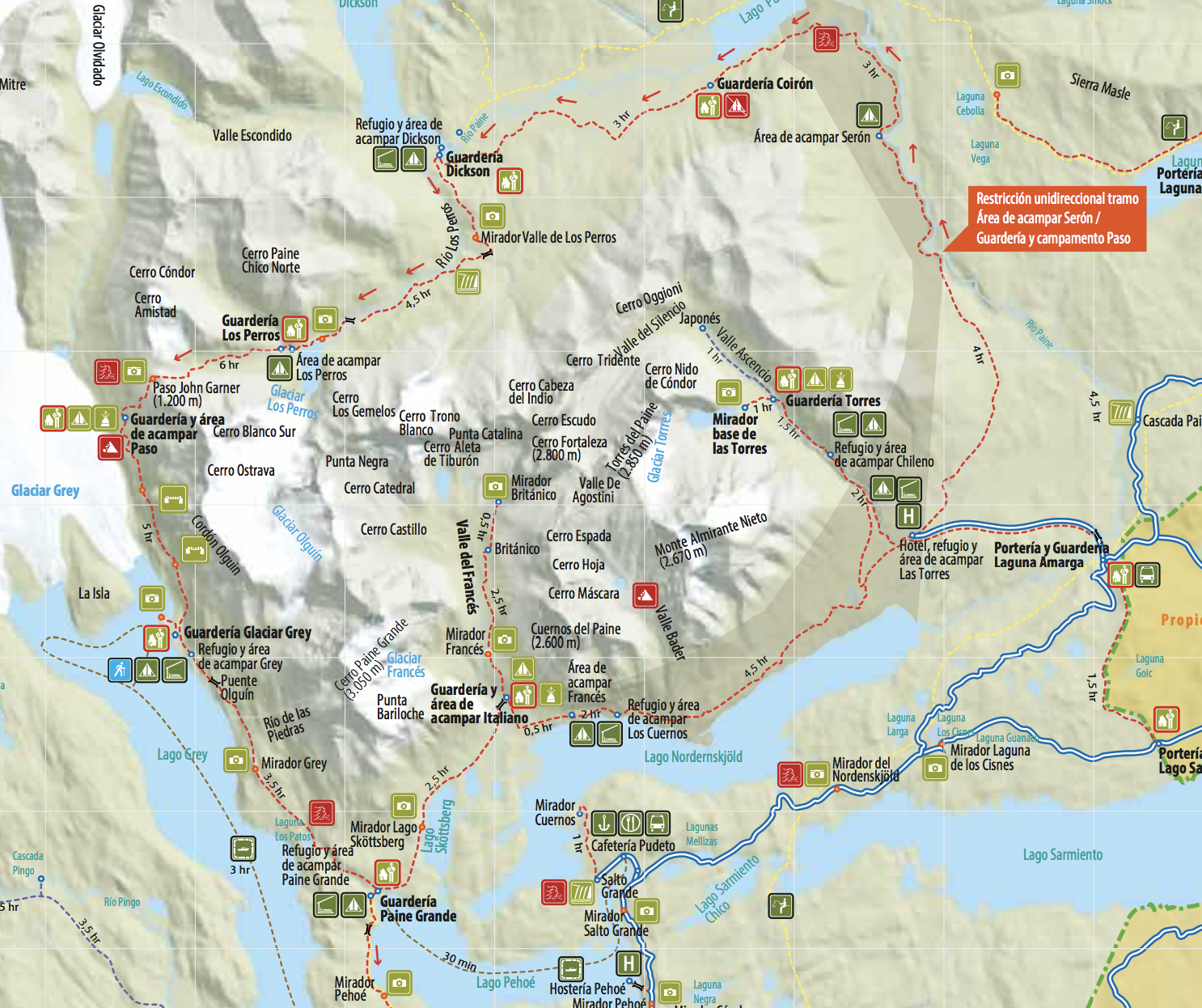
Map of torres del paine national park – image from torresdelpaine.com
W TREK: The most popular trek in the park, the W trek is roughly 80 km (50 miles) long and can be completed in 3-5 days. It covers some of the most iconic highlights in the park: Grey Glacier, Frances Valley, and the infamous Torres (towers). In high season, the route will be jam-packed with independent hikers, large tour groups, and day hikers. Though the route is busy, the sights are undeniably awe-inspiring.
O TREK – Also known as the Circuit, the O Trek covers the same trail as the W Trek, but circumnavigates the Cordillera del Paine over the course of 110 km (68 miles). Generally completed in 6-9 days, you’ll spend 2-3 nights camping on the less-traveled back side, which offers more solitude and opportunities to see the varied terrain of Torres del Paine. Traveling on the backside of park requires you to cross Paso John Gardner, which can be challenging (and sometimes closed) due to poor weather, high winds, and/or low visibility. The O trek is definitely a notch up in difficulty, but if you’re looking for more adventure, it’s truly a spectacular route away from the crowds. You can only complete the Circuit Trek in a counterclockwise direction.
Q TREK – Covering the most trail in Torres del Paine, the Q Trek travels the same route as the O, with an additional day of hiking south of Refugio Paine Grande along Lake Pehoe. Very few hikers cover this additional section so you’ll have some solitude and also earn one of the most spectacular views of the park, the Cordillera Paine rising above Lake Pehoe. You used to be able to begin your hike with the Q portion, leaving from the last bus stop, Administracion, and hiking towards Paine Grande. However, now CONAF only allows one-way travel from Paine Grande to Administracion, which requires you to end your Torres del Paine hiking there.
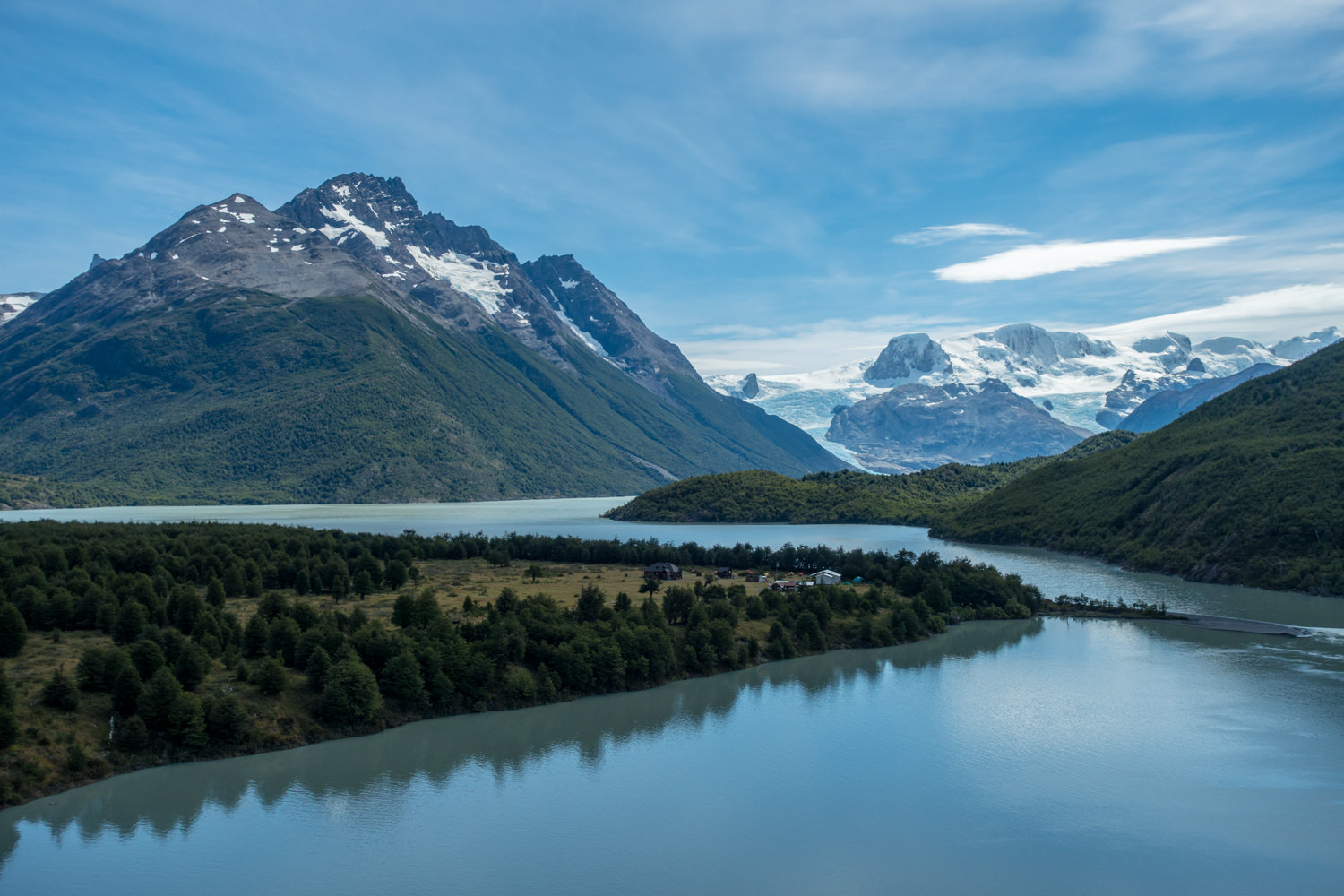
GETTING TO TORRES DEL PAINE
Most people begin their journey to Patagonia through either Santiago or Buenos Aires with a connecting flight to Punta Arenas. From Punta Arenas, you’ll take a roughly 3.5 hour bus ride to Puerto Natales, which is the gateway town to Parque Nacional Torres del Paine. There are many bus companies running this route and most buses are in good shape, comfortable, and punctual. We recommend buying your bus tickets ahead of time, especially during peak season. Purchasing your bus tickets online is easy and convenient with BusBud and Recorrido.cl .
From Puerto Natales, you’ll need to take a 90 minute bus ride to Torres del Paine on the day you plan on beginning your hike. You can either buy these online as well, or buy them at the bus station in Puerto Natales.
TREKKING PREPARATIONS
There is a large UniMark grocery store in town as well as many small shops catering to hikers with dried fruits, nuts, and other trekking grub. You’ll most likely need to pick up an isobutane-propane canister or two for your backpacking stove and can find this readily around town. Puerto Natales is also a great place to purchase or rent any backpacking gear.
Prior to your trek, we highly recommend stopping by Erratic Rock Hostel for their Torres del Paine info session. It’s held everyday at 3:00 pm. and covers any and all details you’ll need for your trek (weather, equipment, trail food, packing, refugios, trekking, climbing, transportation, the catamaran etc.) We found it incredibly helpful and the people leading the talk were awesome!

INDEPENDENT OR GUIDED HIKING
This is an important question for many planning a visit to Torres del Paine and the choice will likely come down to experience, personal preference, and your desire to put in the time to plan your own trip. If you’re an experienced backpacker, it is absolutely possible to hike independently. The trails are well-marked and maintained and if you stay on trail (and you absolutely should), it’s near impossible to get lost. If you plan to hike independently, you’ll need to have a good map , necessary campsites booked, and your own backpacking gear . There is also an option of renting gear in Puerto Natales or pre-arranging installed camping gear (tent, mattress, sleeping bag) with each campsite (more on that in the accommodations section below).
If you don’t want to sweat all the planning details or you can’t obtain the reservations you need independently, you have the option of going with a guide or tour. Guides can bring more to the table than just logistics management. Booking campsites in Torres del Paine can be confusing and hard to acquire. When you book with an agency, they take care of all the details (lodging, food, transportation, permits, etc). Furthermore, a good guide can also teach you about the local culture, flora, and fauna. You’ll most likely have a group consisting of hikers from all over the world, which can make for a fun and interactive trip. However, be expected to pay a high price for these services.
Though quality of service, lodging options, and prices can vary greatly by travel agency, below are some average costs of guided treks within Torres del Paine with full board (all meals and accommodation) included. Some agencies include all your transportation and lodging from Punta Arenas.
W Trek : $800-$3000 per person
O Trek: $1500-$4000 per person
GUIDED TREKKING PROS
All pre-trip details handled (permits, campsites,etc)
All transportation arranged
Little worry about any details while hiking (lodging, meals, route, schedule, etc.)
Local information on culture, food, etc.
INDEPENDENT TREKKING PROS
Can be much less expensive
Hike on your own schedule
No group dynamics to deal with, just you and the trail.
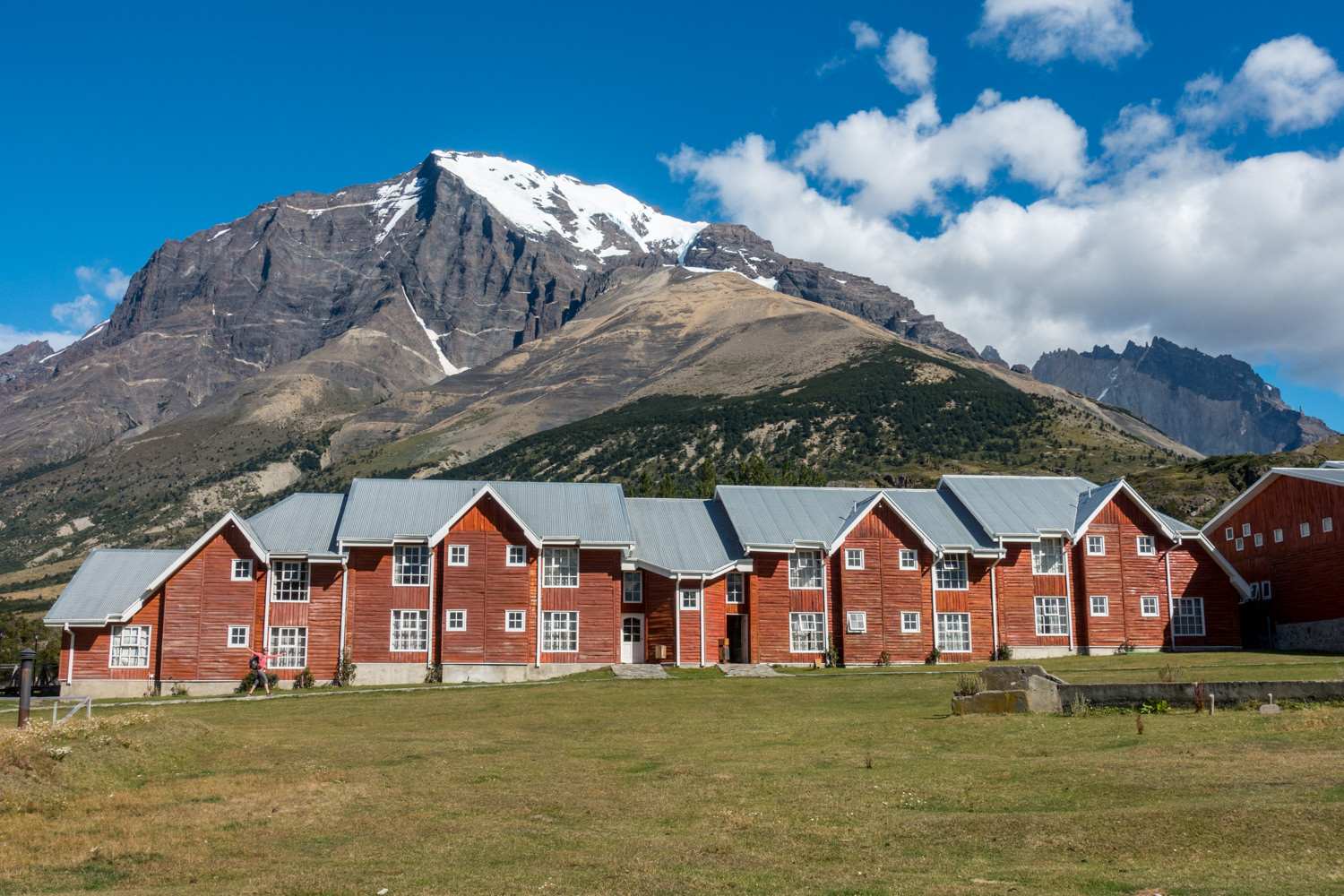
CAMPSITE RESERVATIONS
If you’re hiking independently, you’ll be required to book your own campsites. As of 2016, you must have reservations for all campsites or refugios prior to entering the park. Your proof of reservations will be checked at different control areas as well as all campsites and refugios, so don’t even attempt to enter the park without proof of reservation. Due to increasing popularity, you’ll need to book your campsites months out. To further complicate the process, there are three different agencies you’ll need to book through in order to complete the full circuit: CONAF , Vertice Patagonia , and Fantastico Sur .
In order to book your trip, you will need to organize your own itinerary with specific dates and desired campsites. Once you have an itinerary, you’ll need to ensure availability with all three agencies, which can take patience and a lot of perseverance. As of 2018, all three agencies are now set up for online reservations.
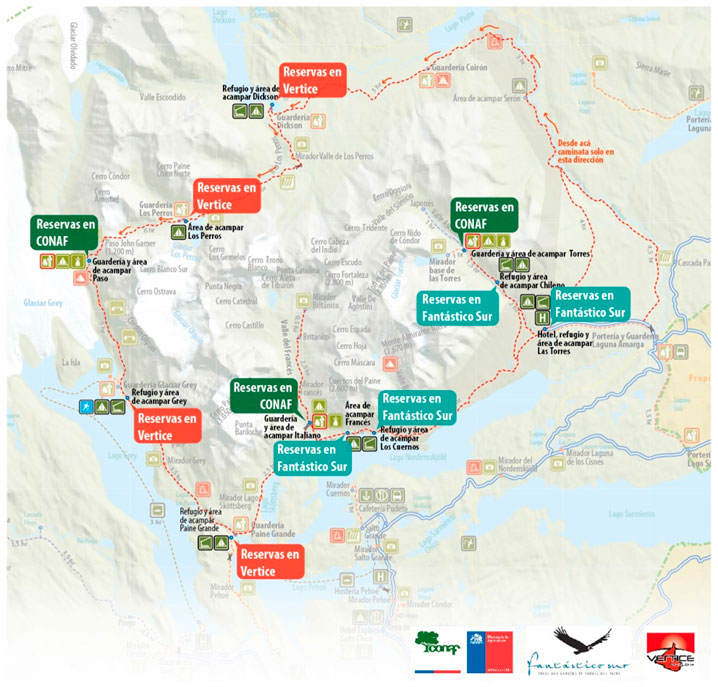
Map of campsites and reservation agency – map from www.parquetorresdelpaine.cl
CAMPSITES: Paso, Italiano, and Torres (Torres closed for 2018 season).
These campsites are free and provide basic services including a space for a tent, simple outhouse style bathrooms, and a three walled shelter to cook inside. Because they’re free, they can be some of the most competitive campsites to obtain. You can make reservations online here .
Vertice Patagonia
CAMPSITES: Paine Grande, Gray, Dickson, Los Perros
REFUGIOS Paine Grande, Gray, and Dickson.
These campsites and refugios range in quality and offerings. You can check their website for what is available at each site. Many people book all-inclusive guided trips for the W and O treks through Vertice Patagonia. You can make reservations online here .
Fantastico Sur
CAMPSITES: Seron, Las Torres, Chileno, Frances
REFUGIOS: Torre Central and Torre Norte, Chileno, Cuernos
DOMES: Frances
CABANAS: Cuernos
Fantastico Sur’s accommodation options can be somewhat confusing to decipher. There are some campsites (Chileno and Cuernos) where they don’t provide a cooking area, which means you have no choice but to pay for full board. Although full board can be costly when you’re used to cooking your own meals, we found the meals at Chileno to be delicious and high-quality. Your two camping options at many of their sites are platform and platform premium. More on that below. You can make reservations online here .
ACCOMMODATION TYPES
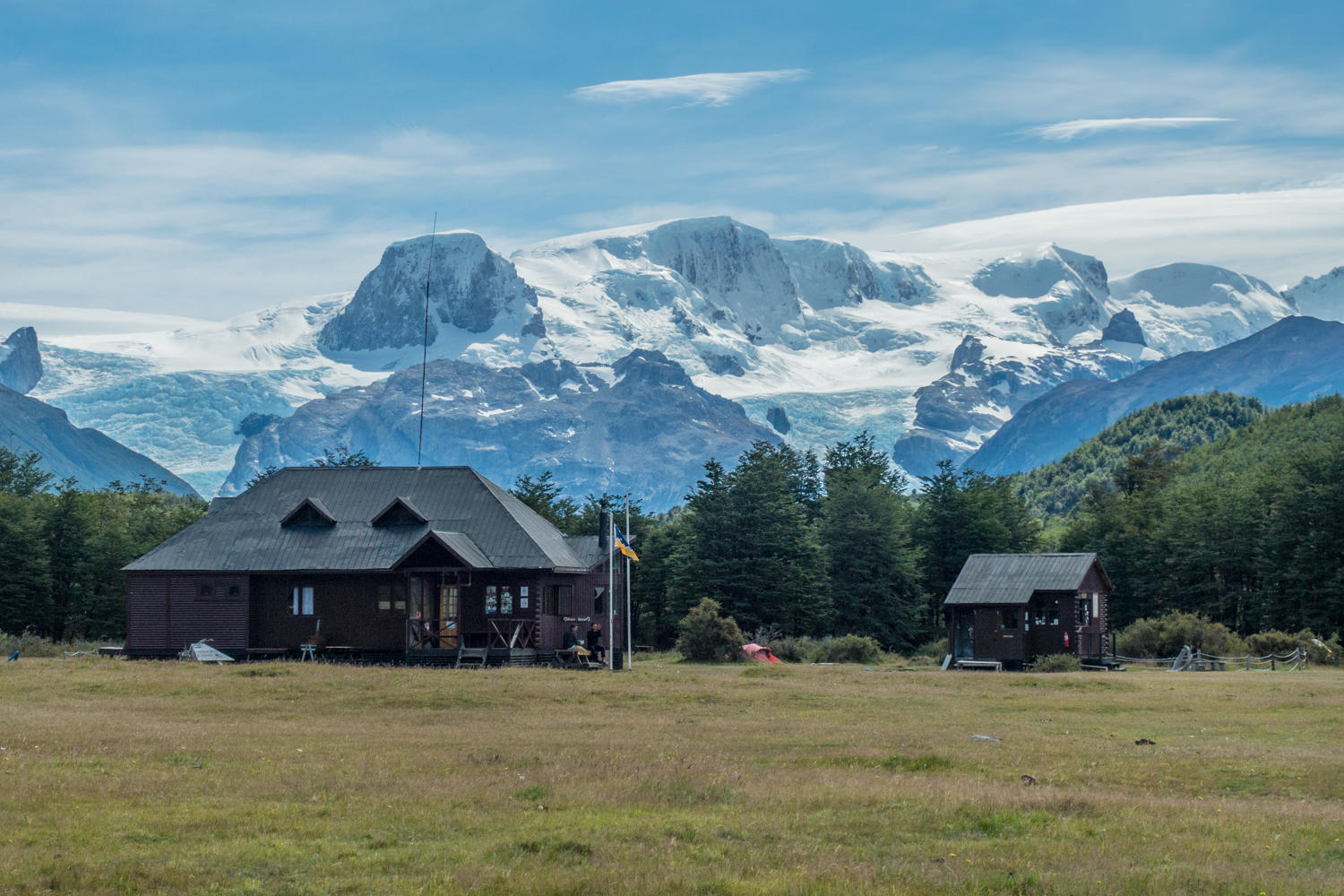
REFUGIOS – The most expensive accommodation option, refugios are simple mountain lodges with bunk-bed style mixed dormitories. They often offer shared bathrooms with shower and hot water, a restaurant and bar, and living rooms that are generally heated with firewood, if need be. Although you’ll be sleeping in a bed, we still recommend bringing a sleeping bag as you may only be offered a bottom sheet in some refugios. Refugios can range from small charming huts that sleep 27 (Refugio Dickson) to large, hotel style refugios that sleep 100 (Refugio Paine Grande).
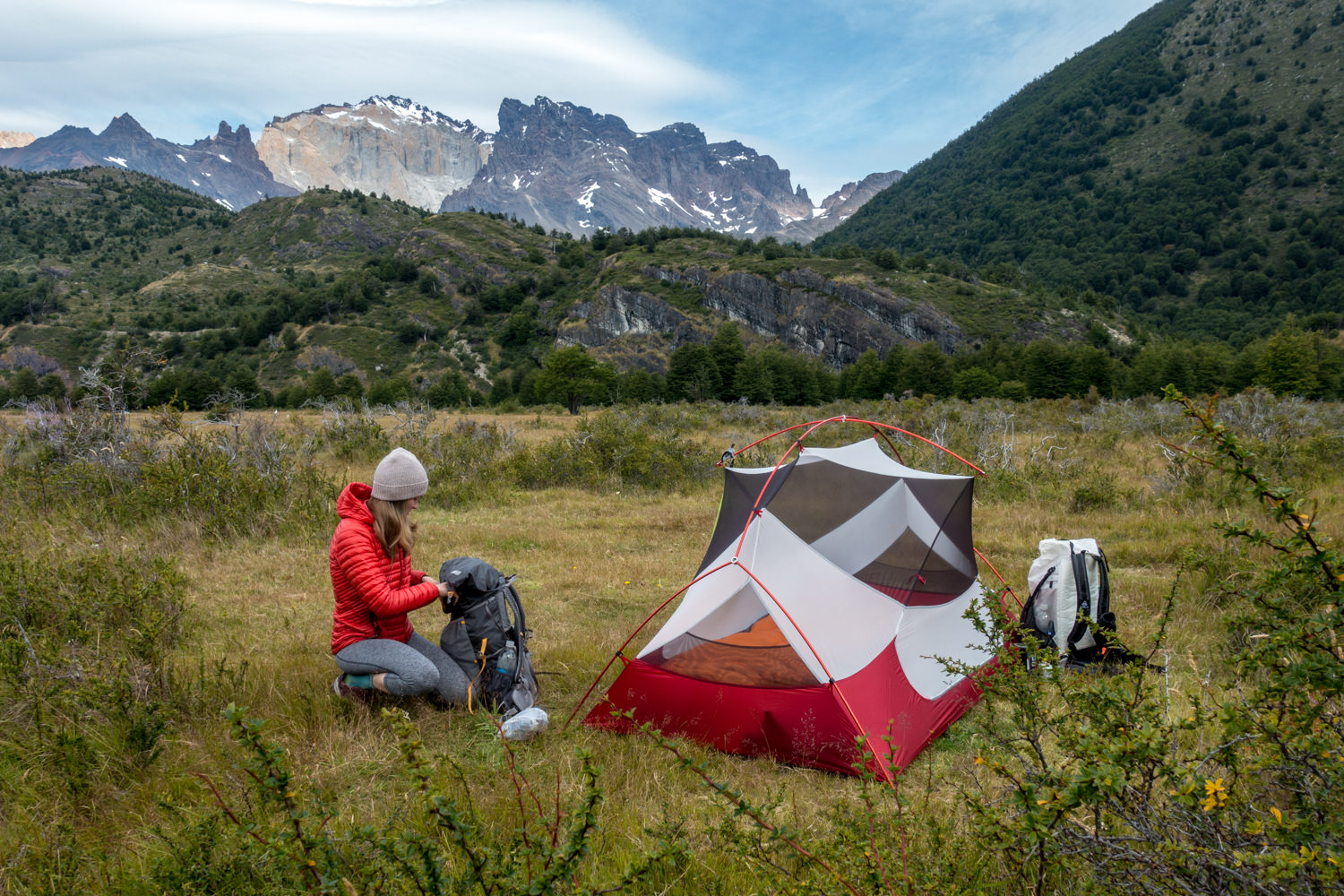
CAMPING – At most sites, you’ll set your tent up in a designated camping area, usually a field or a platform. If there’s also a refugio at the campsite, campers have access to the restaurant, bar, bathroom, showers (if available), and small store – which is awesome! There are designated cooking shelters at every campsite, which you’ll be required to cook in. There will always be a bathroom, but the style ranges from a simple outhouse style with no showers (Paso and Italiano) to flush toilets and hot showers (almost everywhere else).
Regular Campsite: At many of the campsites along the way you’ll just be pitching your own tent in a designated camping field.
Platform : You’ll be given an elevated wooden platform. You’ll use your own gear to set up camp. Full board consisting of three meals may or may not be included in the price. At Camp Chileno, this is the only option for camping.
Supported Camping : For an additional cost and with a pre-arranged reservation, you’re able to rent an installed tent, mattress, and sleeping bag at certain campsites. This can be a good option for those who want to camp, but don’t want to carry the weight of a full backpacking setup. This may or may not also have full board included.
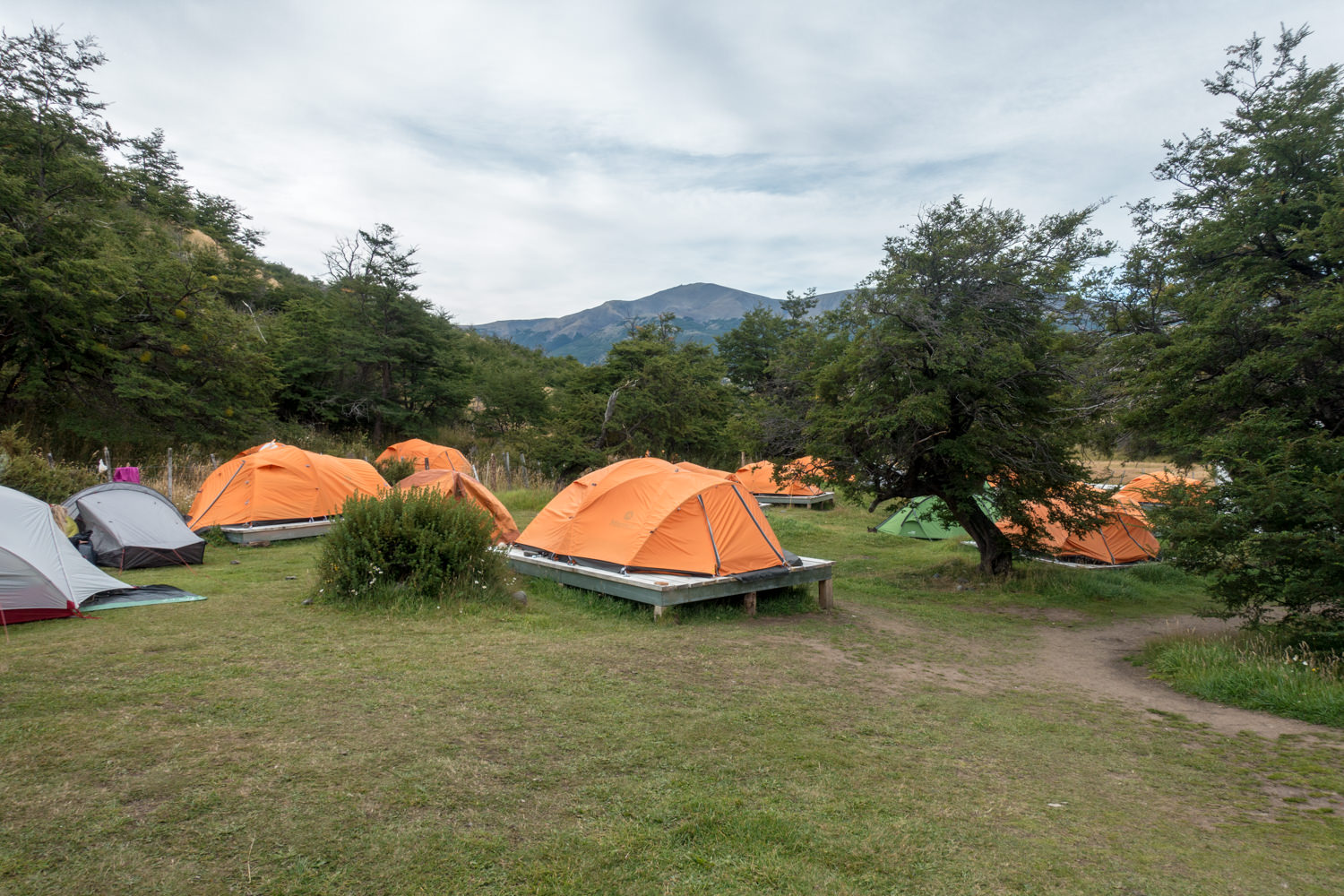
W TREK ITINERARY
By far the most popular trek in the park, most people complete the W hike in 3-5 days. You can complete the W trek in either direction, either starting at Paine Grande/Glacier Grey or at the Torres. We recommend starting at Paine Grande and saving the best for last, but that is merely our opinion. Below is the itinerary for that route.
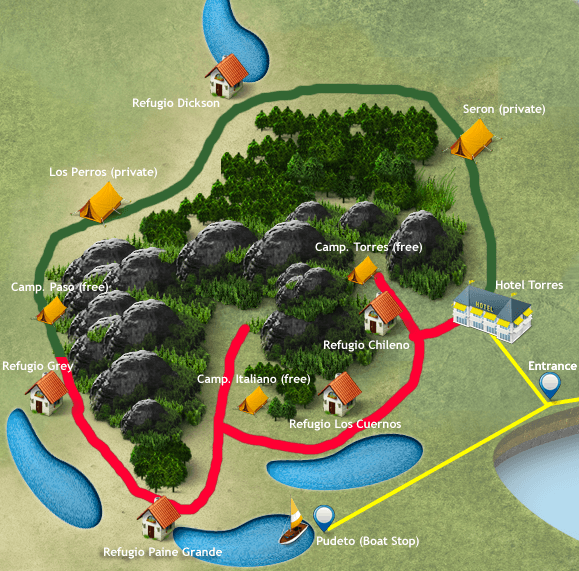
DAY 1 : PUERTO NATALES TO PAINE GRANDE (DAY HIKE TO GLACIER GREY)
Distance: 22 km/13.5 miles roundtrip
Time : 6-8 hours
Your day will start early today and be a mix of travel and hiking. You’ll start by taking the 7:00 am bus from Puerto Natales to the Laguna Armaga bus stop. Here everybody will get off the bus and pay their entrance fees. At this time, you’ll get back on the bus and head to the Pudeto stop. From here, you’ll take the Catamaran across Lago Pehoe to Refugio Paine Grande. Reservations are not taken in advance. You need to organize your crossing directly at Pudeto. The journey takes about 20 minutes. Current price for the cost is $40 USD per person one way. If all goes as planned you should be to Refugio Paine Grande by noon that same day.
After you disembark from the catamaran, you’ll drop the majority of your gear at Paine Grande and pack a day pack for your hike up to breathtaking Glacier Grey. It will take roughly 6-8 hours roundtrip to head to Glacier Grey and make it back to Paine Grande for the night.
If you want to go at a more leisurely pace, you can also add an additional night to your itinerary and stay at GlaGrey on the first night of your trip.
DAY 2: PAINE GRANDE TO ITALIANO (AND OUT & BACK IN VALLE FRANCES)
Distance: 7 km/4.5 miles to Italiano where you’ll set up camp. Then 11.5km/7 miles from Italiano up to Mirador Britanico and back.
Time : 7-8 hours
You’ll start the day with a relatively easy and short hike to Camp Italiano, where you can set up your camp and prepare a day pack for exploring the Valle de Frances. Because this hike is an out and back, you can hike as far as you want in the valley, though we recommend going all the way to Britanico- they views are unreal!
You’ll follow the Rio del Frances as you head up the valley with dramatic views of Paine Grande and it’s creaking hanging glacier along the way. There’s a beautiful mirador about an hour into the hike where many people will be gathered. If you have the time and energy, we recommend pushing on to the Britanico Mirador. The trail levels out a bit after the first mirador as you head deeper into the valley. You’ll be rewarded greatly as you arrive at Mirador Britanico.
DAY 3: ITALIANO TO CHILENO
Distance : 19 km/12 miles
Most of your hiking today will be hugging the shoreline of beautiful Lago Nordenskjold with breathtaking views of the Cuernos del Paine on your left. You’ll follow the straightforward and relatively flat trail until the trail splits. If you’re staying at Chileno, you’ll follow the trail to the left. If you are unable to get reservations at Chileno, you’ll most likely be camping at Central/Las Torres and will take the trail to the right. The trail to Chileno begins to climb almost immediately as it makes its way up the valley. After about an hour or so you’ll meet up with the main trail to the Torres and finish your hike to Chileno.
DAY 4: CHILENO TO MIRADOR TORRES AND BACK TO CENTRAL
Distance : 12 km/8 miles
Time : 4-6 hours
This is the day! You’ll set your alarm for an ungodly hour (4 am for us) and grab your breakfast in the Chileno refugio before beginning your headlamp climb up to the Torres for sunrise. You’ll hike for about an hour on forested trail before you hit the boulder field scramble, which will take another hour. You may have stripped all your layers on the hike up, but once you reach the Torres you’ll want to put them all back on and crawl into your sleeping bag to prepare for the sunrise show (if you’re lucky!) When you’ve taken all the photos you can muster, you’ll turn around and head back to Chileno, pack up your gear, maybe have a celebratory beer, and then head down to Central to finish your W Trek.
Because you started your hike so early today, you should have no problem catching a bus back to Puerto Natales that afternoon.
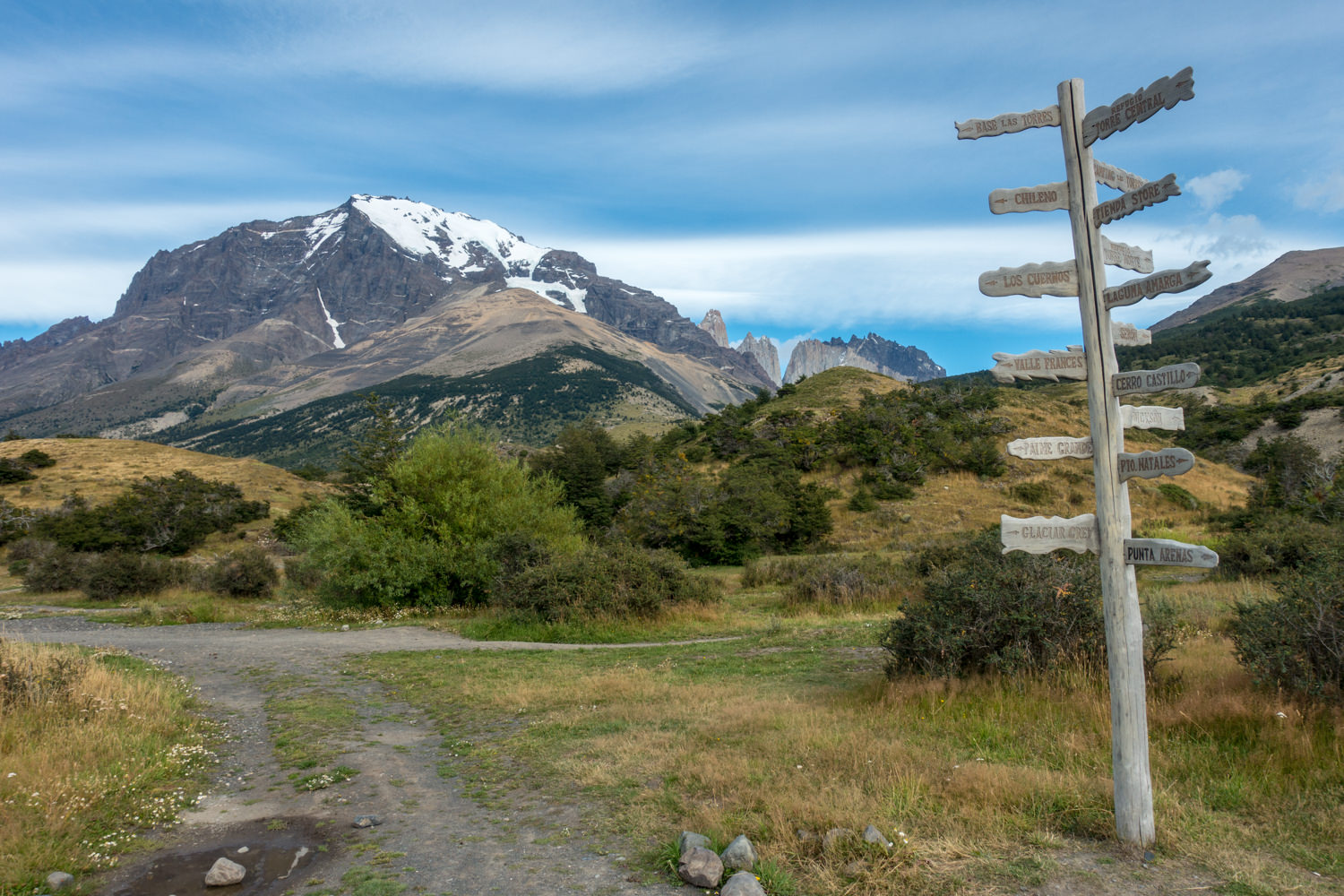
O TREK ITINERARY
We completed the O Trek in 6 nights/7 days and felt that the pace was good for us. We hike with our own lightweight backpacking gear and generally hike at a faster than average pace. That said, many people who want to take it at a slower pace will take up to 9 days to complete the circuit.
You can only hike the Circuit in a counterclockwise direction. You have two starting options: Hotel Las Torres or Paine Grande.
Beginning at Hotel Las Torres : You’ll get off the bus at Laguna Amarga, pay your park fee, watch a video, and then take the shuttle (3,000 Chileno Pesos each way) to Central, where you’ll begin your trek.
Beginning at Paine Grande : You’ll get off the bus at Laguna Amarga, pay your park fee, watch a video, and get back on the bus to head to the next stop at Pudeto. From Pudeto, you’ll take your prearranged catamaran to Paine Grande, where you’ll begin your O Trek in the counterclockwise direction.
Below is our 7 day itinerary starting at Hotel Las Torres with distances and estimated times. We found most estimated times on maps and in guidebooks to be conservative. Consider your own hiking style and speed when making a plan.
DAY 1: HOTEL LAS TORRES TO SERON
Distance : 13 km/8 miles
Time : 4- 5 hours
This day is a relatively easy and moderate day of hiking through forests. Camp Seron has a feild to pitch your tent, as well as some installed tents with rented gear. They have a small restaurant and bar, hot showers, shared bathrooms, and a cooking shelter. You’ll want to bring some bug spray as mosquitos can be quite fierce at this camp.
DAY 2: SERON TO DICKSON
Time : 5-6 hours
Your second day has several small accents, but is generally a moderate day of hiking through some beautiful landscapes. You’ll skirt the shores of beautiful Lago Paine and get your first views of the Cordillera Paine. Halfway through your day you’ll stop at the Camp. Coiron Ranger Station where you’ll sign in and show proof of all your reservations. You’ll eventually hit Camp Dickson, which is one of the most beautiful campsites on the trek, in our opinion. Grab a beer and make sure to head down to the river for some solitude and amazing views. Heads up: mosquitos are relentless at this camp.
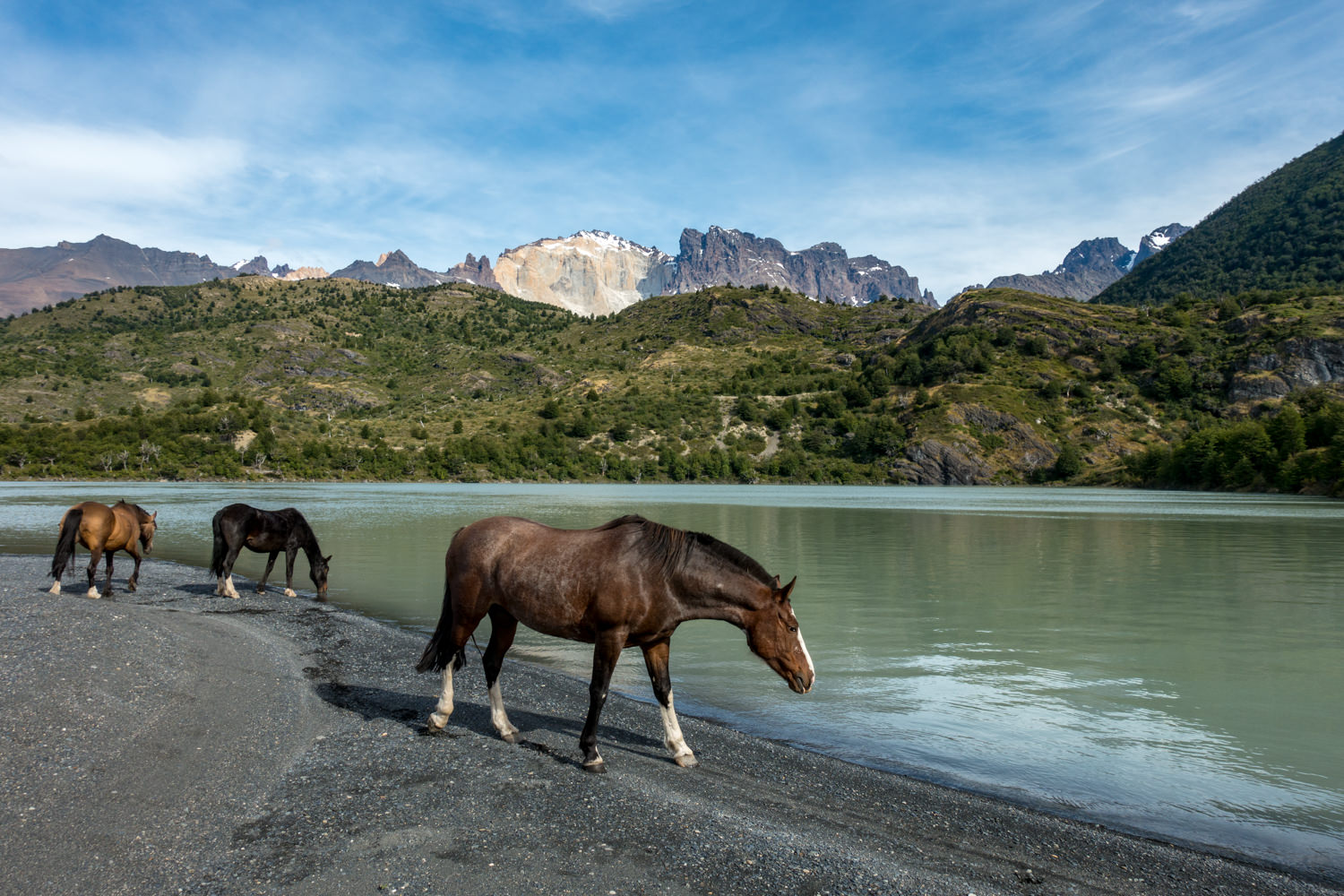
DAY 3: DICKSON TO PASO
Distance: 19 km/12 miles
Time : 7- 9 hours
We started this day before sunrise as we knew it was going to be a long day. About an hour into the hike we reached a beautiful mirador right at sunrise, which was really incredible. It’s a 2-3 hour hike to Camp Los Perros, where you’ll check in with the rangers and receive any information you may need about Paso John Gardner. From Los Perros you’ll begin a steep ascent through forest and eventually a boulder field as you make your way up and over the pass. Make sure to follow the orange pole markers which are set up along the way. It should take between 4-6 hours from Los Perros to Paso. The descent from Paso John Gardner is long, steep, and knee-busting, but hiking next to the breathtaking Glacier Grey along the way makes the escent tolerable.
Many people break this day into two hiking days with a night at Camp Los Perros, which is the last camp before you head over the John Gardner Pass. We decided to do the 12 km is one long day, which was totally doable if you are in decent hiking shape and the weather over the pass cooperates.
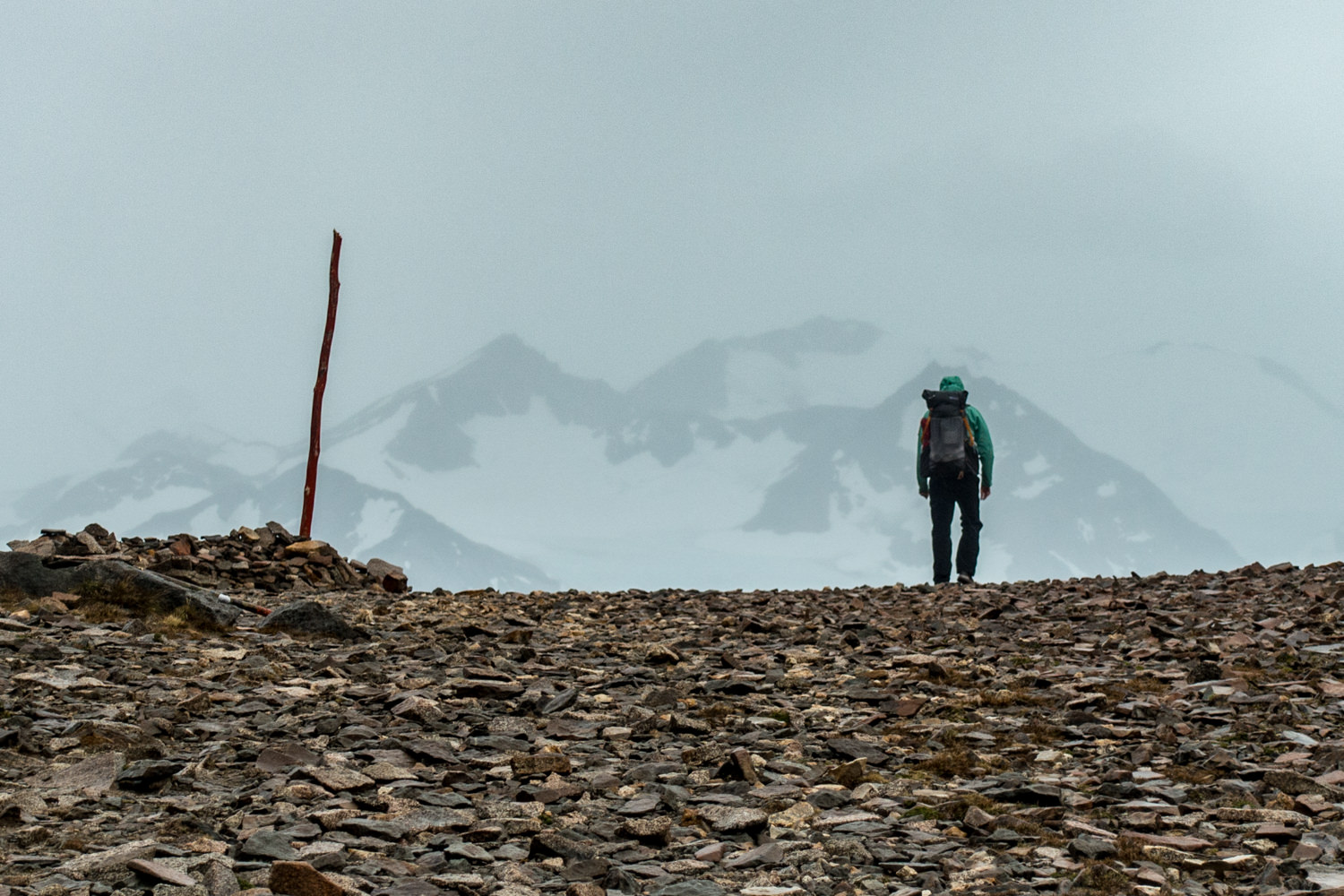
DAY 4: PASO TO PAINE GRANDE
Distance: 18 km/11 miles
Time : 5-7 hours
This day begins with some undulating ups and downs as the trail hugs the mountainside. You’ll be hiking alongside the immense and beautiful Glacier Grey for most of this day. You’ll cross three suspension bridges as you make your way to the Refugio Grey, where you’ll meet up with hikers completing the W Trek. From here on out, the trail will be more crowded and the solitude you experienced on the backside of the O will be a distance memory. That said, you’re also about to experience some of the most stunning scenery Torres del Paine has to offer.
After a short and easy side trip to the Mirador at Glacier Gray, you’ll continue on the trail to Paine Grande. There’s a slow and steady ascent to a beautiful and very windy mirador, before you begin your descent to Paine Grande and catch your first glimpse of beautiful Lago Pehoe.
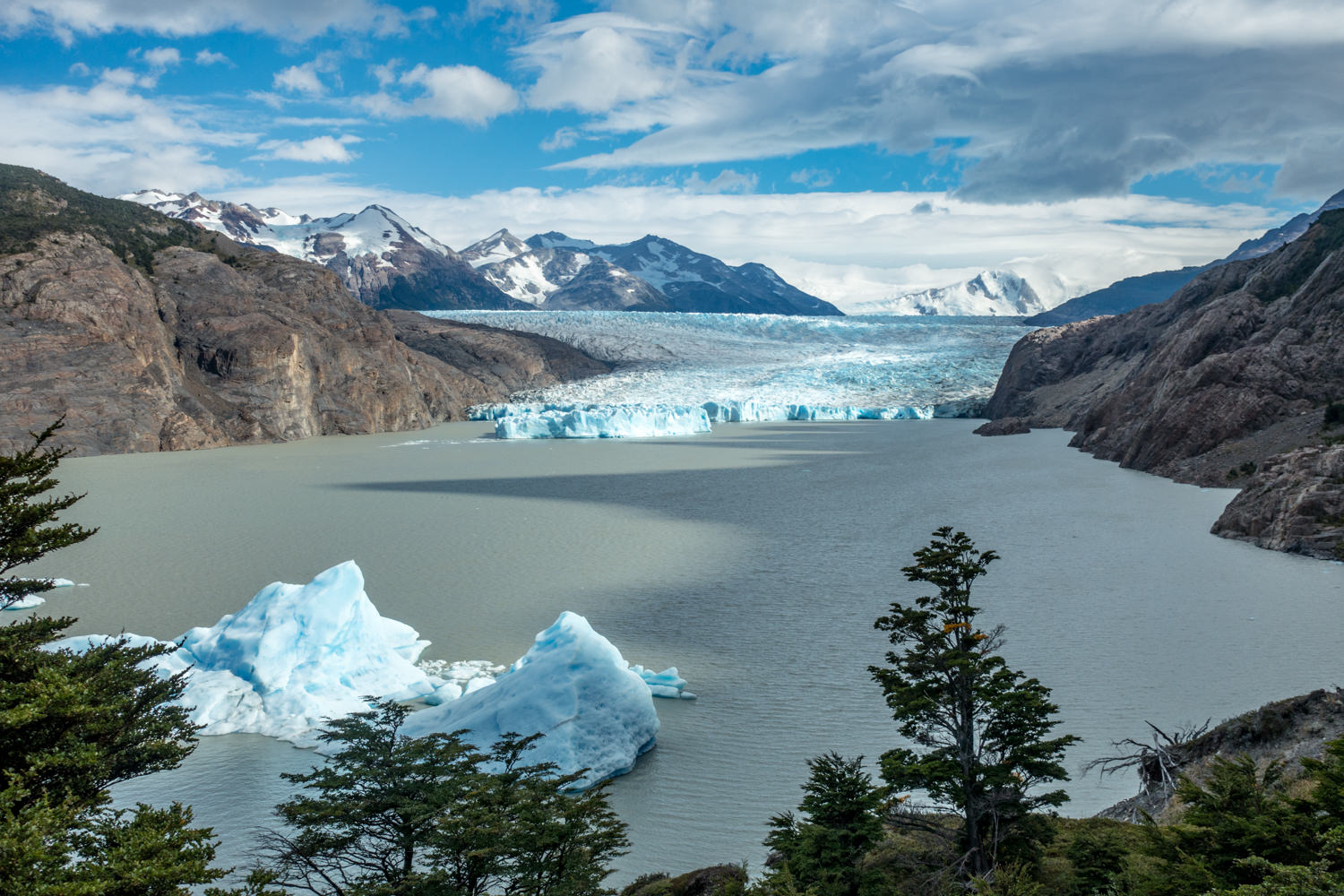
DAY 5: PAINE GRANDE TO ITALIANO (AND OUT & BACK IN VALLE FRANCES)
This day was one of our favorite in Torres del Paine. You’ll start the day with a relatively easy and short hike to Camp Italiano, where you can set up your camp and prepare a day pack for exploring the Valle de Frances. Because this hike is an out and back, you can hike as far as you want in the valley, though we recommend going all the way to Britanico- they views are unreal!
DAY 6: ITALIANO TO CHILENO
DAY 7: CHILENO TO MIRADOR TORRES AND BACK TO CENTRAL
This is the day! You’ll set your alarm for an ungodly hour (4 am for us) and grab your breakfast in the Chileno refugio before beginning your headlamp climb up to the Torres for sunrise. You’ll hike for about an hour on forested trail before you hit the boulder field scramble, which will take another hour. You may have stripped all your layers on the hike up, but once you reach the Torres you’ll want to put them all back on and crawl into your sleeping bag to prepare for the sunrise show (if you’re lucky!) When you’ve taken all the photos you can muster, you’ll turn around and head back to Chileno, pack up your gear, maybe have a celebratory beer, and then head down to Central to finish your O Trek.
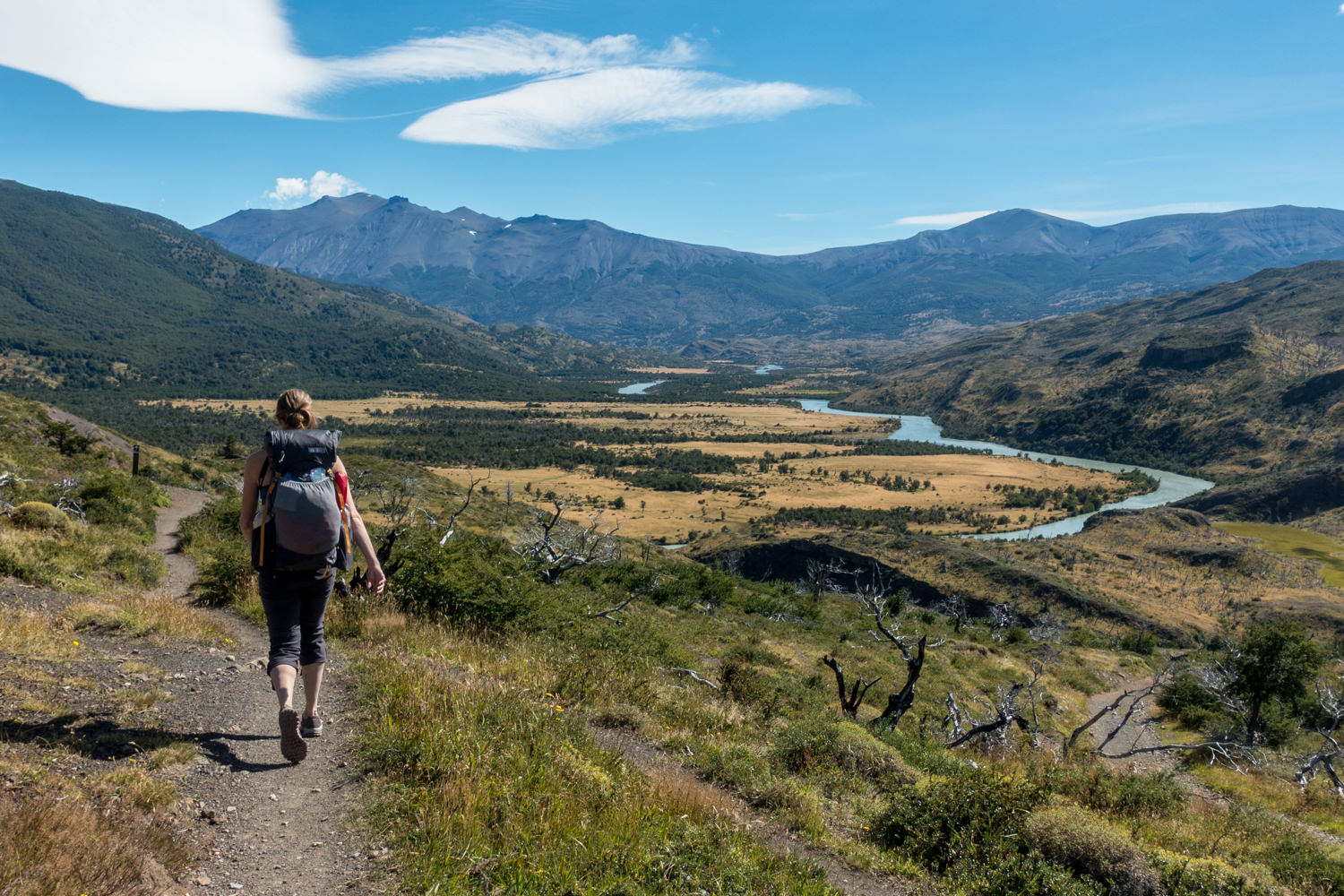
Q TREK ITINERARY
Covering the most trail in Torres del Paine, the Q Trek travels the same route as the O, with an additional day of hiking south of Refugio Paine Grande along Lake Pehoe. Very few hikers cover this additional section so you’ll have some solitude and also earn one of the most spectacular views of the park, the Cordillera Paine rising above Lake Pehoe. You used to be able to begin your hike with the Q portion, leaving from the last bus stop, Administración, and hiking towards Paine Grande.However, now CONAF only allows one-way travel from Paine Grande to Administración, which requires you to end your Torres del Paine hiking there.
Because you have to end your hike with the section from Paine Grande to Administración, we suggest beginning your hike by taking the catamaran to Paine Grande and traveling east around the circuit. That way, you’ll complete the full loop and by the time you return to Paine Grande, you’ll just head south towardsAdministración to complete the Q hike.
WHAT TO PACK
Whether you’re heading out to do the W or O Trek in Torres del Paine or chasing sunrises on Fitz Roy, you’ll want to make sure you have the essential gear you need to be safe and comfortable.
For a complete gear list for backpacking in Torres del Paine, check out our Patagonia Gear Checklist . For more information on general lightweight backpacking gear, check out our CleverHiker Gear Guide . Below is a quick snapshot of our main gear items.
Tent : MSR Hubba Hubba NX
Backpacks : Hyperlite Mountain Gear Southwest 400 and Gossamer Gear Gorilla 40
Sleeping Bags/Quilts : Feathered Friends Egret Nano 20 and Katabatic Flex 22 Quilt
Sleeping Pads: REI Flash Insulated Pad and NEMO Tensor Insulated
Stove: MSR WindBurner Stove System
Hiking Shoes : Saucony Peregrine 8’s
MAPS AND GUIDEBOOKS
When we began planning our trip to Patagonia, we found most of the resources to be grossly outdated, with the existing guidebooks receiving poor reviews. Moon released a new guidebook in the fall of 2017, which we found helpful, but we used a combination of internet resources, maps, and guidebooks to plan our trip.
Moon Patagonia – We used this book heavily in the planning phases of our trip. It offers a nice overview of all the regions and towns. Though there is limited detailed information on specific hiking and backpacking trips, we still found it to be a helpful resource.
Torres del Paine Trekking Map – This waterproof and tear-resistant topographical map includes contour lines, timed trails, shelters, camping and clear information on water sources. Recommended by the National Parks Administration and the National Tourist Service. We used this map everyday on our O Trek.

One of the pleasures of hiking in Patagonia is that you can drink water directly from the source on the trail. On the W Trek, you’ll pass a water source every 30-45 minutes so there’s really no need to carry more than one full water bottle at a time. On the O Trek, you’ll cross water less frequently, but you’ll still cross a source every 45-60 minutes, depending on your pace.
The National Park Service does a really great job at educating visitors on how to use adequate measures to prevent contamination of water sources and keep the water safe for everyone. We still recommend you judge your water source. If there is live stock in the area or if the source runs through a trekking trail, you may be better off waiting for the next source. We brought along Chlorine Dioxide tablets, but never used them.
Travel Insurance
We highly recommend purchasing travel insurance if you plan to trek in Patagonia. Most trekking locations in Patagonia are remote, so if something goes wrong, you’re likely to need an emergency evacuation and that can get insanely expensive.
We did a bunch of research on travel insurance companies and ended up choosing World Nomads for our travels. Their rates were reasonable, their coverage met our needs, and communicating with them was easy. We fortunately didn’t need to use our travel insurance, but the peace of mind alone was well worth it.

Leave No Trace, Rules, & Regulations
Dirty toilet paper is the most common form of backcountry litter we found on the trails in Torres del Paine. When you are unable to use bathroom facilities on the trail, it is essential that you know how to properly dispose of your waste and toilet paper. To dispose of human waste the right way, you need to dig a cathole at least 6-8 inches deep before you go, and if you don’t pack a trowel (we currently use this cheap and lightweight snow stake ), you won’t be able to dig a hole deep enough. It’s as simple as that. After doing your business, either bury your TP deep in the hole, or pack it out in a ziploc bag.
You love nature. That’s why you’re out there. So educate yourself on Leave No Trace principles and help us keep our wild spaces beautiful for generations to come.
CONSIDER GIVING BACK
Patagonia, and more specifically, Torres del Paine is one of the last truly wild and remote spaces. At CleverHiker we encourage people to get out and experience nature at it’s finest and that mission comes with a great responsibility. If you were lucky enough to experience the breathtaking beauty of Torres del Paine, we encourage you to give what you can to continued conservation efforts. We all need to be stewards of the natural world to protect our wilderness for generations to come.
We’ve donated to the Torres del Paine Legacy Fund , which works to preserve and restore ecosystems, improve tourist infrastructure by mitigating visitor impacts, promotes community development, and diversifies recreational activities. The best part? 100% of your donation will directly support sustainability actions in Torres del Paine.
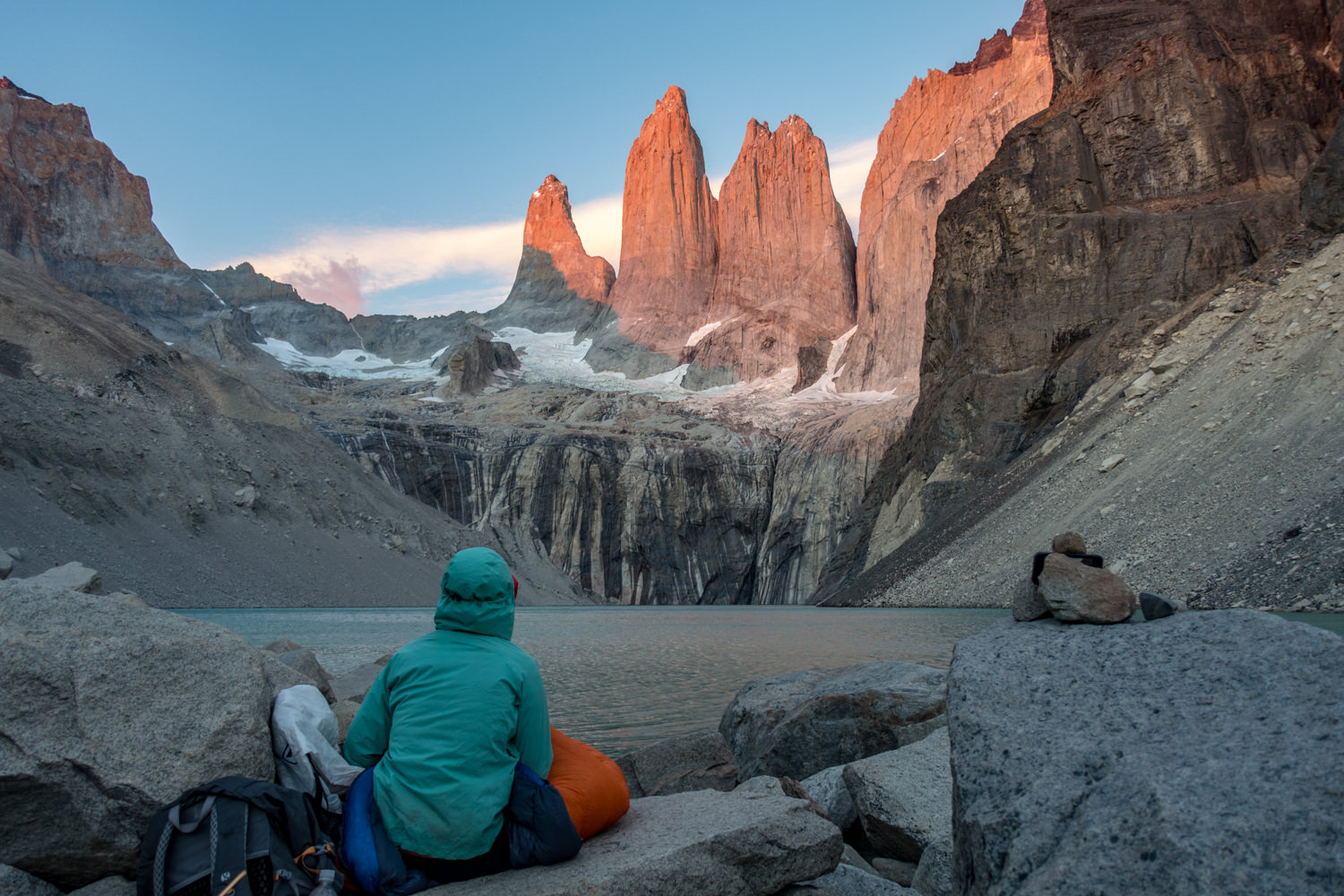
more information
Hopefully you found this guide helpful for planning your trip to Torres del Paine.For more helpful resources check out the links below.
CleverHiker Top Gear Awards
Essential Trail Skills Video Series
Lightweight Gear Basics Video Series
Disclosure: Some of the links on this page are affiliate links, which means we may receive a small commission if purchases are made through those links. This adds no cost to our readers and helps us keep our site up and running. Our reputation is our most important asset, which is why we only provide completely honest and unbiased recommendations.

How to hike the W in Torres del Paine, Chile (Trekking Guide)

The W in Torres del Paine is the most popular multi-day hike as you come to see most of the highlights of the park. If you have a look at the map of the trail you'll quickly realize why it is called the W trek. (updated: August 2018)
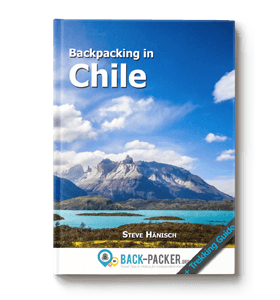
I'll first explain the standard route and then give examples of longer & shorter itineraries. Please plan your trips always regarding to your physical ability and your experience. If you have no or just a bit of hiking experience keep it low and plan more time for each trek. [divider] How to hike the W in Torres del Paine – Quick Links (use the anchor links to jump to the section, use „Top“ to get back to this menu)
- Preparation for the hike
- The W in 5 days, 4 nights
- The W in 4 days, 3 nights
- The W in 6 days, 5 nights
- Guided Trekking Tours
- Video of my experience
1) Preparation
To prepare for trekking in Torres del Paine checkout my other post named ‘How to prepare for hiking in Torres del Paine' with information about transport, accommodation in Pto. Natales, Gear and prices. Moreover I recommend a good health & travel insurance: the one I used from WorldNomads is perfect for this trekking trip as it covers also adventure activities! Please make sure to reserve all camping spots in advance as this trek is the most popular one and visitor numbers increased during the last 3 years. Reservations for Campamento Torres, Italiano and Chileno are mandatory during the official high season from October – April. Please be aware that Campamento Torres is closed due to reconstruction works for the whole 2018-2019 season! If you are too late and not able to make reservations your only chance is to take part in a guided trekking tour or explore the park with day hikes .

2) The W in 5 days, 4 nights (100 km, 139.800 CLP)
This is the perfect schedule for a relaxed time in the park starting with a nice boat trip and the Glacier Grey, finishing with the sunrise at the Torres in the morning of the last day.
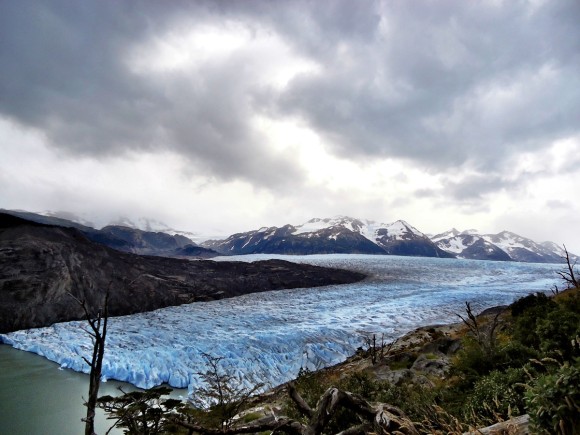
After your arrival in Paine Grande start walking to the Refugio Grey – the path goes uphill, along the Lago Grey with some lookouts on the way. The whole trek will take around 3-4 hours so you'll arrive in the afternoon, can setup your tent (5.000 CLP) and have dinner. If you have some time left you can go down to the beach and maybe touch some icebergs.
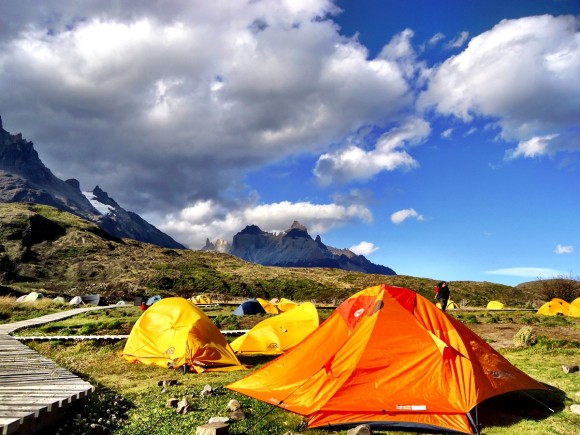
Get up early, leave your stuff at the camp and just take a daypack to hike up to Paso (at 8:00 a.m.). After around 1-1,5hours you'll reach a former campsite (signs with “no camping”) with a lookout nearby (you can see a small path which leads to the platform, hard to find!) – time to enjoy the view to the Glacier for a while (9:30 a.m. – 10:00 a.m.). Now you can decide if you want to continue a bit more into the direction of Paso or keep it shorter. The good thing about the way to Paso: you'll have great views to the Glacier and see a bit more of the massive southern icefield. The downside: it's uphill and adds more km to your trek today (on top of the mentioned 19 km). Do not make all the way up to Paso as it is a pretty long walk (you have to get back to Paine Grande today on time to be fit for the next day).
After your return to Refugio Grey at around lunchtime (12 / 1 p.m.) pack your stuff and head back down (at around 1 / 2 p.m.) to Paine Grande where you spent the night (6.000 CLP), it will take around 3-4 hours – make sure to find a nice place next to the little hill to avoid a bit of the massive winds down there.
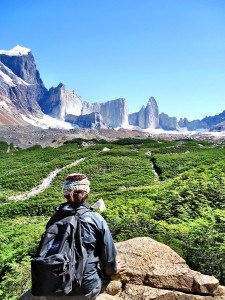
Today is a long & tough day, so get up early again and walk (start at 8:00 a.m.) to Campamento Italiano (around 2 hours = 10 a.m.), leave your big backpack at the camp and head to the Mirador Frances with your daypack (take lunch, water, suncream). After 2,5 hours you'll reach the Mirador and have lunch (12:30 pm.m.). Go back down to Italiano, grab your backpack and keep going to Los Cuernos (03:00 / 3:30 p.m.). After another 2 hours you should reach the campsite (at 5:00/5:30 p.m. – 70000 CLP). Alternatively you make it a short (and much cheaper) day by spending the night at Campamento Francés (13.000 CLP).
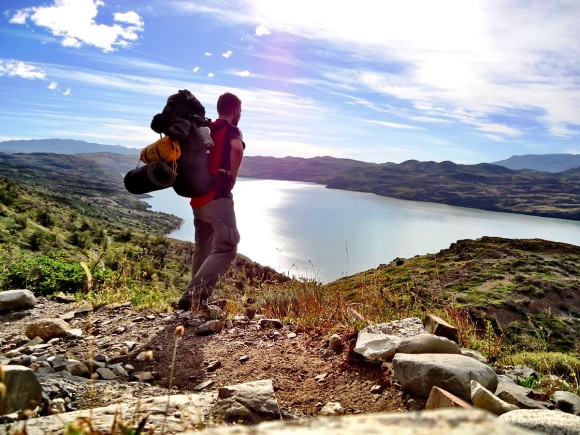
On your last full day you have a nice hike ahead – starting flat and going up at the end to the base of the Torres. Start your walk around 9 a.m. to Campamento Chileno. The trail goes along the Lago Nordernskjöld, after around 3,5 hours you'll reach the shortcut to Chileno (it's hard to miss as there is a big sign saying “shortcut to Chileno”). Another 2 hours later you'll arrive at the Refugio Chileno (around 2:30 p.m. / 3 p.m.) you can make a short break and afterwards head uphill to the free campsite Campamento Torres, this will take around 1 hour. After setting up your tent use the chance to visit the Torres for the first time – it's a 45 min walk uphill. Remember that you can only stay there if you made a reservation beforehand!
Note: Unfortunately Campamento Torres will be closed for the 2018-2019 season due to maintenance work – therefore you need to switch plans to camp at Chileno (pretty pricey) or down at Campamento Las Torres (next to Hotel Las Torres). You should consider doing the sunrise hike only if you stay at Chileno and calculate 2,5 – 3h to reach the towers.
Go to bed early today as you have to get up very early tomorrow to see the sunrise at the towers. Depending on the time of the sunrise (ask the rangers) set your alarm 1 – 1,5hours before and prepare a daypack with mat, sleeping bag and breakfast as well as rain jacket)
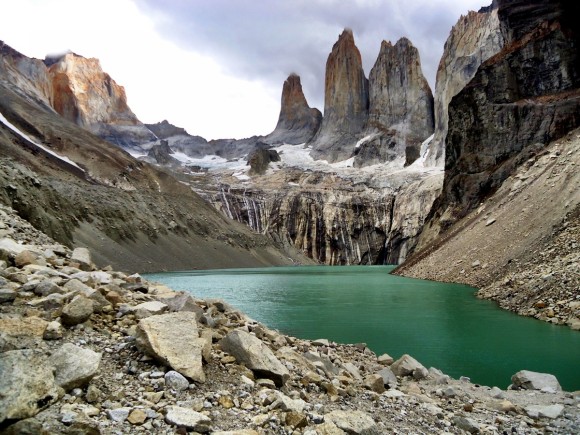
In summer the sunrise is around 6 a.m., therefore leave the camp with your daypack at 5 a.m. to arrive at the Mirador of the Towers on time. Set up your little picnic and enjoy – if you are lucky you'll see amazing colors with a clear view, having the best breakfast ever. If you are not lucky like me you'll have rain and clouds – in that case you'll love the fact that you've been up here the day before. Don't make the fault to skip the way up when it is raining in the camp – the weather changes really quick and you might regret it later. Go for it anyway as it is your last day and it doesn't matter if your sleeping bag gets wet up there 😉
After your return take down your tent, pack your stuff and leave the camp at around 9 a.m. Head down to the Hotel Las Torres – it'll take around 3 hours to arrive there. Depending on the time you arrive (should be 12 p.m.) you can decide if you want to walk from the Hotel to the entrance (1 hour, 7,5km along the road) or pay 2.800 CLP extra to take the minibus which leaves around 2 p.m. The Bus back to Puerto Natales leaves at 2:30 p.m. from the entrance as already described in the preparation Guide .
Congratulations! You've done the W in Torres del Paine and with that around 100 km by foot.
3) The W in 4 days, 3 nights (100 km, around 134.800 CLP)
If you are short on time but good in shape you can also do the whole ‘W' in one day less. For this you simply make Day 1 and Day 2 in one day. With this you have a real challenging program right at the start.
Day 1: Puerto Natales – Refugio Grey – Paine Grande (28 -30 km, 15.000 CLP + 21.000 CLP + 20.000 CLP + 6.000 CLP) Leave Puerto Natales with the early bus (15.000 CLP return ticket) and get off at Pudeto (next stop after the park entrance – fee: 21.000 CLP) where you catch the catamaran to Paine Grande (20.000 CLP). Use the waiting time to visit the waterfall nearby (ask for the time of the boat before leaving). After your arrival in Paine Grande leave your stuff at the camp and just take a daypack to hike up to the Refugio Grey – the path goes uphill, along the Lago Grey with some lookouts on the way. The whole trek will take around 3-4 hours so you'll arrive in the afternoon (4 p.m.). Keep walking in the direction of Paso.
After around 1-1,5hours you'll reach a former campsite with a lookout nearby – time to enjoy the view to the Glacier for a while (5 p.m.). Do not continue the way up to Paso as it is a pretty long walk (you have to get back to Paine Grande today to be fit for the next day). After your return to Refugio Grey (6 p.m.) head back down to Paine Grande where you spent the night (6.000 CLP), it will take around 3 hours – make sure to find a nice place next to the little hill for your tent to avoid a bit of the massive winds down there.
Continue with Day 3 of the previous itinerary
4) The W in 6 days, 5 nights (100 km, around 137.000 CLP) – not in 2018/19!
Day 4: Campamento Italiano – Refugio Chileno (19 km, 139.800 CLP) Again you can take it easy. Start your walk around 10 a.m. to Campamento Chileno. The trail goes along the Lago Nordernskjöld, after around 5,5 hours you’ll reach the shortcut to Chileno (it’s hard to miss as there is a big sign saying “shortcut to Chileno”). Another 2 hours later you’ll arrive at the Refugio Chileno (around 5:30 p.m.). Remember that you can only stay here if you made a reservation beforehand!
Day 5: Refugio Chileno – Campamento Torres (8 km, free) As you see you have the most relaxed day ahead because you just move from one campsite to another. Have a slow start and head uphill, set up your tent and use the huge amount of time to spend some hours at the Torres in the afternoon. Also here you mostly need a reservation to camp.
For Day 6 continue with Day 5 of the standard itinerary.
Consider: The free campsite Torres is very popular, therefore you can stay mostly only for one night there.
5) Essentials
Get my chile guide incl. tdp itineraries.

6) Guided Trekking Tours
Another option is to book a complete tour – this way you can leave the organization, gear rental, transportation, food and booking of campsites to local experts. Though you pay more you'll get the full package this way including porters and a knowledgable guide. After working with them in Peru I highly recommend the tours offered by G Adventures as their philosophy and focus on sustainable travel are in line with my personal values. With many years of expertise you can expect a well organized, fun trips in small groups with like-minded travelers:
- W-Trek with G Adventures – 6 day trek including meals, guide, camps, tents/hotel, transport and porters
- “O” Circuit-Trek with G Adventures – 11 day full circuit trek (includes the ‘W') including meals, guide, camps, tents/hotel, transport and porters
- Hike Patagonia in depth – active 14 day tour covering the highlights of Patagonia, including the Torres del Paine W trek, El Chaltén (Fitz Roy, Cerro Torre) and El Calafate (Perito Moreno glacier) including meals, guide, camps & tents, hotels, transport and porters
- Patagonia & Tierra del Fuego – active 14 day tour covering the highlights of Patagonia, including the Torres del Paine W trek, El Chaltén (Fitz Roy, Cerro Torre), El Calafate (Perito Moreno glacier) and Ushuaia. This also includes meals, guide, camps & tents, hotels, transport and porters.
7) Video of my experience
In 2016 I revisited Torres del Paine and spent around 2 weeks inside the National Park: first I hiked the full circuit (which includes the “W”), next I stayed at the Hotel Las Torres inside the park for a few more days to explore the several day tour options.
[divider] Info: During my time in Patagonia, I hiked the W, the circuit and the Q. I hiked the “Q” in 2013 and did the circuit again in 2016, altogether I spent 3 weeks in the park. All times here are based on my experience (i hiked all the trails I'm writing about) – I would say I'm a bit faster in hiking than the average hikers but I made some stops in between for taking photographs and filming. The prices mentioned are for camping and per Person. A good hiking map will be provided for free once you enter the park, you should consider getting a waterproof map beforehand for planning purposes. This article is part of a whole series of free guides for Backpacking in South America . [divider]
You hiked the W in Torres del Paine as well? Tell us more!
If you have any tips or hints feel free to join the conversation – post a comment below and share your experience of hiking the W in Torres del Paine! Moreover you can share this article with your friends on Twitter, Facebook or Google Plus by using the related buttons on the left. [divider]
Helpful? Pin Me!
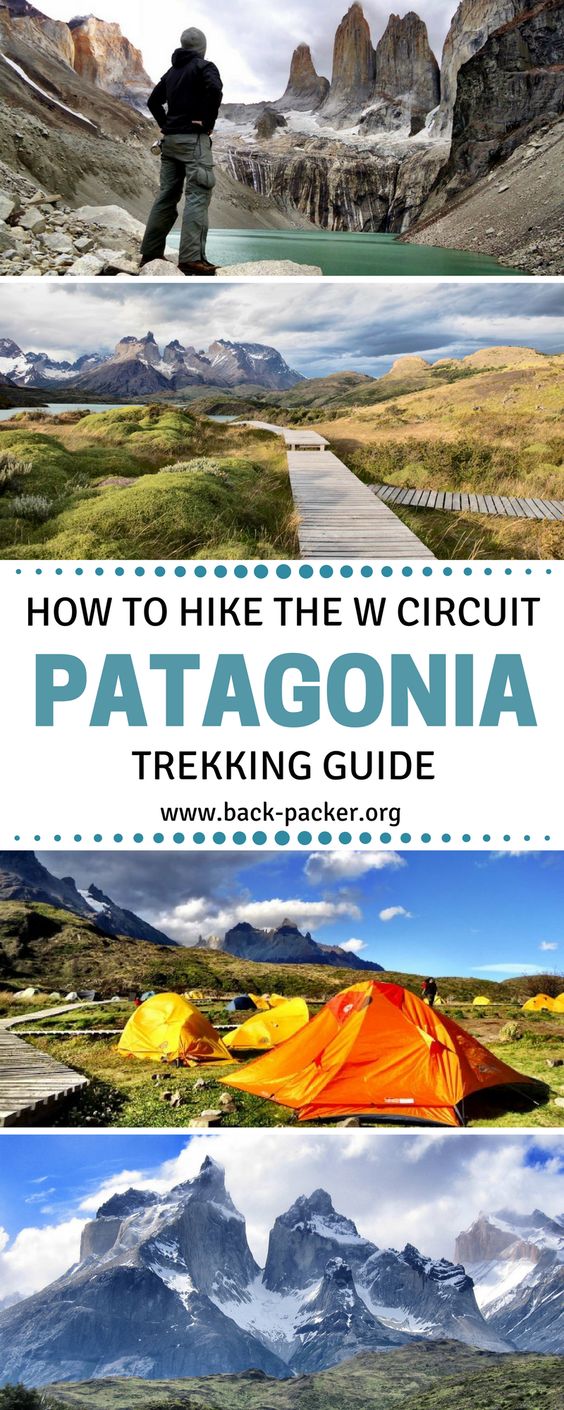
About The Author
Steve Hänisch
Verwandte beiträge.
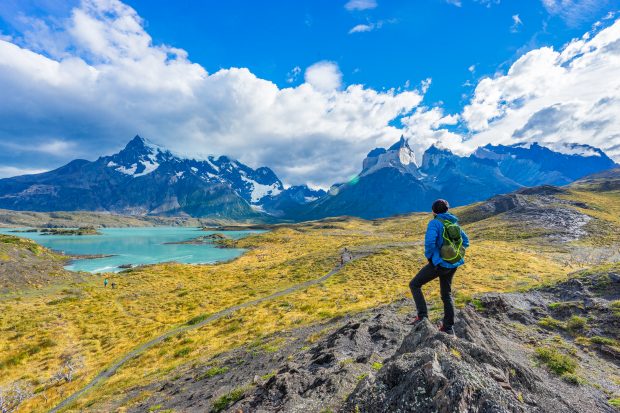
Best Day Tours & Day Hikes in Torres del Paine, Chile (Patagonia)
In this article I introduce you to the best day tours & day hikes in Torres del Paine. In contrast to the popular multi-day treks…
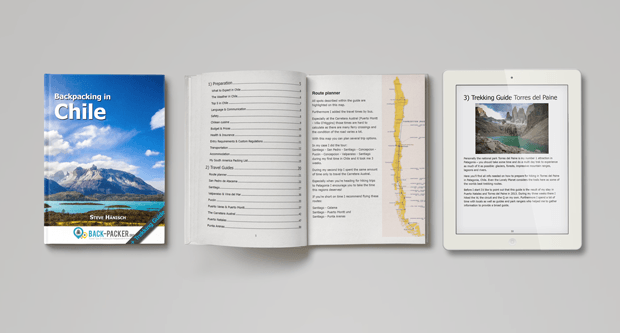
Backpacking in Chile (Book) – all Links & Accommodation recommendations
Thanks again for purchasing my travel guide – as promised you can find all related links in this article, sorted by chapter. Each URL will…
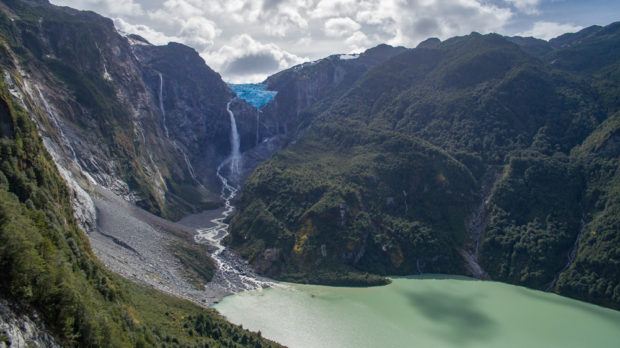
Top 10 Places to visit along the Carretera Austral in Chile
The Carretera Austral in Chile is definitely the highlight of Patagonia as this 1,200 km long road takes you to the most impressive corners of…
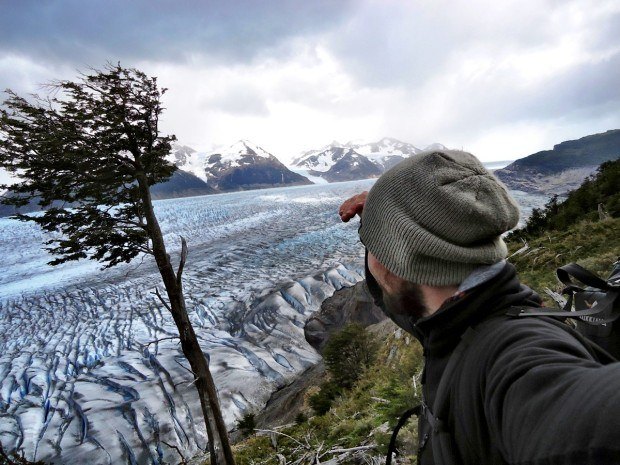
Trekking Guide: How to hike the Circuit in Torres del Paine, Patagonia (Chile)
If you are in Patagonia you should spent as much time as possible out there in the nature. Therefore the Circuit Trail in Torres del…
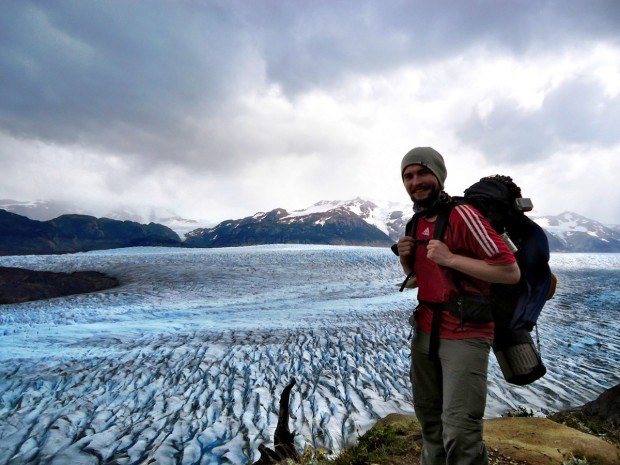
Trekking Guide: How to prepare for hiking in Torres del Paine, Patagonia (Chile)
Here you’ll find all info needed on how to prepare for hiking in Torres del Paine in Patagonia, Chile. Even the Lonely Planet considers the…
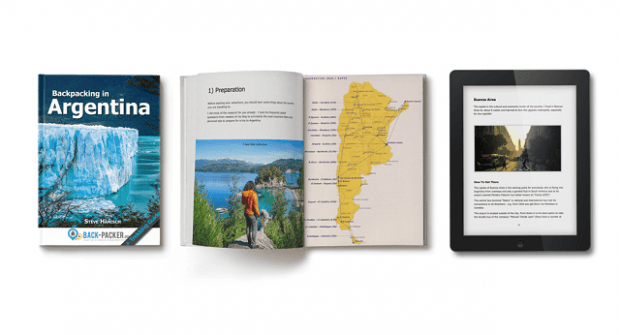
Backpacking in Argentina – my Argentina Travel Guide
My Argentina Travel Guide helps you to plan your trip to Argentina and explore the most incredible places this country has to offer from Salta…

How to Hike the Torres del Paine W Trek
- Chile / Hiking / Outdoors / Patagonia / South America
The Torres del Paine W Trek was one of our favorite hikes to date.
Our guide, Roberto, was wide-eyed and frantically waved us over. We quietly tiptoed towards him as he pointed across the river to an Andean Deer. Moments after, we realized there was another just a few yards up stream. Our cameras fired off as we watched them cross the river and through our path.
After getting back from our Patagonia Winter hike, we can’t stop thinking about how amazing the experience was. Shortly after our encounter with the Andean Deer, we learned that they are endangered and extremely rare to encounter. Our guide has hiked the trail over 200 times and saw them only one other time.
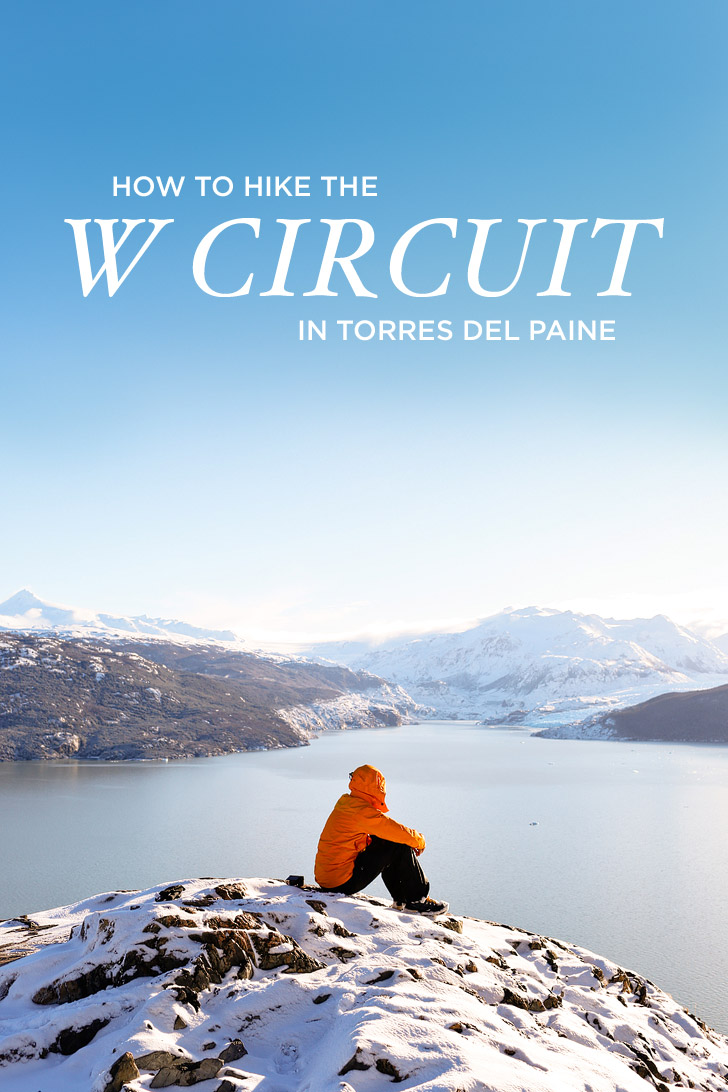
This post may contain affiliate links, where we receive a small commission on sales of the products that are linked at no additional cost to you. All opinions are always our own. Read our full disclosure for more info. Thank you for supporting the brands that make Local Adventurer possible.
Last Updated: Jan 20, 2020. First Published: August 15, 2017
The busy season is October through April (their summer), with December to February being the most popular time. The slow season is May to September (their winter).
It’s easy to see why summer is popular. Warm temperatures and long daylight hours make hiking easier. Of the 252,000 visitors, 80-90% visit during the warmer months. Winter is when the guides fall in love with the park again. It becomes a true wilderness experience again. The hike up to the Granite Towers will typically have anywhere between 800-1000 hikers during the busy season, but when we were on the trail, we only ran into 1 other hiker.
After our experience, we highly recommend going in the winter ! The downside is that the days are shorter, so you have to hike at a faster pace. We were worried about the cold, but it wasn’t as bad as we anticipated, and it was worth it to have the whole park to ourselves.
Map of the Torres Del Paine W Trek and O Trek
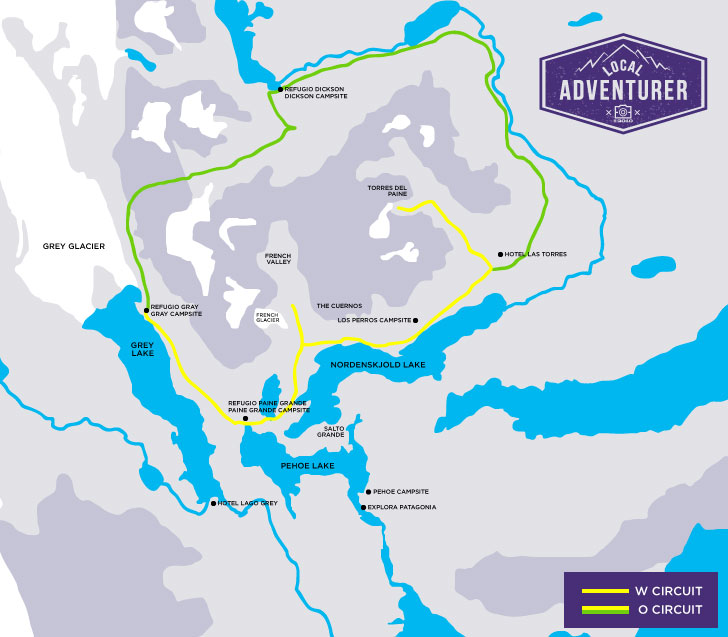

HOW TO GET HERE - BEFORE THE HIKE
There are multiple ways to get to Torres del Paine National Park, which you can check out here . Almost all of them require a few flights, a bus ride, and car ride. With OneSeed as your guide (use LOCAL10 when booking for 10% off), you are responsible for getting to Punta Arenas. Once you arrive, a guide meets you at the airport and they take care of everything else.
When we landed in Punta Arenas, our guide Roberto was waiting for us with snacks in hand. We munched on them as he gave us an overview of the next 5 days we’d be spending together. Then we hopped onto a 3-hour bus ride to Puerto Natales and checked in to a hostel. We enjoyed dinner on our own at the restaurant attached to the hostel then got a good nights rest.
In the morning, you can leave anything you don’t need on the trail at the hostel and claim it after you return from the 4-day hike. Since it was winter, we did a modified version of the W hike that gets you to all the landmarks.
Total Hike in 4 Days: 50 miles (80 km) Max Elevation on W Circuit: 2,870 ft (875 m)
DAY 1 - TORRES DEL PAINE W TREK ITINERARY / THE GRANITE TOWERS DAY HIKE
Distance: 13.77 miles / 22km Estimated time: 8-10 hours Maximum altitude: 2,870 feet / 875 m What You See: Torres del Paine (Granite Towers), Refugio Chileno, Hotel Las Torres
The first day is a long one but all you need is a day pack! Everything else can stay in the van that you arrived in. You get an early start because it is still a 1.5-hour ride from Puerta Natales to the national park. After stopping at the entrance to register, you drive another 15-20 minutes to the trailhead. We started our hike before the sun came up. It is the toughest day in terms of elevation gain. After the halfway mark, you start to really gain elevation. There is some scrambling and as you get higher up, snow on the ground gets thicker. By the time we were near the towers, there were portions of the trail where snow reached our thigh or waists.
It took us roughly 5 hours to reach the top and another 4 before we made it back to the van. We saw Andean Deer, tons of birds, and a puma in the distance. After getting back to the van, you drive another 45 minutes to the Serrano River Valley to stay the night.
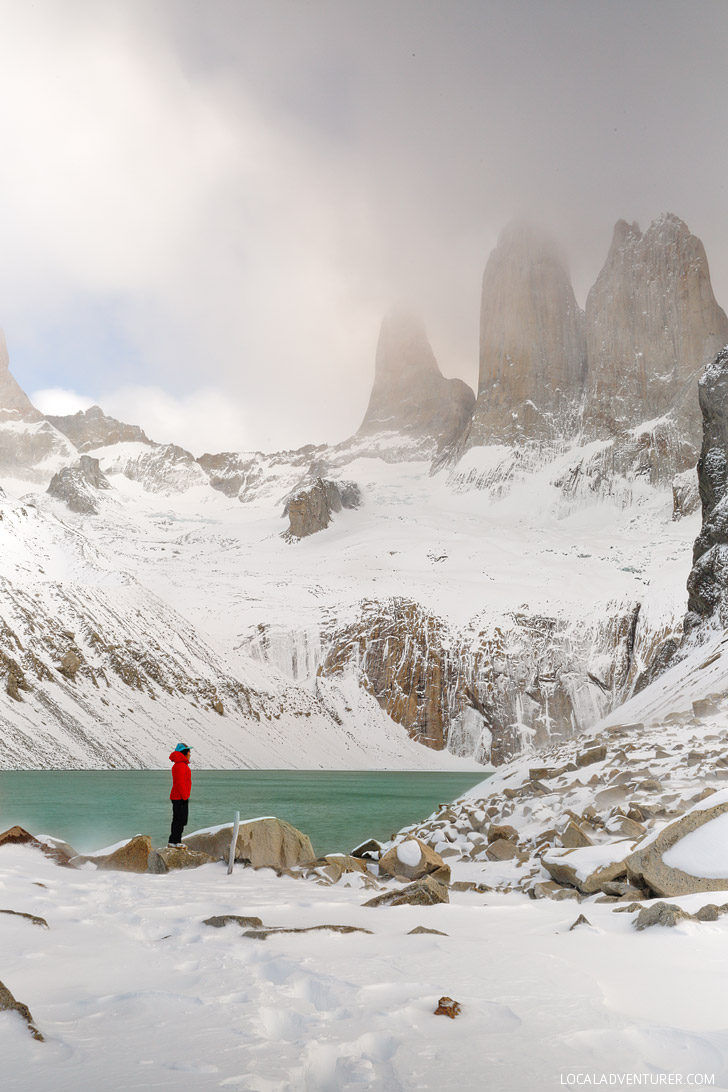
DAY 2 - TORRES DEL PAINE W TREK / HIKE TO REFUGIO PAINE GRANDE
Distance: 10.67 miles / 17km Estimated time: 6 – 7 hours Maximum Altitude: 361 / 110 m What you see: Serrano River Valley, Pehoe Lake
The second day is the toughest in weight. It is the only day you have to carry a full pack. The van drops you off shortly after the entrance and you hike along a relatively flat trail. 70-80% of the trail is flat with hills filling the rest of the trail. The two largest hills come right at the end. This was the windiest day for us and you are most exposed to the sun with little tree cover.
After arriving at Paine Grande, you get settled and rested before dinner in the main area.
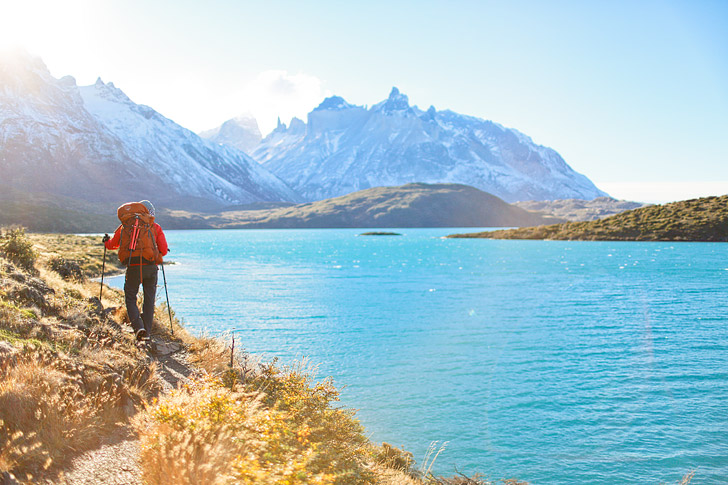
DAY 3 - TORRES DEL PAINE W TREK / FRENCH VALLEY DAY HIKE
Distance: 10.67 miles / 17km Estimated time : 7-8 hours Maximum altitude: 623 feet / 190 m What you see: Cuernos del Paine (The Horns), Campamento Italiano, French Valley, French Glacier
We experienced the expertise of our guide on Day 3. It was an incredibly overcast day so he called an audible. After arriving at Campamento Italiano, rather than continuing up the French Valley, we changed our route to the French Glacier instead. Since it was a shorter hiking day, we had a lot of time to enjoy the views of the glacier before heading back to the Refugio.
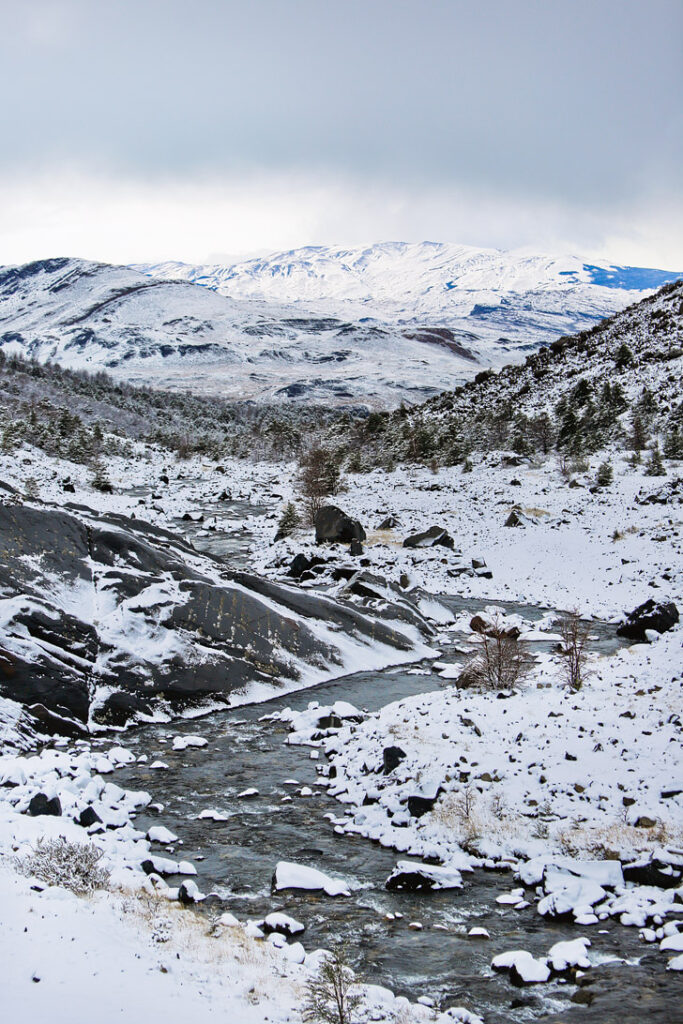
DAY 4 - TORRES DEL PAINE W TREK / GREY GLACIER DAY HIKE
Distance: 14.92 miles / 24km Estimated time: 8-10 hours Maximum altitude: 820 feet / 250 m What you see: Grey Glacier, Grey Lake, Refugio Grey
The last day is a long day and your body is fatigued. There is a viewpoint about half way where you can decide to turn back, but we wanted to make it all the way to the end.
At the start of the hike, there are soooo many puma tracks. It’s a popular spot for them to hunt for hare so tracks follow the trail almost to the first viewpoint. Once you reach the first viewpoint, the trail declines very steeply to Refugio Grey.
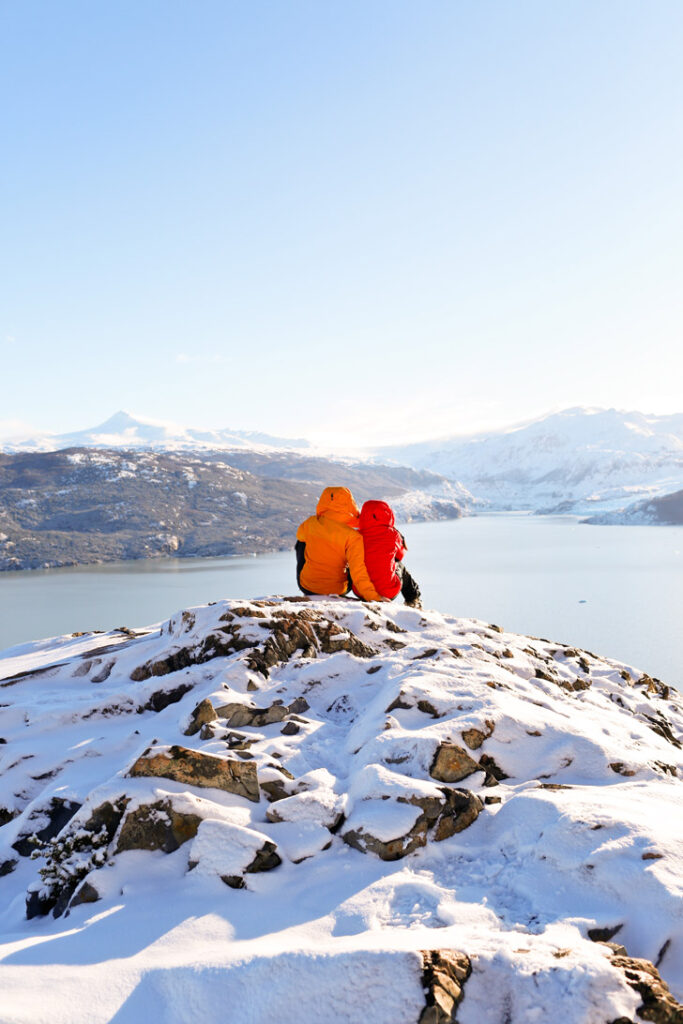
AFTER THE HIKE
After the last day of hiking, we spent one more night at Paine Grande. The next morning, we took the Catamaran across the lake where our driver picked us up. We made a few stops for photos, then headed back to Puerto Natales. After cleaning up and resting, we had a final dinner with the guide before calling it a night.
The next morning, Roberto came back to take us to the bus station. He then rode with us to Punta Arenas and made sure we got checked into our flight okay before saying our final goodbyes.
Address, map
Local Tip / Pro Tip / Note: dsfsdfsd
More: 11 Incredible Things to Do in Grand Teton National Park
COMPARE PRICES ON AMAZON AND ___
BACK TO TOP
Essential Tips for Your 4 Day Hike on the W Circuit
- Porters: Most likely you won’t be using porters, so come prepared to carry everything you have. The good thing is that you only need a day pack for 3 out of the 4 days. It’s possible to get a porter, but it costs $120 a day, and in the winter they need to be booked for the entire trip, which would make it $600 extra.
- Guide: $6-8 per day
- Assistant Guide: $2-5 per day
- Cook/Mulero/Camp Assistant: $1-3 per day
- Altitude Sickness: Since the entire hike is under 3,000 feet, you don’t have to worry about altitude sickness.
- Warm Showers: Showers are available throughout the trip, but they won’t always be warm. During our stay at the Serrano River Valley, warm water ran out before everyone showered. At Refugio Paine Grande, the water is heated by propane, so the last night we were left with cold showers as well.
- Water: You can drink from the tap since it is all sourced by the glaciers. We carried 1-2 L per day and there are streams where you can fill up along the way.
- Checking in Bags at Puerto Natales: Anything you don’t need on the trail can be left at the hostel in Puerto Natales. After finishing your hike, you will have one more day there before leaving.
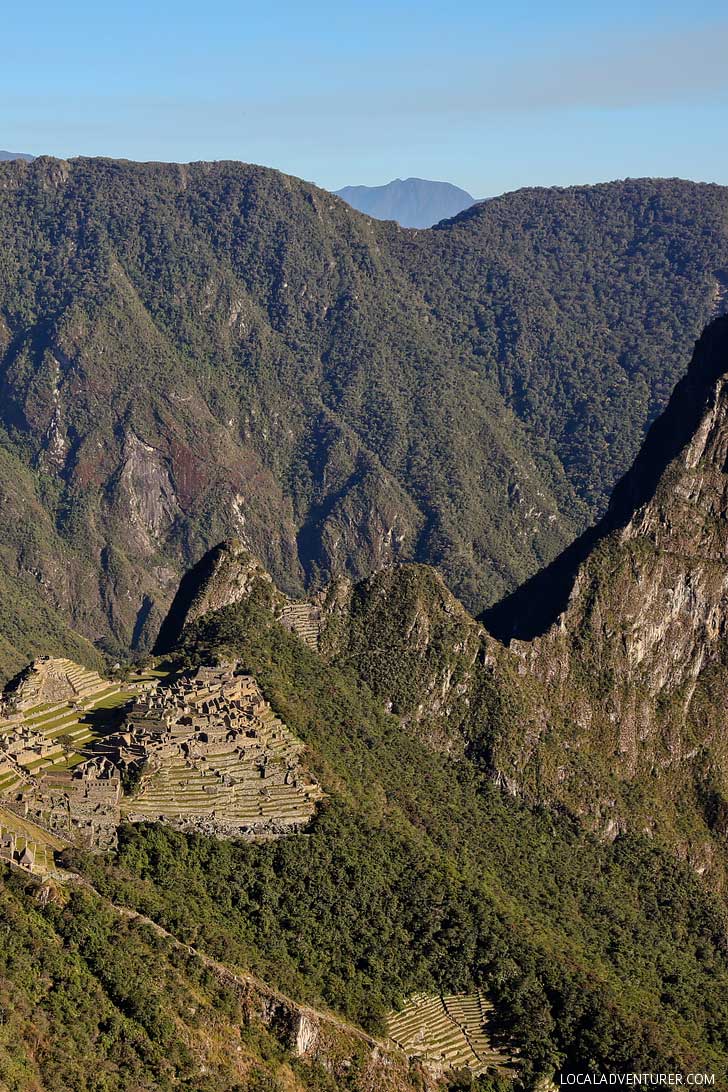
For more photos and information about Torres Del Paine National Park , check out our ultimate guide .
What to Pack for the W Trek
Find out everything you need on our Patagonia Winter Packing Guide and Summer Packing Guide .
Best Places to Stay
Are you planning on doing the Torres del Paine W Trek? Would you pick winter or summer?
Did you enjoy this post? Pin it for later
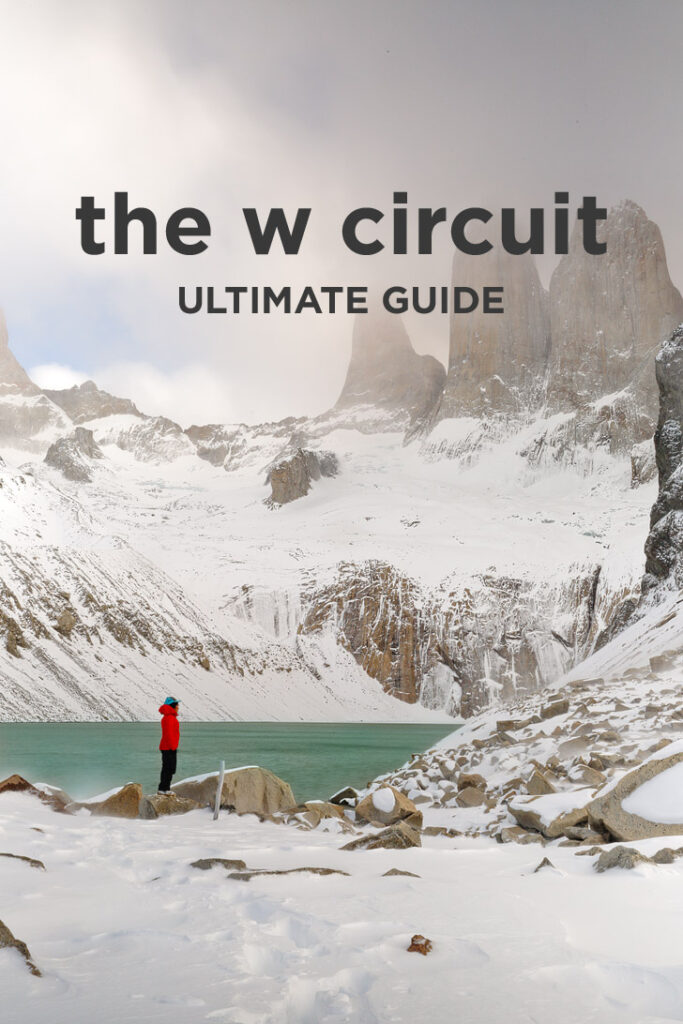
SEE MORE NATIONAL PARK GUIDES
JOSHUA TREE
CRATER LAKE
GRAND TETON
BRYCE CANYON
BLACK CANYON GUNNISON
GREAT BASIN
GREAT SAND DUNES
SEQUOIA + KINGS CANYON
“Discovery consists not of seeking new lands but in seeing with new eyes ” – M. Proust

Esther + Jacob
Esther and Jacob are the founders of Local Adventurer, which is one of the top 5 travel blogs in the US. They believe that adventure can be found both near and far and hope to inspire others to explore locally. They explore a new city in depth every year and currently base themselves in Portland Oregon.
You might also love
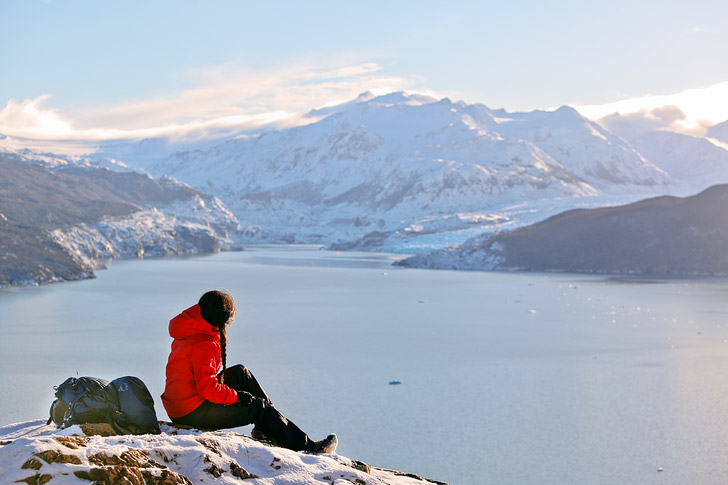
Torres del Paine Patagonia Packing List

Ultimate Guide to Torres Del Paine National Park Chile

Essential Guide on What to Pack for Patagonia W Hike
This post has 6 comments.
I was curious if a guide is necessary? Thanks!
It’s not necessary if you’re hiking any other time of year, but unless they changed their policy, you can’t hike without a guide in the winter. You might be able to sneak in without one and get away with it, but even if you do with the snow, you can’t see the trail half the time. Unless you’ve done the hike a few times before, I wouldn’t recommend trying it alone in the winter. In the summer, I hear there’s so many people, it’s hard to get lost.
Hi Jacob, during what month did you hike the W? Me and my boyfriend are going to be there at the end of June 2018 so we’re wondering if the snow will be as deep as what you guys experienced! Also, do you think we could do this trek on our own instead of paying for a guide, is the trail well marked? Thanks a lot!
Hi Sylvie. We hiked it in mid-July, but as far as how deep the snow is.. it really depends on how much snowfall they get and each year will be different. Trails are really difficult to follow especially when they’re covered in snow, but you also don’t have the option to go without a guide since the park doesn’t allow it. If you want to go without a guide, you may have to hike it in the summer instead.
Hey guys, We’ll be doing the W trek in winter this year, starting on the 29th April. We just found out hikers are now required to have a guide during the winter months. We were hoping this wouldn’t apply to us because we were starting before May, and ending on the 3rd May – however, it seems we’ll need to find a local guide. I’ve heard they’re super expensive (like, $110 AUD a day!), and our budget wasn’t really allowing for this. Do you have any advice on whether or not we should be worried about that, or how to find a good guide (that won’t cost us an outrageous amount?) Thanks heaps! Milly
Hi Milly. Unfortunately, I’m not sure on how strict they will be since you’re hiking right on the cutoff. I would call the ranger station and see what they say. As for finding a local guide, when we went the park was so empty, so we didn’t really meet anyone else. We only have experience with our guide, who was with OneSeed. We did a full package including food and lodging, but you can contact them at [email protected] if you can hire just the guide and what that pricing might be.
Leave a Reply Cancel reply
This site uses Akismet to reduce spam. Learn how your comment data is processed .
Connection denied by Geolocation Setting.
Reason: Blocked country: Russia
The connection was denied because this country is blocked in the Geolocation settings.
Please contact your administrator for assistance.

The ultimate guide to the Torres del Paine W Trek in Chile
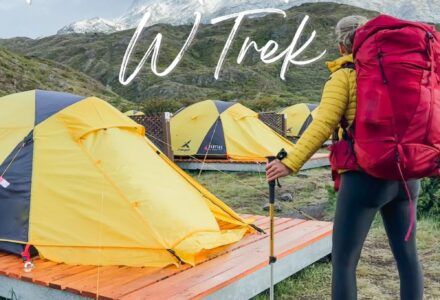
The W Trek in Chile is one of the hardest things I’ve ever done. And that’s coming from someone who thought it would be a good idea to cycle across the entire country of Jordan.
Now that we’ve got that out of the way, let me tell you why hiking in Torres del Paine National Park is also one of the most rewarding travel experiences I’ve had.
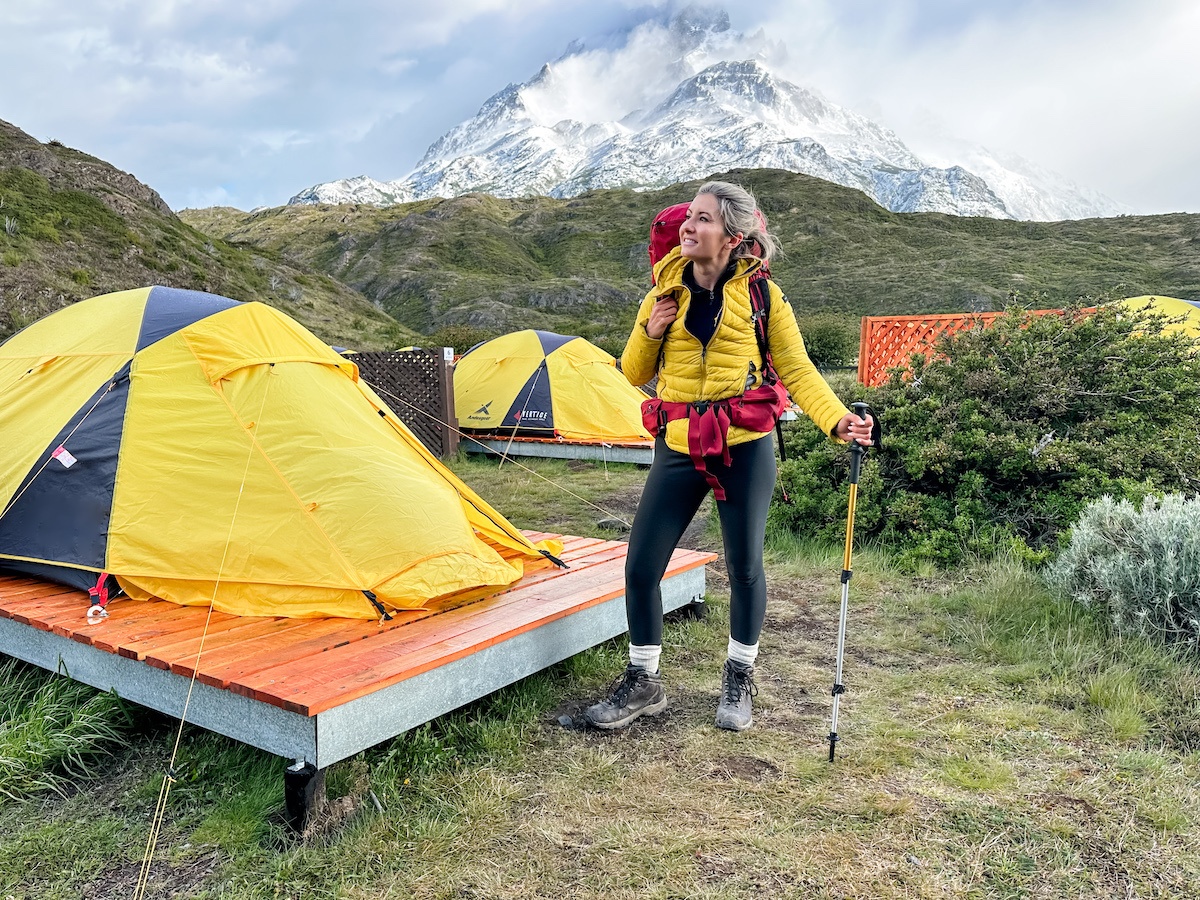
It’s rare to find an adventure that pushes your physical limits every single day, has you cursing under your breath more times than you can count as you face yet another sloshy water crossing or steep incline with a fully loaded pack on your back, and leaves you with aches, sore muscles and a few bruises on account of the inevitable stumbles over rogue rocks.
Yet, at the end of this multi-day grind, the feeling of accomplishment is unmatched. You just trekked through freaking Patagonia, one of the most remote and picturesque places on the planet!
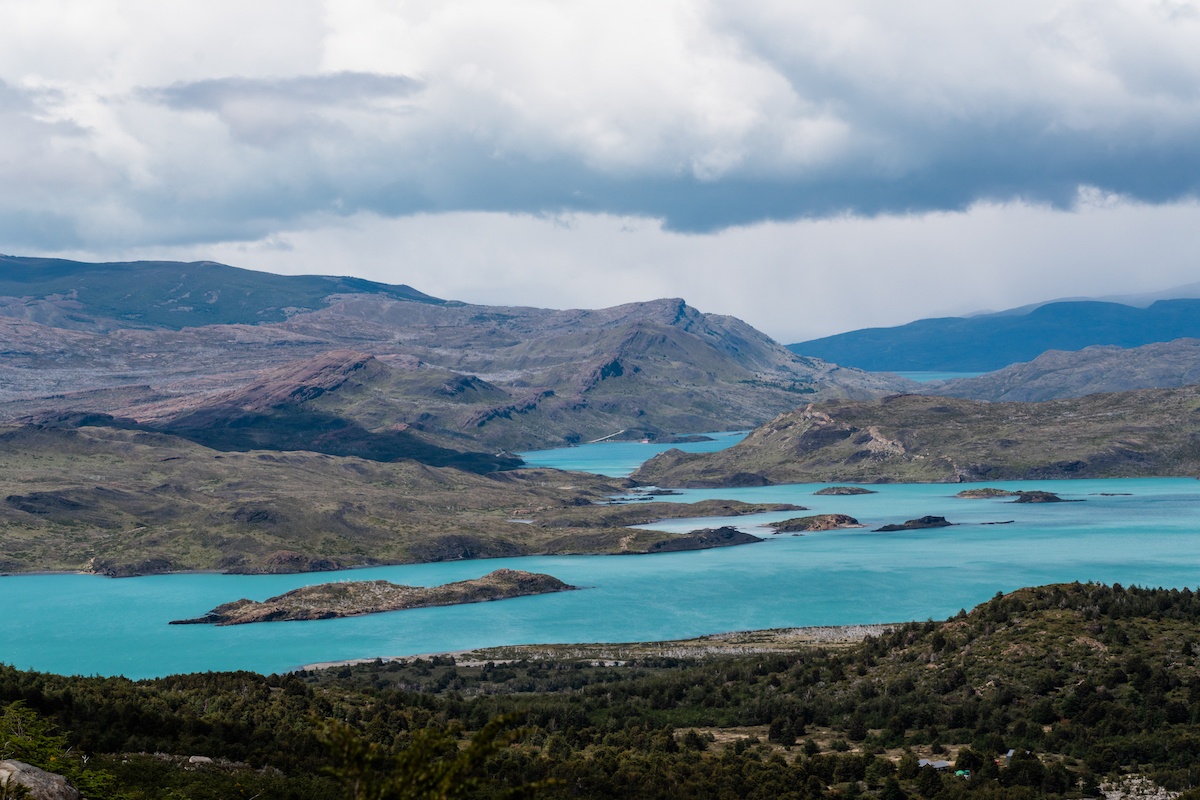
The scenery is stunning, the logistics and conditions are challenging, and your body is pushed to exhaustion with very little rest time.
Not only will you learn how capable your mind and body really are, but there’s the added bonus of not feeling guilty at all when indulging in a slice of chocolate cake and glass of Carmenere at a refugio at the end of each day. Because my god will you ever burn a lot of calories.
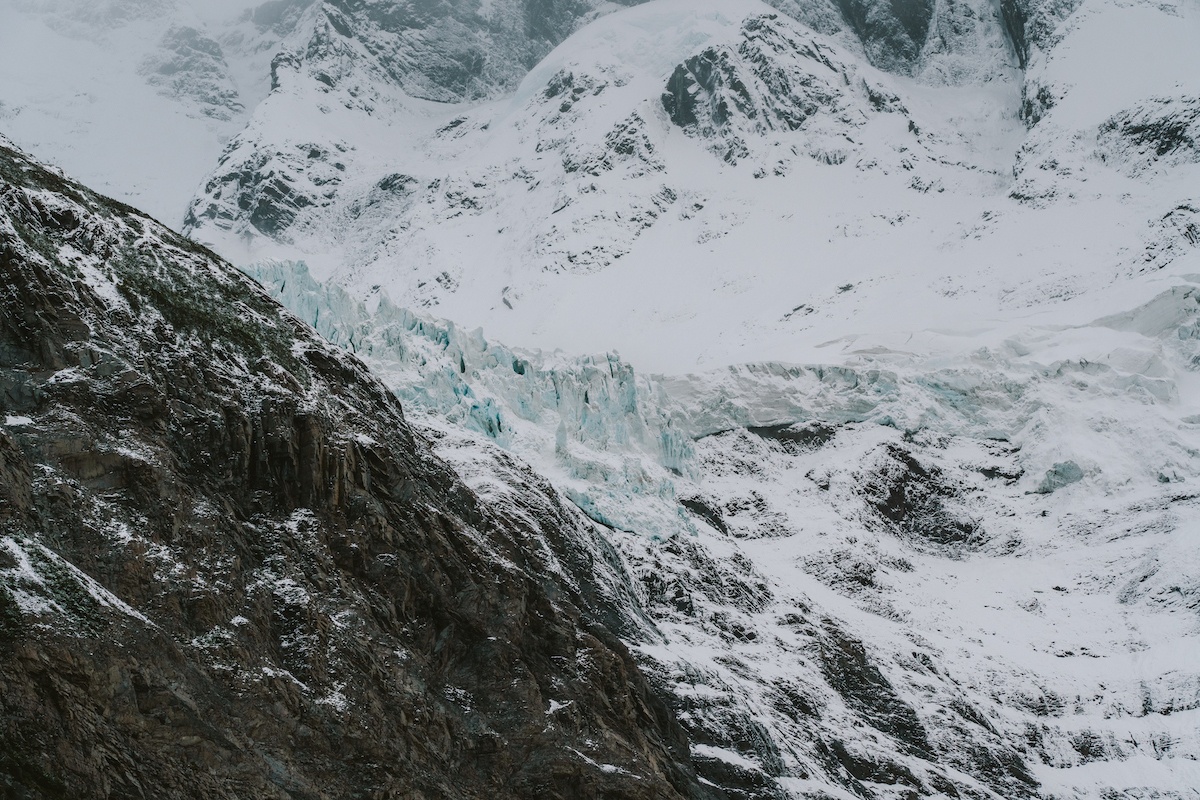
Is this trip for everyone? No.
Is it epic and unforgettable? Absolutely.
Here’s everything you need to know if you’re thinking about tackling the Torres del Paine W Trek in Chile.
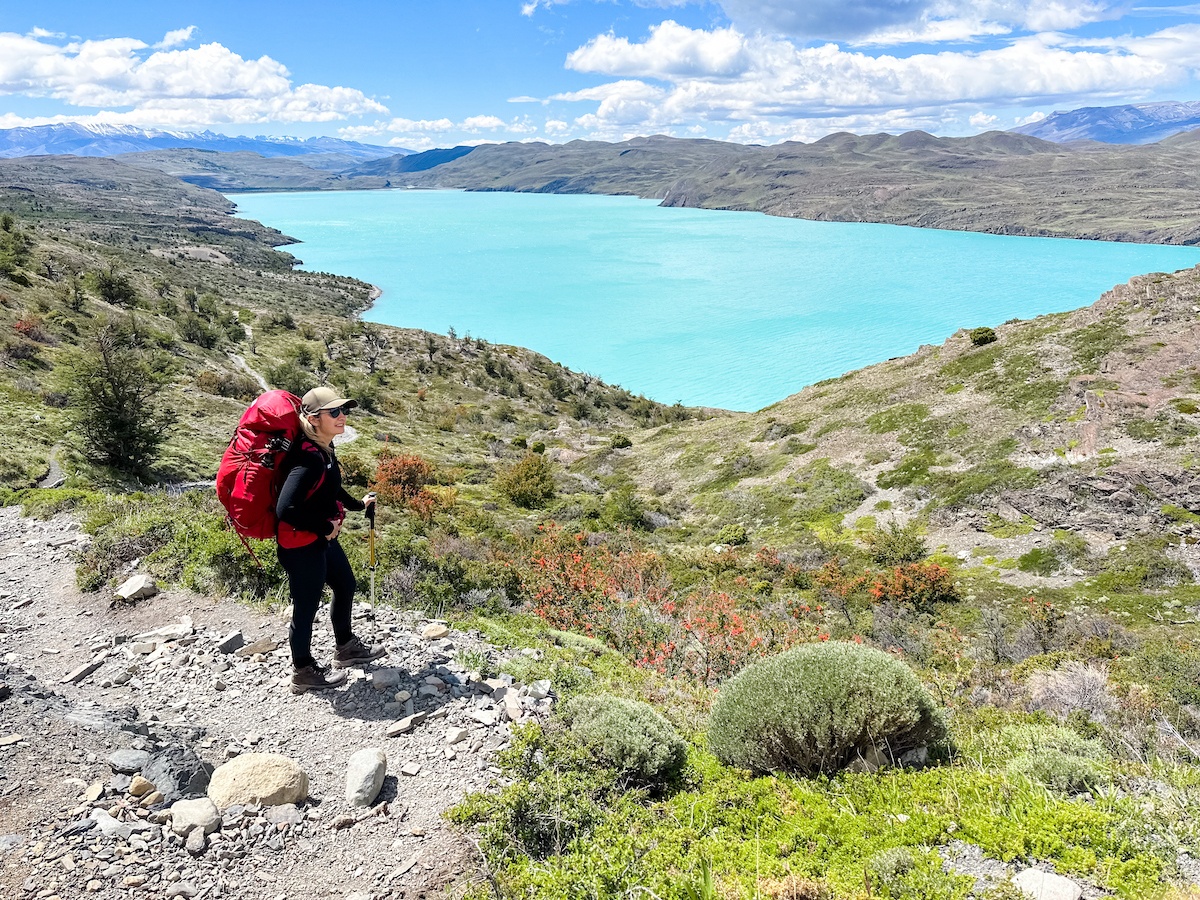
The Patagonia W Trek route
The W Trek takes four days to complete, and while its exact length seems to change depending on who you ask or which map you look at, the general consensus is that the trail is about 64 kilometers (40 miles) long.
Expect anywhere from six to 12 hours of hiking each day, more than 100,000 steps (my Apple Watch logged 125,458 to be exact) and of course countless photo-ops.
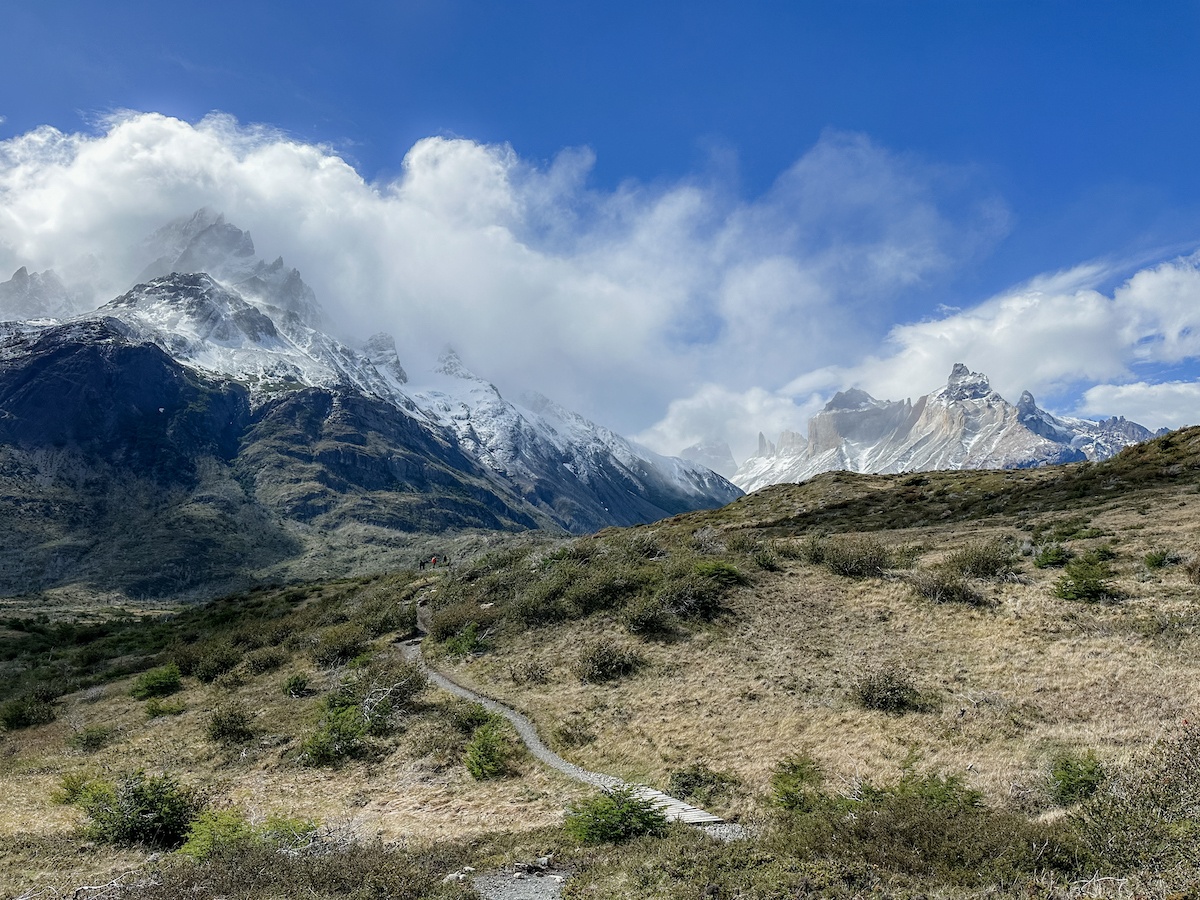
This is the most popular way to hike Patagonia, and those who are up for even more of a challenge can continue along the O Circuit which takes about nine days to complete the 122 kilometer, counter-clockwise loop.
This W Trek map outlines the exact route:
The W Trek in Torres del Paine can be done in either direction, starting from either the Torres del Paine Welcome Center on the east side or Lago Grey on the west which requires a boat ride over.
Deciding which side to start from simply comes down to preference and logistics, with the availability of refugios (the campsites that hikers stay at each night) being the most important to account for.
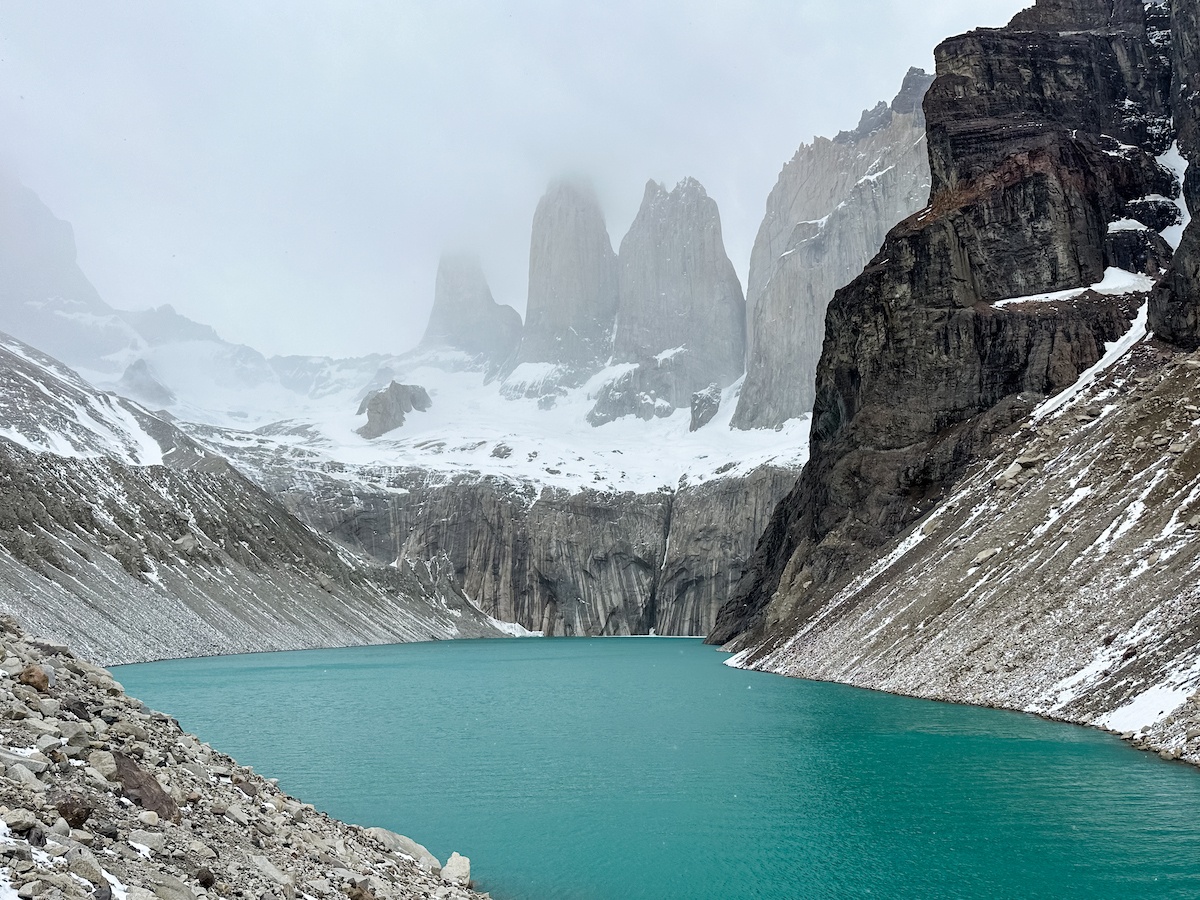
Another factor is when you want to take on the Mirador Base de Las Torres hike: this is the view you’ll see on pretty much every single postcard and basically the entire reason most people come all the way to Patagonia.
Thing is, it’s a very steep eight hour round trip hike, and the most challenging day of the W Circuit. So, some like to get it out of the way on day one while their legs are fresh, while others opt to start from the other side and save it for the last day of the hike as a culmination of their efforts.
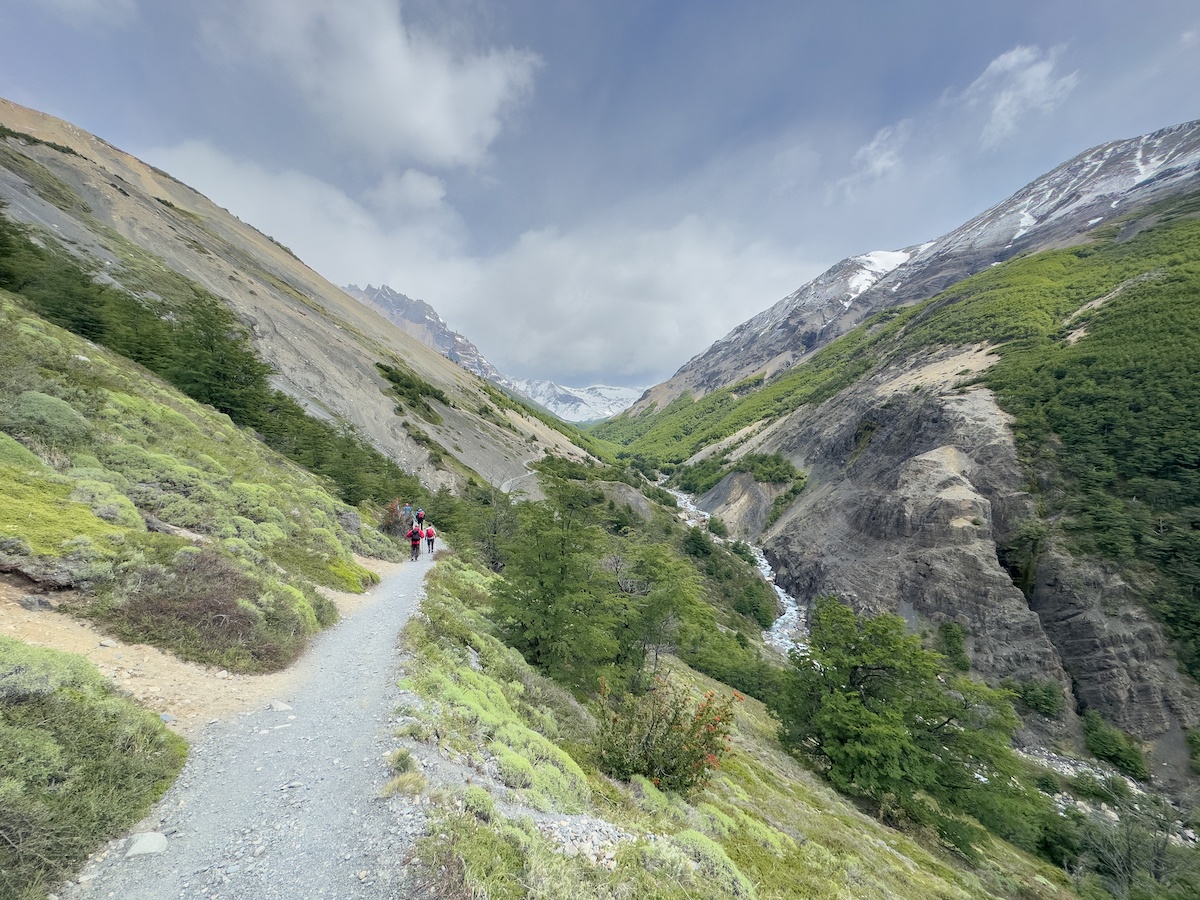
We did it on the first day, and there are pros and cons to both. I can’t imagine how much harder it would have been after already hiking for three full days and feeling worn down from camping and cold showers; that said, going full throttle on the first day wasn’t the best warmup as someone who doesn’t do intense hikes on a regular basis, and my legs were basically jelly the whole rest of the trip.
One perk of going from west to east is you can stay at Refugio Chileno the night before summiting Mirador Las Torres. That saves about 90 minutes of hiking compared to starting from Centro on the other side–a huge advantage for those wanting to make it up for sunrise or try and beat the crowds.
When I asked my guide who’s done the trek hundreds of times which direction he prefers, he said he likes to do it on day one to get it over with. So there you have it.
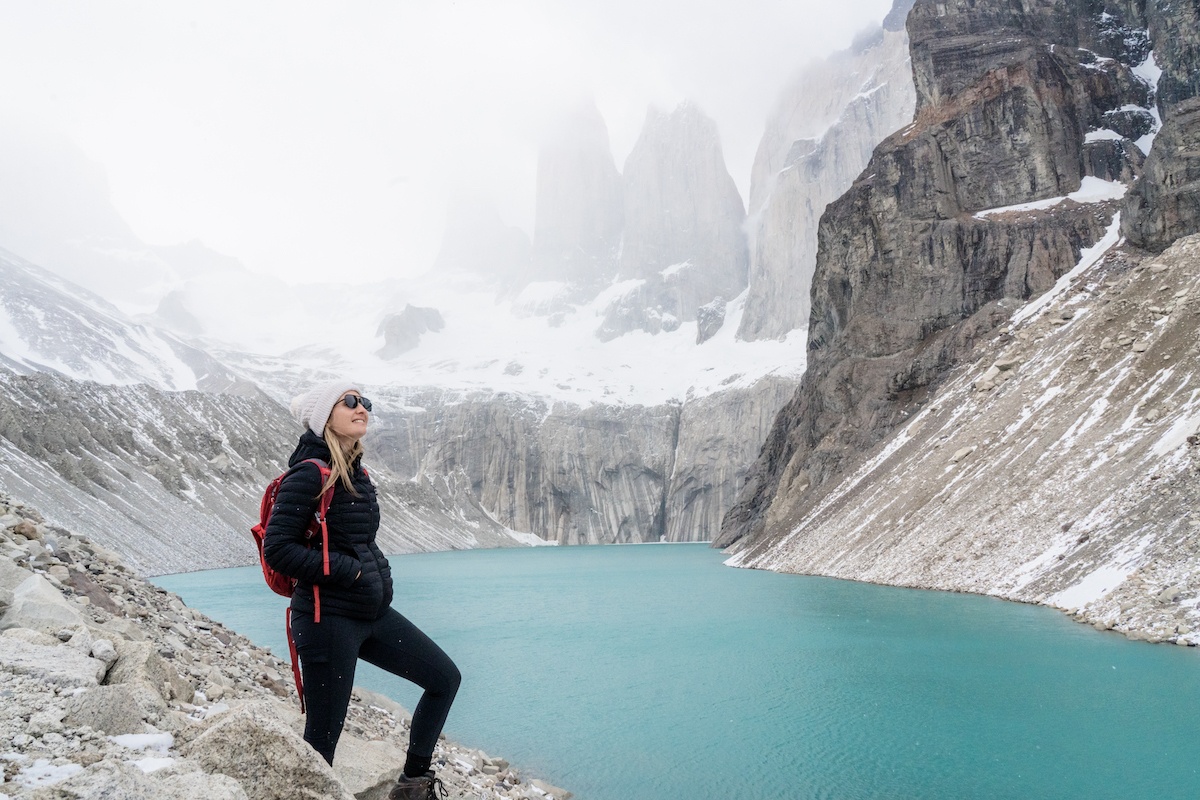
How to book a W Trek itinerary
As you might have noticed already, there are a stupid amount of logistics involved with trekking in Torres del Paine–and in true Chilean fashion, they don’t make it easy.
Some of the things you’ll need to book and consider are:
- Transportation to and from the park gates and to/from the welcome centre (yup, these are separate buses)
- Refugios for each night of the trek
- Food (either carry your own or book meals at each stop)
- Sleeping bag and mat rentals (if not carrying your own)
- Permits/entrance fees
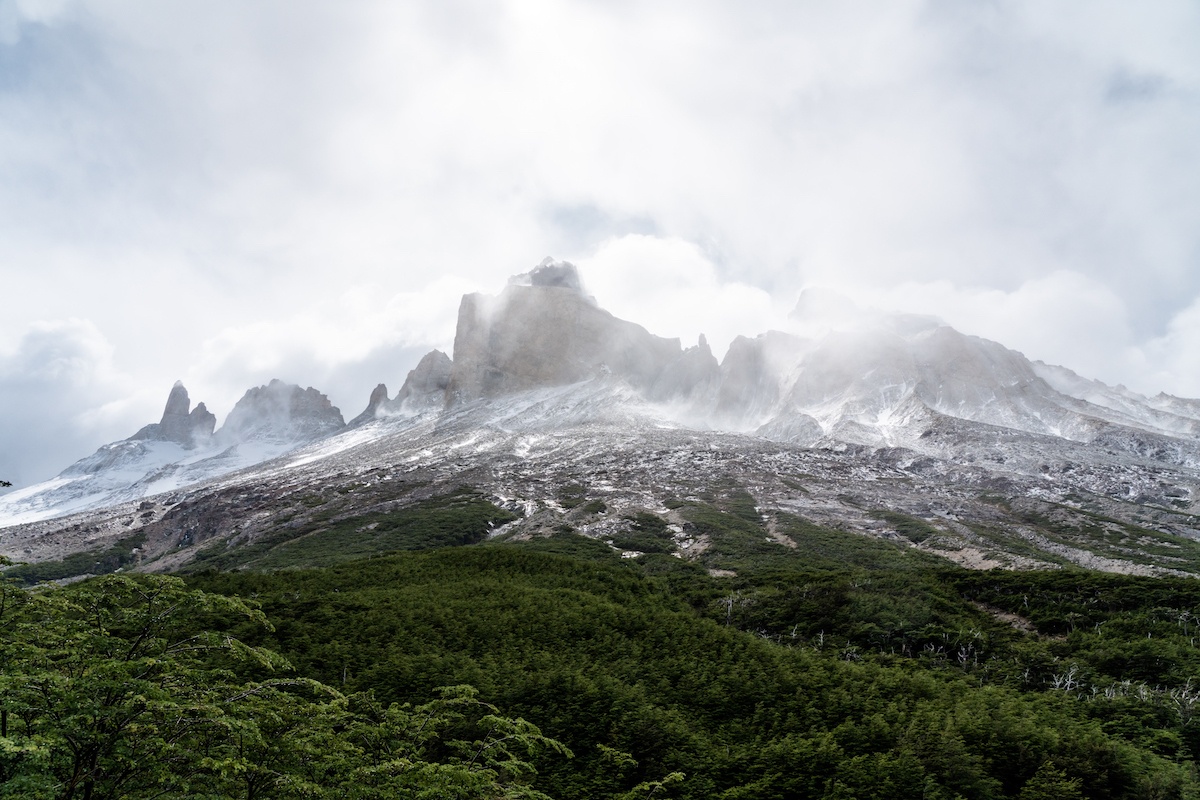
The problem is that tour operators secure a lot of the spots ahead of time, so there are a limited amount left for those planning self-guided trips. You’ll also have to ensure you book each night you need in the correct order of the route, and since two different companies ( Vertice and Fantástico Sur ) operate the refugios you’ll need to coordinate this on separate websites.
Fun, right?
Globe Guide tip: Some hikers have had success contacting the companies directly via e-mail or WhatsApp in advance to secure bookings.
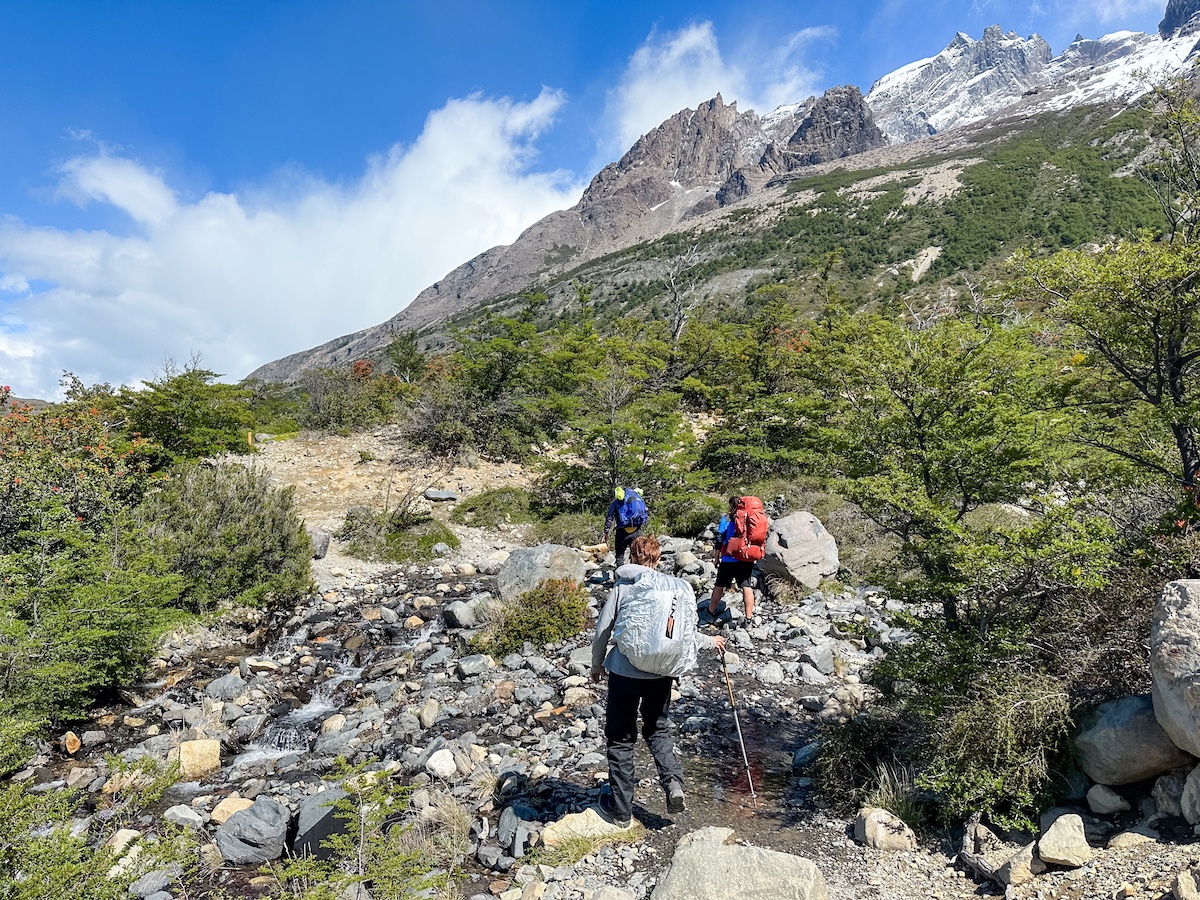
My recommendation: save yourself a lot of time and stress, and book through a small group tour operator instead.
I went with Traverse Journeys , which offers both self-guided and group trip options, as well as (optional) stops in the Strait of Magellan to see the famous penguins, horseback riding, wine tasting among the Casablanca vineyards and city sightseeing in Valparaiso and Santiago.
Traverse handles every single detail right down to what’s in your lunch bag, and donates a portion of the proceeds from each trip to support a local community partner. We saw this firsthand by learning about the efforts the Torres del Paine Legacy Fund is spearheading to conserve the fragile environment and ensure a safer experience for visitors, and even passed some of their volunteers working on the trail.
Globe Guide readers get $200 off of any booking with Traverse Journeys by entering code GLOBEGUIDE200 at checkout!
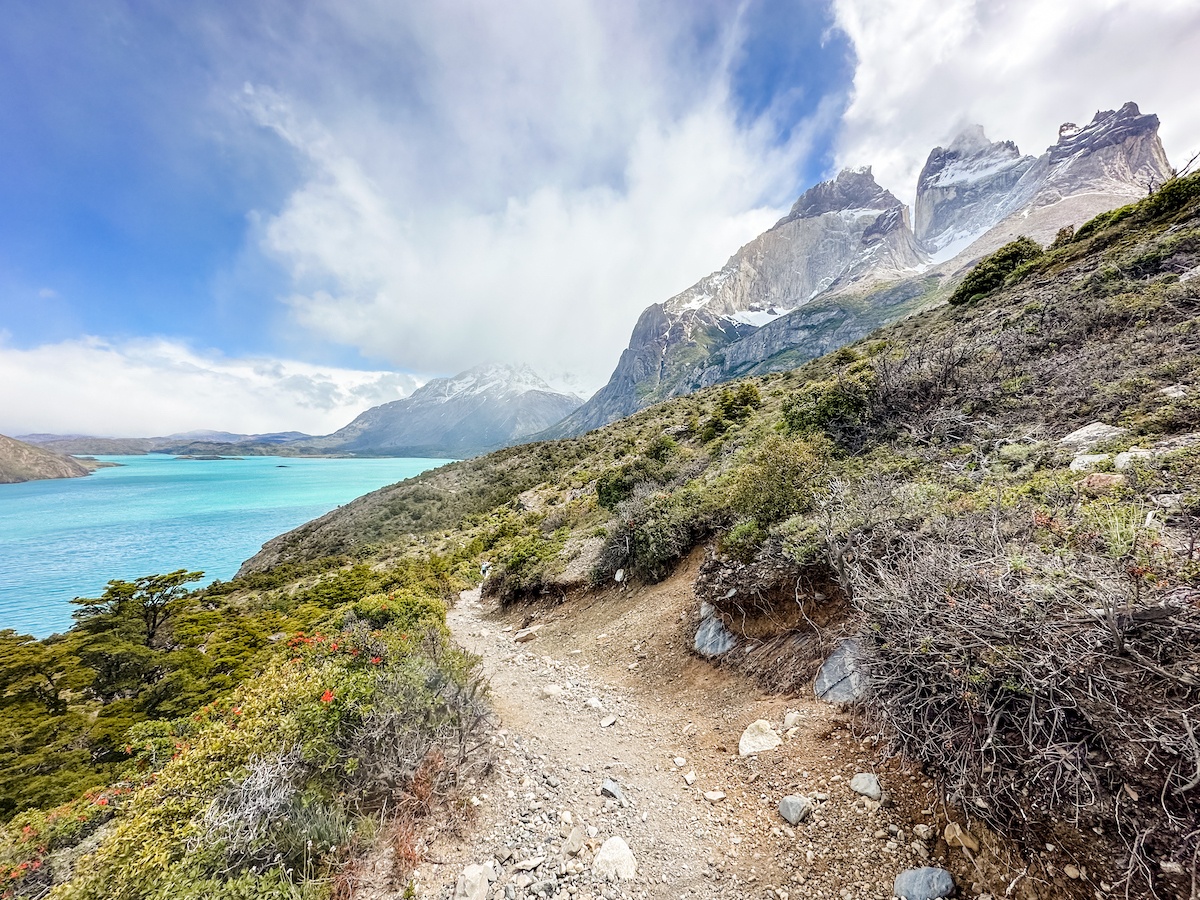
Getting to and from the entrances for trekking Torres del Paine National Park
The cute town of Puerto Natales is like basecamp for Torres del Paine National Park, despite being a scenic 90 minute drive away.
This is where the closest airport is, along with lots of great restaurants and accommodations, grocery stores for stocking up on food or snacks, and gear outfitters for any last minute purchases.
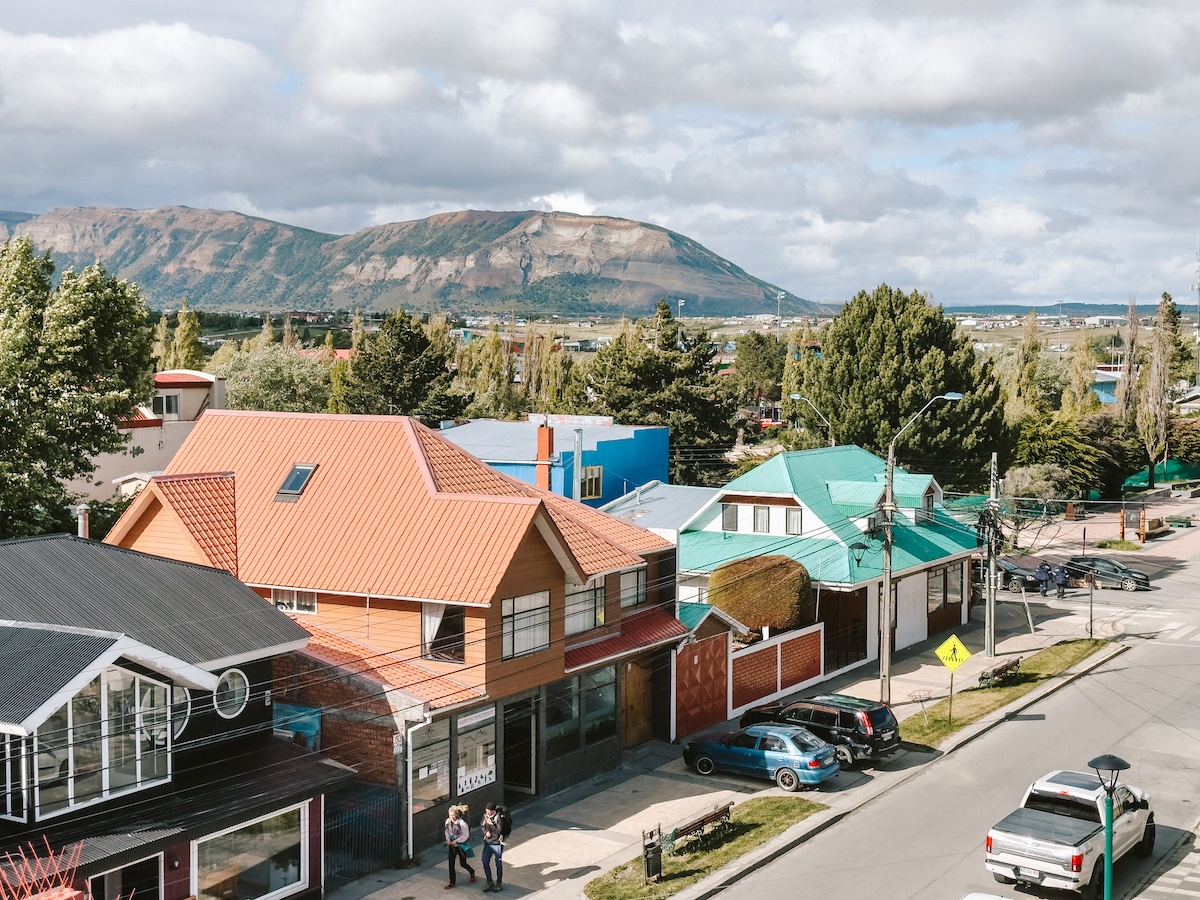
Buses depart from the main depot around 7 AM for both entrances to the park. If you’re starting on the east side like we did or doing the day hike up to Mirador Base Torres, you’ll present a QR code with your permit then hop on another bus (3,000 pesos) to get to the Torres del Paine Welcome Center.
Those starting from the west will head to Lago Grey and take a catamaran over. In theory this means all the way up to the glacier for incredible views, but if the weather is bad a ferry crosses Pehoe Lake to the Paine Grande refugio instead.
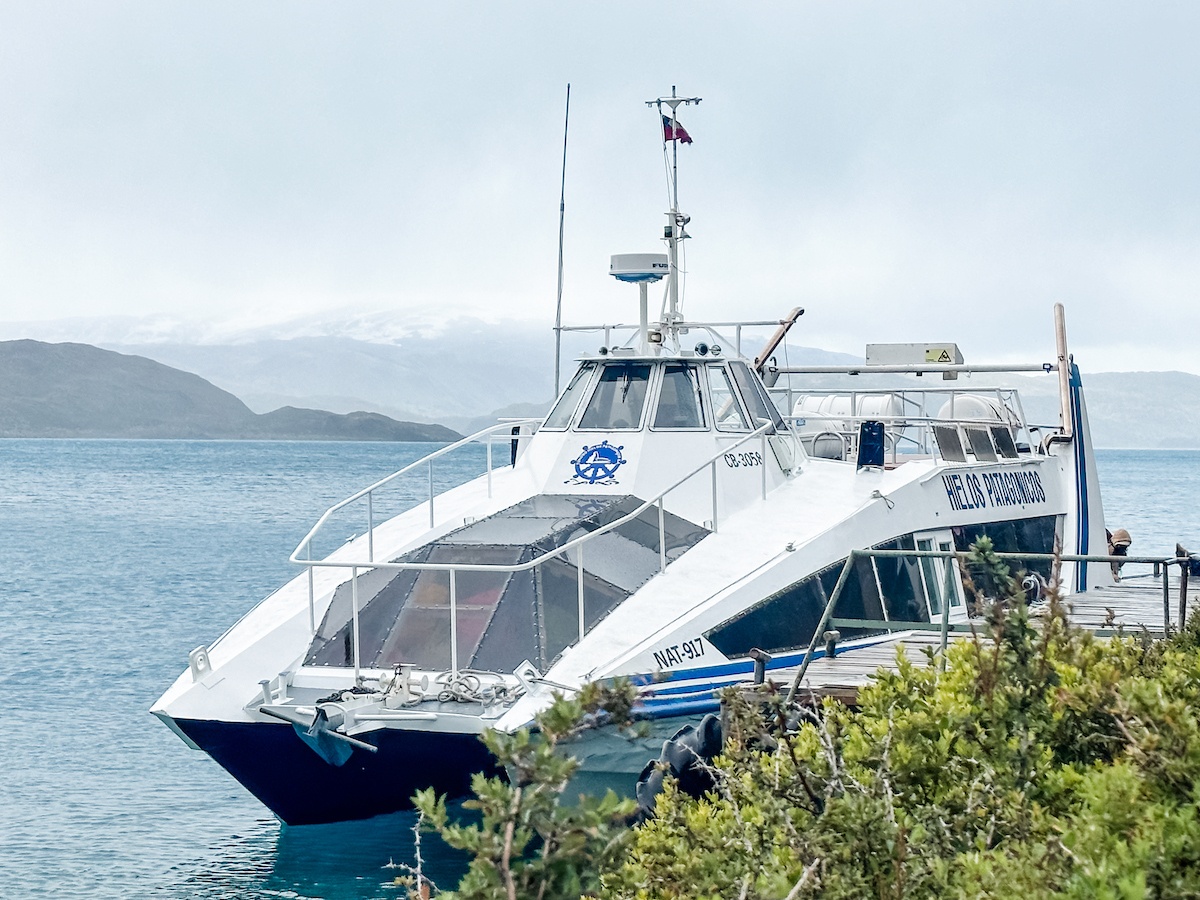
In this case, you’ll have to do an out-and-back to see the glacier on foot, before taking the ferry across Pehoe Lake. This website has more information on prices and schedules.
Globe Guide note: If neither of the boats are operating which happens on occasion due to weather or maintenance issues, it adds an extra 6-7 hours of walking to get to the pickup/dropoff spot.
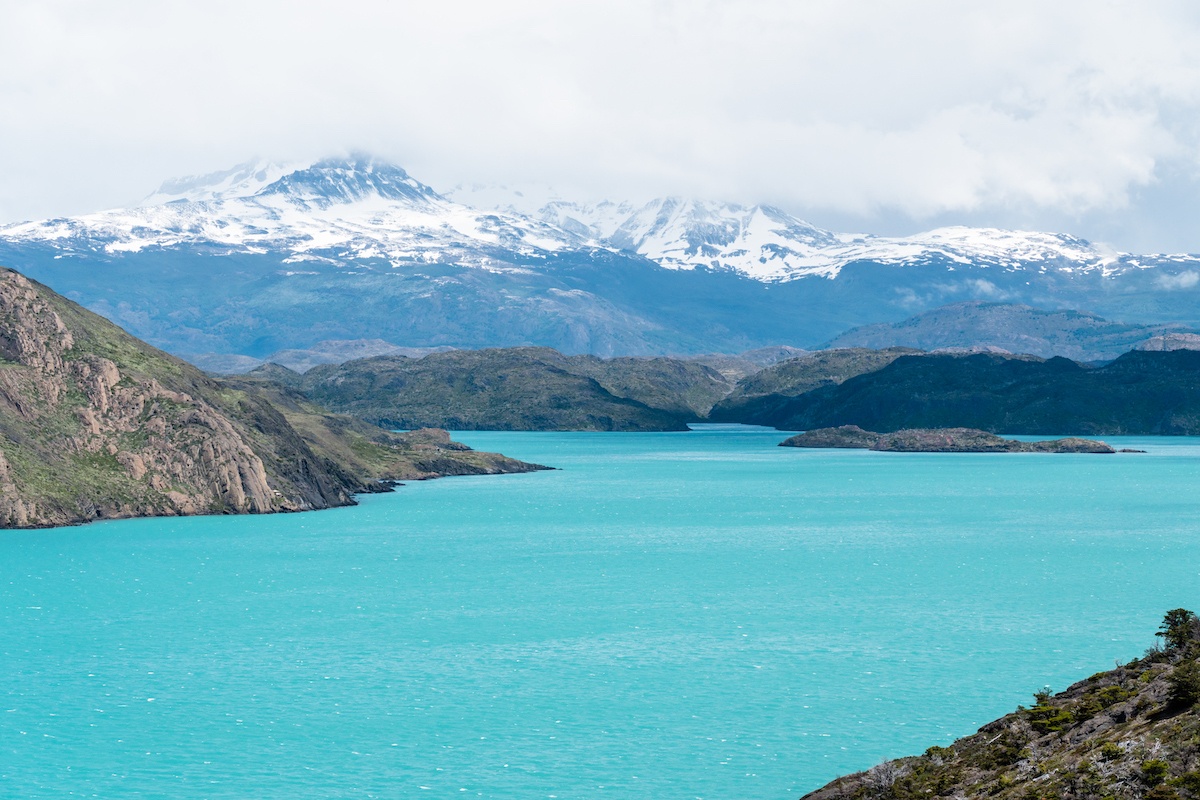
W Trek refugios
Refugios are a key part of the experience, and not all are created equally.
At the very least you can expect a communal eating area, shared bathrooms with (sometimes) warm sinks and showers, a canteen, bar and outdoor hangout area. Camping options are either elevated tents or tents on low platforms (both with sleeping pads), or sites for pitching your own tent.
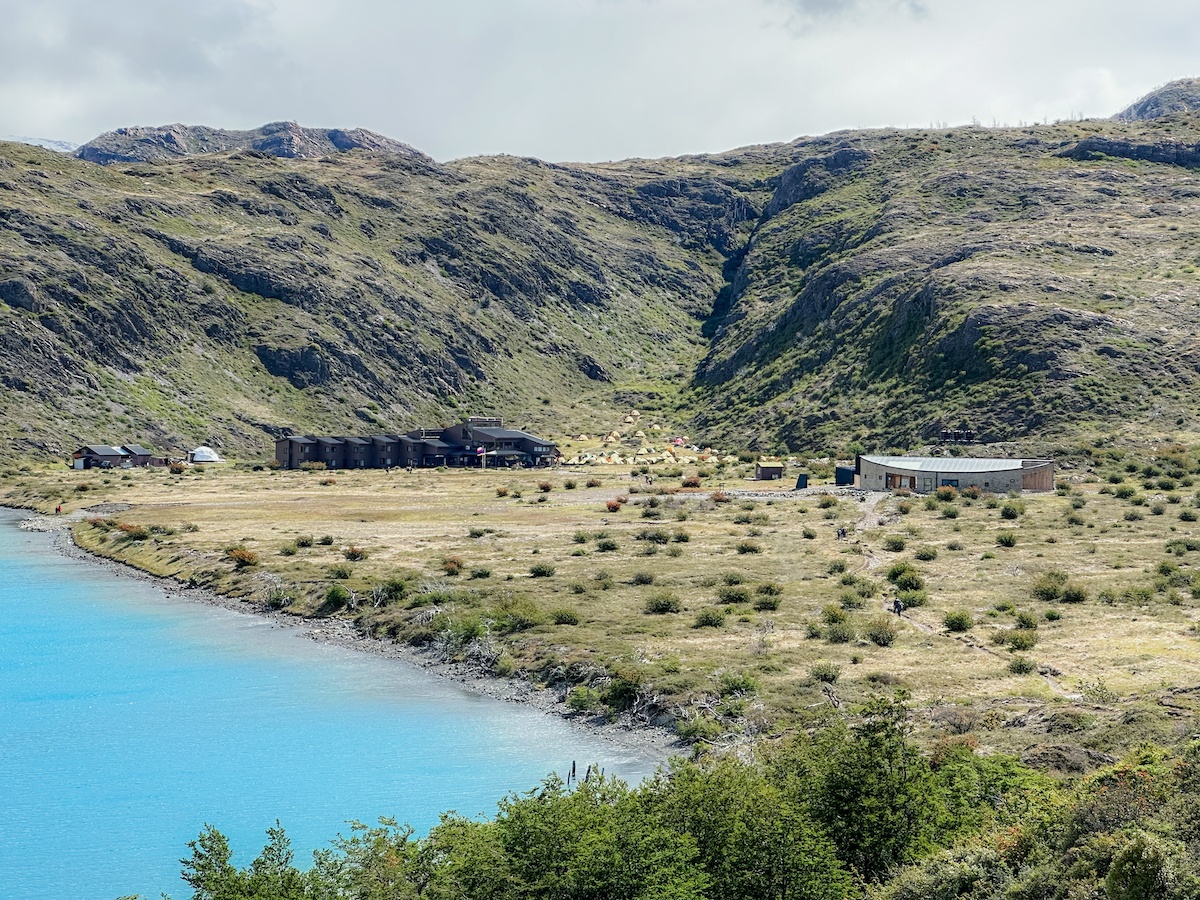
Some refugios also offer dorm-style rooms that sleep about six to eight people in bunk beds, private rooms for couples in the main lodge, and even unique accommodation options like domes and tiny houses.
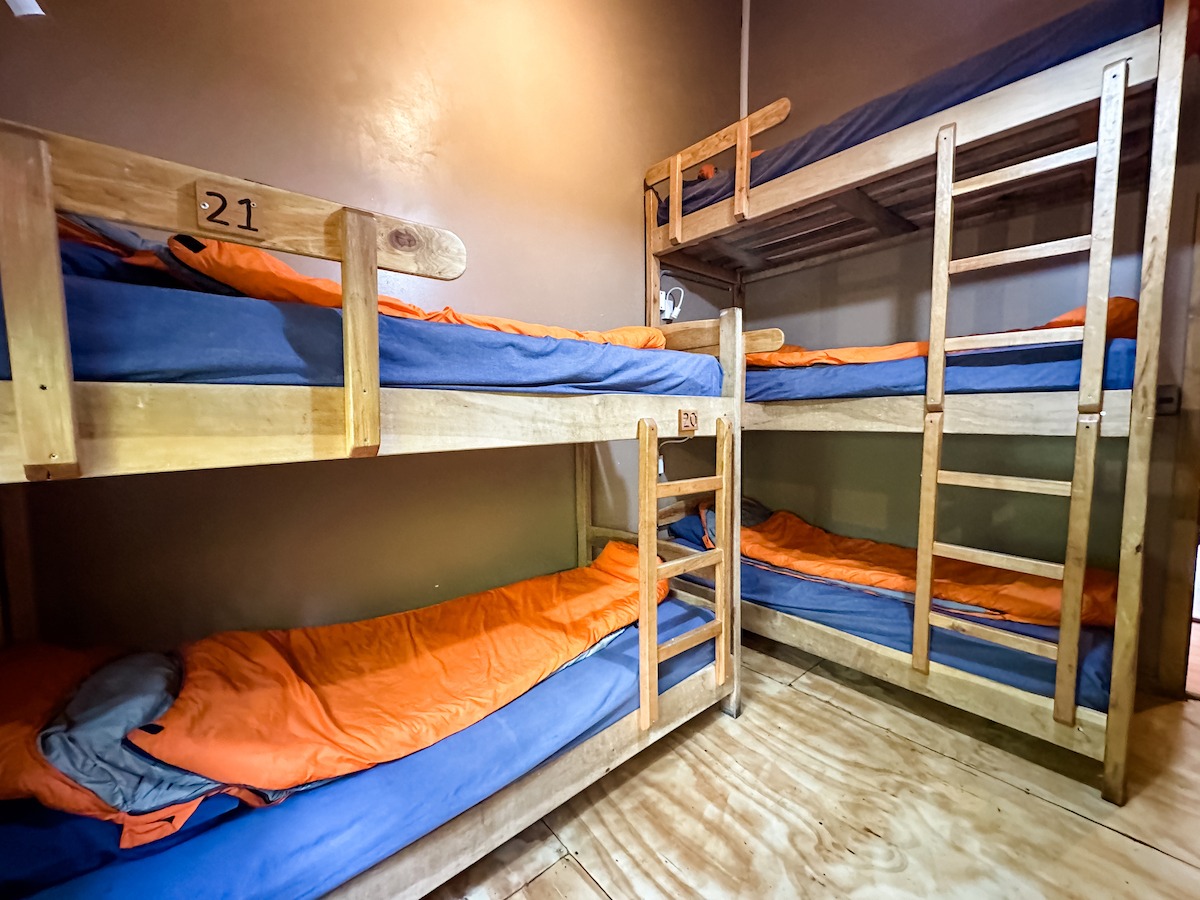
We didn’t get to stay at Refugio Los Cuernos, but absolutely loved the vibe of it from the short time we spent there on a lunch break. It has lovely views from the patio, a warm hangout space and some very cool accommodation options.
Paine Grande has a great feel with lots of communal spaces and a second-floor bar, and Centro has a cozy wood-stove fireplace and large dining area (though we didn’t love how far we had to trek to get to our tent–it felt like climbing another soggy mountain!).
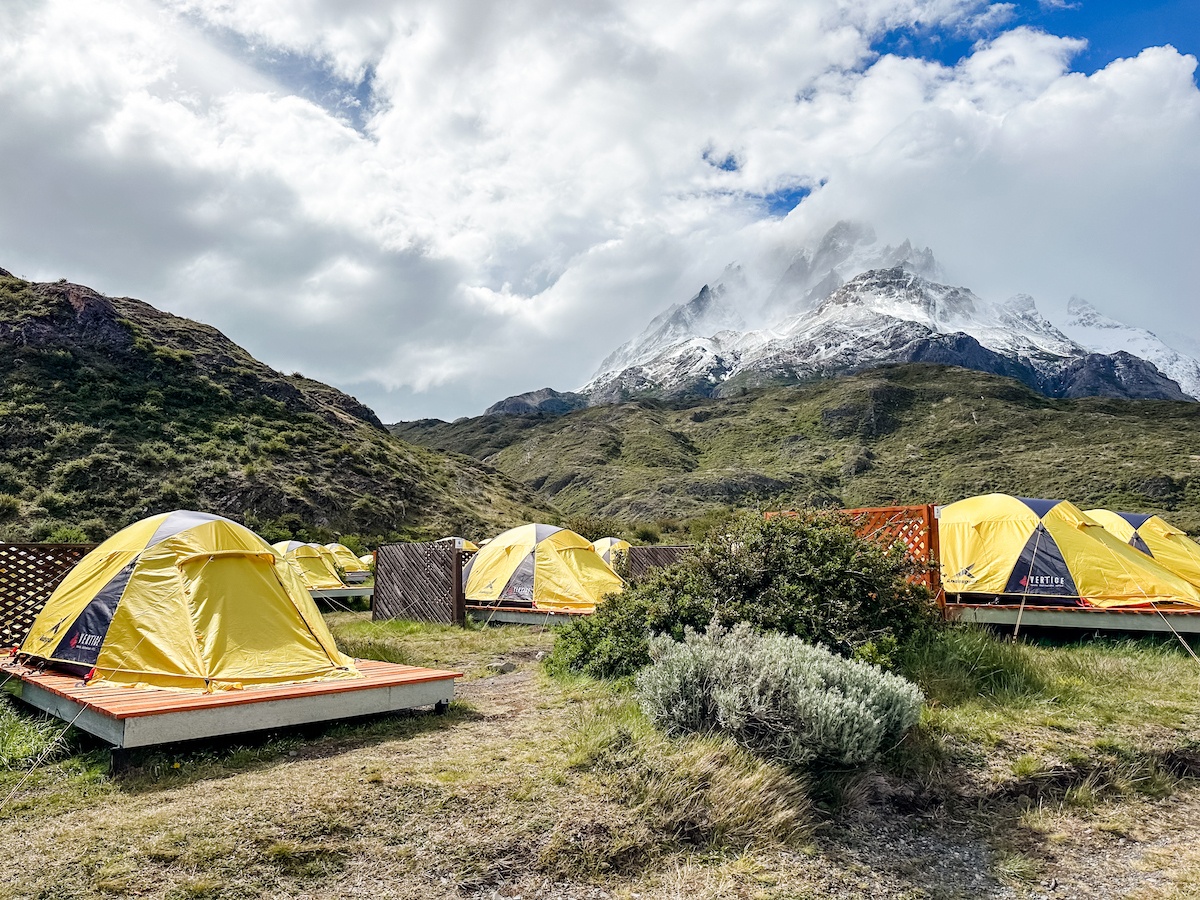
Frances was a total bust and we couldn’t wait to get out of there.
The layout is awful, with all the tents at the top of a hill and the restaurant at the very bottom and not well marked—not fun to deal with going up and down after a full day of hiking. To add insult to injury, dinner seatings start early and there’s no other warm place to sit or enjoy a drink, so you’re literally stuck out in the cold waiting to get in.
The bathrooms were filthy (to be fair, they aren’t very clean at most refugios ) and even though there were limited hours for hot water it still ran out before the time was up. My top tip would be to stay at Los Cuernos instead of Frances if possible.
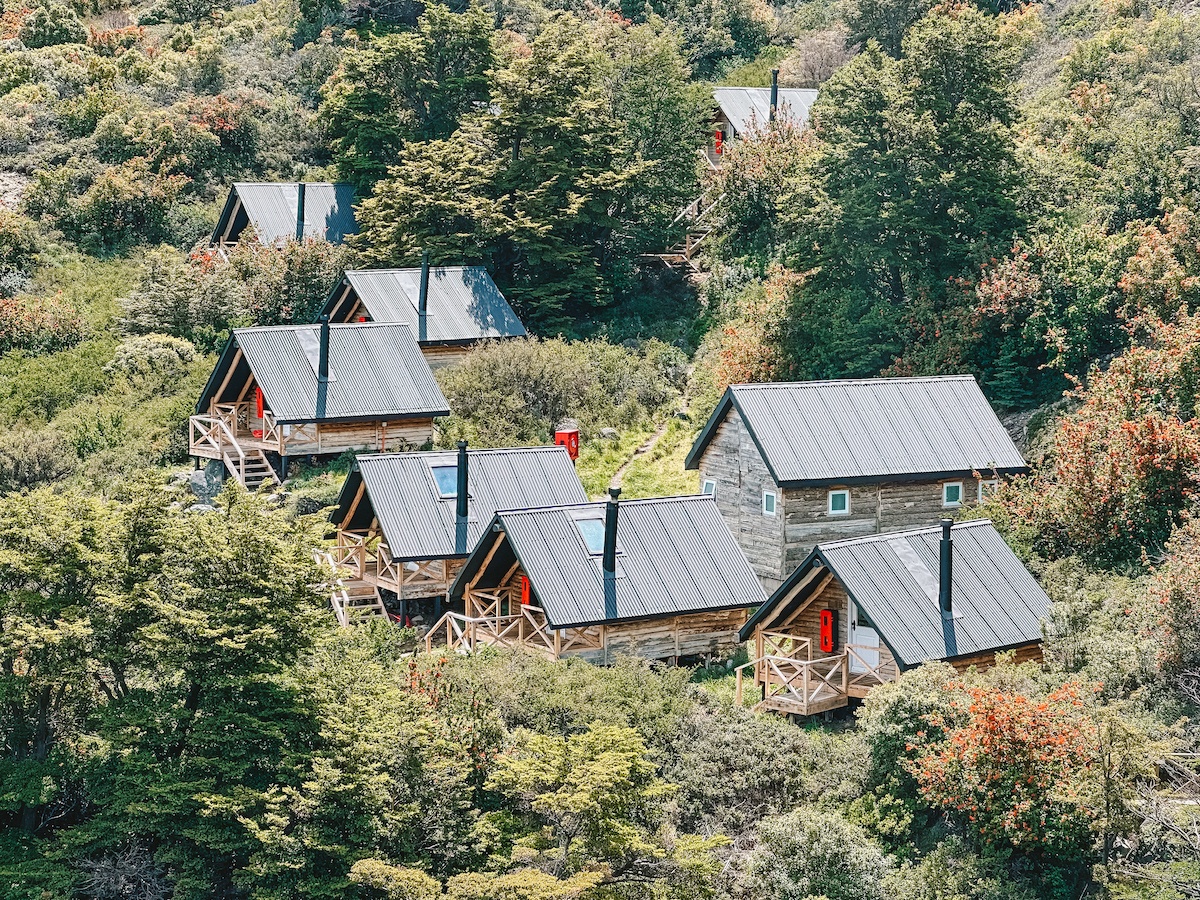
Prices differ by refugio , but expect to shell out about (per night, in USD):
- $13 for a campsite
- $40 for a tent
- $25 sleeping bag rental
- $12 mat rental
- $65 per bunk in bunk bed (comforter extra)
- $100+ for private accommodations like domes
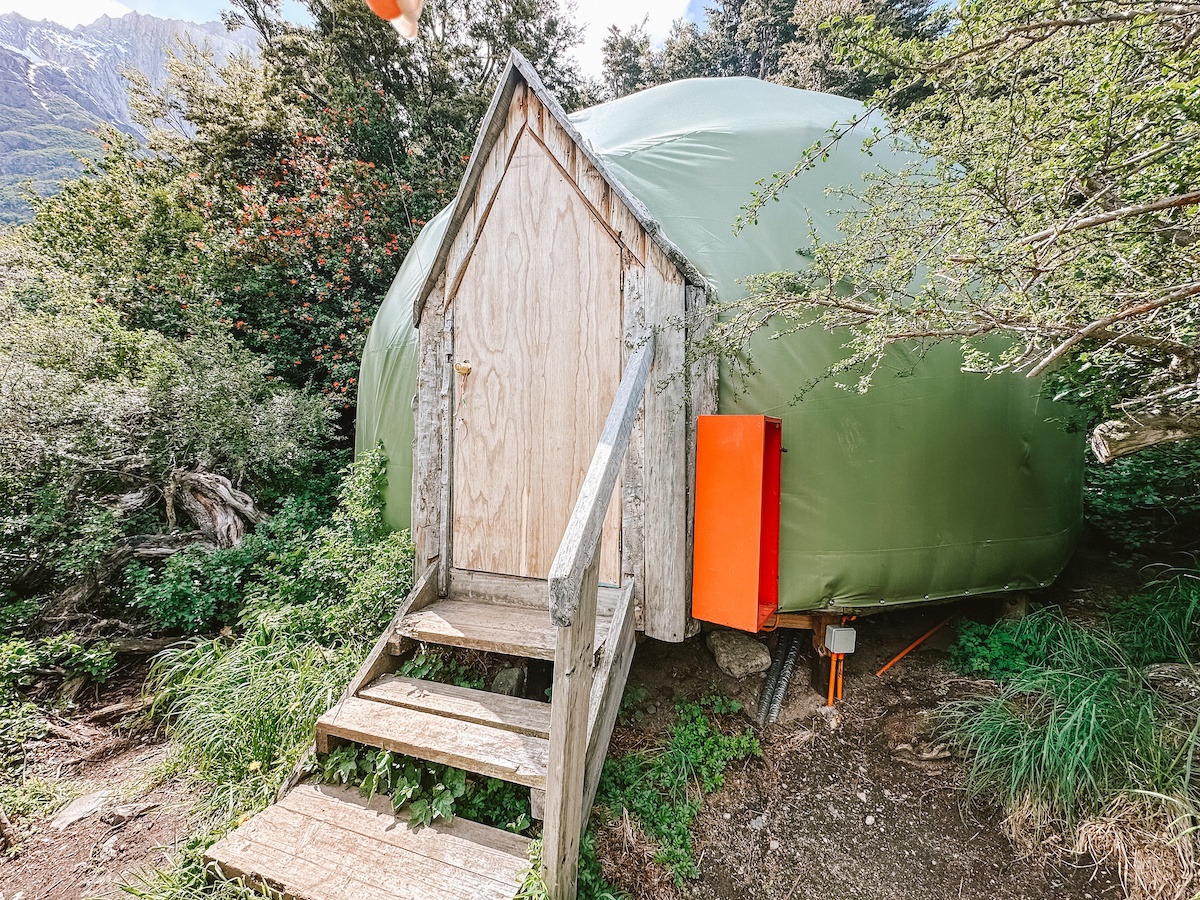
Hikers can bring their own food, or opt for a meal plan with breakfast (usually just bread and a small portion of scrambled eggs), boxed lunch and a hearty family-style dinner (timed seatings).
You’ll get a lot more out of the experience if you embrace being off-the-grid during the trek; however, those who need to connect can pay for minutes at the WiFi stations inside most refugios .
There are also outlets in the refugios for charging devices, but they can be in-demand so I recommend bringing a lightweight portable charger instead.
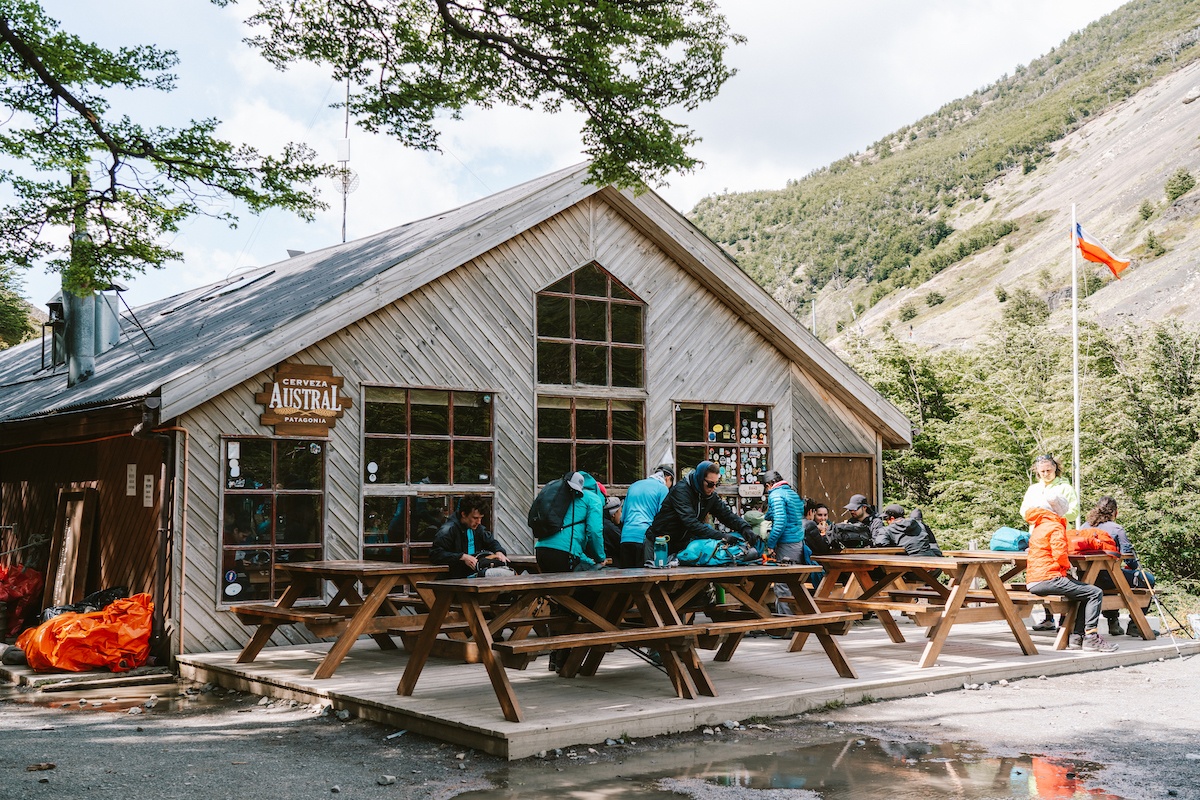
Life on the trail during the Torres del Paine W Trek
There’s a huge sense of camaraderie on the trails that feels like the good ol’ backpacking days. You’ll see the same people over and over, since there are only two potential routes and a handful of refugios.
You’ll spend anywhere from six to twelve hours walking per day (depending which part of the route you’re on), and likely only see a few dozen hikers until you get to a refugio.
The exception is the Mirador del Torres hike, which is absolutely packed with people. It sees about 1000 people per day since it’s the area’s most famous trail and can easily be done by day trippers from Puerto Natales.
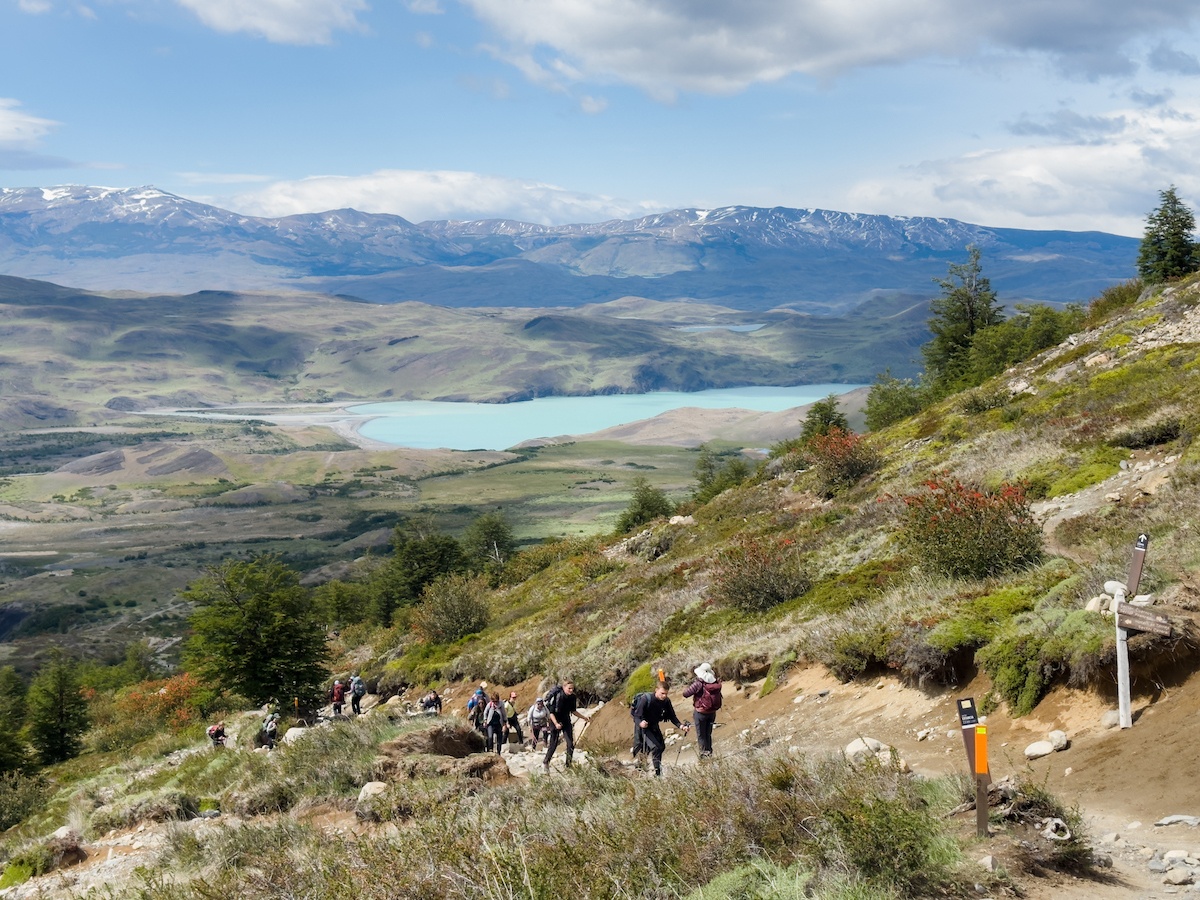
In terms of the age range, hikers seemed to be anywhere from in their early 20s to late 60s. My mom did it, and she’s turning 70 this year! I only saw one child the entire time, so the W Trek doesn’t seem to be popular with families.
It’s definitely a good idea to have hiking experience (and make sure you break in your shoes and test your outdoor gear ahead of time, obvs). That said, a couple people in our group aren’t regular hikers and managed alright, as it’s not a super technically challenging trail.
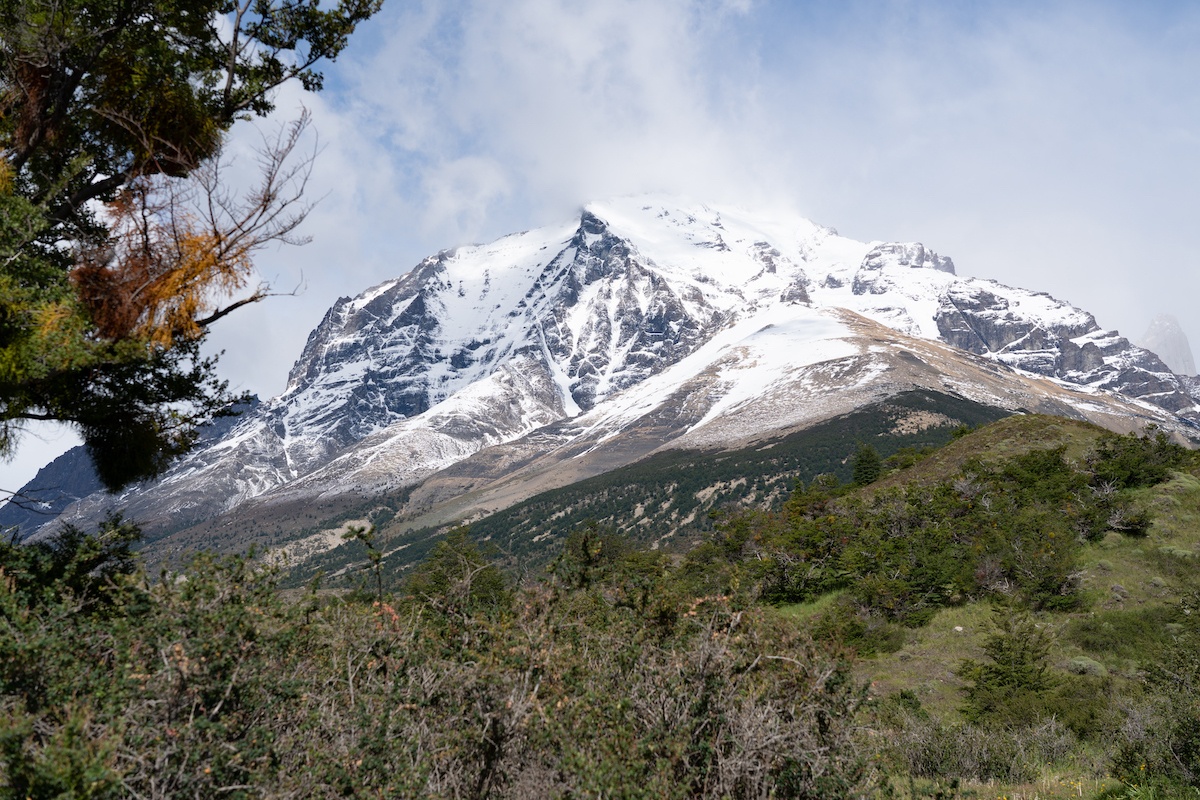
The main challenge for me was how long each day is, with very little time to rest before doing it all over again the next day. And let’s be honest, tents aren’t that comfortable. 10/10 would recommend upgrading to a bed if budget allows.
Completing the W Trek is definitely a mental and physical challenge–luckily, the feeling of accomplishment coupled with jaw-dropping scenery like soaring peaks shrouded in mist, calving glaciers and gem-toned lakes makes it all worth it.
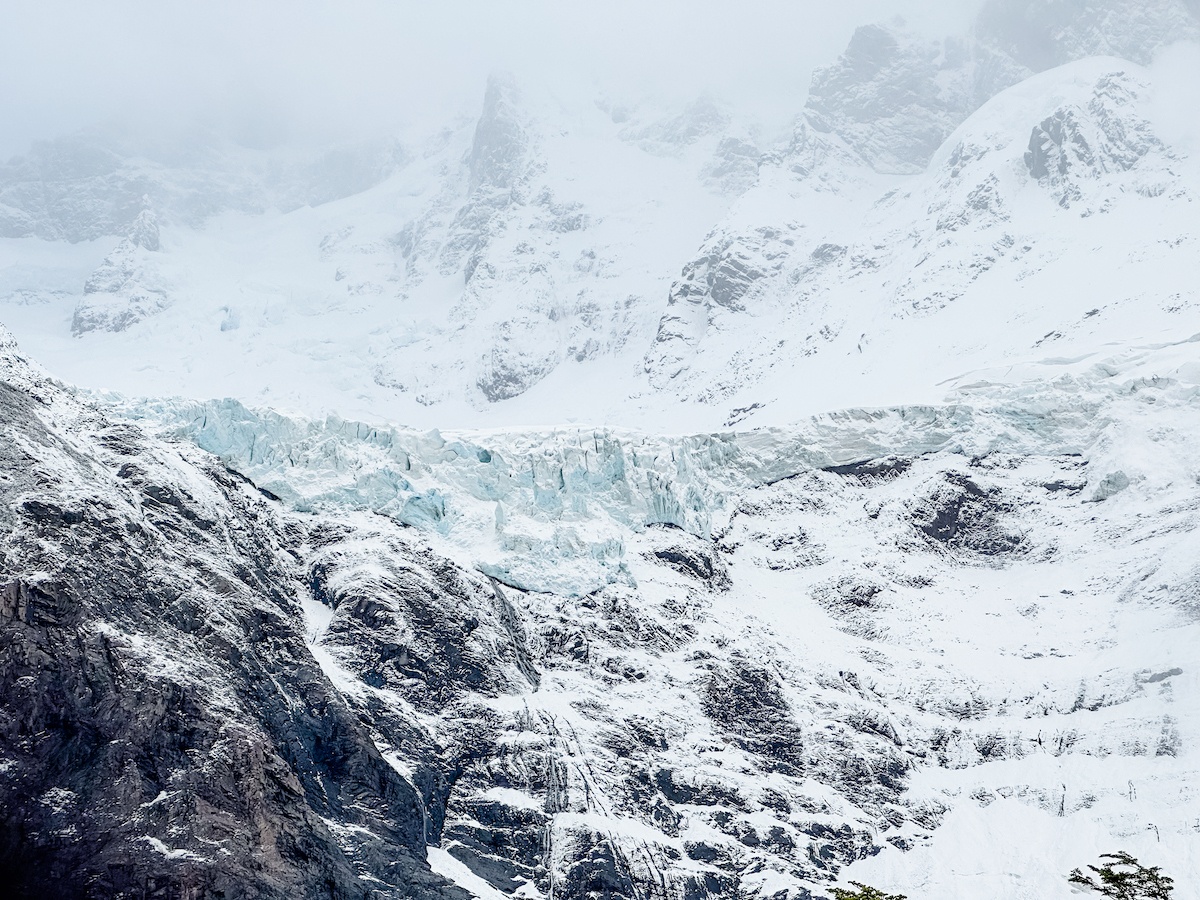
Patagonia packing list: The essentials
It’s not uncommon to experience all four seasons in a single hour in these parts, so preparation is key when planning your packing list for Patagonia.
Unless you hire a porter you’ll be carrying all of your belongings in a large trekking pack for at least two full days, and will also need to bring a lightweight sleeping bag, mat and travel pillow unless you rent them at each refugio.
READ MORE: Patagonia packing list for the Torres del Paine W Trek
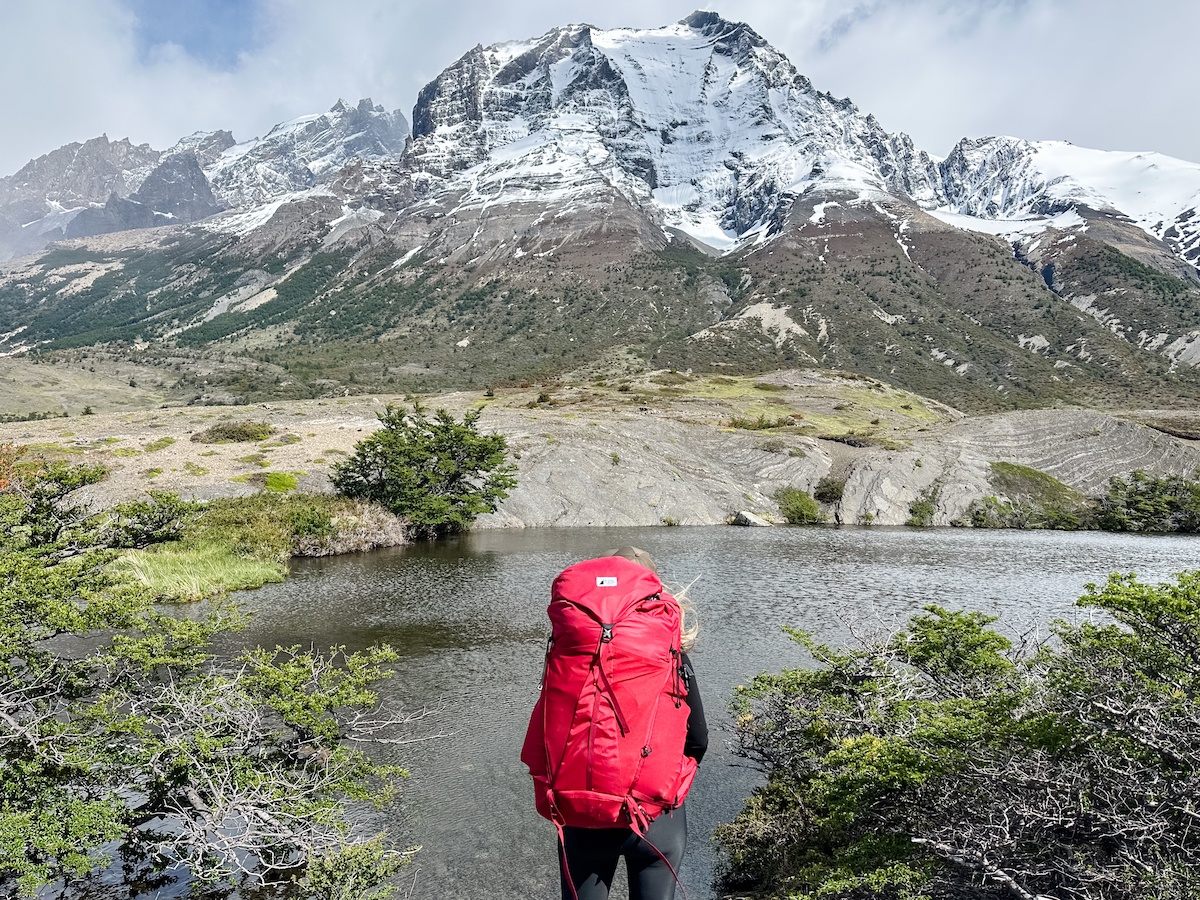
This W Trek packing list outlines every single item you’ll want to bring and a few you might not have thought of– you’ll definitely want a lightweight portable charger , collapsible hiking poles , a quick dry towel and Chilean pesos in case there’s a connectivity issue with using credit cards at the refugios .
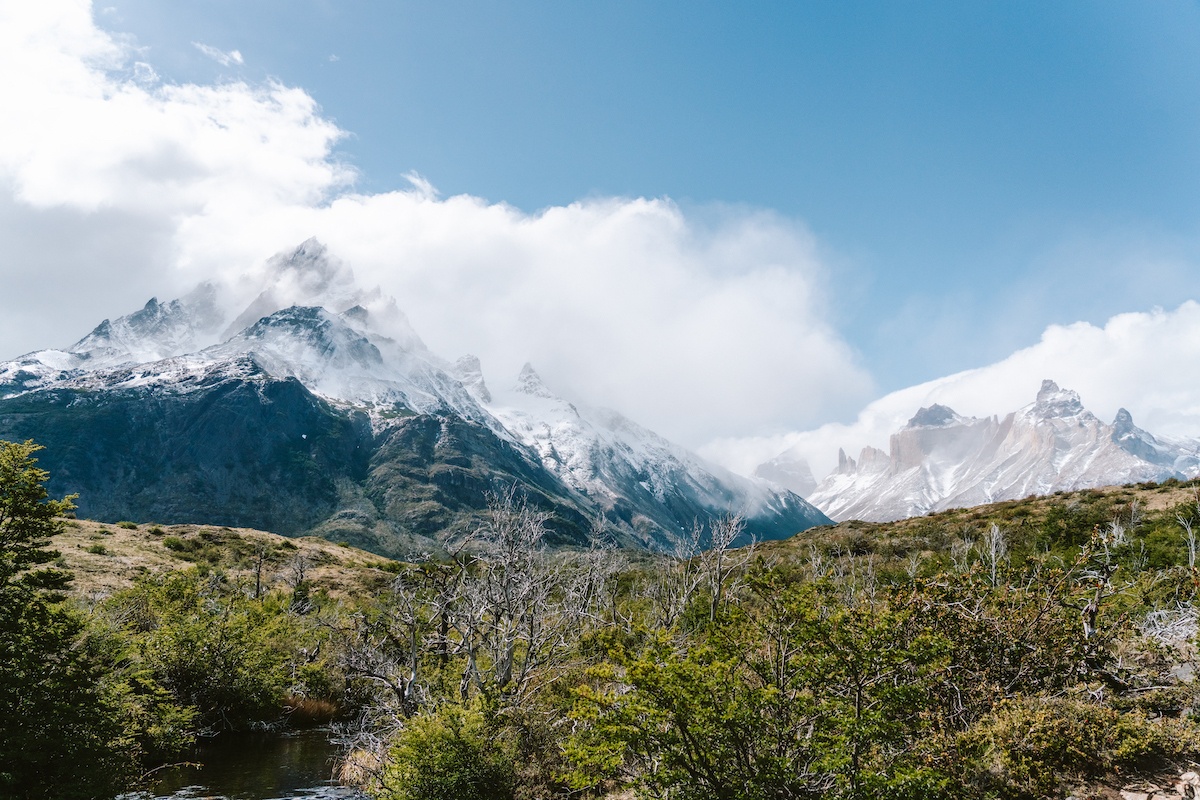
Insider tips for the W Circuit, Torres del Paine
- The Patagonia W Trek can be done all year round, but the best time is from November to March. Chile is in the southern hemisphere, so this is spring/summer when temperatures are warmer and there’s usually less rain and snow.
- If you’re planning to hike Torres del Paine without a guide, it’s critical to download a GPS map ahead of time. While the trail is generally well marked, one wrong step away from the path can get you lost in a hurry since the terrain is so untouched. Unfortunately this happened to me near Glacier Grey and resulted in a frantic 20 minutes of running up and down ravines and ridges, yelling ‘help!’ in hopes fellow hikers would hear me over the wind–luckily, a couple did. Man, was I ever thankful to see them (side note: stick with your hiking buddies!).
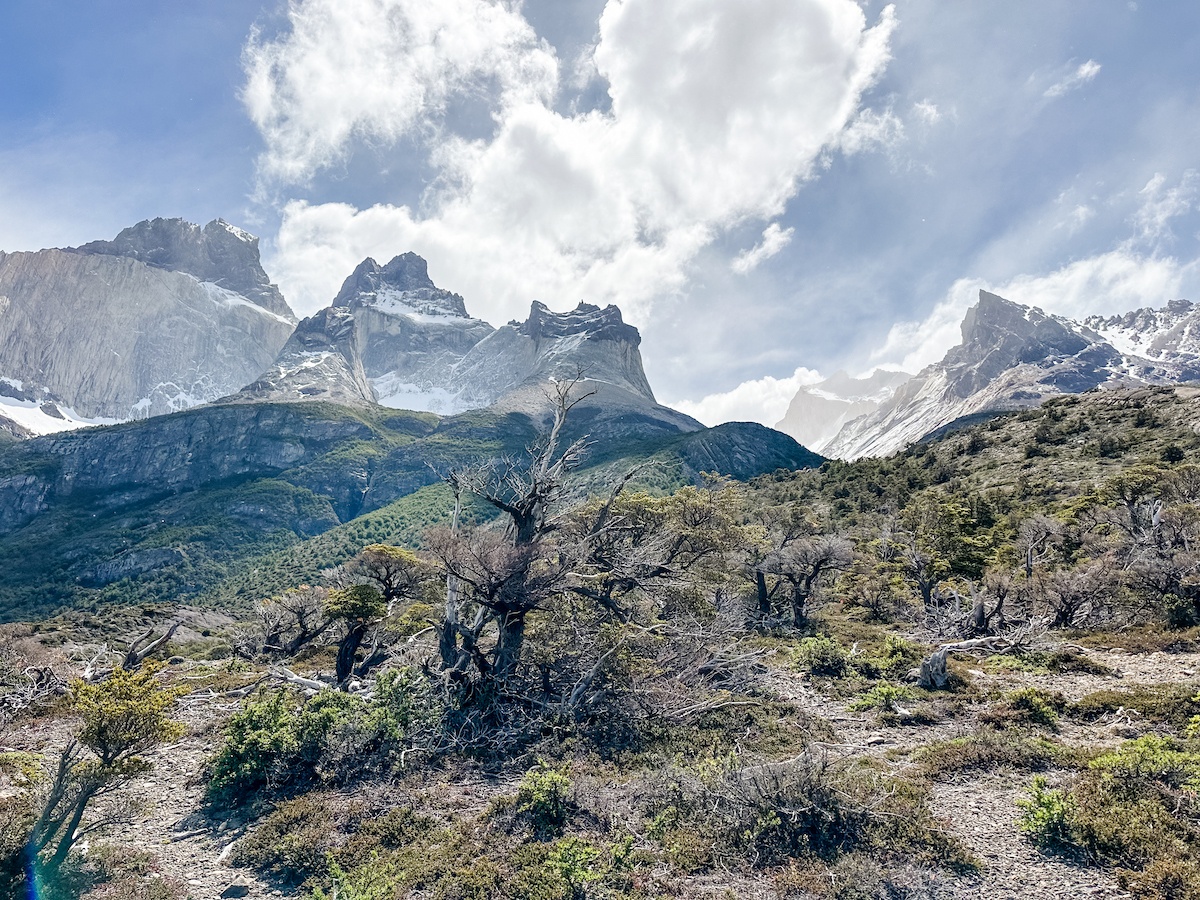
- While most people complete the W Circuit in four days straight, another option is to spend an extra day at Los Cuernos. Not only is it one of the nicest refugios with spectacular views, but that way you’ll be able to either spend the day resting up, or do the hike up to the French Valley and back to save several hours the day after by walking straight to Paine Grande.
- It’s not uncommon for refugios to ‘lose’ reservations, so bring a printed or screenshot confirmation of your booking with you on the Torres del Paine W Trek.
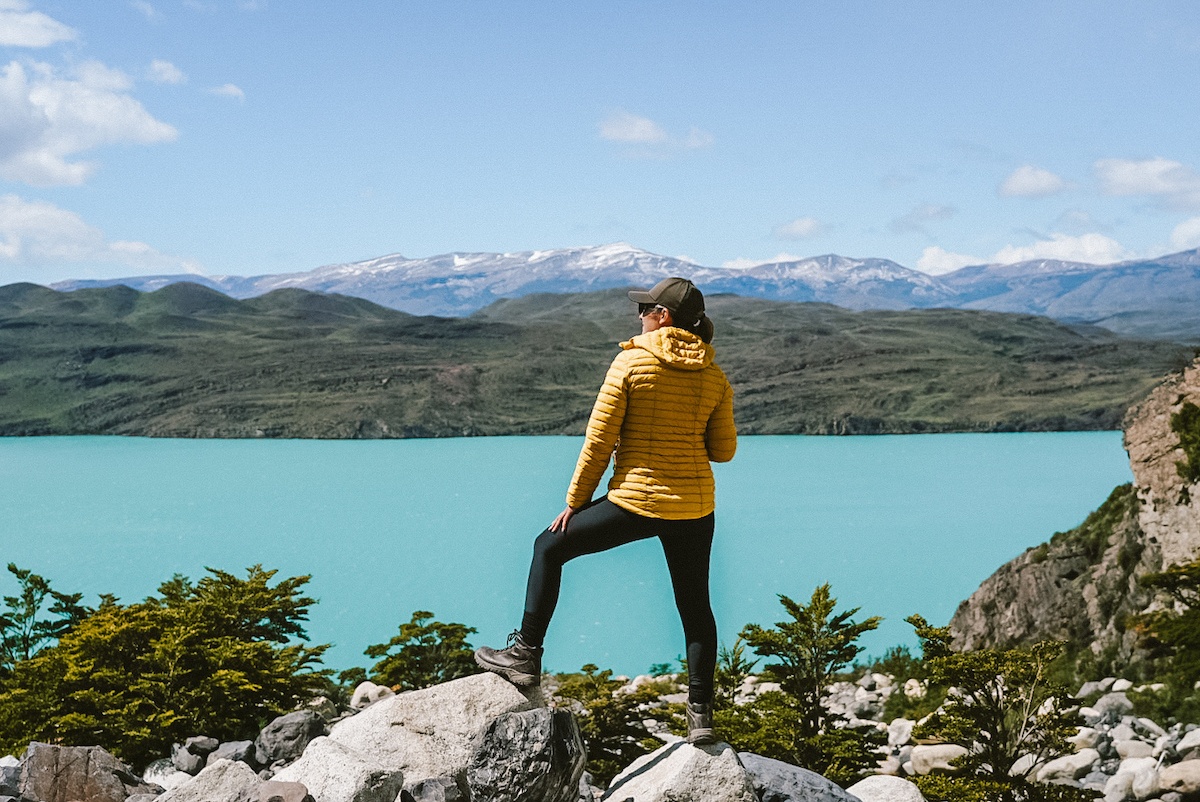
YOU MIGHT ALSO ENJOY:
- Patagonia itinerary: How to spend one week exploring southern Argentina
- 5 reasons to go backpacking in South America
- Epic hiking spots you need to add to your bucket list right now
SHARE THE PINSPIRATION! CLICK THE IMAGES BELOW TO PIN:
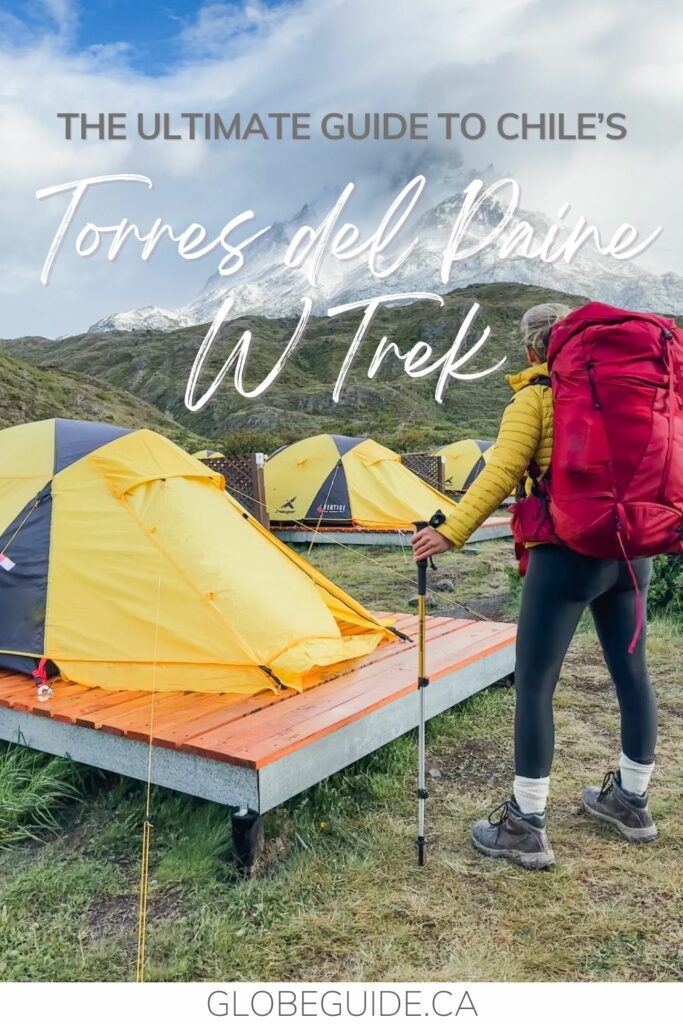
This post may contain affiliate links, which Globe Guide receives compensation for at no additional cost to you.
About The Author
Tamara Elliott
Leave a comment cancel reply.
Your email address will not be published. Required fields are marked *
Save my name, email, and website in this browser for the next time I comment.
- Privacy Policy
- Puerto Rico
- Travel Guides
Hiking the W Trek in Patagonia Self-Guided: The Complete Details

When you think of Patagonia, it’s hard not to imagine the picture of its most famous pristine peaks. Many avid hikers and outdoor enthusiasts dream of one day visiting Chile and Argentina to explore the Patagonia region. One of the most famous hikes in Patagonia is the W Trek.
This is the smaller version of the O-trek, but even though it’s shorter, it still offers the adventure of a lifetime. These hikes are located in the Torres del Paine National Park in Chile.
My dream finally came true in December 2024 when I visited Patagonia for the first time. There were beautiful landscapes everywhere, and I couldn’t stop staring at them.
In this guide, I’ll go over everything you need to know (and there’s a lot) about hiking the W Trek in Patagonia self-guided.

Table of Contents
What is the W Trek in Patagonia and Why You Should Hike it
What makes this hike unique is how well the trails are maintained, the excellent refugios, the people, and, of course, the views.
When traveling throughout Patagonia, it’s funny and cool to notice the same people repeatedly. Most people stick to a very similar itinerary.
There are options for individuals who want to camp and have gear, don’t have gear, or want to go all out and sleep in beds.
Where is the W Trek in Patagonia?
The W Trek is a four- to five-day hike in Torres del Paine National Park. Patagonia is located in Chile and Argentina , offering something different.
Most people who plan to visit Torres del Paine National Park stay in Puerto Natales . This town is easily accessible by bus if you’re coming from Calafate, where the famous Minitrekking on Perito Moreno Glacier is done.
We stopped by here shortly on our way south, where we decided to see Penguins in Punta Arenas before returning for the trek!

How to Get to Torres del Paines National Park
Getting to Torres del Paines National Park is relatively easy. We were one group of the many individuals who got to this park to do the W Trek alone, self-guided.
What does this mean? It means there’s a lot of bus options. I liked using Busbud to find bus times while traveling in Chile and Argentina.
This website didn’t have all the buses possible for every town, but it gave me a good idea of the times.
Bus From Puerto Natales to Torres del Paine National Park
Depending on your path, either East to West or West to East, will determine which bus ticket you need to buy.
No matter what, you’ll stop and get off the bus at Laguna Amarga . This is the Entrance to the park and you’ll have to show your entrance ticket. More on that later.
After finding the bus ticket on Busbud, I always visit the bus company’s website. In this case, it’s Bus Sur .
If you’re starting from West to East like us, you’ll first need a bus ticket from Puerto Natales to Puedeto . When we got to the entrance, we showed our tickets, grabbed our bags, and switched buses.
Our bus driver took a break before taking us another 25 minutes up the road to the Pudeto dock. Keep asking the drivers as everyone seemed confused about what was happening.
If you’re going from East to West, the first ticket you’ll need is one to Laguna Amarga . To find these tickets, go to Bus Sur’s website and type in the destination of Torres del Paine.
In the description will be either Laguna Amarga or Pudeto. You’ll need one of each, but you will determine which you need first and last, depending on where you start.
A side note : YOU MUST PRINT OR SCREENSHOT YOUR TICKETS
Wi-fi is scarce or non-existent inside the park.
Bus Schedule
This might be confusing at first but it’ll all become clear soon. I suggest starting a notes page on your phone with your itinerary and all the needed documents in there.
Below is the bus schedule for Torres del Paine National Park in Patagonia.
Puerto Natales to Laguna Amarga & Pudeto
Current Prices (one-way): ~12,000 Chilean Pesos
Laguna Amarga to Puerto Natales
Pudeto to puerto natales.
I get it if you don’t want to take a bus and would rather drive yourself! I suggest renting a car outside of Puerto Natales as the prices will be more expensive there.
I’m unsure about driving inside the park and to which miradors are possible, but there’s a parking lot behind the Welcome Center. This is next to Refugio Torre Norte.

Things to Know When Planning the W Trek in Patagonia
The W Trek in Patagonia is a long hike and Torres del Paine doesn’t make the information easy to find.
Below will be a plethora of extra details you need to complete the self-guided hike of the W Trek!
Overview: My Itinerary (West to East)
- Take the bus from Puerto Natales to the Park Entrance (Laguna Amarga)
- Switch buses to go to Puedeto
- Take the ferry to Paine Grande ($25,000)
- Hike to Grey (11km) and hike back to Paine Grande (11km)
- Hike from Paine Grande to Mirador Britanico (13km)
- From Mirador Britanico, hike to Cuernos (10km)
- Hike from Cuernos to Chileno
- Wake up early hike from Chileno to Mirador Torres del Paine
- After spending time at the mirador, hike down to Torres Central and the Welcome Center
- Purchase a ticket back to the park entrance ($5,000)
- Take the bus back to Puerto Natales

Things to Bring
Patagonia is known for its huge mood swings of weather, and I wouldn’t change that for the world. It’s what makes this area unique. But it’s a good idea to come prepared.
During the peak season, between December and February, there will be warm, cold, and rainy weather. Here are some things I suggest bringing.
- Hiking Boots
- Grayl Water Filter
- Insect Rep ellent
- Patagonia Down Sweater
Do I have to Purchase a Camping Spot in Torres Del Paine?
Unfortunately, you can’t simply show up in Torres del Paine and expect to camp for free if you have your own gear. I’ve heard many stories of other travelers not doing their research and showing up with no purchased camping spot.
A few companies own these camping spots on the W Trek in Patagonia.
- For tents/camping spots/beds at Paine Grande, you must book a spot through Vertice Travel .
- If you’re looking to stay the night at Cuernos, Torres Central/Norte, or Chileno, you must book through Las Torres .
How Far in Advance to Book?
Hiking in Torres del Paine National Park is one of Chile’s most popular activities. This might seem obvious to some but what isn’t so obvious is how early you must book your reservation.
From experience, my girlfriend and I tried booking in early October for late November. There were spots, but many were limited, and not everything was available in three straight days.
We ended up booking our reservations for the park for the middle of December. I’d suggest booking your reservations for Torres del Paine at least two months in advance, if not further.
You don’t need to purchase the ferry ticket in advance as this can only be bought in person with cash.

Entrance Fee
Unlike when doing hikes like Laguna de los Tres in El Chalten , there is an entrance fee for Torres del Paine National Park.
You can purchase the entrance tickets here . They are currently $12,000 for a 3-day or more pass.
You must download the QR code before getting on the bus, as there will be no signal once you get to the park.
How Many Days Does it Take to Hike the W Trek in Patagonia?
The days it takes to hike the W Trek in Patagonia will depend on your fitness level and if you want to take your time.
We did this trek in 3 nights and 4 days. This is the shortest time I’d ever suggest, even if you’re a fantastic hiker.
My suggestion would be to do 4 nights and 5 days. This will give you ample time to relax at the beautiful refugios and take it all in without feeling rushed.

Camping vs. Refugios
The amazing thing about this trek is that you have multiple options for your sleeping arrangements, depending on your budget.
We rented a tent and slept in the Refugio. On night one, we rented a tent with a mat, and it was honestly more comfortable than I thought it’d be!
For night two, we slept in a dorm room at the Refugio. This wasn’t too bad, but the price was almost triple that of renting a tent the previous night.
We were exhausted and wanted a good night’s sleep. We got that.
For the third night, we slept in another tent but it was large and elevated. I loved these! These were at Chileno Refuge next to Mirador Torres.
The main pros & cons for renting a tent or sleeping in the Refugio are money and if you can’t sleep well in a tent.
I’ll go over the prices of everything next.

How Much Does the W Trek Cost?
Hiking the W Trek in Torres del Paine is expensive. Especially when compared to other places in Patagonia like Bariloche and El Chalten .
But there’s ways to make this experience cheaper like bringing our own food and camping gear.
Overview (per person) : Our Costs
- This price includes mats & sleeping pads for both nights we camped.
- This price is mainly from buying dinner on nights 2 & 3. We packed our food for every breakfast and lunch.
- Tickets (Bus + Ferry + Entrance) : 61,000 Chilean Pesos or $62 USD
- Total Cost Per Person : $537 USD
Food Costs :
- Breakfast = $25
- Lunch/Box Lunch = $25
- Dinner = $40
- Full Board = $80
- Breakfast = $28
- Box Lunch = $30
- Lunch = $50
- Dinner = $50
- Full Board (Breakfast/Box Lunch/Dinner) = $100
- Half Board (Breakfast & Dinner) = $70
- Same price as Cuernos because they are the same company.
Campsite/Refugio
- Campsite (with own equipment) = $13
- Simple Bed = $65
- Bed w/ Bedding = $100
- Premium Campsite w/ Everything = $190 single/$220 double
- Single Bed = $144
- Premium Tent = $200 single/$288 double

Which Direction is the Best for the W Trek?
This is one of the most asked questions about the W Trek in Patagonia. For me, it was quite simple.
I wanted to end this amazing adventure at the best view in the park, Mirador Torres.
Going from East to West might make more sense if you want to explore Lago Grey and do activities such as kayaking and ice trekking.
I personally loved going from West to East, and I’ll tell everyone to do this same route every time.
W Trek Patagonia Map

Credit goes to the Torres del Paine Website . There’s a lot of maps out there if you want something better.
How to Make Campsite/Refugio Bookings in Torres del Paine
I mentioned this earlier, but there are two separate websites you must book your accommodation through before arriving.
If you plan on taking the same route we did and going from West to East, you’ll stay at Paine Grande, Cuernos, and finally, Chileno.
Below are the websites to book each night’s stay.
- Paine Gr a nde
W Trek vs O-Trek in Patagonia
You will hear many people humbly bragging about completing the O-trek, and as they should. It’s definitely difficult, even compared to the W Trek!
The O-trek is much longer and less commercialized in the upper sections. You create a strong bond with everyone who completes it with you.
We did the W Trek because we were short on time and didn’t have our own gear. This meant the trip would be more expensive than we could budget.

Is the W Trek Difficult?
Some might not agree, but the W Trek is difficult. You should only attempt it if you’re in decent hiking shape.
If you’re flying into Santiago first before completing this, there’s a hike called Cerro Manquehue . It’s one of the best views in all of Santiago!
W Trek in Patagonia Hiking Details
- Distance: This hike is a 45.5-mile point-to-point.
- Duration: On average, it will take people 4 days to go up and back down. This depends on your fitness level and which route you take.
- Difficulty: I’d rank this hike as hard because of the amount of time it takes and the elevation gain.
- Incline : The elevation for this hike is around 9,917 feet or 3022 meters.
- Hiking Guide: A guide is not needed for this hike and is easily accessible by the public
Best Places to Stay in Puerto Natales
- Yogan House : This is the hostel we stayed at but it felt more like a really nice B&B. The rooms were amazing and it was by far the best breakfast I’ve ever had in South America.
- Vinnhaus : If you’re looking for a stunning, centrally located hotel, this is it. There’s nothing bad I can say about this place. It honestly should cost more.
- Hostal Boutique Factoria Patagonia : Looking for a cabin like experience in Puerto Natales? Then look no further than this spectacular Boutique hotel!

My Experience Hiking the W Trek in Patagonia
Hiking the W Trek was unlike anything I’ve ever experienced. I met new people and made new friends, all while taking in some of the most beautiful scenery in the world. It was priceless.
The first day was honestly one of the longest, if not the longest. We started by waking up at 6 a.m. and getting a ride to the bus station.
We took the earliest bus because we knew the day would be long. It was quite relaxing, actually, and most of the people on the bus slept.
Things started getting confusing when we arrived at the entrance two hours later. We were told to switch buses but different people kept telling us different buses.
Eventually, we found the right bus, and we were headed another 30 minutes to Pudeto.
We arrived at the dock, bought a cafe late, and waited for the ferry to arrive. You’ll pay the ferry in cash (25,000 CLP).
Once we arrived at Paine Grande, we unpacked, ate lunch and headed to see Lago Grey! We should have stayed the night here and then hiked in the morning because it was already late and we’ve been moving for quite some time now.
You can stop in different spots; you don’t have to go the entire way.
When we finally returned to Paine Grande, we cooked our dinner and immediately went to sleep.

The next day was another long one. All of these days were going to be quite long but the first two were the longest.
We woke up, ate breakfast and hit the trail. Our first goal was to reach Mirador Britanico and then end at Cuernos.
The hike up to this mirador is steep and adds on a lot of mileage. I don’t think going all the way to the top is worth it. Instead, you can go halfway where the views are better and go back down. It’s stunning.
There’s a refugio here, and you can leave your bags at the bottom to hike up since you’ll be coming back down.
From here, we headed to Cuernos, where we then enjoyed a nice salmon meal and a couple of beers and relaxed.
Along this trail to Cuernos, you’ll go along a beach with black and white pebbles. It was raining and the feeling was surreal.

This was the shorter day and I was excited for that. We woke up, ate breakfast, and once again got on the trail early.
The trail was relatively flat for the early section until you met back up with the trail to Chileno from Torres Central.
This part became very steep but once we reached the top, you could see the refugio. We arrived early enough to have a couple beers, take a nap, shower, all before dinner.
After dinner, we washed up and went to bed early because the next day was going to be the best of them all.

Day 4: The Final Day
This was it. This is what we’ve been waiting for. We woke up around 6am, ate a quick breakfast, and got on the trail.
We were actually late to the party as a lot of people who stay at Chileno end up going there for sunrise. I think there was more people there for sunrise then when we arrived around 9am.
The trail was easy at first but became steep and sometimes hard to follow. But once you make it, you’ll know.
I couldn’t stop staring at her. Torres was something from a storytale, and I didn’t want to leave.
We spent around an hour here taking photos and eating snacks before we headed down. As we started to descend, large groups were going up.
After resting at Chileno, we headed back towards Torres Central and the Welcome Center. We bought a shuttle ticket back to the entrance and that was it.
Just like that, it was over.

Final Thoughts
I’ll be back. I told myself I needed to complete the O-trek, and I will. This hike wasn’t only about reaching Torres but everything in between, from making new friends to exploring a totally different part of the world. Patagonia is magical, and everyone should be able to explore this area one day.
Previous post

Minitrekking on Perito Moreno Glacier Review: Complete Guide

How Many Days in El Chalten: My Complete Itinerary
Related posts.

Cerro Manquehue Hike: The Best Viewpoint in Santiago, Chile
Leave a reply cancel reply.
Save my name, email, and website in this browser for the next time I comment.

Recent Posts
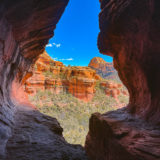
The Subway Cave Hike in Sedona: Everything You Need to Know
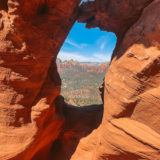
The Schnebly Hill Windows Hike in Sedona: The Complete Guide
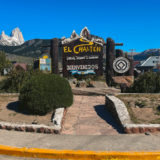
TRAVEL GUIDES
Popular cities, explore by region, featured guide.

Japan Travel Guide
Destinations.

A Creative’s Guide to Thailand
Creative resources, photography, videography, art & design.

7 Tips to Spice up Your Photography Using Geometry
GET INVOLVED
EXPERIENCES

#PPImagineAZ Enter to Win a trip to Arizona!
The journal, get inspired, sustainability.

How to Be a More Responsible Traveler in 2021
Chile , guides , south america , travel stories, how to solo hike the w trek in torres del paine, chile.

- Published June 26, 2020
For nearly 10 years, it had been a goal of mine to complete a long distance trek in South America. The more research I did, the more discouraged I became. The 15,000-foot altitudes of the Peruvian Andes are not for the faint of heart, and the heat of Colombia and Brazil seemed beyond intimidating. After months of lengthy research, I landed on Chile. Chilean Patagonia is one of the most stunning regions in the world but lies at an altitude of only 3900 feet, thus making it accessible for all levels of hikers.
Torres Del Paine is one of the most well-known national parks in the region. With 2400 square kilometers of terrain, there’s plenty of trail to be explored. Though you can enter the park to complete short day hikes, the multiple-day W trek is a great option for those wanting a bigger challenge.
Most research will lead you to believe that you need to shell out several thousands of dollars to complete the W with a guided tour. However, the W trek isn’t particularly technical and the trail is well marked. If you are a moderately experienced hiker or backpacker, the W can be completed independently, at a much lower cost.

I foolishly thought I could begin planning this trek just a few months in advance. It wasn’t until I began checking the accommodation booking sites that I realized nearly everything was sold out for my desired dates. I had hoped to complete the W trek in late November when the weather is more dependable (though in Patagonia it rarely is). But I was forced to go in late October, due to the volume of bookings later in the year. If you plan to hike during peak season (November-March) , it’s important that you begin booking very early, perhaps even a year in advance. The trail is extremely popular, and accommodations sell out fast.
The first questions you’ll need to answer are:
How many days will you spend trekking? And what direction would you like to hike?
The W trek can take 4, 5 or 6 days depending on your speed. It can also be competed from from East -> West or West -> East. The famous Torres Del Paine will be tackled at the beginning if you choose to hike East-> West. I opted for West-> East, so I could save the famous towers for the finale.
Where to Stay
The stops along on the W trek offer different levels of accommodation. You can choose to camp or stay in the refugios, which are considerably more comfortable but more expensive. They are similar to hostels, with most rooms having 4-8 beds and a shared bathroom. You can also opt to have your meals provided (breakfast, lunch, and dinner) or bring all of your own food.
You can make reservations online via Vertice , which manages the accommodations in Paine Grande and Glacier Grey. And with Fantastico Sur, which manages the accommodations at Central, Cuernos, El Chileno, and Frances.
Getting There (Santiago –> Punta Arenas –> Puerto Natales –> Torres Del Paine)
To arrive in Chilean Patagonia you must fly to Santiago. From there you can catch another 3 hour flight to Punta Arenas in the south. Later, take a bus from Punta Arenas to Puerto Natales. A popular company is Buses Fernandez , and you can catch the bus at their direct terminal offices in Punta Arenas. Buses depart every 2 hours starting at 7 am and the journey takes about 3 hours.
From Puerto Natales, you will catch a bus into the park which takes another 2 hours. The bus terminal is located in the center of the town and the majority of hostels will be within walking distance. Most bus companies have only 2 daily departures into the park, so try to buy your ticket in advance for the early bus (7am). Lastly, depending on which direction you choose to hike, you will take another bus or boat to your hiking start point.
I recommend arriving 2-3 days before beginning the actual trek, to spend some time in both Punta Arenas and Puerto Natales, which are both lovely towns worth exploring.

My 5 Day Itinerary
Day 1 (Puerto Natales –> Refugio Grey)
– Catch the 7am bus from Puerto Natales into Torres del Paine. You’ll want to start early as the boat that goes to Paine Grande departs at only 9 am, 11 am, and 6 pm. You can find time-tables here .
– Once you arrive at the park you will pay your registration fee and then continue in the same bus to the boat dock or to the other end of the park.
– Upon arriving at the boat dock, get in-line to board, as the boat won’t take any more passengers once it is full. You will pay for your ticket onboard.
– After a short boat ride (45mins) you will arrive at the Paine Grande Lodge. You can choose to leave some equipment here for the night if you plan to return and stay the next day.
– Follow the signs to start your trek to Grey Lodge. This portion of the hike covers 11 km and takes between 3-4 hours . The hike is lovely and not particularly difficult. The main challenge here is that the path can be extremely windy and doesn’t offer much coverage from rain or sun.
*Refugio Grey is one of the nicest refugios along the W trek. I highly recommend spending a night here if you want to split your time between camping and refugios. The food offered here is also amazing. Bring extra cash or your credit card to buy drinks and snacks at the bar.
Day 2 (Grey –> Paine Grande)
– You will follow the same path as the previous day to return to Paine Grande. The hike is mostly flat or downhill. You can choose to add in an early hike to the hanging bridges before making your descent.
– Paine Grande offers pre-pitched tents that are large and spacious and a kitchen area to cook your own food. You can also choose to stay in the refugio and purchase the meal plan.

Day 3 (Paine Grande –> Los Cuernos)
– This will be the longest and most difficult day of the trek covering 21km and involving a lot of elevation gain. That said, this day offers some of the most stunning views of the trek and should take around 7 hours.
– Wake up early and begin your trek to refugio Los Cuernos. This refugio offers wifi at a cost and has a beautiful bar overlooking the mountains. Save some cash or have your credit card handy to enjoy a delicious Pisco Sour after your long day.
Day 4 (Los Cuernos –> El Chileno
– The trail from Los Cuernos to El Chileno includes a subtle and steady elevation gain throughout the day. The trail can be quite muddy if it rained but it offers some beautiful river and lake views throughout the trek.
– The trail covers 15km and takes 5-6 hours
Day 5 (El Chileno –> Torres del Paine –> Puerto Natales)
– The final day of your hike is long but will include the grand finale of the Torres del Paine
– Wake up very early (some choose to start around 4/5 am to arrive at the towers at sunrise) and begin your 4km trek to the towers. The hike is mostly uphill and winds through the forest as well as some exposed cliffside paths. It is advised to use hiking poles for this day, as there can be ice or snow at the top.
– After visiting the towers, start your descent to Hotel Las Torres. From there you can catch a bus back to the park entrance and then take the bus back to Puerto Natales. In total this day will cover 14km.
What to bring
Your gear selection will largely depend on whether you choose to camp or stay in the refugios during your trek. Since most campsites will provide a tent, it’s not necessary to bring yours, but all other camping essentials are recommended.
Camping Gear: sleeping bag 20 degrees or less, sleeping mat, gas stove/jet boil, gas canister, light weight bowl/plate/utensils, travel towel.
Clothing : Layers are the most important thing. Handful of lightweight shirts/base layers, fleece jacket, waterproof jacket, waterproof gloves, water resistant pants, several pairs of socks, hiking boots, slippers for the camp/refugios, warm hat, sunglasses, clothes you can relax in at the refugios, pajamas.
Hiking Gear : Hiking poles (I found these were not needed most days, but I did wish I had them on the hike to the Torres), headlamp, sunscreen, moleskin, water bottle.
Things I wish I had known
Researching accommodation and food prior to my trip led me to believe that I needed to decide in advance if I would stay in the refugios or if I wanted to include any meals. I was also under the impression that I needed to carry all the food with me that I might eat while camping.
This was certainly not the case. The refugios leave some space open for hikers to decide at the last minute if they would like to change from camping to a dormitory. It is best not to count on this and to reserve in advance, but there will likely be an opportunity to change while you are hiking. You are also able to add dinner or breakfast at the refugios at any point. In regards to carrying your food, all of the refugios have small shops offering snacks like chips, cookies, and soup. It is not necessary to carry all of your food with you from the start of the trek.
Have you completed a Patagonia trek solo? Let us know in the comments or on Twitter !
Trending Stories
The pursuit of self on south africa’s spectacular otter trail, two hours from: reykjavic, from the arabian sea to your plate: seafood in varkala , explore by region, explore by map.

SIGN UP TO OUR NEWSLETTER
Get your weekly dose of armchair travelling, straight to your inbox.
© Passion Passport 2024

Hiking The W Trek In Patagonia: A Self-Guided Itinerary [2024]
01 apr 2024 11 nov 2023 | dan.
You can choose your own adventure when it comes to trekking in Chile, but if you like to plan ahead, here’s our tried-and-tested 5 day/4 night, east-to-west, self-guided itinerary for hiking the W Trek Patagonia .
Last updated on 26 March 2024 by Dan
Torres del Paine National Park is a place so epic and otherworldly, its name is often spoken with a kind of hushed reverence. This vast and dramatic stretch of Chilean Patagonia is home to some of the most mind-blowingly beautiful scenery on Earth, and hiking the W trek is one of the greatest ways to immerse in it.
This is Patagonian hiking at its very best, but how you trek the W trail is entirely up to you .
You can go with a guide, or do the W trek self guided (in the warmer months anyway). You can stay in lodges and enjoy a cooked meal and a warm bed. You can carry your own gear and pitch your tent in one of the designated campsites along the way, or carry no gear and book a tent at each site. You can carry all your food, or add a half or full board meal package to your booking, or do a bit of both.
We opted to camp but rather than carry all the gear, we arranged for a pitched tent to be waiting for us each day. We packed food for most of the trek and booked a full board meal package (dinner, breakfast and packed lunch) at one of our overnight camping stays.
The direction you hike and the time you take to do the trek is also your call. As occasional hikers with temperamental knees, we opted for the typical self guided W trek itinerary of 5 days and 4 nights .
Many argue that hiking west to east, and saving the striking granite peaks of Las Torres for the last day is a fitting finale to this incredible hike. We took the opposite view though, starting with the awe-inspiring torres and hiking the W trek east to west so that we could tackle the toughest legs of the trail in the first couple of days, while we still had plenty of energy.
At the end of the day, no matter how you take on the W hike, you’re still trekking one of the most spectacular trails on the planet. And you’ll still get to enjoy the jaw-dropping vista of Las Torres. Twice even, if you’re keen.
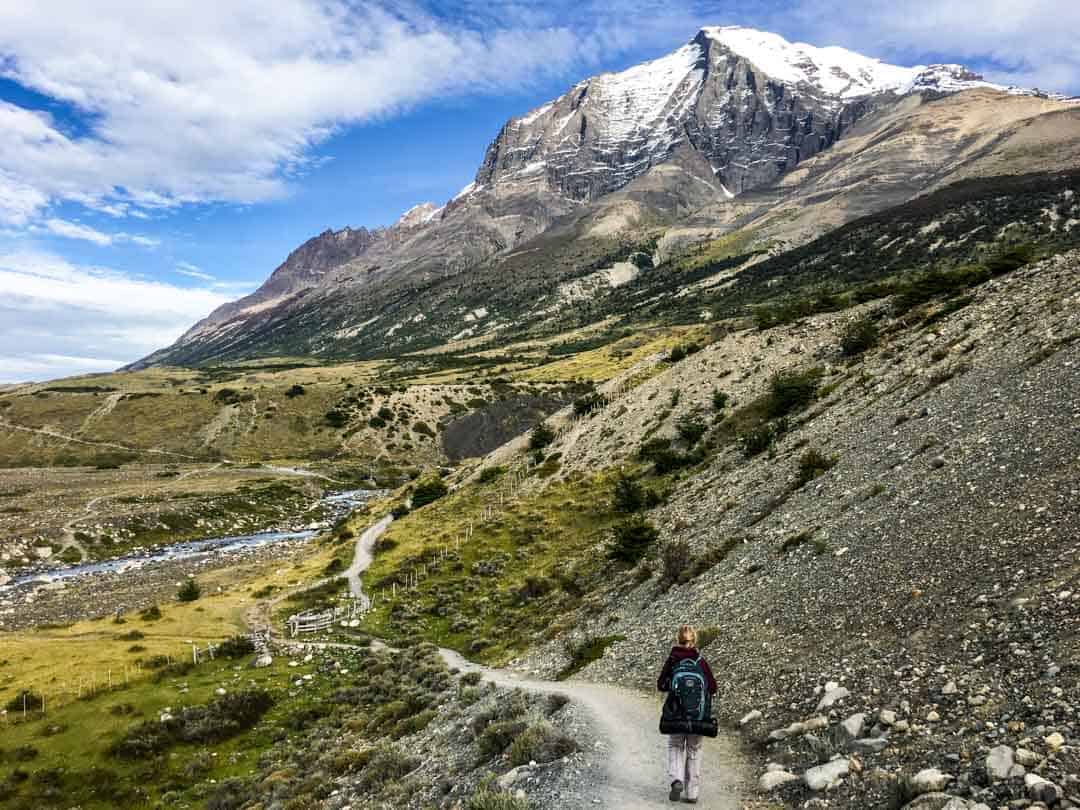
Hiking the W Trek Snapshot Location: Torres del Paine National Park, Chile Nearest town: Puerto Natales, Chile Getting to and from the park: Torres del Paine is easily accessible by bus from Puerto Natales. Park entry: Park entry tickets and overnight stays in the park (campsites and lodges) must be arranged before visiting the park. Start and finish: The W Trek traverses a roughly w-shaped route through Torres del Paine National Park between Refugio Las Torres in the east and Refugio Paine Grande in the west. For this itinerary, we start in the east and hike west. Distance: appx. 74 kilometres (46 miles) one-way Time: This itinerary is 5 days and 4 nights Difficulty: Moderately difficult, with some challenging stretches and steep climbs, plus highly changeable weather. We’re occasional hikers but with some preparation and a reasonable level of fitness, we found the W Trek very do-able (even if all our muscles were screaming for days afterwards!).
What’s in this post?
Preparing for hiking the W Trek Patagonia What time of year is best for hiking the W? Where to stay before and after the trek Entry to Torres del Paine National Park Booking Camping and Accommodation on the W Trail Bus tickets to and from Torres del Paine Packing for the W Trek Our Self-guided itinerary for hiking the W Trail Day 1 – Puerto Natales to Chileno via Las Torres Day 2 – Chileno to Francés Day 3 – Francés to Paine Grande via Francés Valley Day 4 – Paine Grande to Grey Day 5 – Grey to Paine Grande (and return to Puerto Natales)
This post contains affiliate links. If you find these links useful and you choose to purchase through these links we may receive a small commission, at no extra cost to you, which helps us to keep this website running. Your support is much appreciated!
Preparing for hiking the W Trek Patagonia
We aim to fully check and refresh this post for each trekking high season (October to April). Things can change without notice though, so we recommend also visiting the links below for information while you’re planning and before you go:
- For the latest updates on requirements for travel to Chile, visit the official Chile tourism website .
- Torres del Paine National Park is managed by the park agency CONAF. Visit the official national park website for park reports, park entry information and more.
- When you check-in at the park for your trek, you’ll receive an information guide with a map showing the park’s trails, services and accommodations. The current brochure can be found here .
What time of year is best for hiking the W?
Patagonian weather will keep you on your toes no matter when you visit Torres del Paine National Park. Be ready for everything. However, there are two distinct periods to be aware of when planning your trip.
High Season – October to April
These are the warmer months in the southern hemisphere, and December to March is the busiest time of year to trek in the park, with visitation peaking over January and February. During this period, you can choose to do a self-guided hike or go with a guide .
If you’re travelling in high season, and particularly if you’re planning to visit during the peak months, be sure to reserve your place in the lodges or campgrounds as far in advance as possible . Torres del Paine is now one of the most popular places to trek in Chile and overnight places book up very quickly.
We hiked the W trail towards the end of March, and while sections were busy, like the path to Las Torres, there were stretches where we wouldn’t see more than a handful of people in hours.
That said, despite making our campsite reservations months prior to our visit, we initially struggled to find availability and had to change our trekking dates to suit what we were able to book.
Low Season – May to September
Many people say winter is even more magical in Torres del Paine.
The park entry fee drops during the low season and you’ll find far fewer people in the park. But temps will also be lower, daylight hours are shorter, rain is frequent and there can be snow and ice. Many of the mountain trails are closed, as are a number of the mountain lodges and services. Trails that are open can also close suddenly due to weather (though that can happen at any time of the year).
Most importantly, to do the W Trek or hike to the base of Las Torres during the low season, you must have a qualified guide . This period typically runs from 1 May to the end of August, but check the official Torres del Paine website for more information if you’re planning to visit over this time.
The bottom line: No matter what time of year you visit Torres del Paine, given the changeability of the weather there, you should check in with park agency CONAF for latest updates and closures.
Where to stay before and after the trek
The nearest major population centre, and the main jump-off point for a Torres del Paine trek is Puerto Natales , a low-key Patagonian town hugging the shores of the picturesque Última Esperanza Sound.
The drawcard of Torres del Paine’s trails has seen Puerto Natales develop a buzzing trekker scene.
We suggest giving yourself a couple of days in Puerto Natales before your trek to get organised, shop, hire any gear you need, and sort out transport to and from Torres del Paine if you haven’t already (see our section on sorting out bus tickets further on).
Just about everyone staying in Puerto Natales is out and about doing the same thing, so having extra time in town means you can stress less if you don’t find what you’re looking for in the first place you visit.
Spending a couple of days here after your trek is also worthwhile – you can rest your weary bones and enjoy this charming little town.
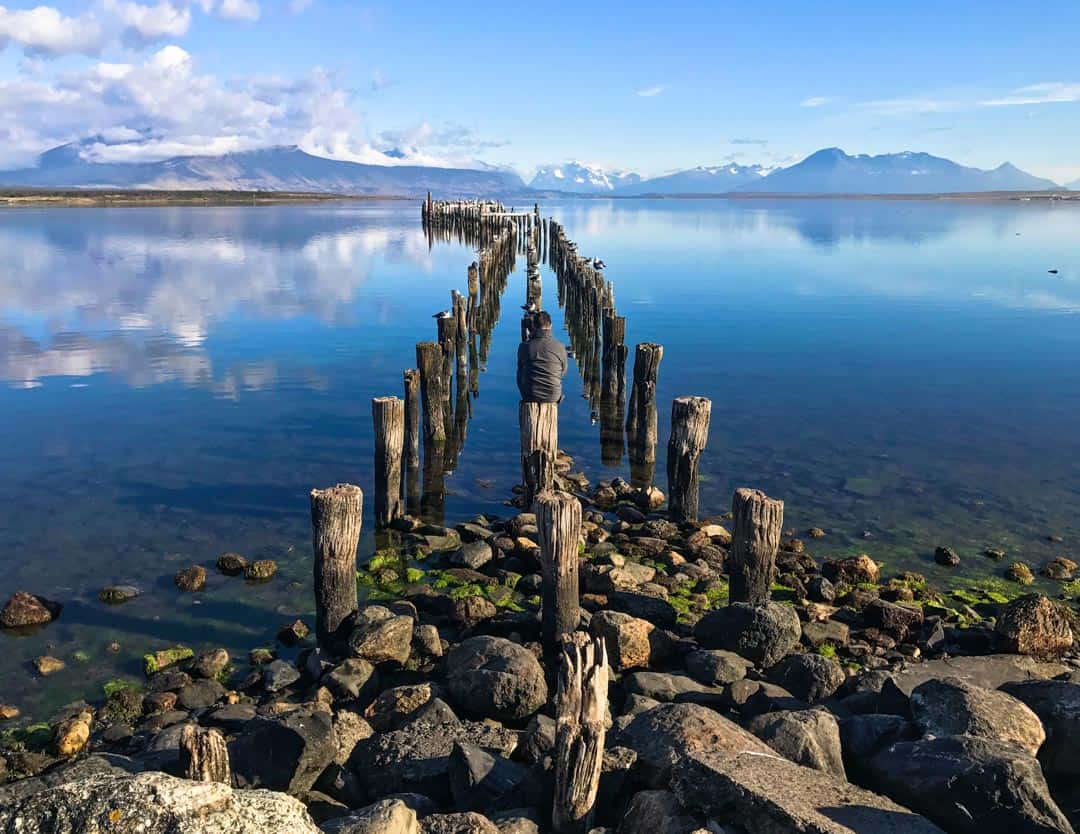
Accommodation in Puerto Natales
Puerto Natales isn’t a big place, but you’ll find everything from budget hostels through to five-star luxury in and around the town.
We stayed at the charming, centrally-located Hotel Aquaterra both before and after our trek. This is a great mid-range option and we really enjoyed our time here. They also stored our luggage for us while we were on the trail.
For more accommodation options like this in Puerto Natales, take a look at Booking.com . Or, if you’re after something more in the budget range, you’ll find various hostel options here .
One place we’ve definitely got our eye on for a future stay is this unique domed apartment . It’s about eight kilometres (five miles) out of town, but with the views this place has, we wouldn’t be moving from the window seats anyway. Perfect for a post-trek, legs-up retreat!
Entry to Torres del Paine National Park
Entry to Torres del Paine National Park is ticketed and there are capacity limits in the mountain lodges and campgrounds. This is for the long-term care and protection of this wild and remote place, and for the safety of visitors to the park. So whether you’re planning to hike the W, trek the O circuit or visit for the day, you will need a ticket to get into the park.
You must now buy your entrance ticket for Torres del Paine National Park at least 24 hours in advance of your visit to the park. You can no longer buy an entry ticket at the park itself. Visit the CONAF website to buy your park entry ticket .
Entry fees vary depending on whether you are Chilean or international, as well as your age, and whether you intend to stay in the park up to, or more than, three days. At last check, international adults 18 and over will pay CLP$31,200 (CLP is Chilean pesos) for up to three days in the park, and CLP$44,500 for more than three days.
Download your ticket to your phone before you head to the park (you won’t have reception there) and carry a printed copy just in case. You should also carry a copy of your passport as you may be asked to show your ID/nationality.
Booking Camping and Accommodation on the W Trail
There are various ways to stay overnight on the W trek in Torres del Paine National Park, but whether you’re planning a lodge stay, hiring camping equipment, or camping with all your own gear, you’ll need advance reservations to do so.
Overnight reservations are mandatory for Torres del Paine and, like park entry tickets, need to be made in advance . You cannot book camping or accommodation once you’re at the park, or camp outside the designated bookable camping zones.
You’ll also need to carry evidence of your overnight reservations as you may be asked to show proof at any time by a park ranger or when passing through checkpoints. We printed our reservation confirmations and carried these with us.
With trekking in Torres del Paine becoming ever more popular, limited accommodation spots and advance booking necessary, sorting out campsites or lodge accommodation is – in our experience – probably the trickiest part of planning a self guided W trek itinerary.
For this reason, we recommend booking your overnight stays as far in advance as possible , preferably as soon as bookings open for the season.
It also pays to be flexible about where you stay, as you may find you need to rework your trekking dates and approach based on what’s available.
Our final W trail hiking itinerary was the direct result of where and when we could get an overnight booking.
How to book your overnight stays in the park
There are a number of mountain lodges (refuges) and campsites in Torres del Paine, and you can only stay overnight in these designated zones.
Broadly speaking, the zones in the east are managed by Las Torres Patagonia (formerly Fantástico Sur) and those in the west are managed by Vertice Travel .
There are also a couple of free campgrounds in the park which are managed by the Chilean park agency CONAF. However, these campgrounds are closed for the 2023-24 season – visit the CONAF website for updates.
You can book direct via the Las Torres Patagonia and Vertice Travel websites, however we know from experience that trying to align availability and book spots for a workable W circuit itinerary across different websites can be complicated and time-consuming. Another reason to plan well ahead.
We’re now aware of a new website called Booking Patagonia , which offers an integrated booking system for travel, tickets and accommodation for Torres del Paine. Tours can also be booked through this site. We haven’t used it yet so we can’t personally vouch for it, but if you do use it, we’d love to know how you go (one of our readers has recently provided some feedback about their experience in the comments at the end of this post).
Bus tickets to and from Torres del Paine National Park
We based ourselves in Puerto Natales, the nearest town to Torres del Paine, before and after our trek and most travellers do the same. From Puerto Natales, it’s an easy bus trip to and from the park.
If you’re travelling by bus, we recommend organising your bus tickets to and from Torres del Paine well in advance . Don’t leave this until the day you head to the park or you may find the buses already full.
If you plan to buy your tickets when you arrive in Puerto Natales, aim to do so as soon as you arrive in town. You can buy bus tickets at the main bus station (Terminal Rodoviario), or through your hotel or hostel. We travelled to Puerto Natales by bus so we bought our tickets to Torres del Paine at the bus station the day we arrived. You can also search bus services and buy tickets online here .
It’s important to note that your bus drop-off/pick-up points at the park may vary depending on your final W trail itinerary, so keep this in mind when booking your bus ticket.
If you follow this itinerary and trek from east to west, you’ll start with the bus from Puerto Natales to Laguna Armaga . After your trek, you will board the bus at Pudeto for the return journey to Puerto Natales (this follows a catamaran ride across Lake Pehoe to Pudeto from Paine Grande). Vice versa if you’re hiking the W from west to east.
To ensure you’re on the trail in good time (and in line with this itinerary), we recommend booking one of the earliest buses out of Puerto Natales on Day 1.
Packing for the W Trek
Any hike, but especially a multi-day hike, can quickly lose its appeal if you’re carrying too much weight in your pack; something we can personally attest to. So we strongly recommend packing light and only carrying the clothes, gear and food you need for the trek.
If you’re travelling longer term and have more stuff with you – which was our situation – leave it in storage at your hotel. Your back will thank you for it.
You can find most of what you need to buy or rent in Puerto Natales for hiking into the surrounding landscapes, from sleeping bags, camping stoves and hiking poles to dried fruit and nuts for your trail mix.
That said, this is a small and relatively remote town and the local prices reflect it. We’re told there’s more choice and better prices at the supermarkets and shops in Punta Arenas, so if you’re coming from or via Punta Arenas, you might consider doing your trek shopping while in that town.
We’ve also read recent reports that it hasn’t been so easy to find dehydrated meals lately in Puerto Natales. If you’re planning your menu around these, you might think about sourcing them elsewhere.
It’s important to know that Chile has stringent rules around what foods you can and can’t bring into the country (fresh foods, fruits, honey, etc are a no-no). Be sure to declare any foodstuffs you do bring in and plan on buying most of what you need for trek meals and snacks once you’re in the country.
We had a tight meal plan for our spin on the W, but with hindsight, we would swap out some of the bulkier food stuffs we packed for lighter, more compact foods. Next visit, we’ll be looking to pack some dehydrated camping meals and light-weight but filling carbs like cous cous and oats.
The night before the trek, organise any food you’re carrying into daily packages of brekkie, lunch and dinner. Pre-bundling your meals saves scrabbling around in your pack for particular items on the trail). Then pack all the gear you’ll be taking with you in waterproof bags inside your backpack.
Cash, pesos or credit card? One question we get asked is whether to carry US dollars or Chilean pesos into the park, and whether the refuges accept credit cards. We carried all three. We paid for some things in pesos, like snacks and the shuttle to the trail head, and other things in USD, like the catamaran from Paine Grande to Pudeto. We also used our credit card at one of the refuges to buy beers. It’s our understanding that all of the refuges accept credit cards.
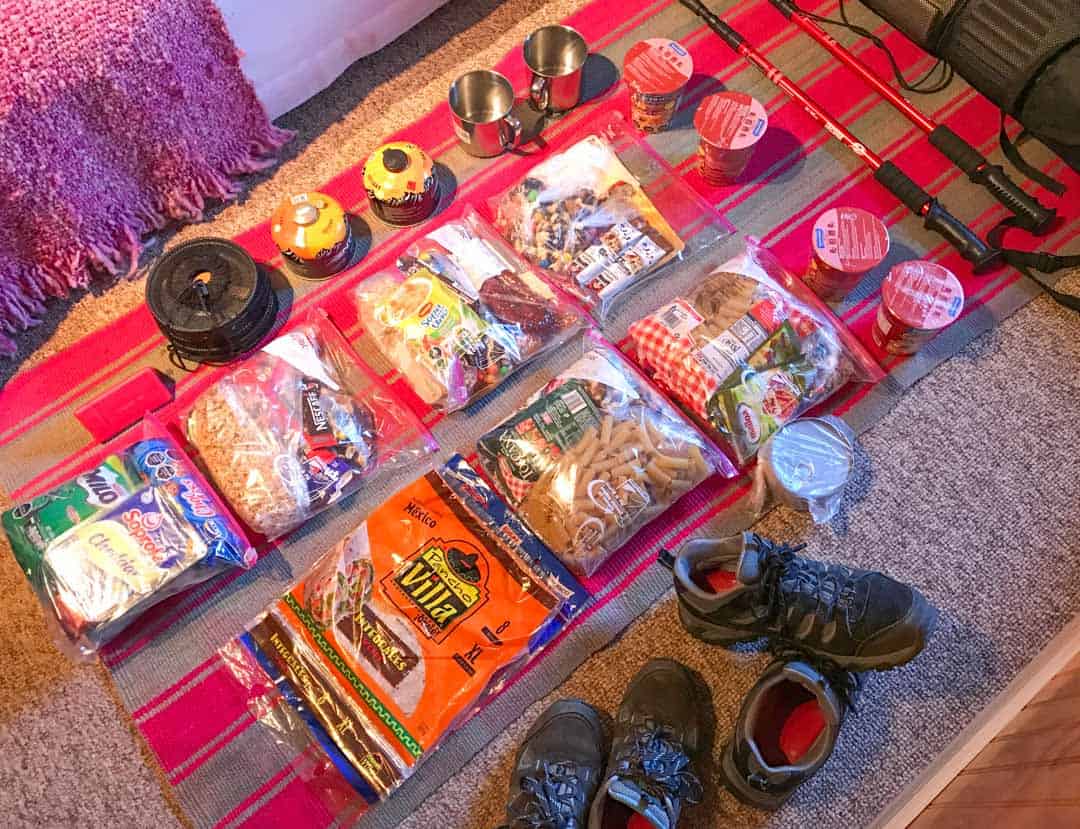
Our self-guided itinerary for hiking the W Trail
Day 1 – puerto natales to chileno via las torres, total distance: appx. 13.8 km (8.5 miles) total time: appx. 8 hours overnight: camping chileno.
Let’s get trekking! Hopefully you’ve secured your seat on one of the earliest buses out of Puerto Natales this morning (see above regarding buying your bus tickets in advance).
Buses making the run to Torres del Paine National Park generally depart from Terminal Rodoviario in town. Find your bus and load your pack, then kick back until it’s time to go. It’s around two hours to Laguna Amarga, the gateway to Torres del Paine National Park, so settle in, this is a perfect excuse to grab some extra sleep before starting the hike.
When you arrive at the Laguna Amarga Ranger Station, have your pre-purchased park entry ticket ready on your mobile phone or bring a printout. Here, you’ll check in and receive information about visiting the park, and its rules and regulations.
Don’t forget to buy your entrance ticket for Torres del Paine in advance, and at least 24 hours before you head to the park . It’s no longer possible to buy entry tickets on arrival at at the park. Head to the CONAF website for more information .
At Laguna Amarga, hikers split into two groups: those starting their journey here at the eastern end of the park, and those heading to the western starting point at Paine Grande, which involves a further bus trip to Pudeto and a catamaran ride across Lake Pehoé (even if you’re hiking west to east, you’ll get off the bus here to check-in before reboarding the bus for Pudeto).
If, like us, you’re hiking the W from east to west , your next step after check-in is to jump aboard the Hotel Las Torres public shuttle bus from Laguna Amarga to the Welcome Centre and the eastern starting point of the trek. This costs around US$5 per person and is paid in cash as you board (we paid this in pesos).
Alternatively, you can start your hike here from Laguna Amarga. The shuttle will just spare you a dusty 7 kilometre walk along the gravel road.
There’s a toilet at Laguna Amarga, and another at the Welcome Centre. This is a good chance to go before setting off into the mountains.
Trekking tip: We booked our first night’s accommodation at Camping Chileno, which is en route to today’s main destination – the towering granite peaks of Las Torres. We’ll be checking in at Chileno on the way and dropping off our packs ahead of the steep and challenging climb to the Las Torres mirador. If, however, you’ve booked your first night at Hotel Las Torres or Central Refuge and Camping, then we’d suggest dropping off your packs there first, and setting out on today’s hike to Las Torres with a lighter load.
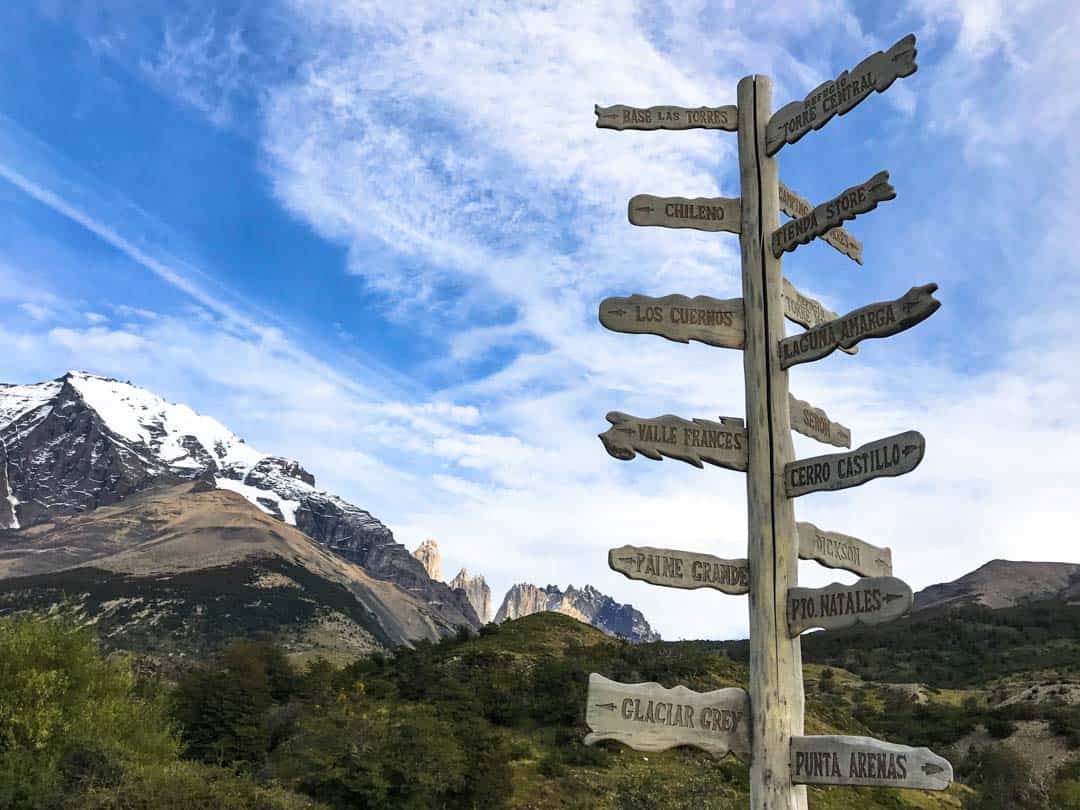
1st Leg: Hotel Las Torres to Chileno ( appx. 5 km / 3.1 miles, around 2 hours)
We’re officially underway on the W trail around 10.30am and from the word go, the views are eye-popping. After a flat kilometre or so, the path starts to climb: get used to it, it’s pretty much uphill from here.
The hike is moderately steep in some spots, until about a kilometre (0.6 miles) or so from Camping Chileno, where the trail flattens out a little before descending into the campground.
Despite feeling like our hearts might explode for much of this first stretch, we cover the distance in around two muscle-busting hours, with frequent stops to take in the views, rehydrate, and give our racing pulses a break.
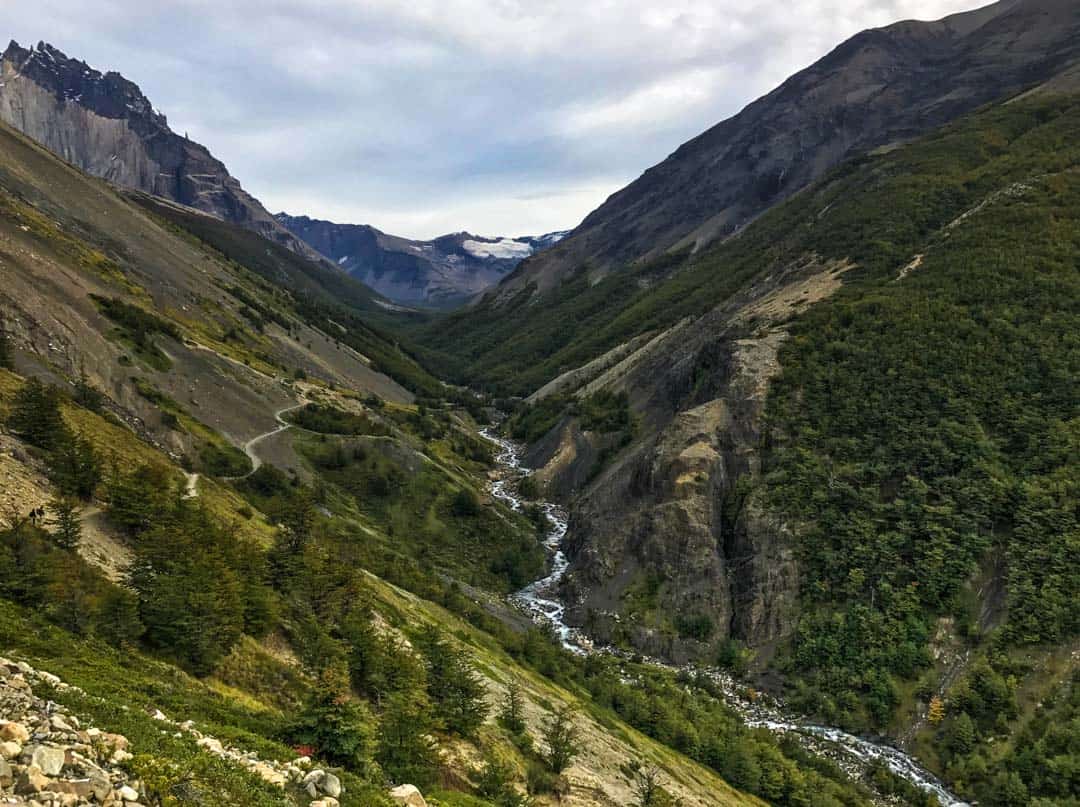
Drinking water There’s no need to lug extra water with you on the Torres del Paine circuit. You’ll pass pristine mountain streams regularly throughout your journey. Bring a water bottle, fill up at nature’s tap and enjoy some of the purest water you’ll ever drink. Just remember to top up well away from the camps and upstream of the trails.
We haul our packs into Chileno around 12.30pm . This campground is operated by Las Torres Patagonia (formerly Fantástico Sur), and is the closest camp you can stay at to the famous Las Torres hike and mirador (the CONAF-managed campground near the base of the Las Torres climb has been closed for some time).
The riverside setting at Chileno is truly stunning and the sheer peaks of the three granite towers – our ultimate goal today – rise tantalisingly above the forested mountains ahead.
The campground itself is a nice set-up of tiered camping platforms among the trees. There are shared bathrooms with hot showers, and a restaurant and bar with big windows, plus an outdoor terrace for soaking up the epic views.
Our tent is ready for us when we arrive at Chileno, so we check in, drop our bags in our tent, grab a smaller pack with snacks, water bottles and cameras, eat the lunch we prepared last night, and set out for Las Torres around 1.30pm . Timings here may vary depending on your check-in.
2nd Leg: Chileno to Las Torres (appx. 4.4 km / 2.7 miles, around 2 hours)
This is without doubt today’s toughest leg, so there’s a huge bonus in not having to tote your full pack up the mountain.
From Chileno, you’ll hike for around 3 kilometres (1.9 miles) or so along a meandering path through pretty woodland, across rushing rivers, and through a wonderfully moody stretch of fallen forest that we dub the ‘tree cemetery’. It’s a lovely, moderate walk, and we have no sense of what’s ahead when we reach the sign that tells us ’45 minutes to Mirador Las Torres’.
My notes from this point in our trek simply state: ‘hiking hell starteth here’. A touch dramatic maybe, but as irregular hikers, this was probably the hardest section of the entire W for us. Maybe you’ll breeze through it, just be ready for it.
Shortly after the sign, the climb to Las Torres begins in earnest. It’s a gritty, rocky terrain of steep, gravelly inclines and large boulders. The panoramas as you climb are absolutely breathtaking, but so is the hike itself. There are moments while we’re in the throes of it, looking up and spotting the tiny trekkers far above, that this stretch feels like it will never end.
It does end though, about an hour later, and the scene that awaits as we round a final boulder and face the towering granite pillars of Las Torres makes every single breath-wrenching step worth it.
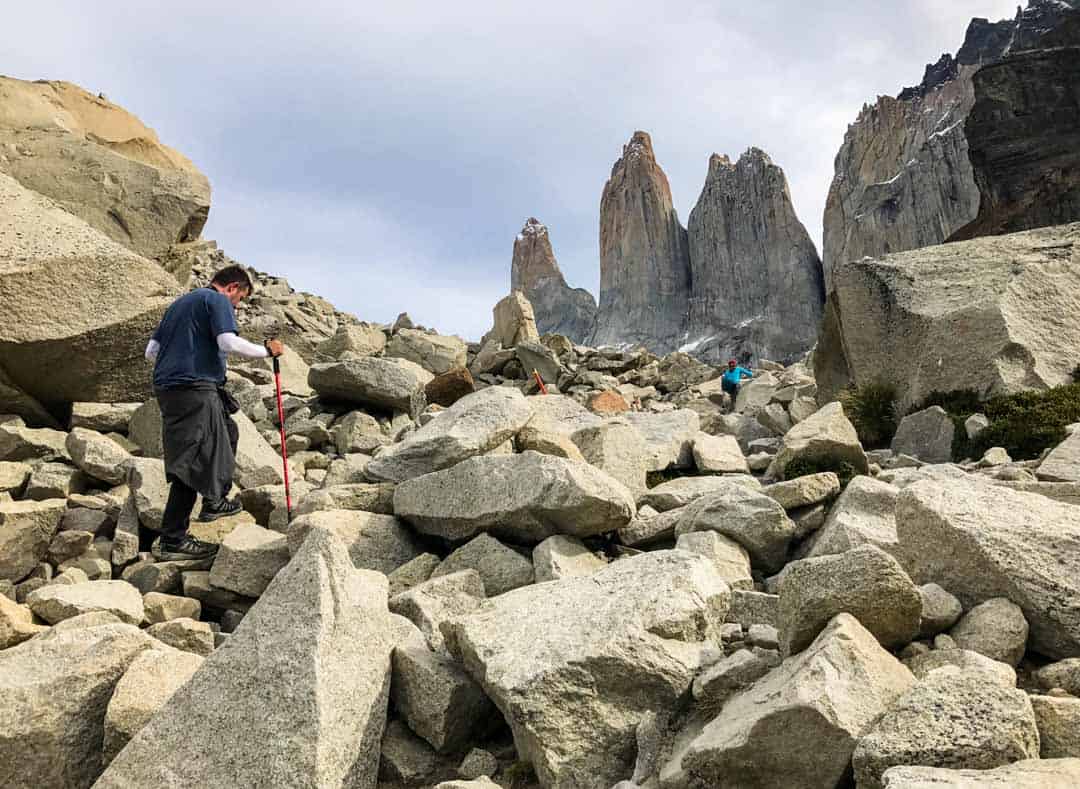
It’s buzzing at the top: hikers drape the rocks surrounding the glacier lake; a bushy-tailed Patagonian fox weaves its way between the boulders; there’s even a guy getting his hair cut at the water’s edge (one hairdresser’s quirky approach to memorialising his travels while promoting his business).
We spend some time taking pics before settling onto a boulder of our own to simply take in this awe-inspiring scene. Aim to spend around an hour at Las Torres .
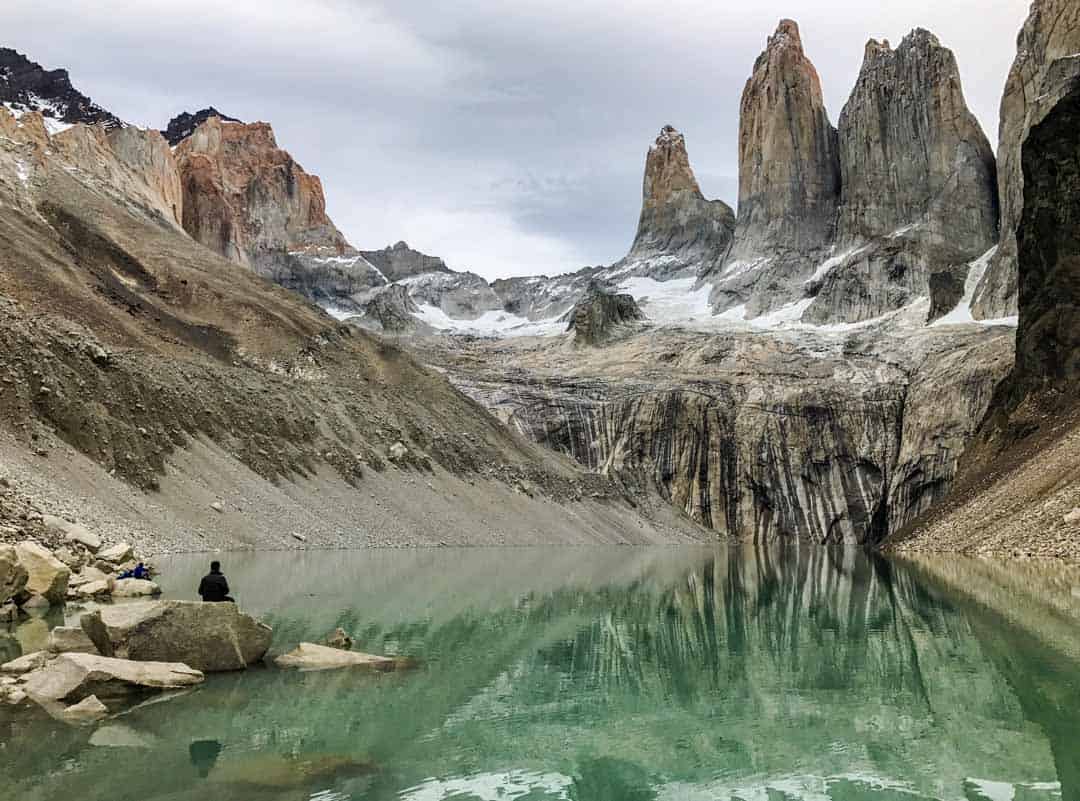
3rd Leg: Las Torres to Chileno (appx. 4.4 km /2.7 miles, around 2 hours)
The journey back down from Las Torres is in some respects even more challenging than the climb up. The constant down is tough on knees and the gravel makes the going slippery. We’re beyond grateful for our hiking poles, though we both still manage to pull off some memorable butt slides.
Trekking tip: Hiking poles made all the difference for us when we were trekking in Patagonia. We carried one each, which was ideal as it left us both with a hand free to grab branches and rocks, haul each other up and down, and catch our fall when we slipped. Which was often.
It takes us around two hours to get back to Chileno; we have time to shower, buy a couple of well-earned beers and watch the sunset burn the tips of Las Torres molten gold.
It was cloudy the entire time we were up at the base of the towers, so watching them all beautifully backlit now is a bit of a kicker, but if there’s one thing you’ll learn quickly hiking the W Patagonia, it’s that the weather doesn’t give a rats what you think.
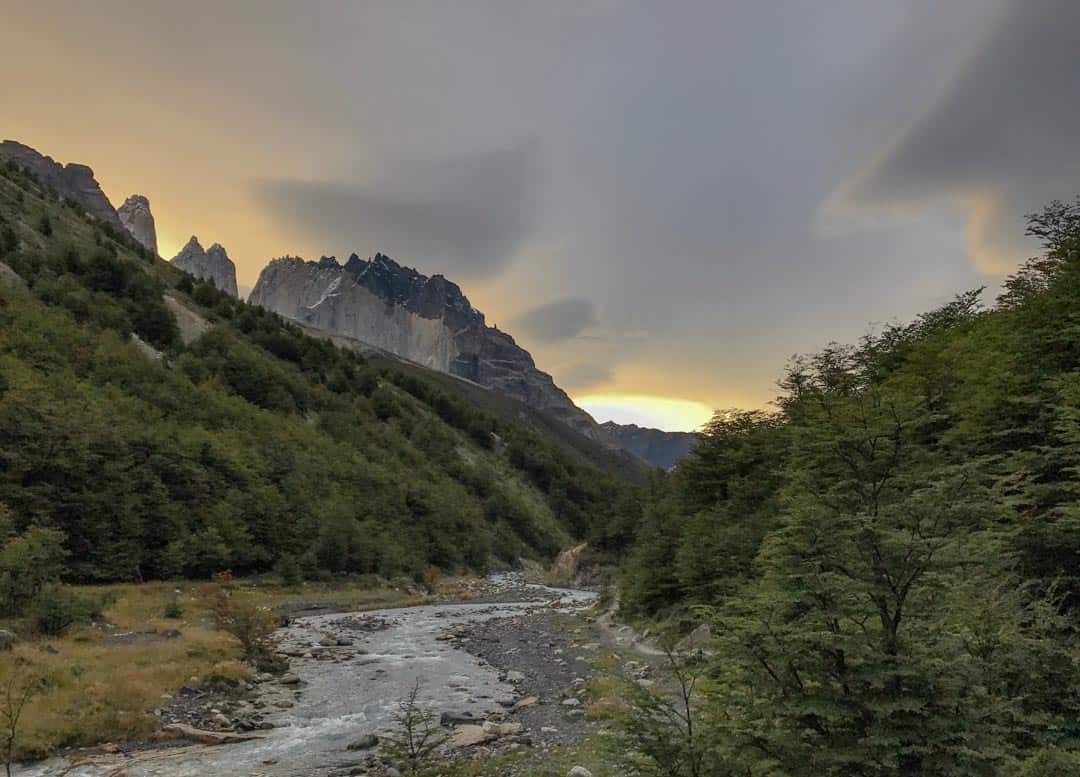
Preparing for Patagonian weather If there’s one constant about the weather in Patagonia, it’s that there’s nothing constant about it. We were particularly lucky on our five days in Torres del Paine, but you should be ready for four seasons in a day. Layer up, have a rain jacket handy, and wear quick-dry clothes. Skip a rain cover for your bag though. While we never experienced the legendary winds that tear through the park from time to time, we heard plenty of stories of pack covers being whipped off suddenly and disappearing into the wilds. Expect to get rained on, and pack your gear in bag liners or waterproof bags inside your backpack instead.
Cooking stoves are not allowed to be used in the Chileno zone, so we opted for the full board food package here, which includes dinner tonight, breakfast tomorrow and a packed lunch to take with us.
Later in the evening, we join a host of other hikers in the restaurant for a surprisingly tasty and filling three-course meal full of protein and carbs.
We’re absolutely wrecked by the end of dinner, and we’re tucked up in our sleeping bags by 9.30pm.
Sunrise at Las Torres When we originally planned our itinerary for hiking the W, we had every intention of doing a second trek to Las Torres for sunrise on Day 2. In late March, this would have entailed getting back on the track up the mountain by 5.30am . As we climbed into our sleeping bags that first night though, we decided to pull the pin: we were just too tired, and we were also a little wary of making the tricky climb in the poor dawn light.* It was a tough call at the time, and it didn’t help when we poked our heads out of our tent the next morning to see the torres erupting with golden light above the silhouetted foreground. As we watched though, the clouds rolled in and soon enough the peaks were shrouded in mist. There’s no accounting for Patagonian weather, or how your body may feel after a long day of hiking. The best you can do is plan, and be flexible on the day. *PS. For safety reasons, hiking in the dark isn’t actually allowed in Torres del Paine. Trail sections have opening and closing times, check the park brochure for more info.
Day 2 – Chileno to Francés
Total distance: appx. 18 km / 11.2 miles total time: appx. 6 hours 45 minutes overnight: camping francés.
Sunrise is around 8am when we do the W trek in late March, and as we haven’t made the dawn hike to Las Torres, we enjoy a more leisurely start to the morning on Day 2.
If you do decide to do the dawn hike up to Las Torres for sunrise, factor in around five hours this morning and adjust the following timings for today’s next legs accordingly.
As breakfast is part of our full board package at Camping Chileno, we pack up our gear and head to the dining room at 8.30am for a hearty kickstart to the day.
1st Leg: Chileno to Los Cuernos (appx. 15 km / 9.3 miles, around 4.5 hours)
We’re on the trail by 9.15am , heading back towards Hotel Las Torres. We won’t be going all the way to the hotel though as there’s a shortcut off to the right around half-an-hour after leaving Chileno. The shortcut is signposted and takes you along a mostly downward sloping path surrounded by undulating hills and lake views.
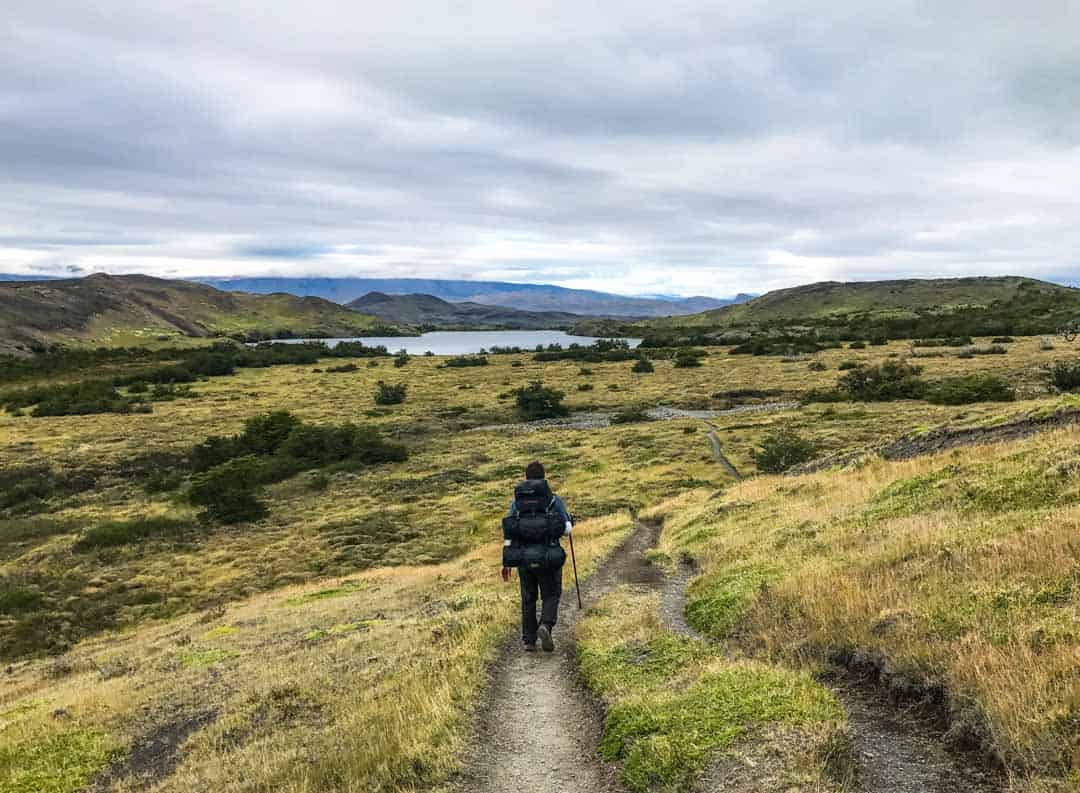
We reach the end of the shortcut and rejoin the main W route around 11am . At some point after this though, we suddenly find ourselves in what can only be described as the Patagonian Swamps of Mordor and we start to wonder whether we’ve veered off on to a secondary trail by mistake.
We can still glimpse the Nordernskjöld Lake off to left, and we know the official trail travels alongside it. To this day, we’re unsure if we did actually go off piste (though the number of bootprints in the mud suggests not).
Eventually, we seem to be back on track according to the map, just a little muddier for the experience (and even more grateful for our depth guage hiking poles).
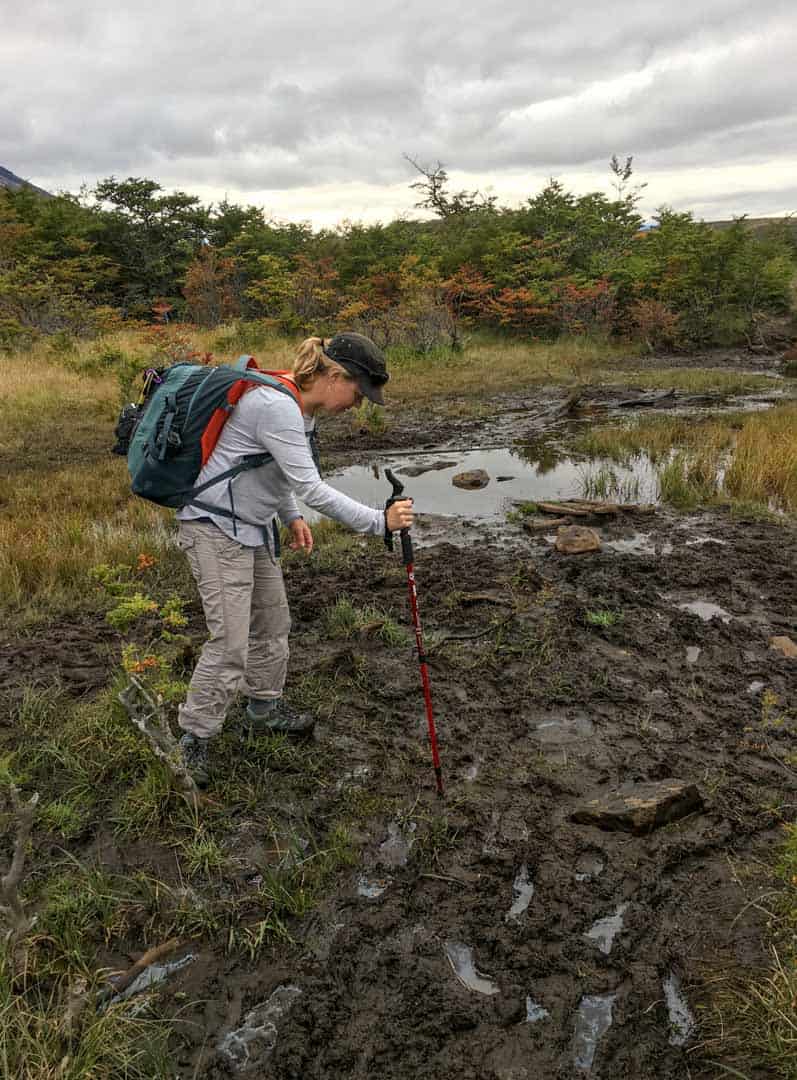
The next stretch travels up and down through very pretty lakeside country, with the occasional steep section, before passing down into the valley at Los Cuernos. We arrive at the Los Cuernos shelter and camping area around 1.45pm .
You could stop at any point along the stretch to Los Cuernos for a lunch break; we stop just past the shelter and find a nice rock with a view. We opted for the full board meal package with Camping Chileno so we’ve been provided with a packed lunch today as part of this.
We chill for around 45 minutes and then set off around 2.30pm for Camping Francés , where we’ll be staying tonight.
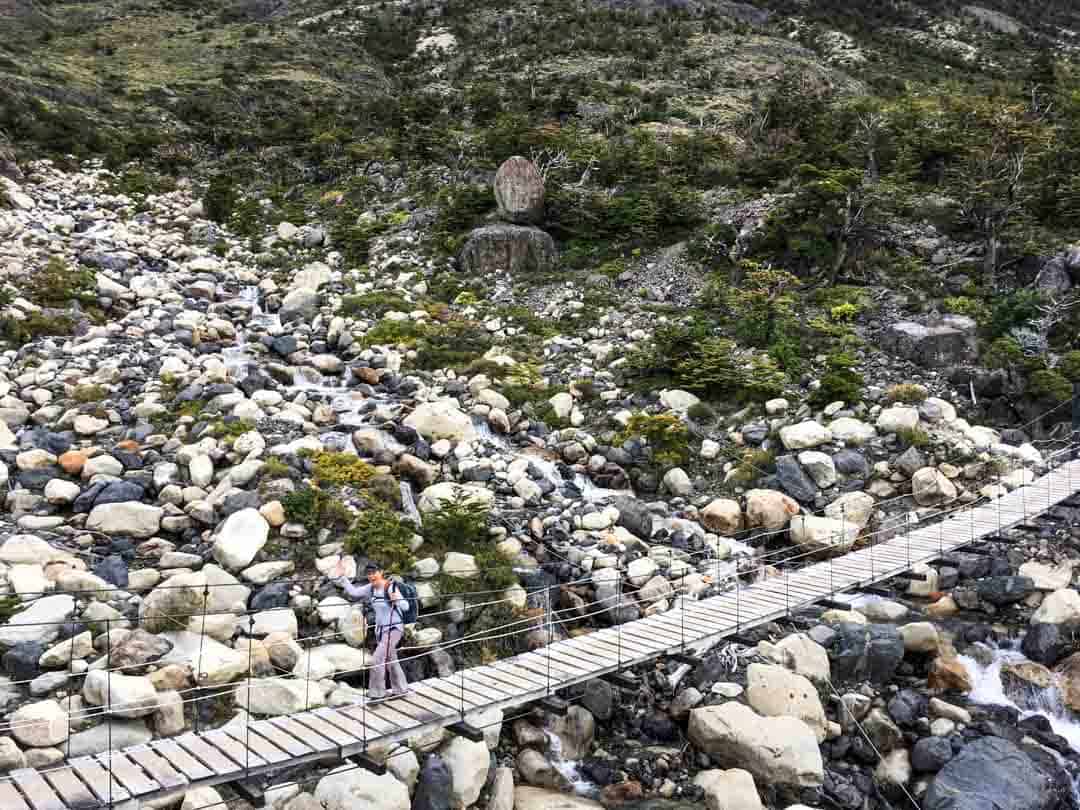
2nd Leg: Los Cuernos to Francés (appx. 3 km / 1.9 miles, around 1.5 hours)
The trail to the Francés campground is up and down and rubbly, with some steep sections, and a pretty pebbly beach crossing. Today’s walk has been positively sedate compared to yesterday’s heart-starter climbs, but never fear, a leg-burning rise awaits just before the descent into the camp.
We arrive at Camping Francés around 4.00pm . The campground here is run by Las Torres Patagonia (formerly Fantástico Sur).
The tent platforms are clustered between the trees and there’s a good shower and toilet block a short walk from the campsite. There’s also a small shop with basic amenities.
By 5.15pm we’re checked in and set up on our platform. We’ve arranged for a tent at Camping Frances but we’re cooking our own food tonight.
Sunset is close to 8pm in late March, and having made it through our second day on the W trail, we’re zipped up in our sleeping bags soon after.
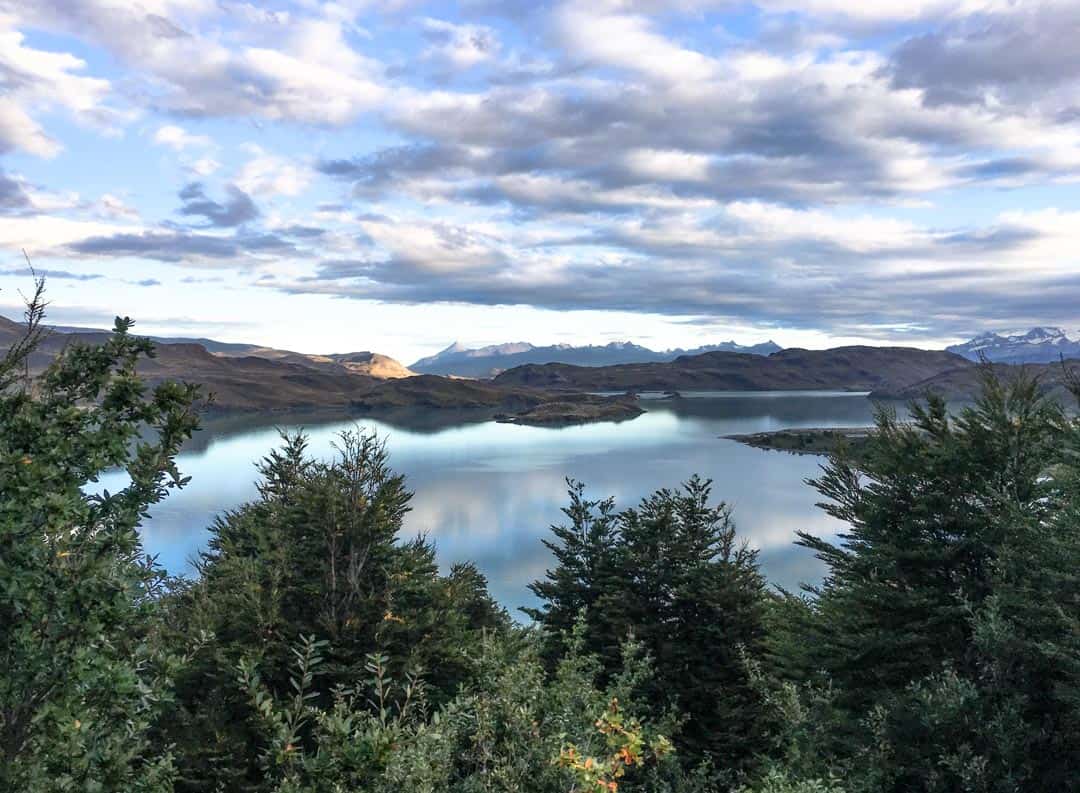
Day 3: Francés to Paine Grande via Francés Valley
Total distance: appx. 20.3 km / 12.6 miles t otal time: appx. 9 hours overnight: camping paine grande.
Despite our fatigue, neither of us sleeps particularly well on our second night and we’re both groggy when the alarm goes off at 7am.
Our restlessness is partly due to the strange soundtrack that has accompanied us throughout the night: sharp cracking sounds like distant shot gun blasts and deep, thunderous rumbles. It’s not until we set out on the trail through the Francés Valley today though, that the source of the unnerving noises becomes obvious.
On this itinerary, today is the longest day hiking the W, and based on our experience, we recommend getting on the trail by 8am at the latest to maximise your time in the Frances Valley. We departed later when we trekked, so we’ve adjusted the timings below to suit an earlier start.
1st Leg: Francés to Italiano Ranger Station (appx. 2 km / 1.2 miles, around 30 minutes)
The first leg this morning is a rejuvenating, 30-minute leg-stretcher to Italiano Ranger Station. Aim to pack up and set out from camp by 8am.
There’s a ranger at the Italiano Ranger Station when we arrive. He points to some racks opposite the office building; this is where we opt to leave our backpacks ahead of the challenging hike into Francés Valley.
We sort our valuables and lunch into a smaller daypack, lock up the big packs, and get going again. Look to be back on the trail by 8.45am .
2nd Leg: Italiano Ranger Station to Británico Lookout (appx. 5.4 km / 3.4 miles, around 3 hours)
The first kilometre (0.6 miles) out of Italiano is a flat trail through pleasant forest, after which the track starts to climb steeply through a rocky, rubbly stretch.
The scenery is seriously beautiful, serving up views of the ironically named Paine Grande Hill – 3,050 metres above sea level – and the Francés glacier that clings to it. This is the source of the crackshots and grumbles we’ve been hearing as the hanging ice shifts, melts and avalanches down the mountain.
Soon enough, you’ll reach the Francés mirador, a lookout offering spectacular panoramas over the ‘hill’ and its glacier; this is the perfect spot for a short break and a snack, as the next stretch is tough.
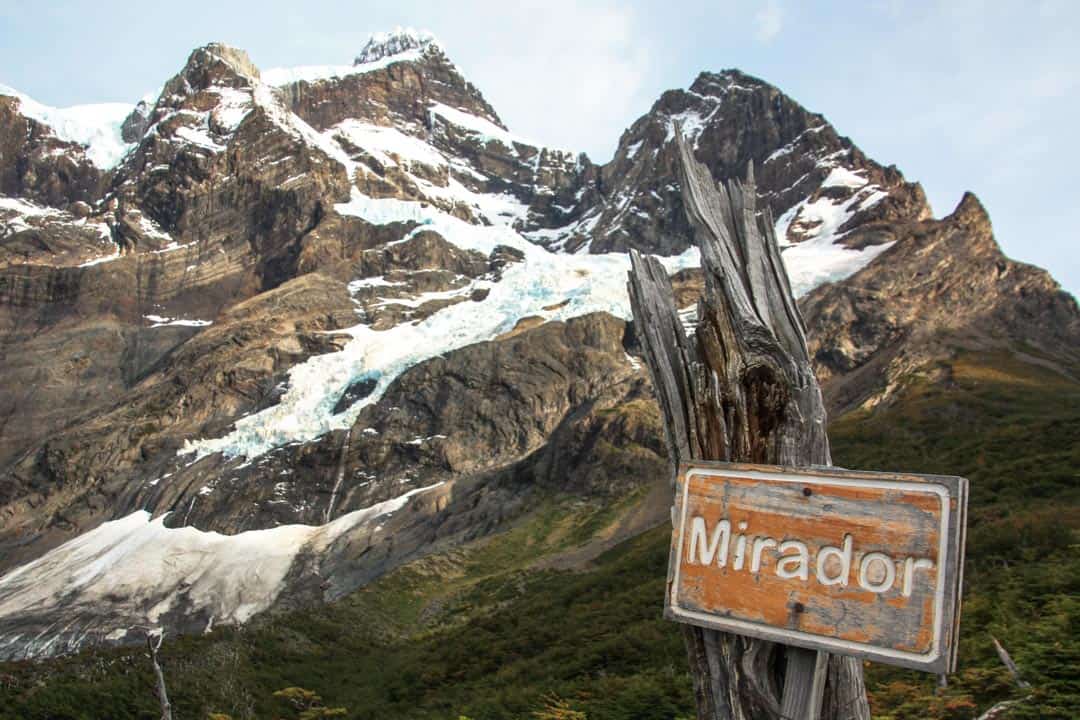
From here, the trail to Británico Lookout is a challenging, rubble-strewn boulder dash with lots of climbing.
A flat, rocky clearance scattered with the parched white trunks of dead trees and overshadowed by the jaw-dropping Cuernos massif, marks the final stretch before a steep, 10-minute climb to the mirador itself.
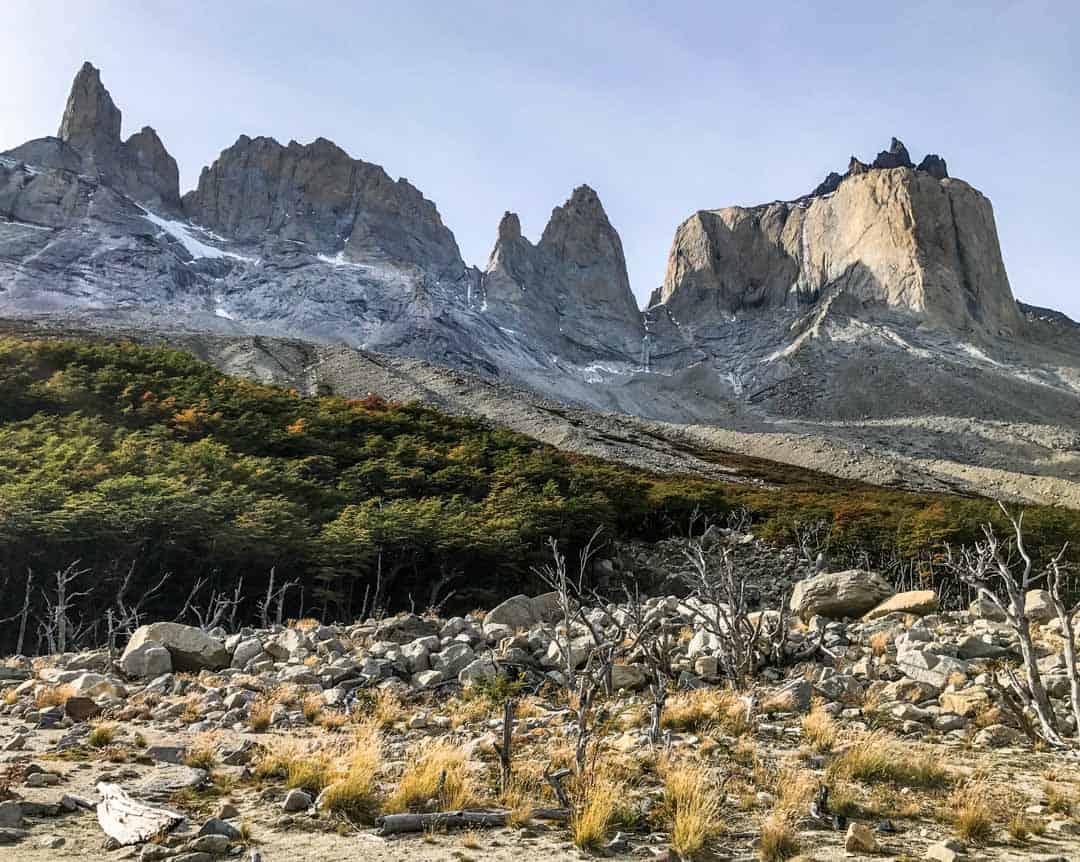
Summitting the boulders of the Británico Lookout around three hours after setting out , we cast our eyes over what will become our favourite panorama of this epic journey: the vast and spectacular Francés Valley. Find a rock to perch on and settle in for lunch with this glorious scene at your feet.
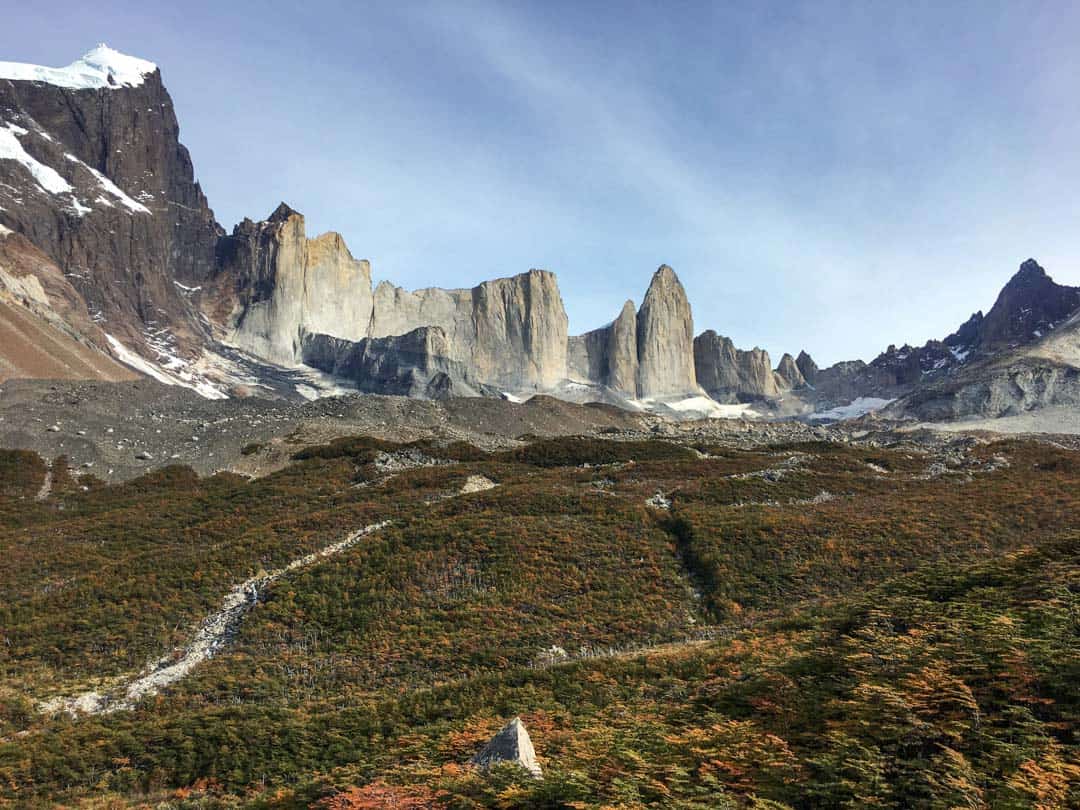
We’ve come a long way, but there’s still a huge day of hiking the W ahead. To our eternal regret, we were only able to linger here for half an hour as we left camp too late on this morning. That’s why we recommend getting on the trail no later than 8am today – trust us, you’ll want as much time at Britanico as possible and by arriving around 11.45am, you’ll have close to an hour here.
We’ve promised ourselves that next time, we’ll spend an extra day or two in this valley so we can take in this view at our leisure. For us, this remains one of the most magnificent vistas we’ve come across in all our world travels.
Trekking tip: Get on the trail by 8am at latest this morning so you can hang out for at least an hour at Britanico, or better yet, stay an extra day in the Francés Valley.
3rd Leg: Británico Lookout to Italiano Ranger Station (appx. 5.4 km / 3.4 miles, around 2 hours)
Aim to set off back down the trail to Italiano around 12.45pm . We find this a knee-buckling downward journey and our legs are screaming by the time we reach our packs back at the Italiano Ranger Station just over two hours later.
Once we’ve retrieved our packs (now four-deep in a giant bag pile), re-sorted them, and stopped for a quick breather, we set out for the Paine Grande refuge and camping area, starting with a bridge crossing out of Italiano. It’s around 3pm by this stage .
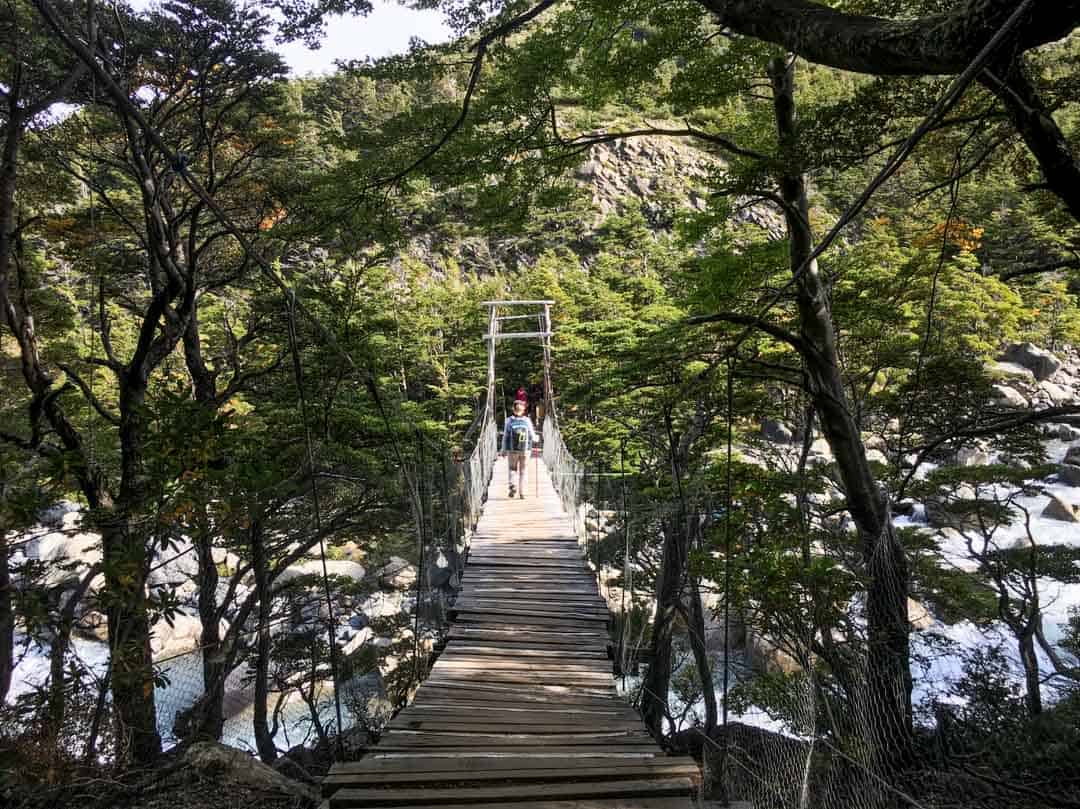
4th Leg: Italiano Ranger Station to Paine Grande (appx. 7.5 km / 4.6 miles, around 2.5 hours)
The final stretch of the W trail today is a journey of around 7.5 kilometres (4.6 miles) and it’s mostly flat with some sloping ups and downs.
Travelling out of the valley and along the raised walkway as you head towards Sköttsberg Lake, remember to turn around and take in the mountain scene back the other way: it is immense.
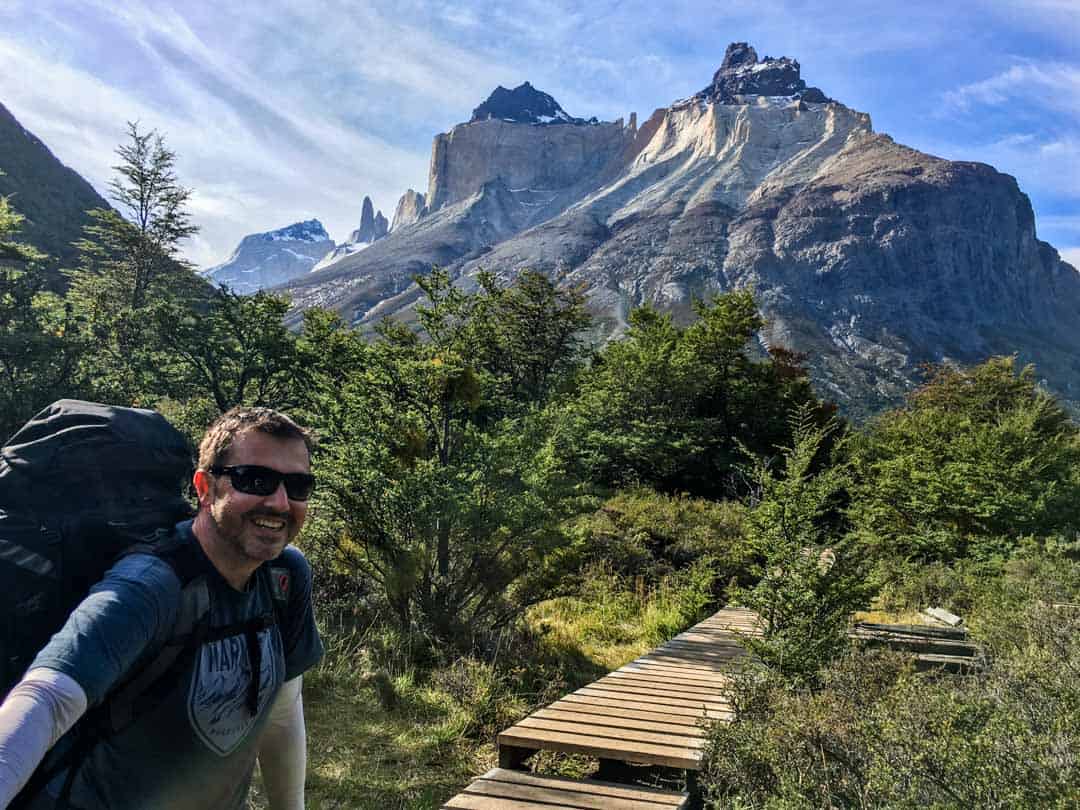
After some more steady rises, we make our final descent into Paine Grande Refuge and Camping around 5.30pm . By this stage, we’re seriously sore and tired and very ready for a beer from the lodge bar, which is the first thing we do once we’ve checked in and dropped our packs at our tent.
The campground at Paine Grande, which is managed by Vertice Travel, is large and separated into sections for campers carrying their own gear, and those like us who have booked a tent. A wooden walkway links the campgrounds with the lodge, the campers’ kitchen and bathrooms.
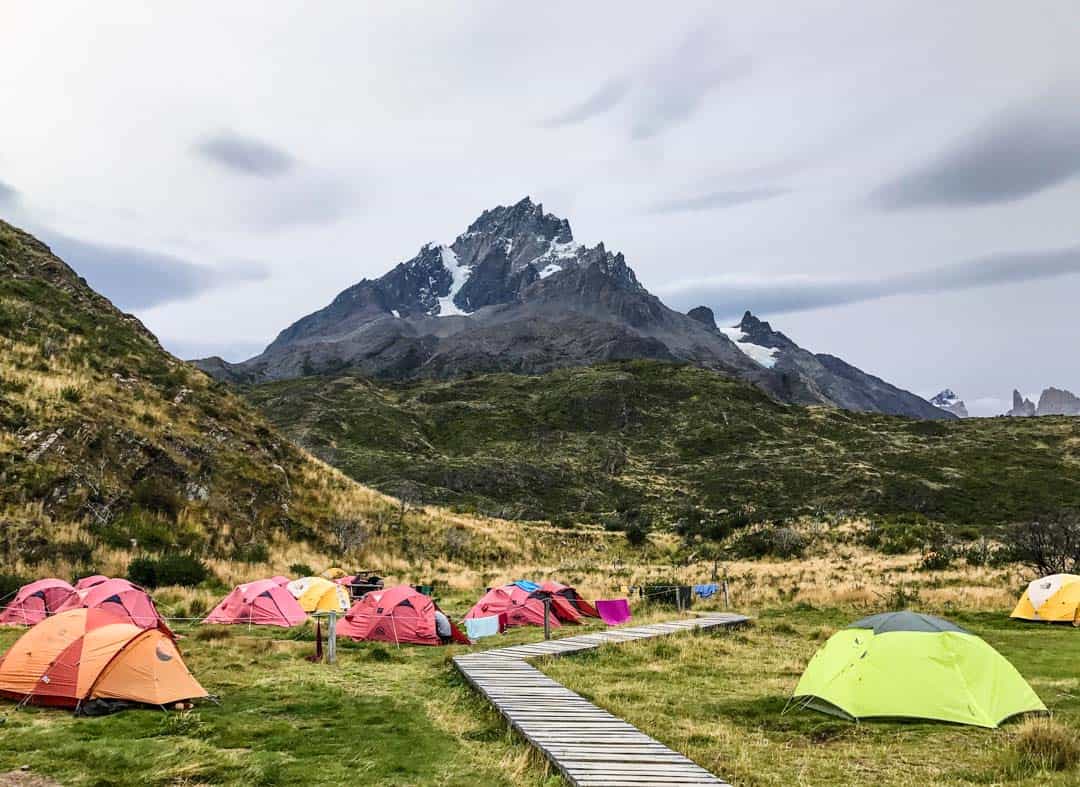
As Paine Grande is the western starting point for hiking the W and a transit point for O circuit trekkers, as well as for day trippers and short stay visitors, this is the largest and busiest lodge and campground in the park.
There’s a good-sized kitchen building, which is heaving with trekkers when we make our way in there to cook dinner around 7pm.
The camp shower and toilet facilities here are basic. We recommend getting your ablutions out of the way while everyone else is cooking dinner and before the post-meal rush. Paine Grande also has dorms, a restaurant and bar, and a mini-market.
We’re tucked up in our tent just as a light rain begins to fall around 8.30pm.
Day 4 – Paine Grande to Grey
Total distance: appx. 11 km / 6.8 miles total time: appx. 3 hours 45 minutes overnight: camping grey.
Today is our shortest day so far on the W trail, so we decide to set out a little later as we’re definitely starting to feel the past three days’ hiking, and a strange kind of exhilarated fatigue.
We’re up at 8am with plans to be on the trail by 9am. However the banshee-like screeches of a fox followed by the thrilling appearance of a large, tawny-coloured puma on the hill behind the camp has us – and everyone else – lingering for a while in hushed awe, until the sleek big cat disappears around a bend into the next valley. Which happens to be the same valley we’re about to trek into.
After checking in at the ranger station for advice on what to do if we see the puma again, we set off through the narrow, pretty dell at around 10am . We’re both relieved (and maybe a touch disappointed) to find no further sign of our feline friend.
The big cats of Patagonia Don’t let the thought of pumas roaming the forests of Torres del Paine put you off trekking there. The fact is, these magnificent creatures are extremely shy and actively avoid humans. Seeing a puma is incredibly rare. Spotting one near camp as we did is apparently almost unheard of. However, it’s important to be across what to do and how to act if you do encounter a puma; you’ll find advice on this in the guide that you receive when you register for your Torres del Paine trek.
The valley walk is flat at first but soon begins to climb, and continues to serve up steady inclines followed by some steep descents into the Grey refuge and camping area.
The scenery on this leg is still epic, but maybe a touch more serene than the high drama mountainscapes of the last couple of days. Grey Lake is flat and still on the day we hike the trail, and dotted with blueish lumps of ice from the vast Grey Glacier at its head.
About halfway along the trail, a rocky lookout reveals the first glimpses of this immense glacier, a sea of ice six kilometres (3.7 miles) wide and 30 metres (98 feet) high in places.
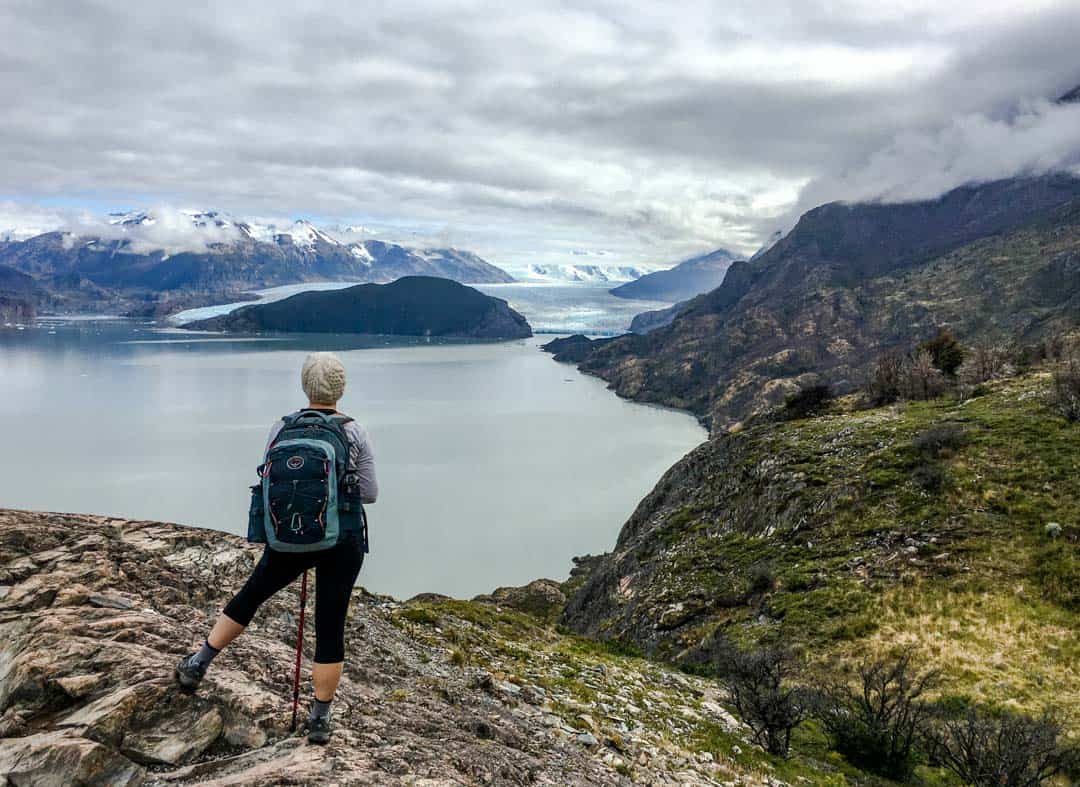
We arrive at the Grey Camping area around 1.45pm , a journey of 3 hours and 45 minutes, with plenty of photo and snack stops along the way.
Grey Refuge and Camping is also operated by Vertice Travel. The lodge has a lovely bar and lounge area in addition to its dorms, and the campground out front is overlooked by the stunning peaks of the Cordon Olguín. By the time we arrive, the clouds have cleared and the mountains burn golden as the sun drops.
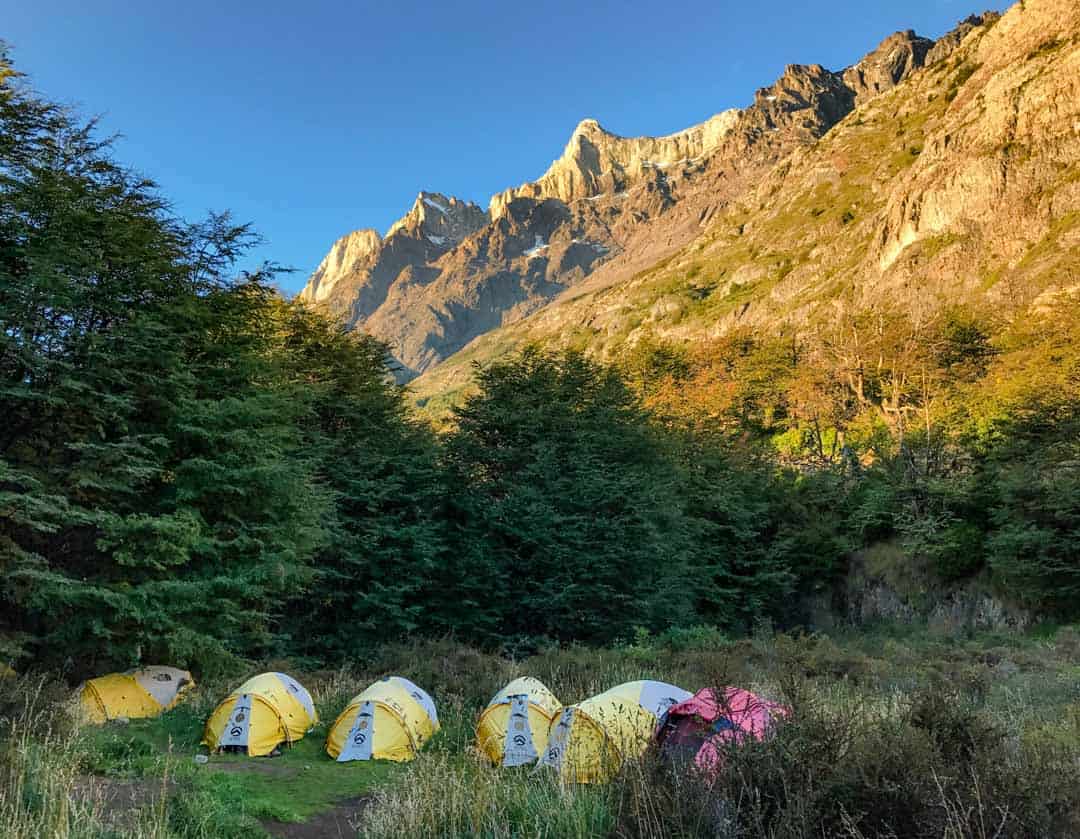
If you’ve got the energy, check in (or leave your pack with the office if check-in hasn’t opened yet), and then head back out to hike past the western tip of the W trail and on to the first leg of the O circuit towards Paso Ranger Station. This will bring you much closer to the glacier, but bear in mind, it’s a five hour, one-way hike to Paso itself.
Trekking tip: Leaving Paine Grande at 10am worked well for us, but if you do want to hike a stretch of the trail from Grey towards Paso and back to Grey today, consider starting out from Paine Grande earlier in the morning so you have more time to do this.
We opt to stop and enjoy our lunch with mountain views, then roll out our mats and nap in the sun until check-in opens.
After getting our tent sorted, we hike to a rocky outcrop on the lake just 15 minutes from camp. The views from here towards the glacier’s terminus are gorgeous and we spend time here just soaking up the scene.
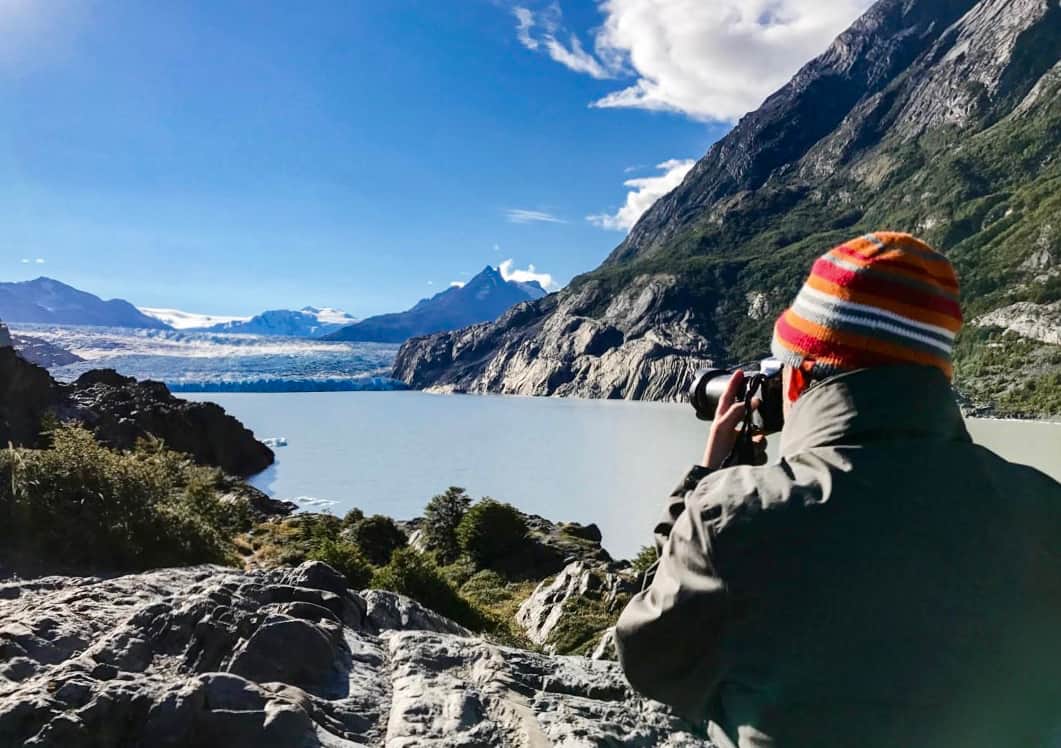
On our return to camp, we head to the lodge for a drink at the bar before making dinner on one of the picnic benches outside the buzzing campers’ cooking area.
In addition to the bar, there’s a restaurant at Grey, and a small shop selling grocery basics. There’s an equally small toilet and shower block for campers (the showers only have certain hours of operation but the water is hot).
We’re in bed by 9pm and prepped for a very early departure in the morning.
Day 5 – Grey to Paine Grande (and return to Puerto Natales)
Total distance: appx. 11 km / 6.8 miles total time: 3 hours 15 minutes.
It’s our last day on the W hike! We’re on the trail early so we can get back to Paine Grande in time for the late morning catamaran across Lake Pehoe to Pudeto, where we’ll pick up the bus back to Puerto Natales.
It shouldn’t take more than four hours to get back to Paine Grande from the Grey campground, but we’re feeling pretty exhausted by this stage and John has nurtured some nasty blisters, so we’re up and on the trail before sunrise .
It’s freezing when we set out at dawn but as the day lightens, we’re treated to a stunning peach-tinted sky reflecting off the lake, and we stop often to snap pics.
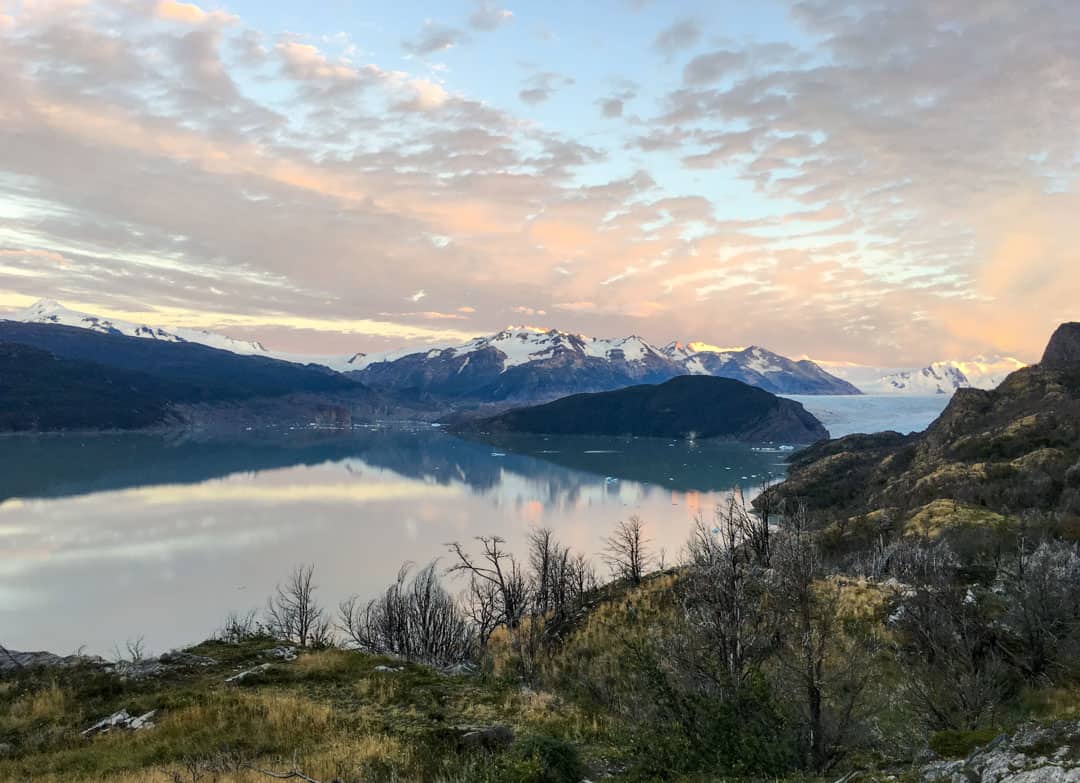
Despite John’s sore feet, we make good time on the return journey and while we’re climbing for much of the first half, it feels easier than the trek up from Paine Grande yesterday. Maybe it’s because we’re on the home run, even though the thought makes us sad.
Our journey back to Paine Grande takes us 3 hours and 15 minutes , 30 minutes less than yesterday’s hike in the opposite direction.
We haven’t eaten breakfast and we’re starving by the time we arrive. We were planning to grab something to eat at the restaurant at Paine Grande, but we discover it’s closed between breakfast and lunch.
We make do with our leftover trail mix instead, which is a bigger deal than you might think: we packed way too much of the bitty hiker’s snack and after five days we have a serious love/hate relationship with it.
Fortunately, there’s now a mini market at Paine Grande, which is apparently open from 7am. But if you’re setting out really early like us, perhaps have something you can eat on the go for this final morning.
Tickets and times for the ferry between Paine Grande and Pudeto Ferry departure times from Paine Grande and Pudeto change throughout the year so be sure to check the schedule when you’re planning your w trek itinerary, and adjust your final day hiking start time to ensure you arrive back at Paine Grande at least 30 minutes before the ferry departs. You don’t need to reserve a place on the boat, just hop aboard and buy your ticket with cash (at last check, it’s US$30 for internationals). The journey to Pudeto takes around 30 minutes.
We board the late morning catamaran for our return to the eastern side of the park. The boat trip across Lake Pehoé offers spectacular views of the entire mountainscape we’ve spent the last five days traversing. It’s an epic perspective of the W panorama and a mesmerising finale to our W trek itinerary.
If the weather is nice, we totally recommend taking a seat outside on the catamaran so you can properly admire the breathtaking scenery.
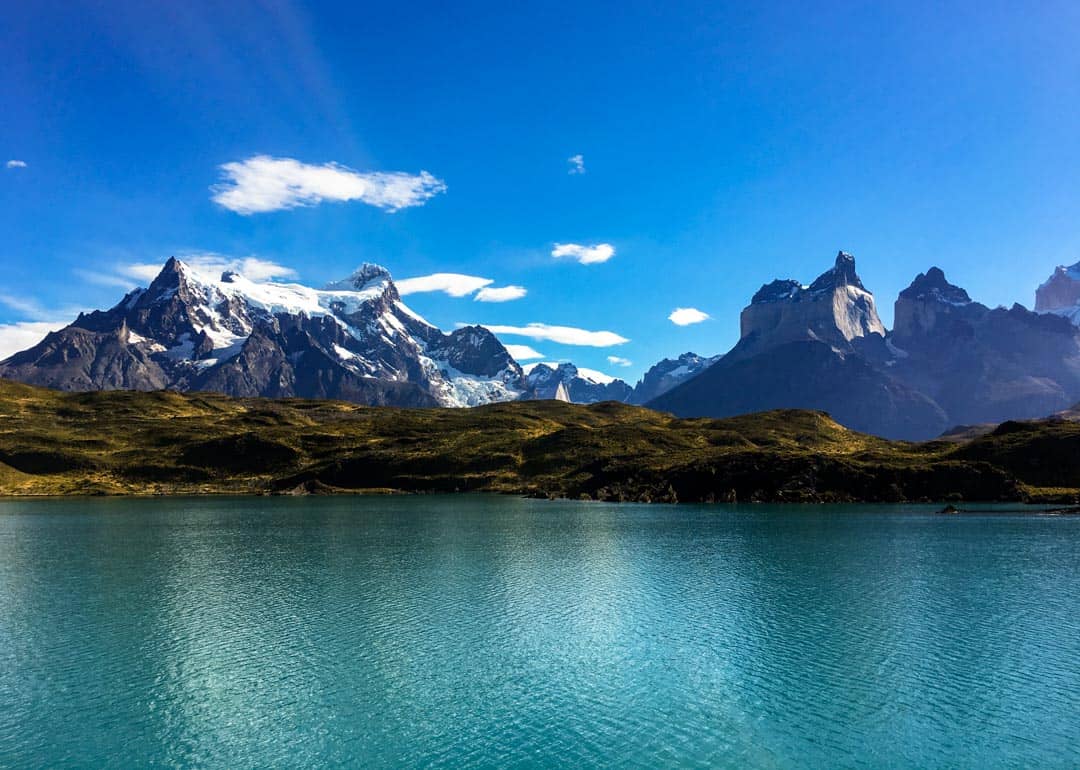
Disembarking the ferry at Pudeto, we grab a coffee from the lakeside café (open from October throughout the trekking season), take a seat in the sun, and enjoy our last moments in Torres del Paine while we wait for our bus.
Pudeto ferry and bus connections In addition to checking ferry times for the catamaran between Paine Grande and Pudeto when you’re organising your trek, it’s also worth checking the bus connections to and from Pudeto, so you can work out the best approach for your final day on the trail.
From Pudeto, the bus makes its way back to the Laguna Amarga Ranger Station to collect hikers finishing their trek at the eastern end of the park. From there, we settle in for the return two hour bus journey to Puerto Natales .
Tonight, back in Puerto Natales, after a good hot shower and a lamentation on the ridiculous amount of trail mix we’ve got left over, we head out for a celebratory drink.
Our legs might be seizing, our knees protesting and we’re beyond exhausted, but we’re buzzing with the sheer thrill of having completed this epic trek. We’re already talking about when we might come back and hike the W trail again, or better yet, take on the longer O circuit.
However we do it, trekking in Torres del Paine is one nature experience we’re keeping firmly on our bucket list.
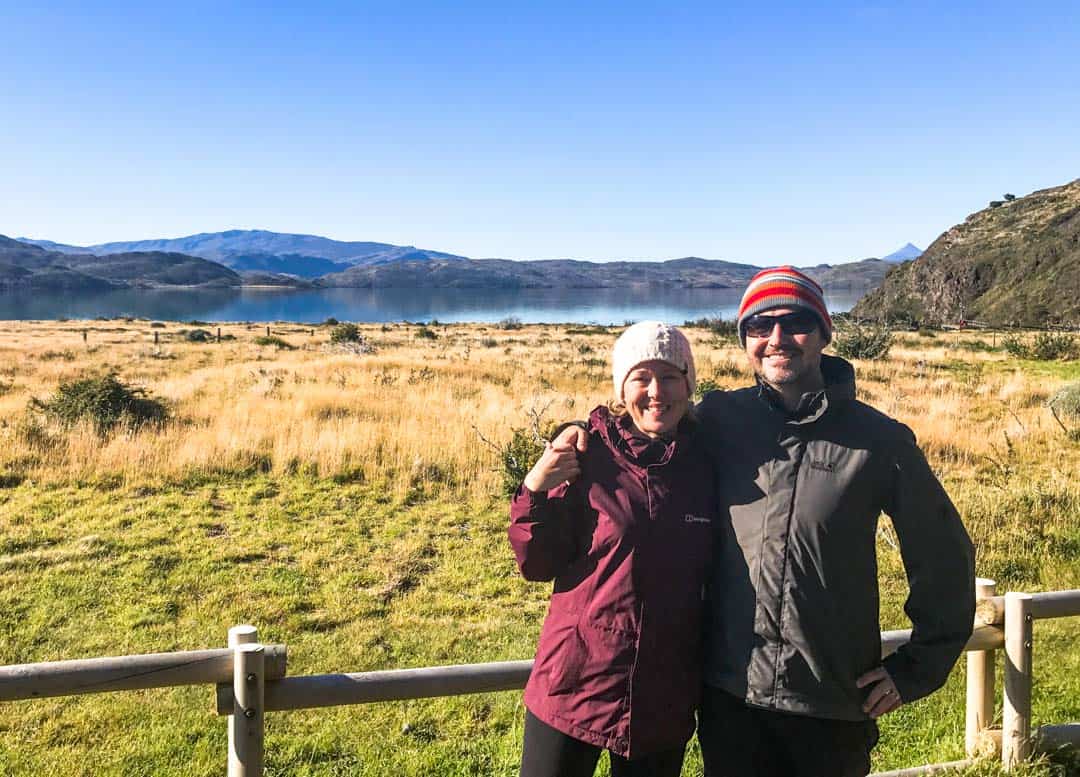
Got any questions? Have you trekked in Torres del Paine recently? We’d love to hear from you, drop us a message below.
For more exciting experiences and things to do in this incomparable part of the world, head to our Chile page or our South America section.
49 thoughts on “Hiking The W Trek In Patagonia: A Self-Guided Itinerary [2024]”
Great website! We’re hoping to do this February/March 2025, and are wondering how best to spend our time on either side of this hike. Did you travel to El Calafate and El Chalten while you were in the area? Or do you recommend other areas down there? Any advice greatly appreciated!
Hi Lisa, thanks for your message! Fantastic to hear you’re planning a trip to Patagonia! Besides the W Trek, there are various activities you can do in and around Puerto Natales and Torres del Paine, like boat trips on Grey Lake to Grey Glacier or horseback riding.
We most definitely did travel to El Calafate and El Chalten after our trek and absolutely recommend, especially if you’re keen to get out on some further hikes. We bussed from Puerto Natales to El Calafate and the next day did a day trip to the Perito Moreno Glacier, which is an absolute must. From El Calafate, we travelled by bus to El Chalten (the panoramas on the bus ride in are wow – try and get the front seats!) and spent a good couple of days exploring this gorgeous area and just hanging out. There are a range of hikes you can do out of El Chalten – the day hikes to Laguna de Los Tres and Cerro Torre are epic.
If you head south from Puerto Natales to Punta Arenas, you can do day trips to see King penguins, Magellan penguins, whales and dolphins, so that’s another option.
Have a wonderful time and happy trip planning! Cheers, Danielle
Thank you for sharing your Patagonia insights! I found it very thorough and incredibly helpful. I we are planning our trip for October 2024. I have a question. How did you book your meal plan? Thanks! Kim
Hi Kim, thanks for your feedback, we’re glad you’ve found our post helpful! When you go through the booking process for each accommodation (including camping) along the trail, you’ll have the opportunity to add meals as part of those bookings. Links to the accommodation providers are in the post. Good luck with your planning and happy trekking in October! Cheers, Danielle & John
Hi thank you so much for this detailed blog. It appears that one would have to stay at Frances camp if going east to west in order to shave hiking time on day 3. Is there a bus company through which we have to pre-book a bus ticket from Pudeto ferry to Las Amargo? Or is it a shuttle service? Do you have any idea if booking a guided tour via Las Torres means that they carry your heavy rucksacks?? Is the last day at Grey really worth it ? Or would you rather end the trek on day 4? Thank you!
Hi SK, thanks for your message. Until the CONAF Italiano camp reopens, Frances camp is the closest camp to the Frances Valley so yes, it is the best bet timing-wise for getting in and out of the Frances Valley and on to Paine Grande on Day 3 if travelling from east to west. You could also stay at Los Cuernos, but that would add around 1.5 hours to Day 3.
The buses running from Puerto Natales to Torres del Paine drop off and pick-up from Laguna Amarga and Pudeto. When you buy your bus ticket to Torres del Paine, you’ll note where you’ll be getting off and on again (it will depend on your itinerary, but for us, travelling from east to west, we got off at Laguna Amarga and boarded at Pudeto on our return. Check out the section in our post on bus tickets to and from the park for more info. There’s a shuttle that runs between the Laguna Amarga ranger station and Hotel Las Torres for a fee.
We would suggest contacting the tour company you’re interested in for advice about whether porter services are available on their guided tours. We left most of our luggage in one of our backpacks at our hotel in Puerto Natales and carried only what we needed for the trek to keep the weight down.
We personally feel that every leg of the W is absolutely worth it – the scenery is superb throughout. Five days gave us just the right amount of time to enjoy the whole trail without pushing too hard. To do the trek in four days, you’d likely need to compromise on either the full hike into Frances Valley or the Grey leg in order to reach camps before dark, and we wouldn’t want to skip either. But that’s us. If four days was all we had to trek, we would possibly leave Grey but we’d have to make sure we did a boat tour out to the glacier instead! 🙂
All the best with your planning! Cheers, Danielle & John
This is seriously one of the best breakdowns I’ve read. Patagonia is one of three “Someday” treks I have on my list to head off on once my son is a little bigger and can carry more of his own gear. We’re building up now with longer and longer trips around Central/Eastern Europe
Love this site!
Thanks for your message Brian, we really appreciate your feedback. So cool that you and your son are already hiking together, and what an awesome bucket list adventure to look forward to with him! Happy trekking and thanks again! Danielle & John
Do you have a map with the accommodations you booked or where you rented out tents/gears? Planning on doing this solo in June!
Hi Erika, thanks for your message! There’s a trail map available at the official Torres del Paine website: https://parquetorresdelpaine.cl/mapa-2023-2024/ – it shows all the accommodations/campsites along the trail. You can also find links in our post to the accommodation providers we booked our campsites and camping gear through.
As you’re considering a June trip, we’d also encourage you to check out the official Torres del Paine website for information about winter hiking regulations – https://parquetorresdelpaine.cl/permisos-especiales/ . Many of the accommodations and trails close over winter and while you can visit the park, we understand it’s mandatory to have a guide for the W Trek and the trek to the base of Las Torres between 1 May and 30 August (though the timeframes can change depending on weather). All the best with your planning! ~ Danielle
Hello Dan, What a great find this was. Thank you so much for writing it. I’m looking to mimic your trek with some modifications. I will very likely have a car rental when I arrive into Punta Arenas. My plan is to drive myself and 2 others into the park and leave the vehicle parked at the welcome center or hotel (unsure if this is allowed). At the end you mention that you ferry to Pudeto- then catch a bus that swings by Laguna Amarga into Puerto Natales. Is there a bus that goes directly back to the welcome center or hotel from Pudeto so we can get back in my rental? It looks like the Laguna Amarga ranger station is about 8.5 km from the welcome center. Or is it best to just shuttle from Puerto Natales for the whole thing and leave the rental somewhere in town?
Hi Bruce, thanks so much for your message and feedback! Very good question re. parking – based on our limited research into this, our understanding is that you can leave your car at Hotel Las Torres while you trek if you’re a guest there, otherwise, cars can be parked at the nearby Welcome Centre. We’ve also seen reference online to a small car parking area at Pudeto, so in theory you could arrange bus tickets from Pudeto to Laguna Amarga, and from there get the hotel shuttle to Hotel Las Torres/the Welcome Centre. I would suggest posting your question on Tripadvisor and hopefully someone has done something similar recently and can provide latest info. It might also be worth contacting Hotel Las Torres and asking their advice; no doubt they get questions like this frequently. All the very best for your trip planning and the trek itself – it’s an unforgettable experience! Cheers, Danielle & John
Thank you so much for the great information. I’m a long term planner and we’re looking to book for our family of four, Christmas 2024. I found this blog really really helpful in hiking cost effectively. Thanks Again!
Hi Melissa, thank you so much for your message, we’re really happy you’ve found our post helpful in your planning. Also very excited for you and your family – what a fantastic Christmas experience! We hope you have a really wonderful time hiking the W, it’s just such an incredible place! All the best and happy hiking! Danielle & John
Thanks for the article, I find it very useful. I have just booked the circuit trail for this April. About that: I looked into using Booking Patagonia for the reservations, and it works really well. Though, there is a downside: they charge an extra $90. You’ll notice this at the very and of the booking process, which I found quite frustrating. For me that was a reason to book directly at Vertice and Las Torres Patagonia, which works fine.
Hi Valentijn, thanks so much for this update, that’s really helpful to know! Thanks also for your feedback on our post, we’re pleased you’ve found it useful. All the best for your upcoming trip in April, have a sensational time and happy hiking! Cheers, Danielle & John
Thanks for the great write up. The details are useful and your descriptions are inspiring. I’m leaving for Chile in a couple days and your post just added to my excitement.
Hey Mike, thanks so much for your feedback, we hope you have a really fantastic trip. Chile is an incredible country, one of our faves!
Cheers, Danielle & John
Thank you for that informativ Blog! I have a question: are there any possibilities to heat up some water in the Refugiés without a stove?
All the best Sophie
Hi Sophie, thanks for your message!
As we had a cooking stove (and booked meals at Chileno where stoves can’t be used), we can’t personally say for sure whether hot water is currently available at all of the stops on the route. That said, we did find a trekker’s report online from late 2023 noting that they were able to access hot water (not boiling) through the coffee/tea dispensers at each of the refugios they stayed at, which they used for their dehydrated meals. Would suggest seeing if there are other trip reports from this season, or posting on a forum for latest updates. Or perhaps hire a stove in Puerto Natales and buy a gas canister just to be on the safe side! We’d love to know what you find out!
Have a magic time trekking the W!
Cheers, Dan & John
Hi guys. Thanks for all the detailed info. Just wondering if you could give an estimate of how much it cost for the W trek. I am being quoted $1180 per person for 4 nights and five days starting 12th February with this included:
• camping accommodation with all the equipment • all the meals • transportation from/to natales-park • park entrance • catamaran • welcome kit
Not sure if this price is really high or if it would work out as that much if I book everything myself separately anyway.
Many thanks
Thanks for your message and feedback – we’re really excited for your trek in Torres del Paine.
We were travelling long-term when we did the W Trek so we went out of our way to keep costs down by booking the campsites directly, carrying some of our own camping gear and bringing most of our own food. Travelling as a pair also helped as the single supplements can add quite a bit. We’d also note that, like everything, prices have hiked post-Covid.
We’ve included some costings in our post but not many as we’re conscious things can change quickly (plus there are so many potential cost combos for accommodation/food, it’s tricky to provide a general estimate). As the bulk of your costs will be in the camping, gear and food components, you might consider checking out the latest price lists for camping and food package options on the Vertice and Las Torres Patagonia websites; that would give you a sense of costs in the context of your quote. Given how quickly accomm/campsites book up for the season and the challenge of trying to coordinate an itinerary across multiple websites, having a third party making the arrangements, while costing more, would take the hassle out of that.
All the best with your planning and we hope you have a sensational time trekking!
Cheers Danielle & John
Your hikes sounded amazing. We are going in Feb and I wasn’t sure what to expect. Sounds like I should do some training! Do you recommend stiff hiking boots to navigate the big rocks or are light hikers enough support?
Thanks for sharing, Karen. Canada
Hi Karen, many thanks for your feedback! To be honest, if you’re a regular walker/hiker, you may find the W Trek a breeze – we met plenty of people who barely cracked a sweat, lol. As irregular hikers, we found some of the steeper sections a little more ‘breath-taking’ but still very do-able. We both wore regular lightweight hiking shoes and they were fine (apart from John developing blisters towards the end), but we also saw people in solid boots. I guess it depends on your preference. We did find having a hiking pole each was useful on some of the more uneven terrain like the rocky climb to Las Torres. We’d love to hear about your trek when you get back – have a fantastic time! Danielle
Going in February, cant wait. Did you know how anyone who did the kayak at Grey and talked about there experience?
Hi Efren, that’s so exciting! We don’t personally know anyone who has kayaked at Grey but we wish we’d had time for it – what an amazing experience! The lake is beautiful and the glacier is epic! If you do kayak, we’d love to hear about it! Have a fantastic time, Cheers, Danielle & John
Awesome Post!
I’m looking at doing this the same direction as you guys did around the same time in 2025.
You mentioned availibilty determined your campgrounds; that being said would you change any of your stays if you could in retrospect? Maybe saw some better campgrounds/lodges along the way that you wish you could have booked had there been availibilty?
Hi Chris, thanks for your message and good question! We were on a long travel stint when we did the W Trek so we opted for camping to keep our costs down, plus the campsites we ended up with proved to be very well located for a five-day itinerary. That said, all of the lodges and refuges looked quite nice so if we were to do it again (and we hope to!), we would consider adding some lodge/refuge stays, following the same itinerary. Location-wise, the Cuernos and French refuges would be good alternatives to camping (though these are beds in dorms, which is less appealing to us). We would definitely consider the Cuernos Cabins (2-3 people per cabin), especially if we were planning a longer stay in the French Valley! We’d also consider staying at the lodge at Grey next time as, of all the campgrounds, this was probably our least favourite (plus we were very ready for a bed by that stage!). Overall, the quality of the campgrounds/refuges throughout the park is very good and we were really happy with our camping experience and itinerary. Best of luck with your planning and we’d love to know how you go! Happy travels!
Wonderful description. We are going in Jan 2024! Looking forward to it.
Hi Kishore Joshi, thank you so much for your feedback, we hope you’ve found it helpful! Wishing you a fantastic W Trek, it really is the most incredible place! Happy travels!
Hi! How much cash would we need, knowing that the bus and entrance are paid for and also full board meal plan at the refugios is booked? So for snacks, water or other costs etc? Do they accept USD or should we have it exchanged? Thanks!
PS, did you also really use ‘poop bags’ for your used toilet paper along the way? 😅
Thanks for your message. We carried both USD and Chilean pesos with us just in case, and we were able to use credit cards at the refuges. We paid for the shuttle from Laguna Amarga and the catamaran from Paine Grande in pesos, though we have read that the catamaran operators may take USD in high season. It’s handy to have pesos for smaller purchases like snacks. We carried a refillable bottle and filled up in streams and at the refugios, so we didn’t purchase water.
We have packed degradable doggy bags for carrying out toilet paper on past hikes! 🙂 On the W Trek though, we carried a loo roll and some trusty Ziploc bags, but we mostly just made strategic use of the campground facilities!
Happy trekking!
Hi John and Dan Thanks for such good info. Is it safe doing it self guided ? Thanks
Hey Iris, thanks so much for your message, we hope you found the post helpful. We found going self-guided very easy – the trails are well trodden and during the peak season, there are plenty of other people hiking too (guides are mandatory in winter). Plus all trekkers have to stay in the designated camping and accomm areas so there are others around and you can stay in dorms if you’re not keen on camping. Conditions can vary dramatically though and it is the great outdoors, so having appropriate gear is essential and hiking with friends is good idea though we hear lots of people do it solo. Everyone we met en route were friendly, encouraging and helpful too. We absolutely loved the hiking the W and hope you get to experience it too! Happy travels! Dan & John
This is really helpful thank you so much. Did you have much hiking experience before you took this on? Would you recommend any training prior to going? What size backpack would you recommend taking?
Thank you so much
Hi Jo, thanks for your kind words, we’re glad you found the post useful! We’re casual hikers and while we’d done a bit of hiking before the W, it was certainly one of the ‘biggest’ hikes we’d done. We definitely tried to up our walking/hiking game before the W in preparation and glad we did as we personally found some of the steeper, sustained-climbing parts of the trek relatively tough – we just took our time and had lots of breaks; necessary anyway to take in the gorgeous views! I carried a 30L daypack and John carried a 50L backpack – between us we carried everything we needed for the five day hike, but I would note that we didn’t have to carry tents, sleeping bags or mats as we hired these. We hope you have the chance to hike the W trek, it remains at the very top of our hiking list! Happy travels!
Thank you all for this awesome breakdown and information! We followed it exactly to book our accommodations and plan to do the trek end of March. Thanks again!
Hi Kristen, thanks so much for your feedback! We’re stoked you found our post helpful and we’re very excited for your upcoming trip. Torres del Paine is sooooo spectacular, wishing you a fantastic trek – let us know how you go! ~ Danielle & John
Thanks Dan for the great details and info.
Hi Kristen. I am doing the trek around of march with a friend. We are travelling from Perth, Australia. Would be great to collaborate in planning.
Thanks Bikash
Hello! This page is fantastic, thank you so much. We are looking at November and can be flexible in terms of dates. Did you book your accommodation first? Are there any other considerations i.e. tickets or entry to the park? Or should we just arrange accommodation and go from there? Do you mind sharing how much you paid approximately for your camping accommodation? No worries if not. Thanks 🙂 Amie
Hi Amie, many thanks! We booked our accommodation first and a couple of months in advance. Site availability ended up driving our approach to the trek – so it’s good that you have flexibility! Would definitely get in as early as possible to book. Tickets for the park itself are arranged at the park entry office, but you will need to have the accomm bookings in place (and evidence of them) when you get to that point. So it’s important to book the accommodation and bus tickets to the park in advance. Bus tix you can buy when you get to Puerto Natales, but try and do that as soon as you arrive rather than on the day you intend to travel to the park. Prices for camping and cabins may have changed since we trekked, but if you head to the accomm links in our post, you’ll be able to find out the current prices as it’s all bookable online. Hope that helps and have a fantastic trek! Cheers, Dan & John
Thank you for the detailed information. We are trekking this exact route this March 2020!
Hi Jackie, thanks for your message, we’re really happy you’ve found it helpful for planning. Hope you have a sensational trek!
Thank you so much for the detailed guide! This is really helpful 🙂
Hi Katherine, thanks for getting in touch! We’re really pleased you found the guide useful – happy hiking!
How did you book the campsite ? I unable to locate the source to book just the campsite
Hey Rajesh, thanks for the message.
The Camping areas are run by three different operators in the park, and you can find links to all three operators in our post.
All three operators’ websites have information about their camp sites, and how to book.
Hope this helps.
John & Dan
Exactly what I’m looking for, thanks! Chileno and Los Torres always been there on my bucket list, now I know where and how to start.
Awesome, thanks Rika, we’re really pleased you’ve found it helpful. It is the most spectacular walk – even if you just did the one leg to Las Torres, you’d have photography opps galore! Happy travels!
Leave a comment Cancel reply
Save my name, email, and website in this browser for the next time I comment.
You are using an outdated browser. Please upgrade your browser or activate Google Chrome Frame to improve your experience.

- Trip Styles
- Destinations

- Trip Destinations
- Patagonia Hiking Tours
- Torres del Paine Treks
Torres Del Paine W Trek
Puerto natales, chile, trip highlights.
- Iconic Patagonia Trek
- Glacier Walking
- Glacial Lake Kayaking
- Towering Granite Spires
- Stunning Landscapes
- Comfortable Backcountry Lodges or Camping
- Amazing Natural & Cultural History
Description
Torres del Paine National Park is one of the most pristine and remote wilderness areas in the world. The W-Trek is the most iconic trekking route in the Park, and it is for great reason! The dramatic granite towers and spires will draw you in, and in we shall go! The W-trek will take you along the shores of stunning glacial lakes filled with electric blue icebergs. We encounter sheer rock spires as tall as the sky and the magnificent, Southern Patagonian ice cap. Additionally, you not only get to view these special landscapes, but will also have the opportunity to explore them by taking a hike onto Grey Glacier and on a kayak tour around the icebergs in Grey Lake!
The beauty of this raw and dramatic landscape will help you understand why the park is designated a UNESCO World Biosphere Reserve. Wildland Trekking is an active partner of the Torres del Paine Legacy Fund, which helps educate local children, is creating a local recycling program, conducts W-trail restoration and much more. Keep your cameras ready and get ready for an unforgettable hiking vacation!
$4710 Per Person
$240 single supplement.
On this trip the single supplement includes single rooms in the hotels we stay at before and after the trek. Once on our trek we will not have the ability to put guests in single rooms. Please be prepared to share refugio accommodations with other guests and hikers once we’re on the trek.
Each refugio is unique, with dorm style accommodations where guests will share coed bunk rooms, typically 4-8 guests per room. Men’s and women’s restrooms/showers are down the hall. You’ll have great local cuisine, served in a communal eating area with shared tables and drinks available for purchase.
DIFFICULTY LEVEL 4
Scale of 1-5. 1 is least difficult; 5 is most difficult
Hiking Distances:
Up to 15 mi
Backpack Weight:
Significantly Rugged
Max Daily Elev. ↑↓:
Up to 2,500 ft
Heights Exposure:
Please Note: Terrain, Elevation Gain and Heights Exposure ratings reflect the section or day of the trip with the maximum difficulty of each. Much of the trip is at easier levels. See the trip itinerary for more detailed information.
PHYSICAL DEMANDS OF THIS TRIP
- Hiking uphill or downhill with a 15-25 lb backpack for 8-10 hours. Porter options are available for an extra fee on most trip dates. Reach out to our Adventure Consultant team for more details.
- Maintaining balance and footing on variable, uneven terrain
- River and creek crossings
- Hiking with occasional, moderate heights exposure
- Potential for harsh, rainy/snowy and extremely windy weather conditions.
SOLITUDE LEVEL 2
1 least solitude, 5 most solitude
We rate this Patagonia hike a solitude 2. You can expect to have as much as an hour of solitude at a time while hiking.
- Minimum Guests
Minimum of 2 Guests
We require a minimum of 2 guests to confirm this trip. If a trip date is not confirmed yet, you can register and will be notified when the trip is officially confirmed. We recommend not making final travel arrangements until your trip meets the minimum number of guests and is confirmed.
In most cases, if a trip does not reach the minimum number of guests, you may choose to transfer to another trip date or another trip, or be refunded your payments in full. We make the final determination for these trips 65-60 days before the departure date.
Private Trips
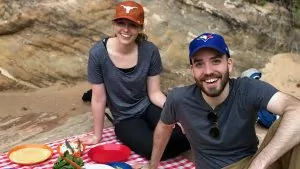
Travel in perfect company by booking a private trip exclusively for your group!
Our sliding scale for private trips is based on the final number of guests in your group. Rates are per person and do not include sales tax, national park fees or guide gratuity. The final rate is based on the actual number of guests on the trip and may adjust based on cancellations or additions.
Please Note: you can also enjoy a private trip at our normal scheduled rates by filling any empty tour to capacity. However, if group members drop from the tour those spots will automatically become available on our website for instant booking. By purchasing a private trip at the rates listed below, your trip will remain exclusive to your group regardless of cancellations.
Private Rates FOr This Trip
- 2 People: Rate x 2.5
- 3 People: Rate x 2
- 4-5 People: Rate x 1.5
- 6-10 People: Rate x 1.15
- 11-12 People: Rate x 1
- 13+ people: contact us for availability and pricing
*all rates are per person and single supplements apply
Private 10+ Guest Patagonia Trips
On all Patagonia trips for private or custom groups of more than 10 guests, a non-refundable deposit of 30% of the total trip cost is needed to secure the group’s reservations.
Learn About Our Private Trips
On this Patagonia hiking tour , we will pick you up at the airport in Puerto Natales, Chile. We will transfer you to your accommodation and before dinner we will all meet for our orientation meeting and become acquainted with our guides, itinerary, gerar, etc. After our meeting, we will have our first Patagonian dinner together!
Important Note : When you enter Chile, you will be issued a document called a PDI (tourism card). Please do NOT throw this away. You will need it to exit the country and nearly every lodge we stay in also asks for a copy.
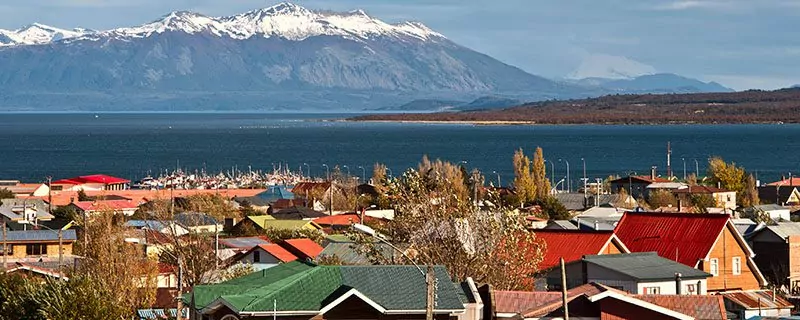
- Hiking Mileage: 13.7 miles (22km)
- Elevation Gain: 2524 feet (770m)
- Elevation Loss: 2524 feet (770m)
- Trekking Duration: 9-10 hours
This morning we will wake up early and drive to Torres Del Paine National Park. We will enjoy breakfast on the road and take a nice coffee break on our way. Your guides will brief you on effective trekking techniques as well as an overview of the natural and cultural history of the area. We will begin trekking up the Ascencio valley while having views of the the Ascencio river. We will come to refugio Chileno and have a break for water and snacks. We then continue through a beautiful forest of native Lenga (Beech) trees and then keep hiking until we reach a glacial moraine (a ridge made from earth pushed by the glacier). From the moraine, we trek 1 more hour until we reach the most amazing view of the Torres del Paine rock towers! The views of the granite towers and glacial lake are simply breathtaking. We will then head back to our Refugio for dinner and accommodation for the night. Our guides will deliver the plan for the next day.
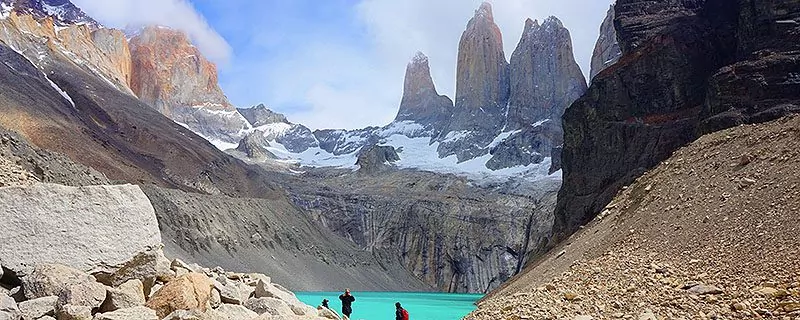
- Hiking Mileage: 8 miles (13 km)
- Elevation Gain: 750 feet (229 m)
- Elevation Loss: 900 feet (274 m)
- Trekking Duration: 5-6 hours
After breakfast, we will pack our gear and begin our trek along Lake Nordenskjold (named after a Swedish geologist who contributed significantly to the study of Glaciology). Additionally, we will have great views of the hanging glaciers above on Mt. Almirante Nieto. We will have lunch and continue to trek until we reach our refugio. Upon arrival at our refugio, we will freshen up and have free time until dinner is served.
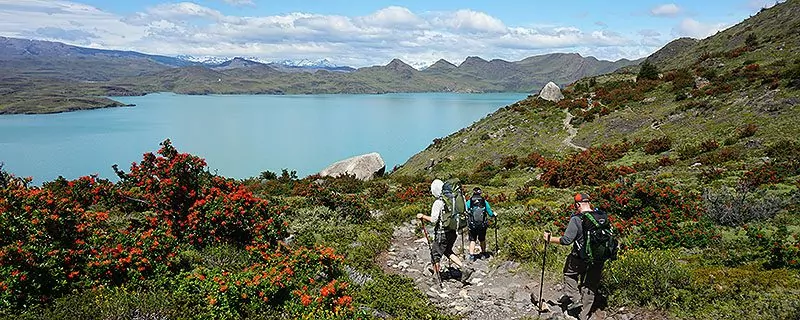
- Hiking Mileage: 13-15 miles (21-24 km)
- Elevation Gain: up to 2200 feet (671 m)
- Elevation Loss: up to 2350 feet (107 m)
- Trekking Duration: 8 hours
This morning we begin our trek to the French Valley. The French Valley is one of the most picturesque valleys in Torres del Paine National Park. It is unique because of the hanging glaciers, stunning granite walls, and spires. People often witness the glaciers calving (dropping giant ice bergs) and hear this natural symphony in the granite amphitheater. We continue to get closer to the granite spires and glacial lake and on the return journey we can see the turquoise color of glacial lake Pehoe. Pehoe means ‘Hidden Lake’ in the Tehuelche Indian Language. We continue trekking until we reach Lodge Paine Grande, where we have incredible views of the Paine Grande and Los Cuernos. We have free time until dinner is served.
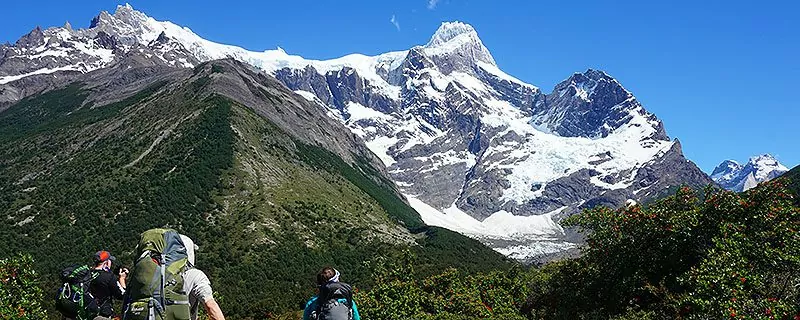
- Hiking Mileage: 7 miles (11km)
- Elevation Gain: 820 feet (250m)
- Elevation Loss: 688 feet (210m)
- Trekking Duration: 4 hours
This morning we have breakfast and depart on our trek along the enchanting Grey Lake (Lago Grey). During our hike, we’ll have views of electric blue icebergs and the magnificent Grey glacier. We hike to the Northeast coast of Grey Lake from where our adventure really starts! Our guides will introduce us to our kayaking equipment and provide a safety talk for our paddle through the floating icebergs of Grey Lake. We then safely kayak near Grey Glacier to get an amazing view of the river of ice. After our kayak adventure, we hike to the new Grey lodge, where we will stay for the night. Here we’ll have time to relax until dinner is served.
Due to occasionally harsh weather conditions, the kayaking tour is not always possible and will be substituted by a fantastic day of hiking if not possible.
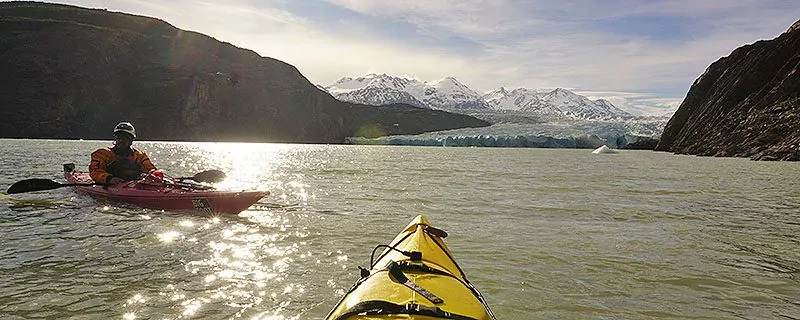
- Hiking Mileage: 4 miles (6km)
- Elevation Gain: 600 feet (184m)
- Elevation Loss: 600 feet (184m)
- Trekking Duration: 3 hours
After breakfast, our guides will brief us on today’s route and extra gear needed. We then take a zodiac boat for 15 minutes across the lake until we reach the west side of Grey Glacier. Upon arrival at Grey Glacier, we will disembark on the land in between the Ice (Nunatak) and hike across the small island until we reach the Ice. Our guides will brief the group on safety aspects and teach the group the proper techniques and correct use of our equipment. After the brief, we will begin our exploration of Grey Glacier which last approximately 3 hours. We will be able to observe crevasses, rivers, lagoons and tunnels in different tones of blue. We then return to the zodiac boat and ride back to the docking point, where we will have lunch. After lunch, we board a larger and more comfortable boat and peruse the perimeter of the lake to get up close with the numerous icebergs. We then head to Grey Lodge, pack our gear and depart for Puerto Natales. Upon arrival in Puerto Natales, we’ll check into our lodge and have free time before going out on the town for our final celebratory dinner together. What a week it has been!
Due to occasionally harsh weather conditions, the glacier hiking is not always possible and will be substituted by a fantastic day of hiking if not possible.
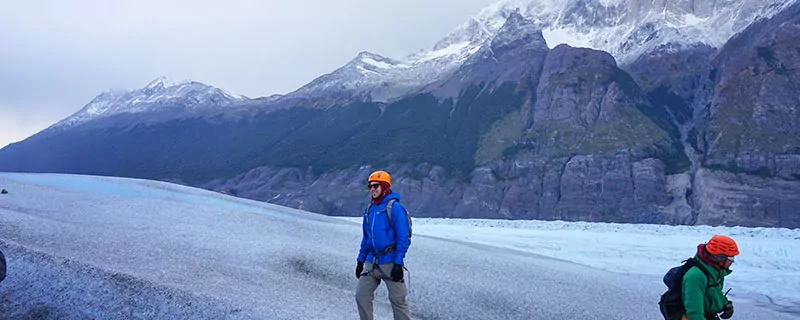
This morning, after breakfast our shuttle driver will deliver you back to the airport in Puerto Natales. Thank you for choosing Wildland Trekking!
Please Note : We always do everything in our power to follow the set itinerary, however occasionally trips are subject to itinerary changes based on a variety of circumstances, including but not limited to: extreme weather, availability of refugios, political or bureaucratic obstacles, earthquakes, fires, flooding and more. Also, the kayaking and glacier hiking days on this trip are weather-dependent and not guaranteed; we will substitute alternate activities in the case kayaking and/or glacier hiking are not possible. Normal terms and conditions apply to trips with itinerary changes.
Trip Dates & Booking
Trip dates & booking.
Click on a date to register. You can also click here to request new dates or book through customer service.
AVAILABLE TO BOOK
This trip is available and bookable online! Click on the date to register now or contact us online to book through our award-winning customer service team!
This trip has 1 or 2 spots remaining and is bookable online! Click on the date to book now or contact us online to book through customer service.
REQUEST A RESERVATION
This trip is exclusively booked through customer service due to logistics with lodging, permits, staffing, availability, or something else. Please contact us online or call us at 800-715-HIKE (4453) to request a reservation.

Don't see your dates? Call us! We may be able to add new trip dates.
Trip details, what's included.
- A detailed trip packet that takes the guesswork out of your travel, training, packing, and preparing for the trip
- Trained hiking guide(s) with years of personal wilderness and hiking experience, medical certifications, and a passion for leading people into breathtaking landscapes. See Guide Bios .
- Transportation for the duration of the tour starting on Day 1 and ending on Day 7
- Lodging in Puerto Natales and Refugio accommodations (or camping in some instances) in Torres del Paine National Park
- Meals beginning with dinner on Day 1 through breakfast on the final day
- Use of a top-of-the-line backpack & trekking poles
- Kayak equipment and local kayak guides for one day (weather permitting, not guaranteed)
- Glacier hiking equipment and glacier hiking guides for one day (weather permitting, not guaranteed)
- Emergency equipment including a company-issued first-aid kit and communication device
What's Not Included
- Transportation to Puerto Natales
- Trip insurance that includes medical coverage and at least $30,000 in evacuation and repatriation coverage (required in Chile)
- Bar bills, drink bills, extra snacks, telephone bills, Wi-Fi bills and other personal expenses (shopping/laundry)
- Clothes, rain gear, and footwear ( see recommendations )
- Sunscreen, toiletries and personal items
- Water bottles and a headlamp or flashlight
- Porter services – options are available for an extra fee on most trip dates. Reach out to our Adventure Consultant team for more details.
- All expenses due to unavoidable events e.g. flight cancellation, personal illness, strikes, etc. (we recommend trip insurance coverage for these variables)
- Guide gratuities are optional and at the discretion of each customer. A suggested guideline is to reward outstanding service with a tip of 5-10% of the total trip cost. Please tip your lead guide and they will distribute responsibly to the crew. Local currency is preferred, or USD is also appreciated. Gratuities for kayak and ice hike guides (recommended $25-$50 per kayak guide, $25-$50 per ice hike guide)
Click here to see a printable, downloadable trip information packet with more detailed guidance about what to pack.
Add-on Porter Service
Hiring a porter to assist in carrying your gear can be a great option if you’d like to trek with a lighter pack (5-10 pounds versus 15-25 pounds). Porter services on this trip are available for Days 3-5 for an add on fee of $540. Porters can carry up to 33 pounds each and can be split between 1-3 guests. Contact our Adventure Consultant team to book.
Refugio Accommodations
This Patagonia trek utilizes the Torres del Paine Refugios (backcountry huts). Each refugio is unique, with dorm style accommodations where guests share co-ed bunk rooms, typically 4-8 guests per room. Men’s and women’s restrooms/showers are down the hall. You’ll have great local cuisine, served in a communal eating area with shared tables and drinks available for purchase.
Also, occasionally we are not able to reserve one or more nights in the Refugios, in which case accommodations will be in tents that are provided and set up by the Refugios. In these cases, we will still have access to the Refugios for meals, relaxation and showers. The price of the trip remains the same.
Meals: What to Expect
This Patagonia hiking tour features a combination of in-town meals and meals prepared by your guides. We’ll have dinners at carefully selected, wonderful restaurants in Puerto Natales and in some of the backcountry lodges as well as meals prepared on the trail by your guides and/or support staff.
For optimal taste and energy, we supplement all our meals with spices, herbs, oils, cheeses, butter, sugar, and fruits and vegetables. In addition, we provide you with with an assortment of trail snacks* (nuts, dried fruit, chocolate, & cookies) to eat at your own discretion.
We can often accommodate vegan, vegetarian, kosher and non-gluten diets and make adjustments for food allergies. These and other special dietary requests may require an additional fee, and in some countries may be more difficult to accommodate than others. Please inquire with us for more information about the specific trip you’re interested in.
*Common trail snack brands and items found easily in the US are not readily available in this destination. (i.e. protein bars, trail bars, beef jerky, etc…) We recommend guests that prefer these types of trail snacks to bring a few of their own choice items from home.
Gear We Provide
We provide all group gear which includes the following:
- Trekking poles
- Tents, sleeping bags, sleeping pads (when needed)
- Company-issued first-aid kit
- Emergency communication device(s)
Guest Packing List
When you register for this tour you’ll receive access to a printable, downloadable trip information packet with a detailed packing list specific to this trip ( click here to see it now.) All trips require a sturdy pair of hiking shoes or hiking boots, rain gear, a recommended clothing system, a headlamp or flashlight, a hydration system (water bottles and/or bladder) and other items specific to each trip.
Additionally, some guests choose to bring their own sleeping bag. We supply high quality, synthetic fill bags that are professionally laundered after every trip. Synthetic fill is non-allergenic, insulates when damp and stands up well to repeated washings, but is heavier and bulkier than down. If you’re able to bring your own down sleeping bag, there are multiple benefits . If not, we’ve got you covered!
Trip Logistics
How do i register.
Reserve your spot today! In the Trip Dates & Booking section of this page, the green and red dates are bookable online by simply clicking on the date, and blue dates must be booked through our customer service team for a variety of possible reasons. To email our customer service team, you can click here to get the ball rolling. Our adventure consultants will confirm availability, and if you’re ready to register we’ll email you a link to a registration profile. You’ll have 72 hours to complete your profile (and that of any dependents) and pay the deposit.
Feel free to call us for more info – we’re here 7 days a week!
Where Do We Meet?
We will meet you at the airport in Puerto Natales on Day 1 and transport you to the first night’s hotel (included), where we’ll conduct an orientation meeting at 5:00 PM the first evening (your flight should arrive before 4PM into Puerto Natales. Our communication team in Chile will be in contact approximately 45 days before your trip to coordinate your rendezvous and answer any last-minute questions you have.
Click here to see a printable, downloadable trip information packet with more detailed guidance about flights, shuttles, recommended lodging and more.
Travel to Puerto Natales
Booking flights.
For our Patagonia treks we recommend flying into Puerto Natales, Chile on the day the trip begins. LATAM Airlines, Sky Airline , & Jet Smart offer direct flights from Santiago to Puerto Natales.
Flights to and from Chile are the guest’s responsibility. Multiple airlines operate flights into Puerto Natales, but there are no direct flights from U.S. or European cities. Most flights connect through Lima, Santiago, and/or Puerto Montt, Chile. The duration of these multiple-stop flights, including layovers, is normally between 20 and 28 hours.
Please arrive no later than 4 pm on Day 1 into Puerto Natales. Our Patagonia team will rendezvous with you at the airport and transport you to our hotel. An orientation meeting, dinner and accommodations are included on Day 1. Your flight on the final day from Puerto Natales can leave at anytime.
If you choose to fly into Punta Arenas (a 3 hour’s drive from Puerto Natales), we recommend the following local bus companies. These are comfortable coach busses and the process is easy to navigate. The website can be viewed in both English and Spanish. The cost is roughly $10-$12 per person and must be purchased online, in advance. If you choose to take the bus from Punta Arenas, instead of flying directly into Puerto Natales, we will pick you up from the bus terminal and take you to the first nights’ hotel.
Buses Fernandez: http://busesfernandez.com Bus Sur: http://www.bussur.com
Important Note : When you enter Chile, you will be issued a document called a PDI (tourism card). Please do NOT throw this away. You will need it to exit the country and nearly every lodge we stay in also asks for a copy. It is also a good idea to take a picture of it, front and back.
Pre and Post-trip On Request Lodging
We secure limited amounts of pre and post trip lodging in Puerto Natales, Chile as an optional add-on for guests of this trip. This lodging is on request, and is available on a first come, first serve basis. If interested, please reach out directly to our team to check availability.
Safety Precautions
Your safety is our top priority. Our hiking tours are led by professional hiking guides, all of whom are wilderness-certified first responders or EMT’s, each with years of guiding and wilderness experience. Guides adhere to standardized risk management protocols in case of any potential or actual incident, and all tours carry an emergency communication device and comprehensive first-aid kit. Additionally we have a “24/7” system through which guides or guests can reach Wildland support personnel at any time.
In the interest of your safety, it’s important to refer to the Center for Disease Control website for up-to-date recommendations on immunizations before your trip.
Essential Eligibility Criteria
Essential Eligibility Criteria (“EEC”) have been specifically identified to help you understand the skills and abilities necessary to participate on each Wildland trip, and they apply uniformly to all potential trip participants, irrespective of the presence or absence of any disability.
Once you identify a trip in which you may be interested, please carefully review the EEC and itinerary details. If after reviewing the EEC that apply to your desired trip, you determine you need an accommodation in order to meet the EEC, please contact us prior to registering to discuss your requested accommodation.
The EEC exist for your own safety and the safety and enjoyment of all participants. If you are unable to meet the EEC for the trip, with or without an accommodation, you are not eligible for that trip. If you register and arrive for a trip for which you do not meet the EEC, you will be disqualified from participation on the trip and will be dismissed or evacuated from the trip without a refund.
Our approach to international travel is to combine the best of two worlds: the dialed-in details, professionalism and consistency Wildland trips are known for; and the cultural immersion and intimate regional knowledge that only locals can provide. To excel with this approach, we vet and hire the best local guides, welcome them into the Wildland family and train them to meet our standard of excellence with every aspect of a trip. But along with managing logistics and safety, your guides will teach you about the area’s history and culture, and provide a level of familiarity and intimate detail only locals can.
Check out our Meet Our Team page for staff bios.
Guide Working Parameters
Guides are required to take 8 hours off each 24-hour period to sleep, recuperate, take personal/down time…etc. In addition, as part of the 8 hours off they must sleep/rest or be in their tents/rooms uninterrupted for a minimum of 5 hours each night. We ask guests to respect these requirements and to not interrupt guides’ off time and sleep time unless there is a true emergency.
Age Restrictions
Age restrictions on this trip are as follows:
- 12 and older to join scheduled tours (mixed groups)
- 5 and older to join private tours, with final approval and specific logistical requirements (such as porter or stock assist) determined on a case by case basis
Trip Insurance
Field evacuation (minimum coverage of at least $30,000), repatriation, and medical trip insurance is required on all Chile trips as a condition of partnership terms with our Chilean vendors.
If you wish to purchase trip insurance, we recommend IMG/iTravelinsured. They are one of the world’s leading providers of travel insurance.
For information on recommended IMG/iTravelinsured policies please click here .
For even greater information, or if you simply prefer communicating with a real, live person, feel free to contact our exclusive agent Michael Bennett. Michael will help you identify the best product for your needs, and there is no cost associated with his assistance. You may contact him at:
Email: [email protected] US by Phone: 877-305-9083 Direct/International by Phone: 702-448-3664
If you already have insurance or wish to purchase from anyone other than IMG/iTravelinsured, we recommend careful consultation with the provider to ensure appropriate coverage. This is because many providers have a number of policy exclusions.
Weather in Patagonia
Chile is a long, thin country extending North-South more than half the length of South America which gives it a tremendous diversity of climates. The Patagonia region of Chile, where we operate our trips, is at the far southern tip of South America, relatively far from the equator and close to the South Pole. It is a generally cool climate with potential for year round inclement weather including rain, snow, sleet, and very strong winds.
The average temperatures and precipitation in the Patagonia region are:
- Accommodations
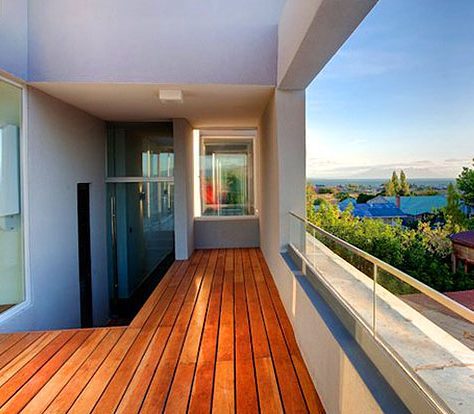
HOTEL NATALINO
This modern, comfortable hotel, with architecture that evokes the form of Patagonia’s natural landscapes, is a premier accommodation in the town of Puerto Natales. Just a couple years old, and with all the amenities, it is a fantastic place to prepare before, and rest after, our Patagonia trek. (heated pool)
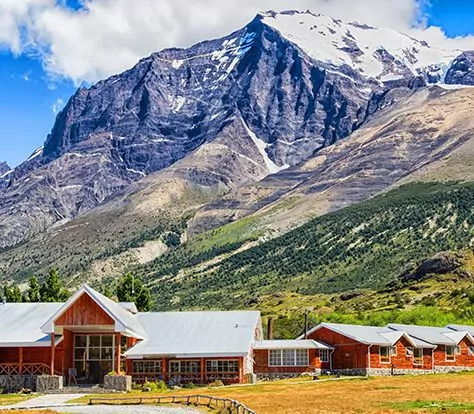
TORRES DEL PAINE REFUGIOS
Refugios are inviting backcountry huts/lodges with beds, kitchens, chefs and staff, dining rooms, and bathrooms/showers. The accommodations are dorm-style with communal, co-ed bedrooms that contain 6-8 beds per room. Bathrooms are gender-separated with hot water, showers and flush toilets. Please note: for those who have opted for the single supplement, there are no single rooms available during the Refugio section of this trek.
* These exact accommodations are not guaranteed. In some instances alternative accommodations of similar quality and location may be used.
Trip Reviews
Average customer ratings:.
- 4.9 (28 reviews)
- Most recent
Truly, one of the best trips ever.
Torres del Paine National Park was breathtaking. Everyday and with every step, there was an incredible view in every direction. Karina did an outstanding job as our guide. She was professional, very knowledgeable, and was a lot of fun! Truly, one of the best trips ever.
Exceptional adventure that touched my heart
I embarked on a journey filled with excitement and a touch of apprehension, but little did I know how it would surpass my wildest dreams! The constantly evolving scenery was nothing short of breathtaking, leaving me in awe at every turn. As night fell, the cozy refugios provided a comforting haven amidst the adventure. The food was delightful, and the accommodations were top-notch. The hike itself? It lived up to its description - thrilling yet challenging. Proper preparation is key; make sure to train and pack accordingly for the unpredictable weather. But oh, our guides, Andrea Hernandez and Patrick Smith, were truly exceptional. They were not just professionals but kind-hearted souls who radiated joy and humor. Their care knew no bounds as they supported us every step of the way, even those of us who were new to hiking. And their backpacks seemed enchanted, holding surprises that comforted weary souls. Thank you, Wildland Trekking, for providing me with an exceptional adventure that touched my heart and uplifted my spirits.
Another Amazing Wildland Trek
Simply amazing! From initial booking through drop off at the airport after the trek, the Wildland Patagonia Team took care of every detail with precision and a rarely experienced level of personalized care. I took this trip last week with my 25 year old son. We absolutely loved every bit of this hike — the ever changing, breath taking beauty of the land, laughter and friendship we shared with our guides and hiking group, the warm and comfortable refugios we stayed in at night (thought the food and accommodations were great), lovely walks, shops and restaurants in Puerto Natales the first and last nights and shuttle rides to and from the airport and parks. As for the difficulty of the hike itself, we found it to be just as described in the trip packet - moderate and not difficult if you prepare as recommended in the packet. Also be sure to bring the gear listed in the trip packet as the weather changes often and it’s great to have the layers they recommend handy. We stayed comfortable the entire time. Our guides, Andrea Hernandez and Patrick Smith were super professional, prepared, kind, funny and attentive to the comfort, safety and happiness of each and every hiker. They made sure each of us were comfortable and had what we needed all the time, with things you couldn’t even imagine coming out of magic backpacks — yummy snacks, hot teas, blister care for those who hadn’t adequately broken in new boots, etc. They even arranged for a birthday cake to be delivered to our Refugio in the middle of the wilderness the evening of my 50th birthday. I can’t say enough about how wonderful this trip is. Thank you Wildland Trekking for another amazing adventure! You guys are the best!!!
See All Guest Reviews!
Related trips, you might also like....
Torres Del Paine O Circuit
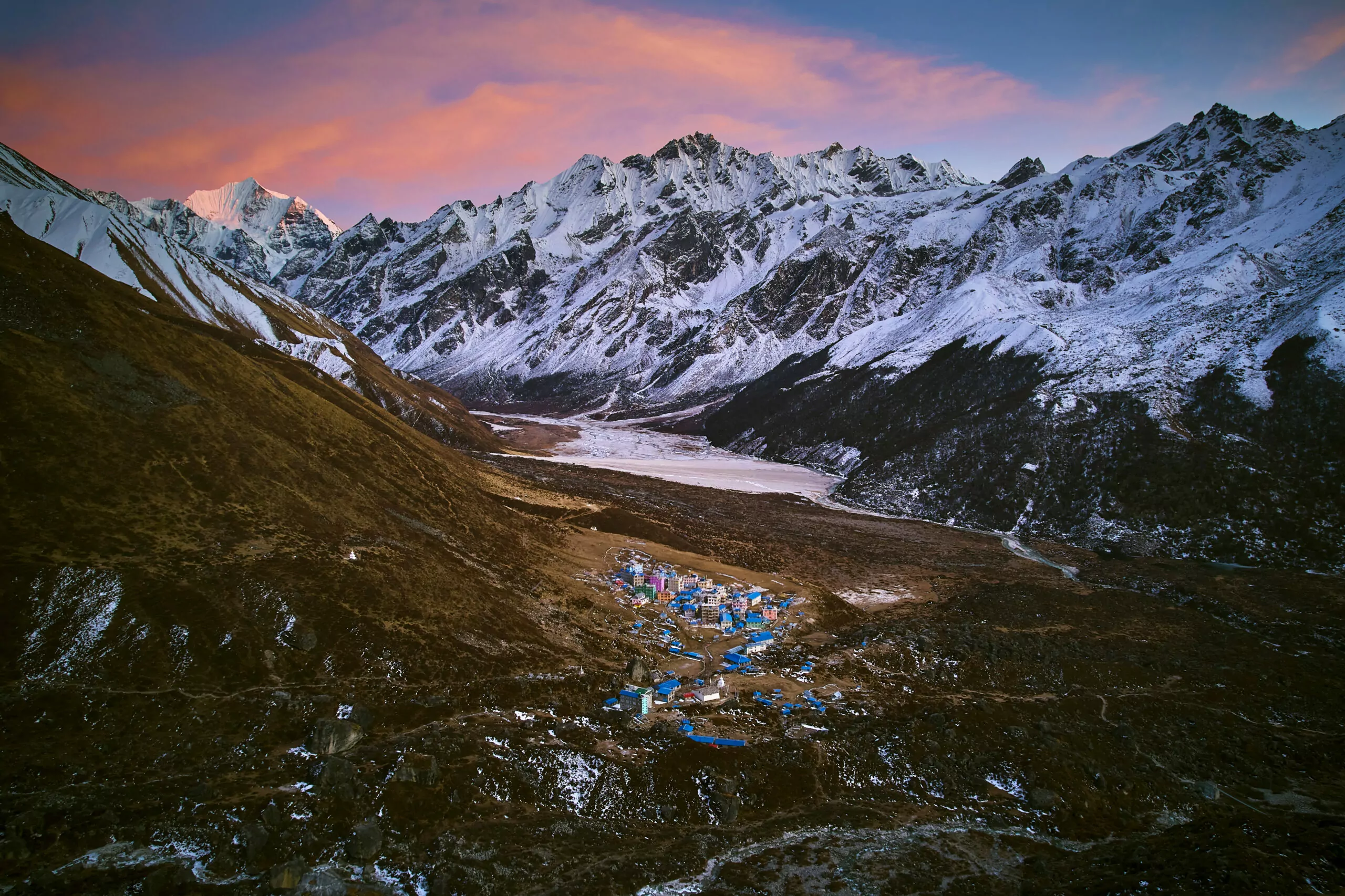
Langtang Valley Service Trek
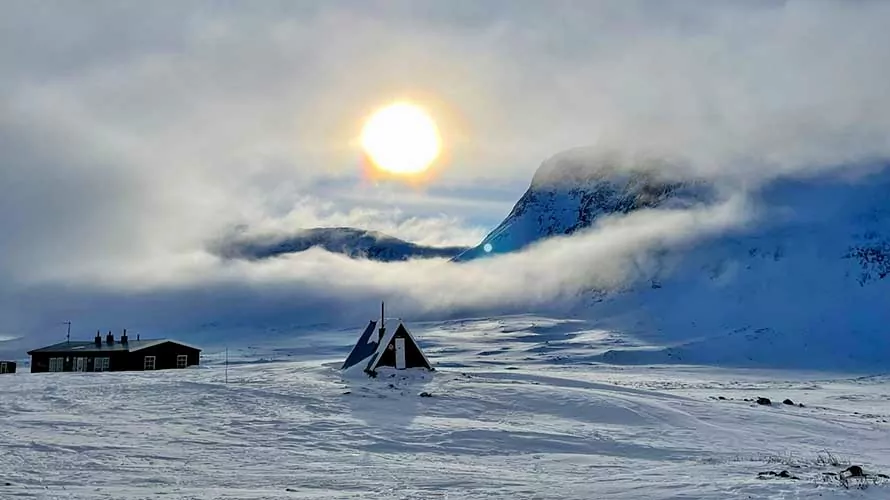
Arctic Circle Winter Traverse
- Similar Trips
- day by day itinerary
- logistical and travel information
- gear and clothing lists and more
Leave a Reply Cancel reply
Your email address will not be published. Required fields are marked *
First Name & Last Initial *
Save my name and email in this browser for the next time I comment.
wildland Wires
Sign up to receive our exclusive Wildland Wire emails and stay up to date with Wildland Trekking's promotions, discounts, contests, outdoor tips and tricks, trip reports and more!
Hrmm. Looks like you're using an older browser, which means some site features may not work they way they should. For the full gadventures.com experience, we recommend upgrading to the most recent version of your browser . It's worth it! Honest!
View all tours
North America
Central america & caribbean, south america, north africa & middle east.
Few travellers make it to this icy continent, but the lucky ones who do get to explore a frozen Eden ruled by the elements and teeming with wildlife.
G Adventures Land
G adventures sailing & cruises, g adventures private travel.
Whether it’s a family retreat or a girls trip, you can surround yourself with a hand-picked crew and customize a tour that fits you all perfectly.
The Geluxe Collection
Our new line of premium active adventures is officially here. With perfectly paced itineraries, one-of-a-kind accommodations and elevated dining, this is adventure at its finest.
National Geographic Journeys
Go deeper into the cultures and habitats of the places we explore. More is included and you’ll enjoy greater hands-on exploration, interactions with local experts, and freedom to roam.
National Geographic Family Journeys
Are you an adventure-loving family in search of meaningful ways to discover the world together? These tours are specially designed for travellers seven and up and their inquisitive families.
Jane Goodall Collection
Step deeper into the animal kingdom while respecting all of its inhabitants. Our incredible collection of wildlife-focused tours is endorsed by the world-renowned ethologist.
Roamies by Hostelworld
The thrill of adventure. The awesomeness of hostels. Get ‘em both on these immersive small group trips for 18 to 35-year-old travellers.
Why choose us
As the leader in small group travel for 30 years, we know how to do it right: flexible itineraries, freedom to roam, safety, peace of mind, and locally based guides.
Change the world just by having the time of your life. When you travel with us, you become a force for good by acting responsibly and creating positive impact.
Together with our non-profit partner, Planeterra, we ensure local communities touched by our tours benefit from our visits in as many ways possible.
Trees for Days
Leave your destination even greener than you found it! For every day on tour, we’ll plant a tree in your honour and ensure that our forests get to live their best lives.
Travel resources
Last minute deals.
Looking to have the time of your life in the next 90 days or so? You can save big if you’re ready to book now.
Loyalty discount
Back home from a G Adventures tour? Submit a quick trip evaluation to save 5% on your next tour with us.
Student discount
Got proof that you’re pursuing higher learning? Then we’ve got a travel voucher with your name on it.
All travel deals
New ways to save pop up all the time. Here’s where you’ll find every hot deal in one easy place.
Torres del Paine - The W Trek
6 days, puerto natales to puerto natales.

- Full itinerary
- Tour details
Here's a quick six-day trip that's simply perfect as an add-on to other Patagonian adventures. Torres del Paine's W Trek is celebrated by active travellers globally as one of the most scenic treks anywhere. Spend four days walking through stunning landscapes surrounding Grey Glacier, French Valley, and the imposing three towers. While the trek alone is challenging enough, the real contest comes in needing to take your camera out so frequently.
Puerto Natales to Puerto Natales
Is this tour for me, travel style: active.
Hiking, trekking, biking, rafting, and kayaking adventures all over the world, made for outdoor types.
Service Level: Camping
Camping most nights with some hotel/hostel stays to start and throughout; affordable public and private transport.
Physical Rating: 4 - Demanding
Some high-altitude hikes or more strenuous activities, but accessible to most healthy travellers.
Trip Type: Small Group
Small group experience; Max 16, avg 12
Age requirement: 12+
All travellers under age 18 must be accompanied by an adult.
Check Your Visa Requirements
Before booking, use our handy entry requirements tool so you know which documents you need to enter and travel through the countries on your trip.
See how your trip uplifts communities
In a number of impactful ways, your adventure directly benefits the local people and places we visit.
Help us spread love around the world — with trees! Together with Planeterra, we'll plant one tree in your name for every travel day.
Trees planted for this trip: 6
Ripple Score
Want to create ripples that change lives? The higher the Ripple Score percentage, the more money stays in the local communities you visit.
Ripple Score for this trip: 99
More from Torres del Paine - The W Trek
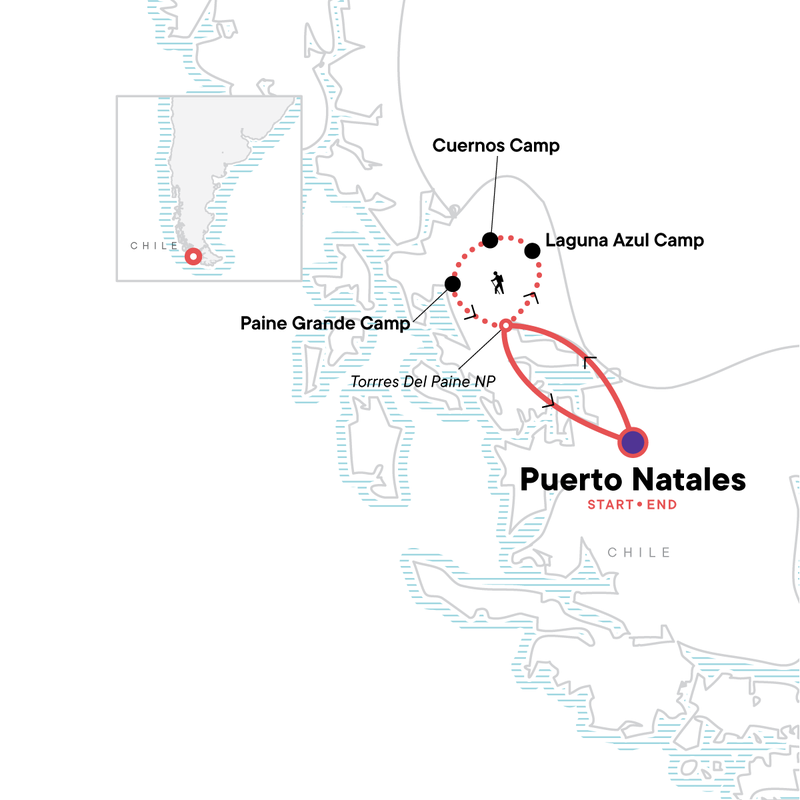
Places visited
Ready to take on Patagonia? Get familiar before you go.
Day 1 Puerto Natales
Arrive at any time.
Exclusive Inclusions:
Day 2 puerto natales/laguna azul camp.
Embark on a 4-day excursion within Torres del Paine National Park, hiking the famous W Trek. Start the 62km (38.5 mi) route by trekking to the base of Las Torres to see the dramatic three towers and turquoise lagoon below.
Meals included:
Day 3 laguna azul camp/cuernos camp.
Wake up surrounded by breathtaking landscapes. Enjoy breakfast with a view, pack your bag and jump in the van. Our drive today goes along the Paine river until we reach the Welcome Center in Torres del Paine NP. Be on the lookout to spot some wildlife! Once at the welcome center, meet the porters and continue hiking along the W route towards Cuernos Campsite. Stop at Nordenskjöld lake and enjoy the view before reaching Cuernos Camp.
Day 4 Cuernos Camp/Paine Grande Camp
Today hike to the French Valley lookout to see the imposing French glacier hanging over Paine Grande mountain. Take in the dramatic, contrasting greens and greys on the landscape and enjoy a 360 view from above. Head to Paine Grande Campsite after crossing an eerie and beautiful forest of dead trees.
Day 5 Paine Grande Camp/Puerto Natales
The final day of the W Trek leads to Grey Lake and the lookout point for Grey Glacier. Gaze off into the distance admiring the scale of this immense glacier. Hike back to Lake Pehoé and finish by taking a picturesque ferry ride across the lake enjoying the sense of accomplishment before returning to Puerto Natales for the night.
Day 6 Puerto Natales
Depart at any time.
What's Included
- Your Welcome Moment: Welcome Moment - Meet Your CEO and Group
- Torres del Paine National Park camping and trekking excursion along the the "W Route" (3 nts)
- All transport between destinations and to/from included activities
Accommodations
Hotels (2 nts), camping (3 nts).
5 breakfasts, 4 lunches, 3 dinners Allow USD80-105 for meals not included.
Transportation
Van, ferry, hiking.
Staff & experts
CEO (Chief Experience Officer) throughout, specialist mountain guides in Torres del Paine NP, local guides.
Available extras (Add these to your tour when you book)
My own room - from $59.00.
If you're travelling solo and would prefer to have your own private room throughout your trip, select this option during the online booking process.
Make it a private tour
Book this tour as a private departure, with your own CEO and all the benefits of a G Adventures group tour.

US: +13314652129
Chile: +56957902936.

Torres del Paine

W TREK CLASSIC
6 nights, 7 days
All-inclusive, w/ Garden Domes

W TREK ACTIVE
5 nights, 6 days

9 nights, 10 days

W TREK ALTERNATIVE
4 nights, 5 days

Day tours from Puerto Natales operated by our sister company, Paine Travel

WTREK EXPRESS
4 nights accomodation, 5 days (3 days of hiking, a ll-inclusive)
The world's most beautiful flower field has been revealed
Two UK spots have made it into the top 10...
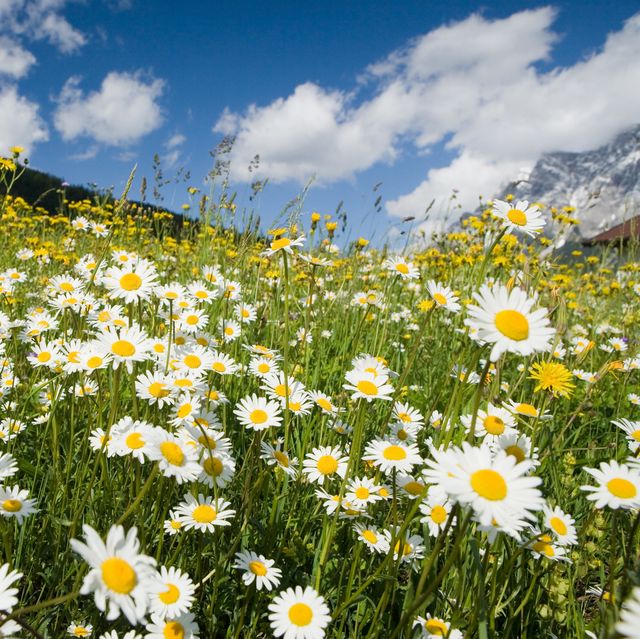
The research, collected by hotel chain Premier Inn , used eye-tracking software to record the average time people lingered on images of flower fields.
Torres del Paine National Park Daisy Flower Field, in Chile, came out on top – with people gazing at the image for an average of 3.89 seconds.

Premier Inn says: "This beautiful daisy flower field can be found while hiking the W Trek in Chile’s Torres del Paine National Park. The jagged mountain peaks provide a stunning backdrop, alongside the spectacular lakes and glaciers that adventurers will navigate during the trek."
Whilst this beautiful meadow is located in South America, eight of the 15 most beautiful flower fields can be found in Europe. Monet's Garden in Giverny, France, is tied in second place with the Crested Butte Wildflower Festival in Colorado, USA. Canada’s Butchart Gardens and Mainau Island in Germany also rank in the top five.
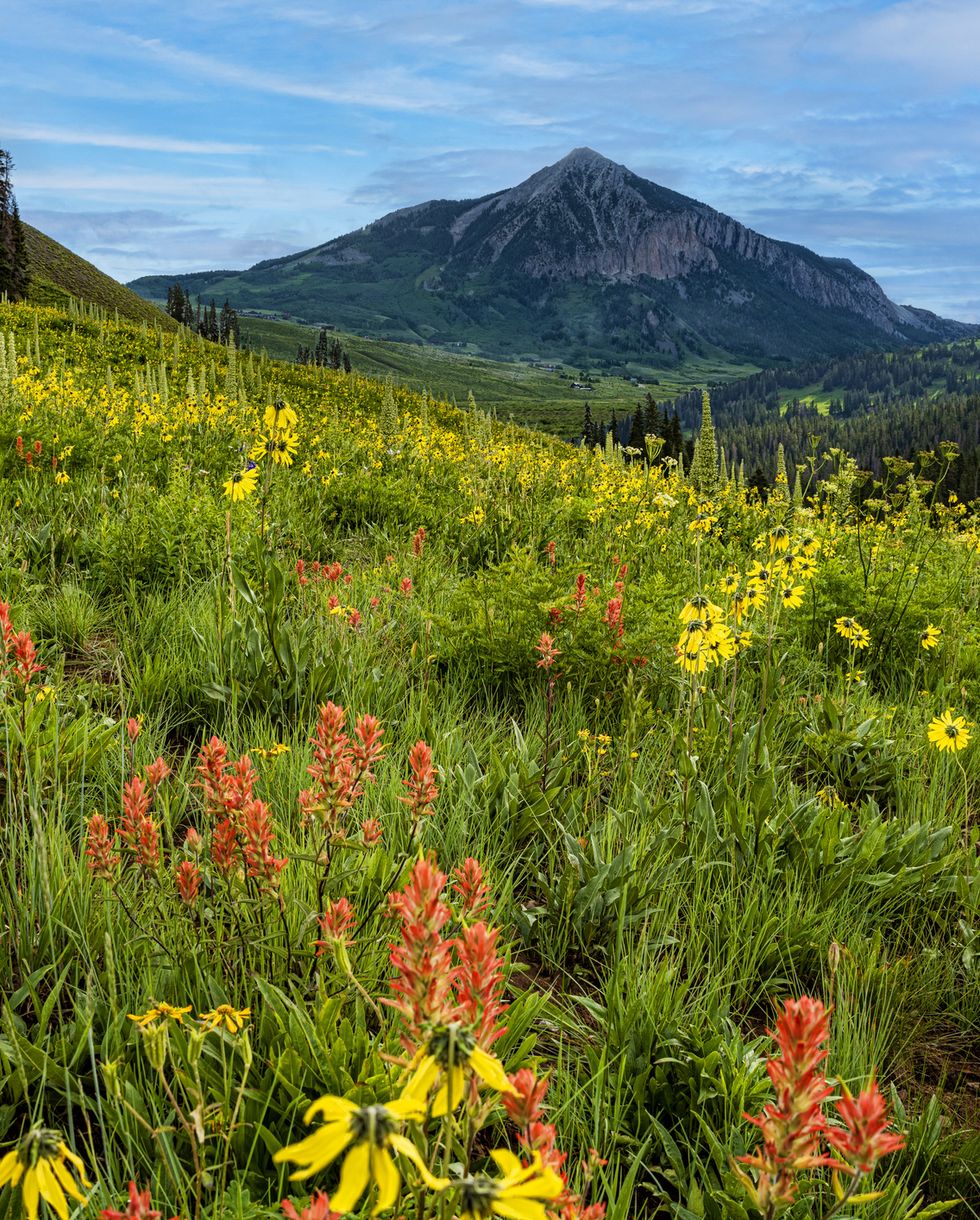
Two of the spots were nabbed by UK flower fields: Hitchin Lavender Farm in Hertfordshire and Castle Farm Lavender Field in Kent.
.css-1eiql25{text-align:center;margin:0rem;padding-top:0.9375rem;padding-bottom:0.9375rem;} .css-12hmvql{color:#5D654E;font-family:Kepler,Kepler-fallback,Kepler-roboto,Kepler-local,Helvetica,Arial,Serif;font-size:2.1875rem;line-height:1.2;margin:0rem;}@media(min-width: 64rem){.css-12hmvql{font-size:2.5625rem;line-height:1.2;}}.css-12hmvql b,.css-12hmvql strong{font-family:inherit;font-weight:bold;}.css-12hmvql em,.css-12hmvql i{font-style:italic;font-family:inherit;} The most beautiful flower fields in the world: .css-1w3y1tp:after{margin-top:0.625rem;margin-left:auto;margin-right:auto;-webkit-mask:var(--mask);mask:var(--mask);width:4.438rem;height:0.313rem;content:'';display:block;-webkit-transform:rotate(-180deg);-moz-transform:rotate(-180deg);-ms-transform:rotate(-180deg);transform:rotate(-180deg);background:radial-gradient(4px at 50% calc(100% + 1.8px),#0000 calc(99% - 1px),#B2CB7C calc(101% - 1px) 99%,#0000 101%) calc(50% - 6px) calc(50% - 2px + 0.5px)/12px 4px repeat-x,radial-gradient(4px at 50% -1.8px,#0000 calc(99% - 1px),#B2CB7C calc(101% - 1px) 99%,#0000 101%) 50% calc(50% + 2px)/12px 4px repeat-x;}
- Torres del Paine National Park Daisy Flower Field, Chile
- Monet’s Garden at Giverny, France
- Crested Butte Wildflower Festival, US
- The Butchart Gardens, Canada
- Mainua Island, Germany
- Wild Lupins Lake Tekapo, New Zealand
- Kaas Plateau, India
- Bluebonnet Fields in Ennis, US
- Hallerbos Bluebell Forest, Belgium
- Hitchin Lavender Farm for Sunflowers, UK
- Campo de Fiori di Castelluccio, Italy
- Kawachi Wisteria Garden, Japan
- Dalat Flower Gardens, Vietnam
- Castle Farm Lavender Field, UK
- Ashikaga Flower Park, Japan
If you're looking for more inspiration, be sure to check out our round-up of 20 of the best UK gardens to visit.
Also, be sure to add these stunning UK lavender fields to your list for summer, as well as these sunflower spots .
The floral edit

Everlasting Wreath from Dried Flowers - Custom Made

Flower Garden Brooch

Watercolour Flower Meadow Greetings Card

Sterling Silver Blossom Flower Earrings

Flower Ink & Watercolour Giclée Fine Art Print

Flower Solid Silver Pendant Necklace

September Birth Flower Fine Art Print

Porcelain Cup and Saucer in Hedgerow Flowers Design

Humble Bumble Oven Glove

.css-1shyvki:before{background-repeat:no-repeat;-webkit-background-size:contain;background-size:contain;content:'';height:0.819rem;margin-bottom:0;margin-right:-0.9375rem;width:3.125rem;}.loaded .css-1shyvki:before{background-image:url('/_assets/design-tokens/countryliving/static/images/arrow.svg');}@media(max-width: 48rem){.css-1shyvki:before{display:none;}}@media(min-width: 40.625rem){.css-1shyvki:before{display:inline-block;}} Nature & Wildlife .css-c08pe1:before{background-repeat:no-repeat;-webkit-background-size:contain;background-size:contain;content:'';height:0.819rem;width:3.125rem;}.loaded .css-c08pe1:before{background-image:url('/_assets/design-tokens/countryliving/static/images/arrow.svg');}@media(max-width: 48rem){.css-c08pe1:before{margin:0.7rem auto 0.9375rem;display:block;}}@media(min-width: 40.625rem){.css-c08pe1:before{margin:0 -0.9375rem 0 0;display:inline-block;-webkit-transform:scaleX(-1);-moz-transform:scaleX(-1);-ms-transform:scaleX(-1);transform:scaleX(-1);-webkit-background-position:75% 0;background-position:75% 0;}}

RSPB's Big Garden Birdwatch 2024: The results

UK spiders you're likely to find in your home
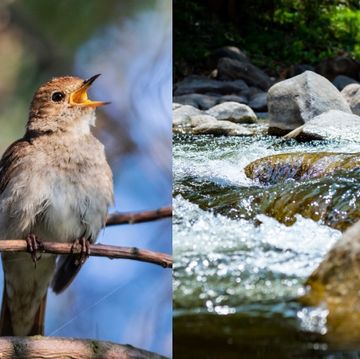
Tick off spring sounds on this 'nature checklist'

10 refreshing reads for spring 2024

How to create a DIY sweet pea den for your garden

Cheshire farm's fluffy chicks and pedigree hens
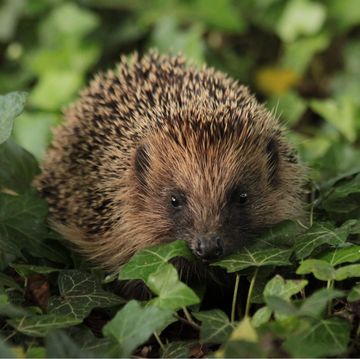
A new hedgehog conservation project needs you
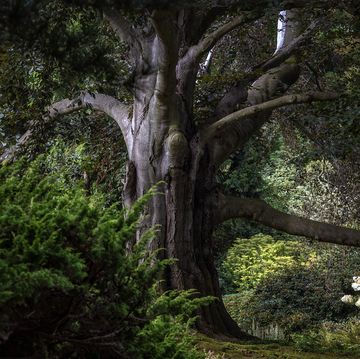
European Tree of the Year has been named
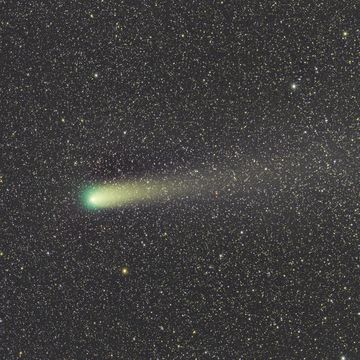
Once-in-a-lifetime astronomical event in March
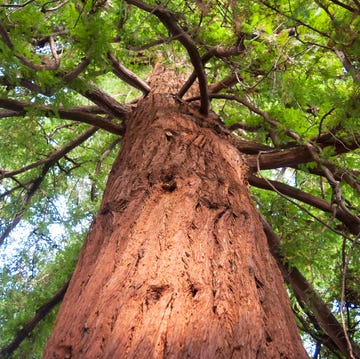
Where to see giant redwood trees in the UK
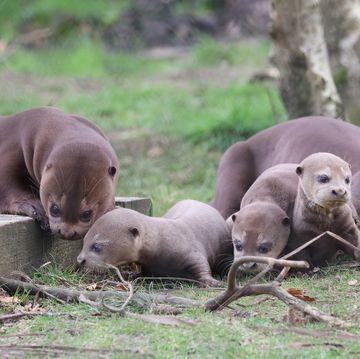
UK wildlife park welcomes rare otter cubs

A Full Backpacking Guide to the ‘O Trek' in Patagonia: Where & How to Go
Exploring Patagonia is an adventure of all adventures, a premier spot for virtually every type of outdoor activity you could imagine. This region, located at the tip of South America, spans both Chile and Argentina and has rivers, mountains, vistas, and glaciers that are inscribed in the brains of dirtbag climbers and bucket-list travelers alike.
But logistically, exploring Patagonia (and the surrounding area) is far from convenient. Flights into the region are sparse, and the bus systems, while perfectly nice, take a long time and can be tricky to book. Cell service is even more unreliable. Exploring between both Chile and Argentina also requires border crossings (of course), currency exchanges (bring plenty of high-value USD bills), and a lot of squandered plans due to bad weather.
Regardless of inconveniences, one of the region's most popular areas for recreation - Torres del Paine National Park - draws visitors of all walks of life to its entrance. The park, located in Chile, is markedly different from what you might find in U.S. National Parks.
Instead of a network of roads, there is a hiking loop spanning the majority of the park, creating a broad O shape. To see the whole expanse of the park, hiking the O Trek is the only way to do so, beyond getting a permit to rock climb some of the park's famous peaks.
But for most, devoting dollars and logistics to an international climbing expedition is out of the question. Luckily, hiking the O Trek is accessible to a wider swath of outdoor recreators, with gear rentals and hostel stays available along the trail.
Guide to the ‘O Trek’ in Los Torres National Park
What is the o trek.
Put simply, the O Trek or O Circuit, is a trail that loops within Torres del Paine National Park (also known as ” Los Torres”). Visitors must book campsites in advance and walk counter-clockwise on the loop.
Most folks hike the trail in 8 days, offshooting to include famous lookout points like the Mirador Britanico and Mirador Base de Las Torres. One of the trail's most famous and the most difficult sections, Los Perros to Glacier Grey, is a beautiful stretch with spanning views of the Southern Patagonian Icefield.
Overall, Torres del Paine is one of the largest and most popular national parks in Chile - and the O Trek is the picturesque, full treatment of what the park has to offer.
The trek also coincides with a shorter section of trail called the "W trek," this section (the lower part of the "O") connects Guardería Glacier Grey with Guardería Torres, the starting and ending point of the trail. Visitors can hike in either direction on the "W," as a ferry services Refugio Paine Grande. This also means that visitors can hike the upper part of the "O" and end early at the ferry for a 5-day loop.
The best - and only - time to complete the O Circuit is in the Chilean summer, from late November to mid-March. Travel in the winter months is limited, but guided trips in the winter along the W-Trek are possible.
Getting There
The easiest and most direct way to get to Torres del Paine is by flying from Santiago, Chile, to Puerto Natales, the closest town to the park. From there, the bus ride into the park is about 2 hours to the Laguna Amarga ranger station, where you will pay your park entry fee (bring cash). From there, a small bus (bring cash for this, too) will take you to Hotel Las Torres/Ecocamp Patagonia where you will start the trek to Campamento Serón.
To clarify, there are no cars inside the majority of Torres del Paine National Park. Driving is limited to the hotel area near the Las Torres trailhead, and a small section near the O Trek start. Unlike what you might find in most U.S. National Parks, you will not be able to tour the loop by vehicle. It is highly suggested you take a bus into the park. It is far cheaper and almost everyone does it, especially other trekkers.
In our experience, the bus system in Patagonia was nice and reliable once there, although making reservations can be difficult. Busing from other destinations like El Calafate and Punta Arenas to Puerto Natales is possible as well.
The day before our trek we flew into Puerto Natales and checked into our hostel. Our reservation was with Bus Sur, so we went to the physical Bus Sur office to get our tickets and departure time when we arrived. Booking at the main bus depot is also an option.
Day-to-Day on the ‘O Trek’ Trail
The O Trek is a 7-night route that covers roughly 80 miles with roughly 13,000 feet of elevation gain. If you plan to hike to Mirador Las Torres, plan to tack that onto your last day (day 8) before departing for your bus: it's an early wakeup but well worth it. Note that posted distances (especially on the trail signs in the park) are often inaccurate, which makes for a fun guessing game while you hike!
The O Trek route is simple to book and follow for the first 4 days. There are only a select number of sites to camp at and no variations when hiking the first section of the trail, unless you stay an extra day at a refugio or decide to combine 2 days. (Hiking from Portería Laguna Amarga to Refugio Dickson, for example, would be a long day, but definitely feasible.)
Booking can get complicated when the O Trek begins to overlap with the W Trek. Here, a higher number of refugio options vary the distance that travelers may hike per day. The variations here are not drastic, but note that camping at Refugio Chileno on your last night will add elevation to your backpacking distance, but shorten your morning hike to Mirador Las Torres.
The most difficult day is from Refugío Los Perros over John Gardner's Pass (the highest point of the loop at 4,000 feet) to Refugio Grey. The total day is roughly 15 miles with an elevation gain of roughly 700 feet and elevation loss of roughly 2,000 feet.
The climb is hard but steady; the descent is muddy and brutal. Hiker beware, there are three bridge crossings that'll get your heart rate going, especially if you are scared of heights.
But while braving difficult terrain and weather, you will find a trail community on the O Trek like no other. I will always be grateful for the smattering of hikers from around the world who we met. Informally, our trail group would cook together and hike sections together. We still have a GroupMe chat to this day.
The first 4 days of the O Trek bonds folks. So, if you plan to hike solo, know that there will be plenty of other folks on the trail and at the campsites with you, but not such a large amount to make the experience crowded or unenjoyable.
Accommodations and Food
At every stop along the O Trek there are "refugios" - think mountain huts and small ski lodges with bathrooms and small markets attached. Each site has a base price for folks who plan to set up their own tent and cook their own meals. Enclosed cooking huts are provided.
From there, hikers can upgrade and rent pre-erected tents, domes, hostel beds, and more depending on each site. Sleeping bags can also be rented at refugio sites.
Both my hiking partner and I were shocked by how well-stocked the refugio markets were. Even the most "rugged" hut (Guardería Los Perros) had basic items, like ramen and energy bars, stocked. This was the only hut without showers. Other huts provided beer, pizza, hamburgers, pay-for-Wi-Fi, and more.
Packing out enough food for 7 days is not necessary if you are willing to spend some money (roughly moderate ski lodge prices) for a meal or snacks here and there. Cooking-wise, a small canister of gas and a pocket rocket-style stove is ideal. We used an MSR International Stove . If you plan to pack out all of your own food, plan to shop in Puerto Natales; the grocery store is picked over but fine. We personally lugged our food in from Santiago, which was overkill.
The great thing about the O Trek is that gear is readily available for rent and purchase in Puerto Natales. For peace of mind, reserving gear in town (like tents and sleeping bags) before your arrival is easiest. Or, opt to spend more money and have a sleeping bag waiting for you at each refugio along the way.
We brought an MSR fuel canister along with us from Santiago, unsure of what options would be available in town. This was unnecessary; there were abundant fuel canisters (and stoves ) for purchase at many stores in Puerto Natales.
Weather shifts fast in Patagonia. If you are hiking the O Trek, expect to brave torrential winds and all weather conditions. The westerly gales are often referred to as "Escoba de Dios" or God's Broom. Have full rain gear (pants and jacket ), layers, and a sturdy tent ready for wind gusts.
If you are unsure if your tent can take the wind, rent an appropriate one in town. We saw enough tent disasters on the trail to know that taking a poorly built tent on the O Trek isn't worth it. During the day, the weather can get hot, so a T-shirt and shorts are also nice to have.
Booking & Cost
Ready to take the plunge? Our total booking cost was $507 for two people and 7 nights of camping. This cost did not include groceries and food, our park pass, or travel to, or accommodations in, Puerto Natales. Booking in advance is highly recommended, especially if you want to camp. Booking last minute is possible, but there may only be expensive lodging options (like a hostel bed) left.
The easiest way to book your campsites is through the site Booking Patagonia . Two different vendors operate the campsites within the park, which makes booking independently tricky and confusing. Booking Patagonia automatically checks availability at all of the campsites to create your itinerary on the loop. The site also books your bus ticket from Puerto Natales.
Ultimately, we never received a departure time so we went to the bus depot in person to solve the issue. Additionally, the booking site doesn’t include the shorter bus ride from the ranger station into the park. Bring extra cash for this and for snacks in the refugíos (the cheese empanadas in the park are * chef’s kiss* ).
‘O Circuit’ in Torres del Paine, Patagonia: Can I Do it?
Broadly, if you are fit and have backpacked before, this loop is for you. You will also need the proper gear. We saw several people on the W Trek with traditional duffel bags and school backpacks. You will be miserable (and unable to hike the O) if you approach terrain like this without proper gear. It doesn’t need to be fancy, but backpacking-specific gear is a must. If you don't know if your gear will work, rent in town.
Additionally, this loop is not for folks who refuse to brave bad weather. John Gardner's Pass is no joke, especially in wind and rain. Plus, once you are on the loop, you are on the loop. Few rangers exist in the park, so if you get into trouble, it is not easy to get help. Know your limits. Opt to carry less and pay for gear at the refugíos if you are nervous about how much weight you can carry.
Overall, if you have the time and funds, definitely opt for the O Trek over the W Trek. The views from John Gardner's Pass are worth it alone. Plus, the limited crowds on the O-Trek-only sections make the backpacking experience well worth the advance planning.
We Almost Died Trekking Nepal: Here's What Went Wrong
A hapless guide, poison tea, and fatal flooding - these are the hard lessons we learned about the avoidable dangers of trekking in Nepal. After getting a glorious 105 miles through the Upper Mustang region of Nepal under our belts, the sky seemed the limit to our Himalayan hiking endeavors. Read more…
The post A Full Backpacking Guide to the ‘O Trek’ in Patagonia: Where & How to Go appeared first on GearJunkie .


IMAGES
VIDEO
COMMENTS
W trek in Torres del Paine - a 4-day itinerary. If for some reason your time in Torres del Paine is limited you can walk the W trek in 4 days. Day 1. Paine Grande campsite - Grey campsite - Paine Grande campsite, 22 km/13,6 mi. Bus Puerto Natales Torres del Paine (Pudeto); ferry Pudeto - Paine Grande, 3-4 hours.
The W Circuit is the most popular hike in Torres del Paine National Park for a reason - it's stocked with all the highlights including Las Torres Base Viewpoint, Los Cuernos Mountains, Francés Valley, Paine Grande and Grey Glacier . ... Watch here: W Trek Virtual Tour . Make an inquiry or a Reservation Here. First Name • {{ errors[0] }}
The most popular trek in Patagonia, the Torres Del Paine W Trek is fast becoming one of the most well-respected short hikes in the world due to the trail's stunning scenery. Guanaco in Torres Del Paine. Located in the amazing Torres del Paine National Park which was made a World Biosphere Reserve by UNESCO in 1978.
Here, writer Sarah Reid takes you through how she planned her hike on Chile's famous W Trek. Tracing the foothills of the snow-capped Paine Massif in southern Chile's famous Parque Nacional Torres del Paine, the W Trek one of the world's most epic multi-day tramps. Named for the shape sketched by the 80km (50-mile) trail, the W Trek ...
Distance: 13 kilometers (8 miles) plus 8 kilometers (5 miles) for the hike from the Centro de Bienvenida to Laguna Amarga) Duration: 6 hours hiking (add an extra 1.5-2 hours for the hike to Laguna Amarga) 4:30am Wake up and take a small bag (including warm clothes and a snack) to see the torres at dawn.
The red line is the Torres del Paine W Trek. You can see it forms a W on the map. Length: 80 km (50 mi) Elevation gain: 2,730 m (8,956 ft) Route type: Point to point Difficulty: Moderate The Torres del Paine W Trek is part of the complete circuit around the national park called the "O Circut" or "Big Circut".
The W Trek in Torres Del Paine trips scored 4.4/5 from 937 reviews Going into the process, I was skeptical about the value of hiring a facilitator to assist with the planning and logistics. We are typically travel do-it-yourselfers, so paying a premium was a hard nut to swallow.
The W Trek is the most famous trekking route in Torres del Paine National Park, showcasing the unmissable highlights of this iconic corner of Chilean Patagonia. "If you only plan on going to Patagonia once, and trekking is your thing, then Torres del Paine might rightly be at the top of your adventure wishlist," says Adam Roberts, a Chilean destination expert at Much Better Adventures.
The W Trek in Torres Del Paine National Park is a visual symphony of natural wonders. Each leg of the journey unveils a new chapter in this captivating wilderness narrative. Here, we delve into the breathtaking highlights and scenic spots that await you: 1. Torres Del Paine - The Crown Jewels:
It was given its name because the trail resembles a capital "W". This 50 miles (80 km) trail will allow you to see incredible rock formations everywhere you turn, beautiful alpine lakes, and of course, the gorgeous 3 Towers. The Torres del Paine W Trek allows you to see all of this in a relatively short amount of time.
During my guided trip to Patagonia, I hiked the famous W Trek with G Adventures as part of the most recent Bearfoot Theory group trip. I spent four days and three nights in and around Torres del Paine and took in the amazing scenery of wild and rugged Patagonia. There were comfortable campsites, home-cooked meals at the park's well-known ...
O TREK - Also known as the Circuit, the O Trek covers the same trail as the W Trek, but circumnavigates the Cordillera del Paine over the course of 110 km (68 miles). Generally completed in 6-9 days, you'll spend 2-3 nights camping on the less-traveled back side, which offers more solitude and opportunities to see the varied terrain of ...
The green path shows the circuit trek - the red one is the 'W' part you are supposed to trek. 2) The W in 5 days, 4 nights (100 km, 139.800 CLP) This is the perfect schedule for a relaxed time in the park starting with a nice boat trip and the Glacier Grey, finishing with the sunrise at the Torres in the morning of the last day.
DAY 3 - TORRES DEL PAINE W TREK / FRENCH VALLEY DAY HIKE. Distance: 10.67 miles / 17km. Estimated time: 7-8 hours. Maximum altitude: 623 feet / 190 m. What you see: Cuernos del Paine (The Horns), Campamento Italiano, French Valley, French Glacier. We experienced the expertise of our guide on Day 3.
The Classic W Trek is undoubtedly the most famous trail in Patagonia, Torres del Paine National Park. This non-technical guided hike tour connects a best-of-the-best selection of Patagonia's highlights: the Towers Base lookout, French Valley and Grey Glacier. Hike through pristine landscapes, past rivers, lakes and rocky peaks - plus grab ...
The Patagonia W Trek can be done all year round, but the best time is from November to March. Chile is in the southern hemisphere, so this is spring/summer when temperatures are warmer and there's usually less rain and snow. If you're planning to hike Torres del Paine without a guide, it's critical to download a GPS map ahead of time.
Hiking the W Trek in Torres del Paine is expensive. Especially when compared to other places in Patagonia like Bariloche and El Chalten. But there's ways to make this experience cheaper like bringing our own food and camping gear. Overview (per person): Our Costs. Accommodation + Gear (3 nights): $345 USD.
Torres Del Paine is one of the most well-known national parks in the region. With 2400 square kilometers of terrain, there's plenty of trail to be explored. Though you can enter the park to complete short day hikes, the multiple-day W trek is a great option for those wanting a bigger challenge.
The W Trek in Torres del Paine, Patagonia, Chile. Torres del Paine, where the W Trek takes place, is one of the most famous national parks in South America.It was established as a national park in 1959 and is approx. 1814 square kilometres (181,400 hectares).
Booking Camping and Accommodation on the W Trail. Bus tickets to and from Torres del Paine. Packing for the W Trek. Our Self-guided itinerary for hiking the W Trail. Day 1 - Puerto Natales to Chileno via Las Torres. Day 2 - Chileno to Francés. Day 3 - Francés to Paine Grande via Francés Valley. Day 4 - Paine Grande to Grey.
This Patagonia trek utilizes the Torres del Paine Refugios (backcountry huts). Each refugio is unique, with dorm style accommodations where guests share co-ed bunk rooms, typically 4-8 guests per room. Men's and women's restrooms/showers are down the hall. You'll have great local cuisine, served in a communal eating area with shared ...
The W-Trek is a popular multi-day hiking trail located in Torres del Paine National Park in Patagonia, Chile. It is known for its stunning scenery, including rugged mountains, glaciers, lakes, and forests.
Torres del Paine's W Trek is celebrated by active travellers globally as one of the most scenic treks anywhere. Spend four days walking through stunning landscapes surrounding Grey Glacier, French Valley, and the imposing three towers. While the trek alone is challenging enough, the real contest comes in needing to take your camera out so ...
Torres del Paine National Park's W Trek programs: W Torres del Paine National Park, Chile. W Trek Classic, W Trek Active, W Express and W Trek Alternative. We also provide trekking tours for other parts of Patagonia like Perito Moreno, El Calafate and El Chalten. www.chiletourpatagonia.com
00:00 Intro00:29 Day 1 03:22 Day 207:19 Day 310:00 Day 4~~~~~More detail on the hike: https://travelwithfawn.com/solo-hiking-the-torres-del-paine...
Torres del Paine National Park Daisy Flower Field, Chile Premier Inn says: "This beautiful daisy flower field can be found while hiking the W Trek in Chile's Torres del Paine National Park. The jagged mountain peaks provide a stunning backdrop, alongside the spectacular lakes and glaciers that adventurers will navigate during the trek."
Overall, Torres del Paine is one of the largest and most popular national parks in Chile - and the O Trek is the picturesque, full treatment of what the park has to offer.